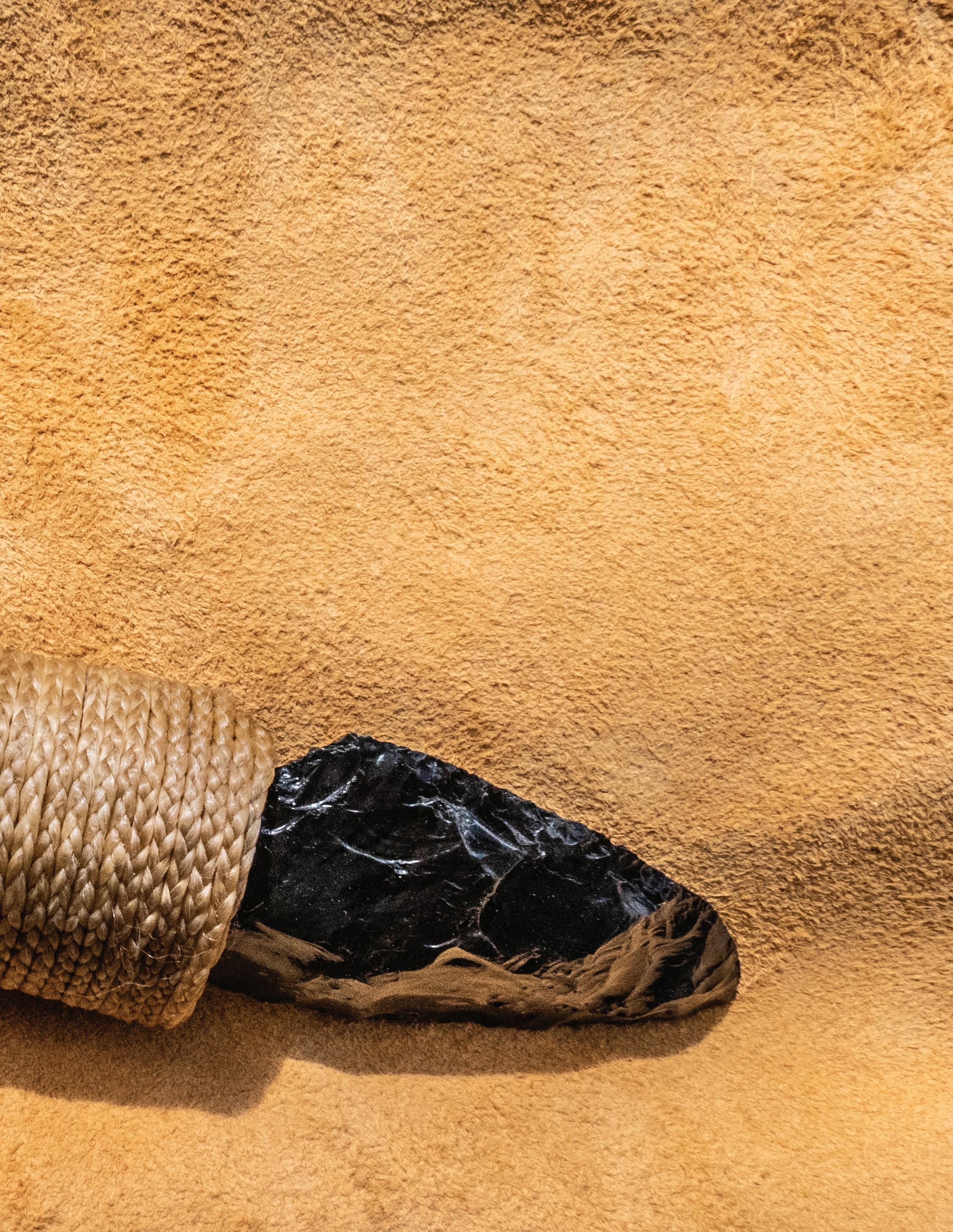
2024 /2025


2024 /2025
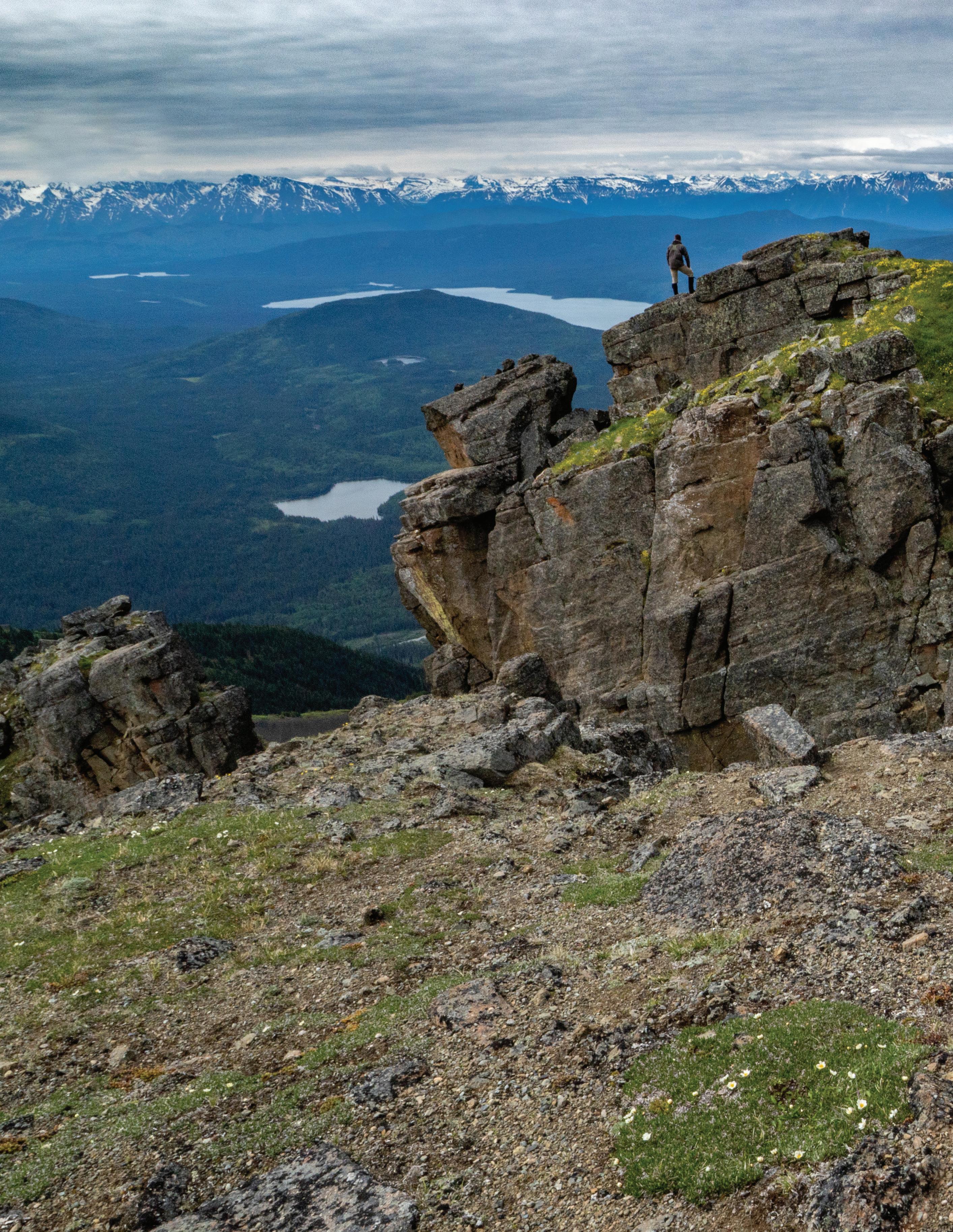
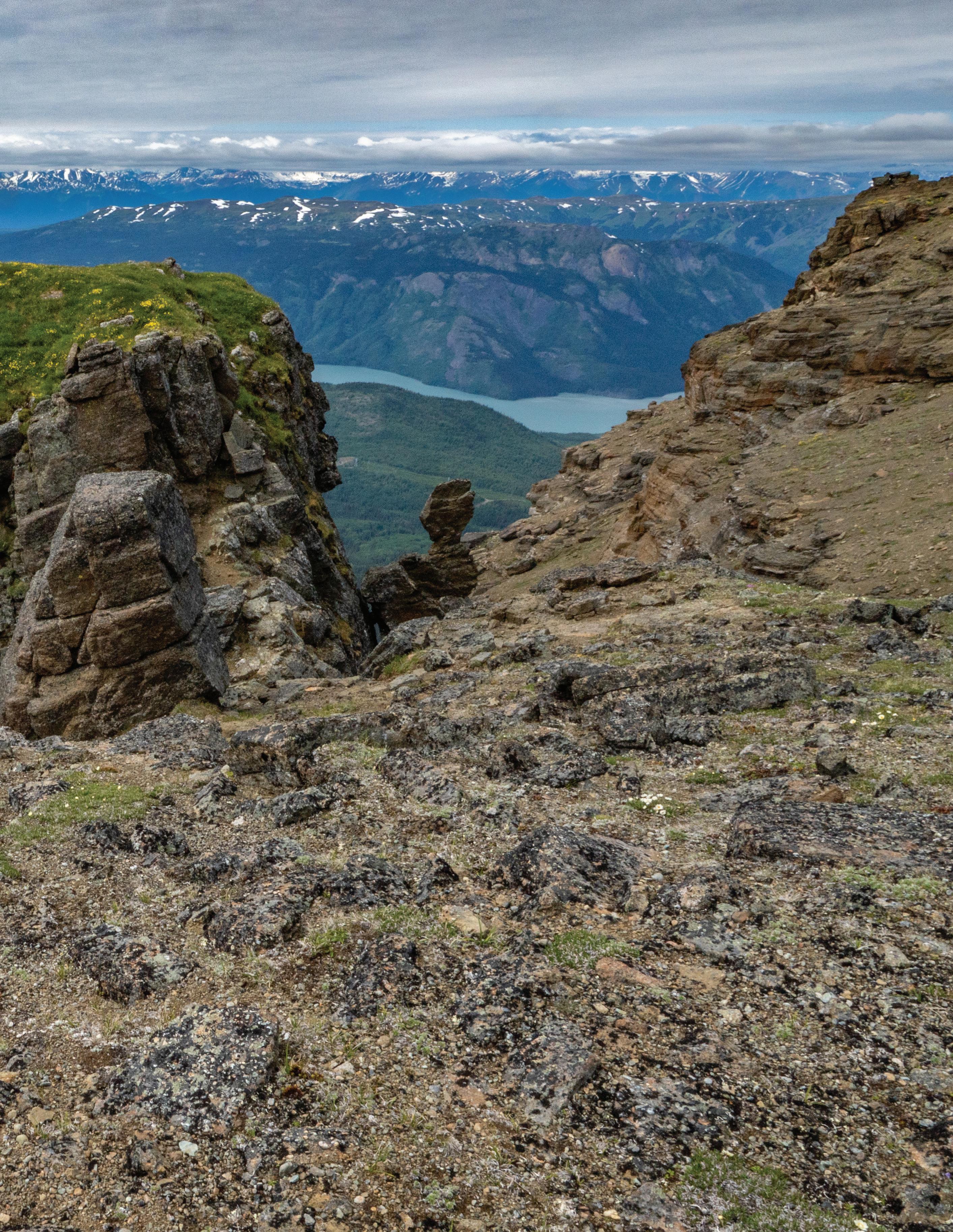

We the undersigned members of the Tahltan Tribe, speaking for ourselves, and our entire tribe, hereby make known to all whom it may concern, that we have heard of the Indian Rights movement among the Indian tribes of the Coast, and of the southern interior of B.C. Also, we have read the Declaration made by the chiefs of the southern interior tribes at Spences Bridge on the 16th July last, and we hereby declare our complete agreement with the demands of same, and with the position taken by the said chiefs, and their people on all the questions stated in the said Declaration, and we furthermore make known that it is our desire and intention to join with them in the fight for our mutual rights, and that we will assist in the furtherance of this object in every way we can, until such time as all these matters of moment to us are finally settled.
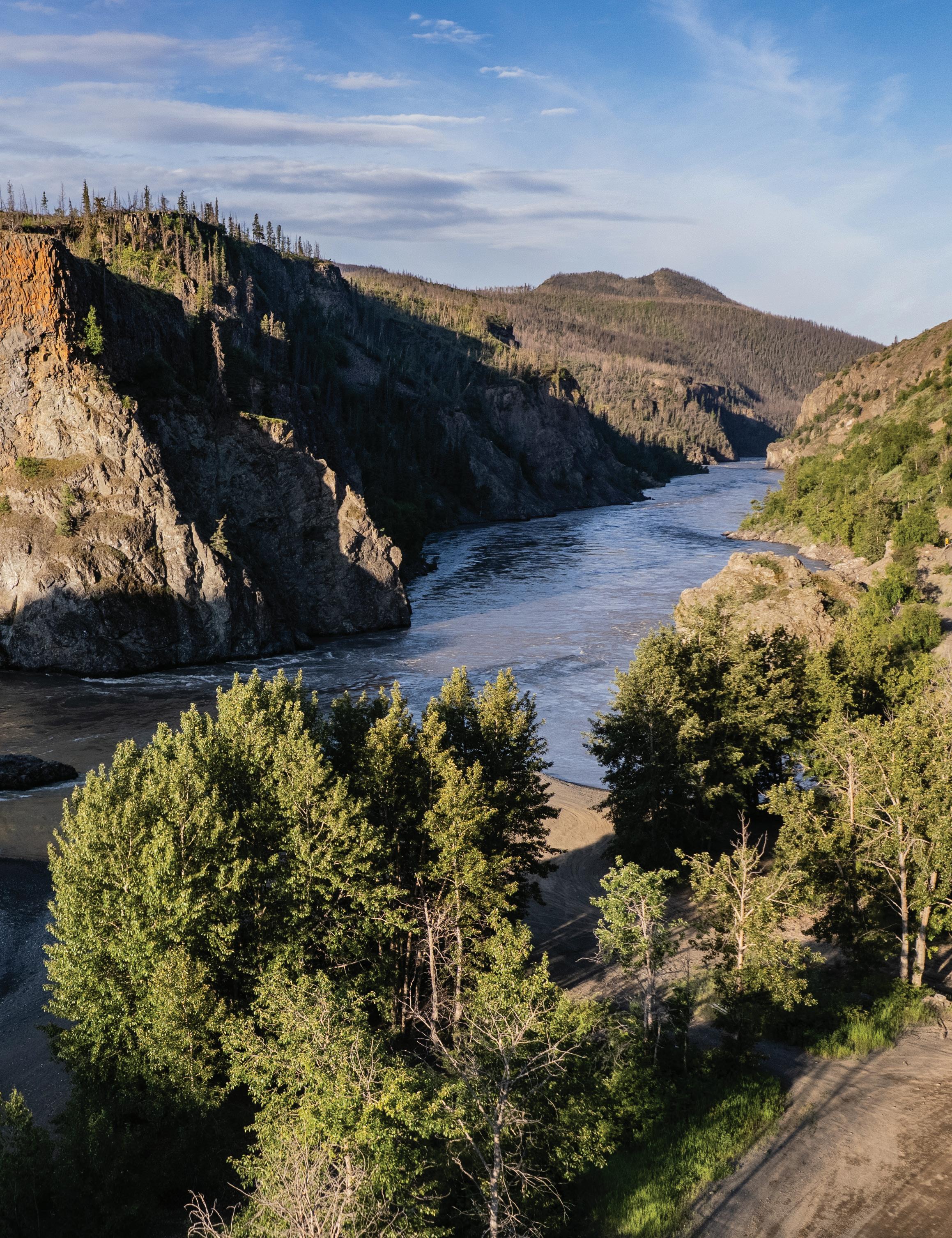
We further declare as follows:
FIRSTLY – We claim the sovereign right to all the country of our tribe—this country of ours which we have held intact from the encroachments of other tribes, from time immemorial, at the cost of our own blood. We have done this because our lives depended on our country. To lose it meant we would lose our means of living, and therefore our lives. We are still, as heretofore, dependent for our living on our country, and we do not intend to give away the title to any part of same without adequate compensation. We deny the B.C. government has any title or right of ownership in our country. We have never with them, nor given them any such title. (We have only very lately learned the B.C. government makes this claim, and that it has for long considered as its property all the territories of the Indian tribes in B.C.)
SECONDLY – We desire that a part of our country, consisting of one or more large areas (to be selected by us), be retained by us for our own use, said lands and all thereon to be acknowledged by the government as our absolute property. The rest of our tribal land we are willing to relinquish to the B.C. government for adequate compensation.
THIRDLY – We wish it known that a small portion of our lands at the mouth of the Tahltan river, was set apart a few years ago by Mr. Vowell as an Indian reservation. These few acres are the only reservation made for our tribe. We may state we never applied for the reservation of this piece of land, and we had no knowledge why the government set it apart for us, nor do we know exactly yet.
FOURTHLY – We desire that all questions regarding our lands, hunting, fishing, etc., and every matter concerning our welfare, be settled by treaty between us and the Dominion and B.C. governments.
FIFTHLY – We are of the opinion it will be better for ourselves, also better for the governments and all concerned, if these treaties are made with us at a very early date, so all friction, and misunderstanding between us and the whites may be avoided, for we hear lately much talk of white settlements in the region and the building of railways, etc., in the near future.
Signed at Telegraph Creek, B.C., this eighteenth day of October, nineteen hundred and ten, by NANOK, Chief of the Tahltans NASTULTA, alias Little Jackson
GEORGE ASSADZA, KENETL, alias Big Jackson
And eighty other members of our tribe.


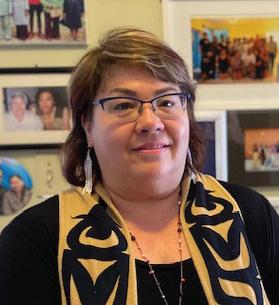
Beverly Slater President, Tahltan Central Government
Mēduh cho for the opportunity to serve as your interim President of the Tahltan Central Government. I would like to thank our family representatives for their guidance and insight while working with some of them on the different committees. Since taking office on June 1, 2024, my commitment has been to advance our sovereignty under the Foundation Agreement to ensure our title and rights are recognized, and to resist encroachments from other nations.
I entered this role guided by these principles:
• Transparency – ensuring openness in all our actions.
• Accountable Governance – being responsible for our decisions.
• Focus on serving Tahltan families, including empowering our youths and cherishing our elders.
• Unity – fostering unity and standing together as one Nation.
• Pursuing common goals – working towards shared aspirations.
• Upholding Tahltan values and culture –preserving our culture and heritage.
• Meaningful engagement and guidance – your voices will shape our path.
I have also made commitments to address the cost of living in territory for our families. I didn’t realize how fast a year could pass, but my first goal was to find money to make this happen and I did it.
Here are the values that guide me as a leader:
I’m honest. I move through the world with integrity, and that helps me sleep at night. I’m conscientious of the needs of other people, and I’m compassionate.
I am also a lawyer and I am commited to justice. I advocate for the weak, for the truth, and for what’s right. I believe leaders should maintain appropriate distance from business interests that could compromise decision-making. I focus on serving the nation’s collective interests rather than advancing my own personal or business objectives. This allows me to advocate for the interests of all our members and not just a few.
In this role, I have been provided an overview of the areas that need attention. For example, we have created policies to address conflicts of interests and streamlined procedures for restrictive funds to ensure the money is being utilized for the proper purpose.
We need treatment centers. We need housing. I’d like to see a women’s group and a men’s group and similar initiatives to assure safe communities for our children. Treatment programs on the land, in a Tahltan way for families and individuals. Revitalizing our sacred ways. That’s what drives my passion.
I want to see all Tahltans, wherever we live, benefit from a strong nation. How do I support the wellbeing of all our people? How do I support our people who need it the most?
We’re going to be here for another thousand years or more. What does that mean? How do we want to live in the world? It really comes back to the source, to our Tahltan identity and our responsibility to our land.
There’s that spiritual side of me again.
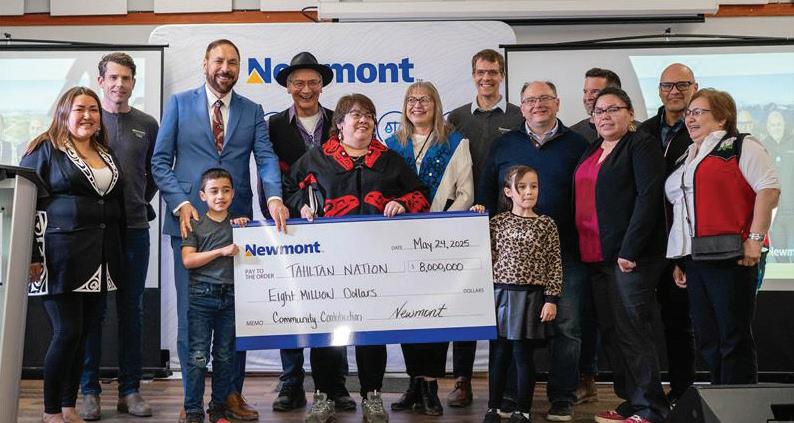
One of my proudest accomplishments as president has been securing an $8.3 million commitment from Newmont Mining for community infrastructure development. This commitment came from my conversations with Newmont’s President and CEO, Tom Palmer, where I stressed the need for mining companies to meaningfully contribute to our communities to demonstrate their appreciation for the nonrenewable resources they are taking.
We will determine how exactly to spend the funds through community engagements but in our initial discussions, the communities proposed the following projects:
• A new store in Telegraph Creek
• An environmentally-friendly greenhouse in Dease Lake
• A Youth space and programming
• Additional support for the Haven in Dease Lake
• $700,000 dedicated to housing initiatives in Dease Lake
• Potential seed money for cooperative housing developments
This investment will help address major challenges around living in our communities and create infrastructure to attract Tahltan families back home.
Upon taking office, I quickly became aware of significant financial and governance challenges facing our organization.
My team and I have been working diligently to:
• Address historical financial management issues
• Ensure restricted funds are properly allocated to their designated programs and services
• Create greater transparency in our operations
• Establish clear protocols around conflicts of interest
• Rebuild trust with membership through accountable leadership
This work is ongoing. I am committed to ensuring TCG operates with fiscal responsibility and transparency.
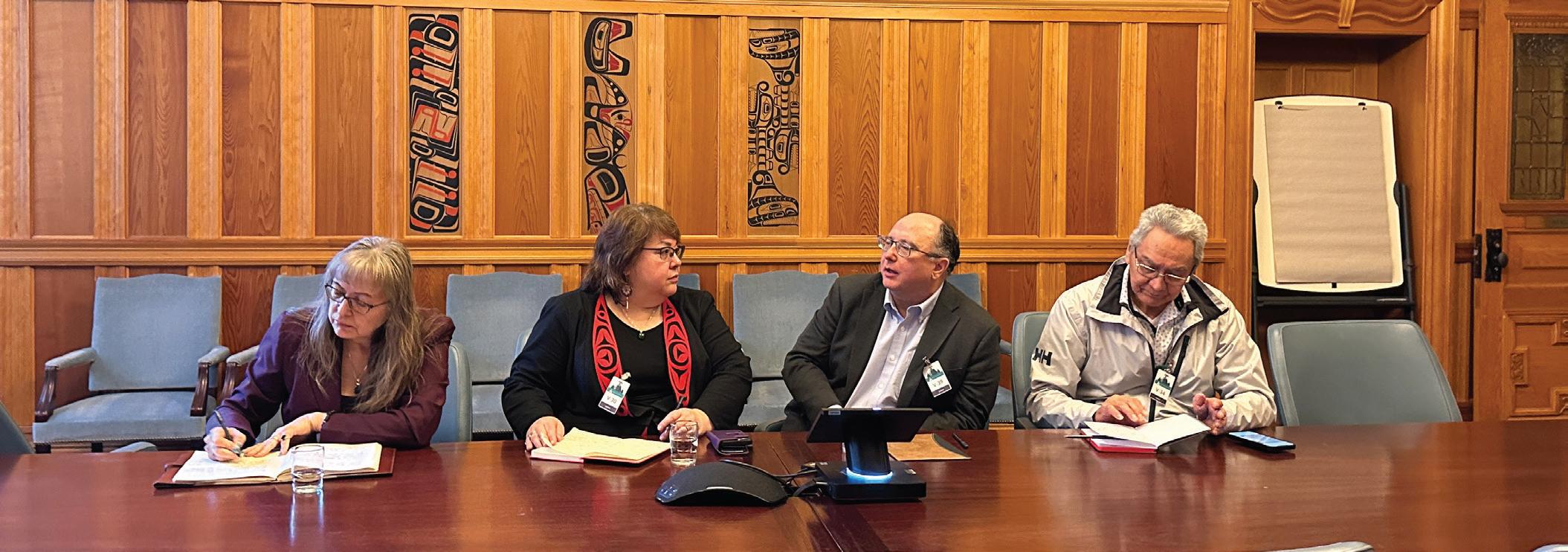
In the last year, I have worked very hard to understand and address the challenges we are facing with this project. From Tahltan workers facing systemic racism to issues with the Tailings Impoundment Area. My leadership doesn’t happen in a vacuum, our Chiefs and other executive members were also present at the mine and instrumental in sending the message that we will not tolerate systemic racism in our territory. As for the impoundment area and other issues, our lands department is using their expertise to identify the problems so we can send a strong message to the project that changes are needed.
As I write, we’re on a Spring Tour to meet with Tahltan membership across BC and Yukon to discuss the Section 7 assessment process for new projects and Impact Benefit Agreement, starting with Skeena’s Eskay Creek Revitalization proposal. So far, we’ve visited:
• Vancouver
• Whitehorse
• Dawson City, via Fort St. John
• Smithers
• Terrace
• Prince George
These engagements were opportunities for members to educate themselves on what is proposed for the Eskay Creek revitalization, and the Impact Benefit Agreement (IBA) to follow. While the Section 7 process allows us to place conditions on projects and provides
a framework for industry to respond to our concerns, I also recognize that the Section 7 Agreement is the first of its kind.
When the provincial government announced plans to “fast-track” critical mineral projects, including those in our territory, we responded firmly to ensure our Section 7 process would be respected. Newmont and Skeena confirmed they will adhere to the process set out in the Section 7 Agreement. From my perspective, there are threats that “fast tracking” legislation could diminish our rights and title. I believe it is yet to be seen how it will impact our inherent rights. We, as a sovereign nation, rely on the principle that the “Honor of the Crown is at stake in its dealings with us” and we will defend our rights and title to the very end.
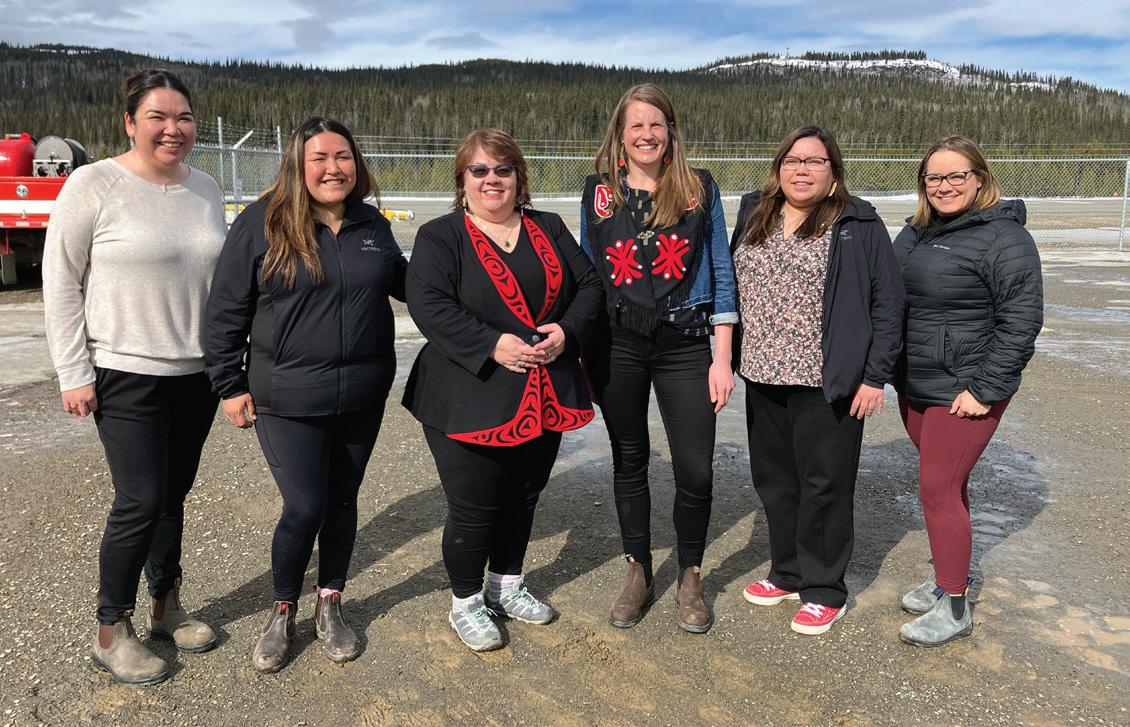
This year, we made significant progress in our relations with the Province. In January, we met with a series of ministers during the First Nations Leadership Gathering in Vancouver. In March, the Minister of Indigenous Relations and Reconciliation, Christine Boyle, visited our territory to better understand our needs and challenges. Then we joined Minister Boyle and other Ministers over a series of meetings in Victoria to begin discussions around a Foundation Agreement.
Stemming from the Shared Prosperity Agreement, the Foundation Agreement takes the next step towards self-determination. It will provide reliable funding to build our government, develop our constitution, and enhance our operational capacity to steward our lands, wildlife, and fish, across our vast territory.
During ministerial meetings, we stressed the need to create a process to address encroachments on our territory by other Nations. After Chief Jackson spoke about our borders, Chief Quock raised our challenges with housing. I talked about jurisdiction, and a process to establish our regulatory jurisdiction, especially where Tahltan environmental thresholds exceed provincial standards. I also raised the need to reduce and monitor industrial impacts on human health through our consumption of salmon, moose, hodzih łanāw, and all of our food from the land.
We have to realize that mining is cyclical. When I came in as President, one of the things I said was we need to diversify our economic base. People say, we’re the richest nation in the country, but we have nothing. But I think when we say we’re the richest people, that true wealth comes with choice. And that choice should not just be reflected in mining. We need to diversify.
I envision a future that includes:
• Sustainable and renewable businesses, like Guide Outfitting
• Tourism opportunities that showcase our Territory’s beauty
• Cultural enterprises, like carving sheds along highways where artists can work and sell their creations
• Development of our own professionals: doctors, nurses, educators, experts in forestry and renewable energy
When we think about being rich as a nation, we should think not just of mineral resources but of Tahltans living at home with their families, sustainably, connected to our culture and our land, as we have always been.


Heather Hawkins Vice President, Tahltan Central Government
Dzenes Hotieh Tahltan citizens,
I want to take a moment to speak directly to you about the path forward for our Nation. We are at a time where we must rise together — to build a stronger, more accountable government and to protect the lands that hold our history, our stories, and our spirit.
ACCOUNTABILITY
It’s time to ensure that those who lead our Nation do so with integrity and transparency. When our leaders hold private business interests, there must be clear conflict of interest rules in place. We must strengthen our governance to make sure decisions are made for the benefit of all, not a few.
Our Nation thrives when the people are informed. We continue to strive for open leadership — including regular updates, community meetings, and accessible information — so everyone knows how decisions are made and how our resources are being used.
Our lands are sacred. We are identifying immediate steps to protect key cultural and spiritual sites. We are working with governments to create interim protections, and we are in the process of implementing a community-led Land Use Plan — one that reflects our values, culture, traditions, and the voices of our Elders and land users.
As we protect what is within, we must also stand strong at our borders. We will begin the important work of affirming our Nation’s territorial boundaries with neighboring Indigenous Nations — especially those who are our allies. This will be done in the spirit of mutual respect and cooperation, ensuring that our shared interests are protected, and our lands are clearly recognized.
This is about protecting what’s ours — not just for today, but for generations to come. I invite all of you to join in this work. Your voices, your knowledge, and your strength are what will guide this Nation forward.
IN UNITY.
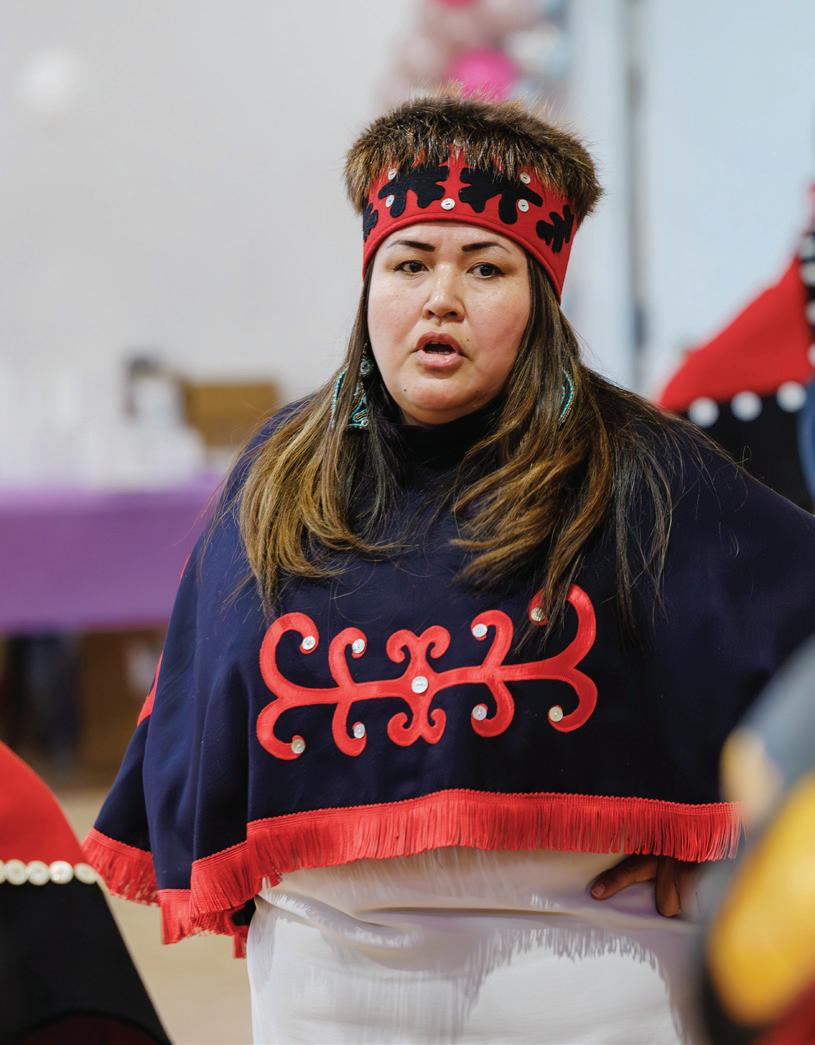
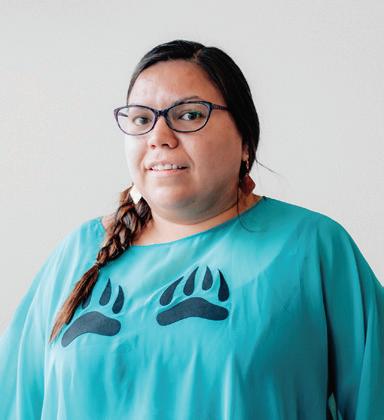
Secretary Treasurer, Tahltan Central Government
Dzenes Hoti’e Tahltan Members,
It has been a true honour and privilege to serve as Secretary-Treasurer on the Tahltan Central Government Executive and leadership team over the past three years. This work has required deep commitment, resilience, and the courage to face difficult truths — all in the spirit of betterment for our Nation. I hold tremendous respect for the strength of our people and the gravity of the work we do together. Growth is rarely a straight path; it demands vulnerability and collective care. But it is worth it — because our people, our future generations, and our sacred responsibilities call for nothing less.
The responsibilities of the Secretary-Treasurer include:
• Maintaining records of board meetings (minutes)
• Custody and oversight of TCG’s financial books
• Presentation and clarity of financial statements
• Oversight of financial affairs through the Finance Committee
One of the most significant improvements this term has been the transparency and detail provided in our meeting minutes. A review of the TCG website will show that our minutes are now more comprehensive than ever before. In some cases, the Board has taken the unprecedented step of including briefing notes to accompany major decisions — demonstrating our commitment to increased transparency.
Timeliness in posting these records was another area of concern in this past term, and I worked hard to change that. More improvements are still required to be put into policy and practice, and this is about respecting your right to be informed and engaged with the decisions being made on your behalf.
At the beginning of this Board’s mandate, I was not provided access to the TCG books and was actively blocked from doing so by the assertion my employment with TCG trumped the responsibility of being allowed to provide oversight. It wasn’t until March 2024, 20 months into my 36 month term, that I received the support needed to fulfill my legal responsibilities, This was a pivotal step toward understanding and reinforcing the integrity and functionality of our financial systems.
After hearing the concerns of the Board and many of our members at the 2024 Annual General Assembly (AGA), we launched a formal Request for Proposals (RFP) to identify a new auditing firm. Through a transparent and professional process, and with input from the Finance Committee and Elder Financial Representative Bill Adsit, we selected BDO Canada to conduct the 2024–2025 financial audit. This decision was authorized and implemented by a Board resolution.
Our previous CFO resigned in April 2024, with last year’s AGA approaching and serious financial challenges looming, we opted for a different approach: hiring an interim CFO to provide immediate support for audit preparation and financial oversight. With the interim CFO came a team of experts that we could lean on while we caught up and continued functioning as an organization with one hand tied behind our back.
For the first time, the Finance Committee included an Elder-appointed representative. This committee oversaw the selection of our interim CFO — Tree Walk, a consulting firm with over 60 certified CPAs. Their team brought the capacity to manage day-to-day operations while also conducting deep data analysis throughout the year.
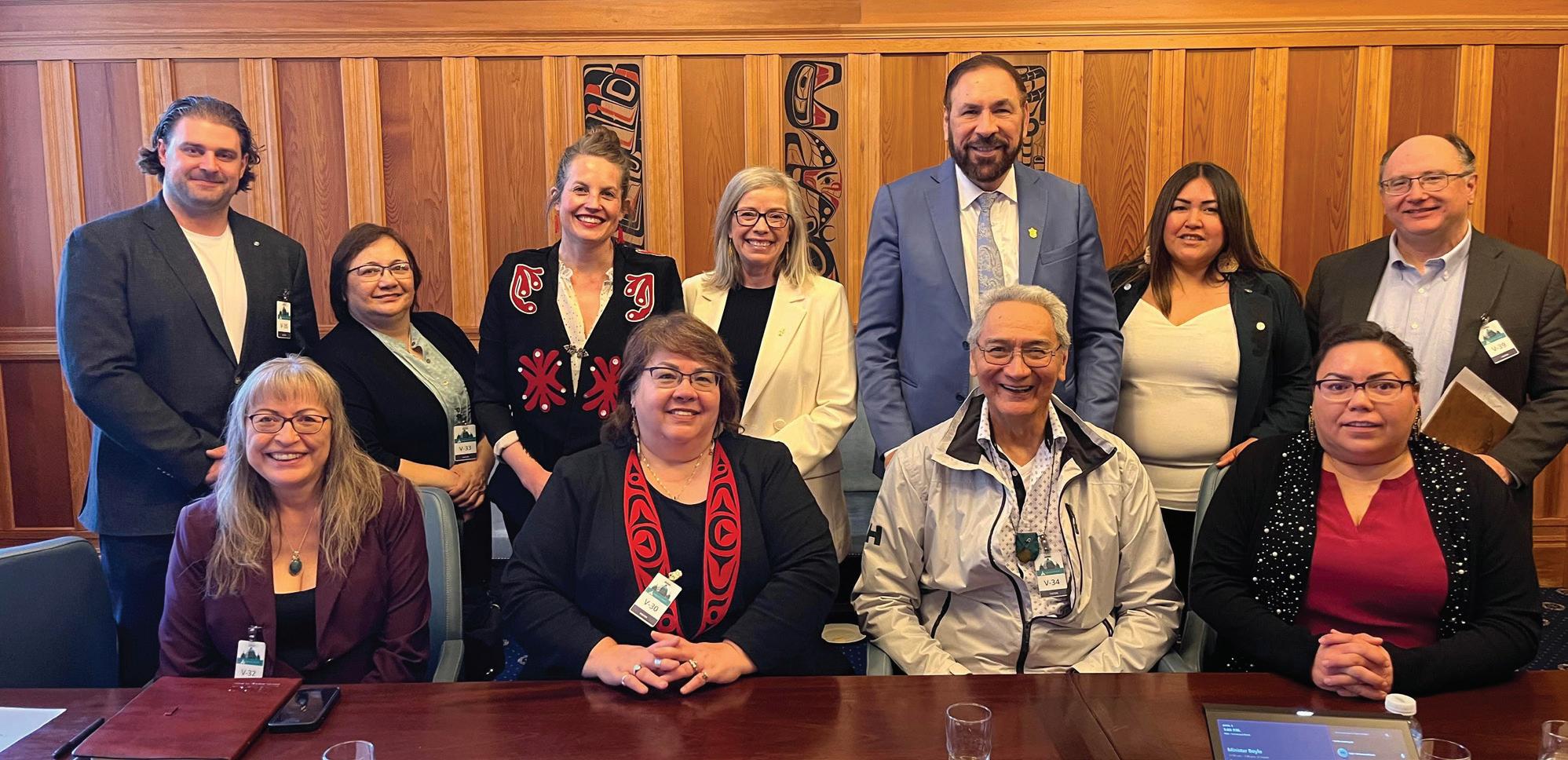
Above: Meeting with the Minister of Mining and Critical Minerals, Jagrup Brar, in Victoria.
Once Tree Walk and their representative, interim CFO Dave Dick, were brought on board, we encountered a major challenge: the former CFO returned their laptop without any financial records. To clarify, our Adagio accounting system remained intact — with scanned documents linked to transactions — but no standalone documentation was returned. This meant that our incoming CFO had to conduct a comprehensive review of historical records to verify accounts receivable and accounts payable, and to ensure the integrity of TCG’s financial reconciliation processes.
Much of what we uncovered can be attributed to a failure in leadership — the “tone at the top.” The issues included:
• Lack of adherence to internal controls and financial policies
• Financial transactions executed without appropriate division of duties
• Absence of system-based controls and approval steps
• Vacation rollover practices leading to large, unapproved cash payouts
• Purchases made without proper expense approval
• Restricted funds used for general operations
• Lack of communication between the former CFO, President, and Board of Directors
• Personal expenses, cash withdrawals, and unapproved visa reconciliations
• Use of TCG assets for personal purposes
• Double-dipping via credit card and travel expense claims
• Lack of transparency toward the Board and Elders
• Exclusion of the Vice President and SecretaryTreasurer from financial information
To be clear, this was not everyone in TCG, a comprehensive review needed to be further done to identify the pinch points and issues needing to be thoroughly reviewed for context.
In response, the Board approved the creation of a Technical Working Group to conduct an in-depth analysis of TCG’s financial health and operational structure. This group included the CAO, CFO, Elder Advisor, Chief Negotiator, President and one family rep. Both Chiefs (Iskut and Tahltan) were also invited to guide discussions after the July 2024 Leadership Forum. Schedules often conflicted and the Chiefs were not able to participate.
This group undertook months of analysis and ultimately delivered a detailed report, which the Board accepted. Its recommendations are now guiding an organizational restructure aimed at improving operational efficiency and aligning our practices with TCG’s goals and legal responsibilities.
Notable changes already implemented:
• Organizational restructure in review and starting implementation.
• Corporate cell phone plan adopted (approx. $50,000 annual savings)
• Switched to a commercial credit card system that provides the CFO with immediate oversight on transactions. Monthly visa reconciliations and reduced use of corporate credit cards
• Improved purchase order controls
• Internal HR capacity built, reducing HR consultant costs by 50%
• Transition from in-house legal counsel to fee-forservice model
• Other administrative cost-saving measures
As an Indigenous government, our landscape is dynamic. The world once thought they could define us, but we have always been more than their labels. With growing recognition of our inherent rights and jurisdiction comes a profound responsibility: to govern with integrity, transparency, and accountability — and to do so in ways that honour our Tahltan values.
Over this past year, we developed and adopted several new policies to strengthen accountability within both the organization and the Board:
• Travel Policy (updated)
• Board Remuneration Policy (updated)
• Conflict of Interest Policy (more robust and legally enforceable)
• Oath of Office (first-ever enforceable version)
• Anti-Corruption, Anti-Bribery, and Whistleblower Policy (first-ever)
• Respectful Member Protocol (in development, rooted in Tahltan values)
These policies were created in response to longstanding leadership concerns and are tools for our membership to hold elected officials accountable. I encourage everyone to become familiar with these policies and know how to use them.
This term has tested all of us — but it has also reminded me of what it means to serve with purpose. I raise my hands to my fellow Board members who stood strong, upheld their responsibilities, and stayed true to their fiduciary duties amid immense pressure and unwarranted attacks. Their integrity has helped carry this Nation forward.
To our people, our future generations, and the sacred responsibilities we carry together — you remain at the heart of this work. Thank you for your trust, your strength, and your voice.
BC Cabinet & First Nations Leadership Gathering, Vancouver
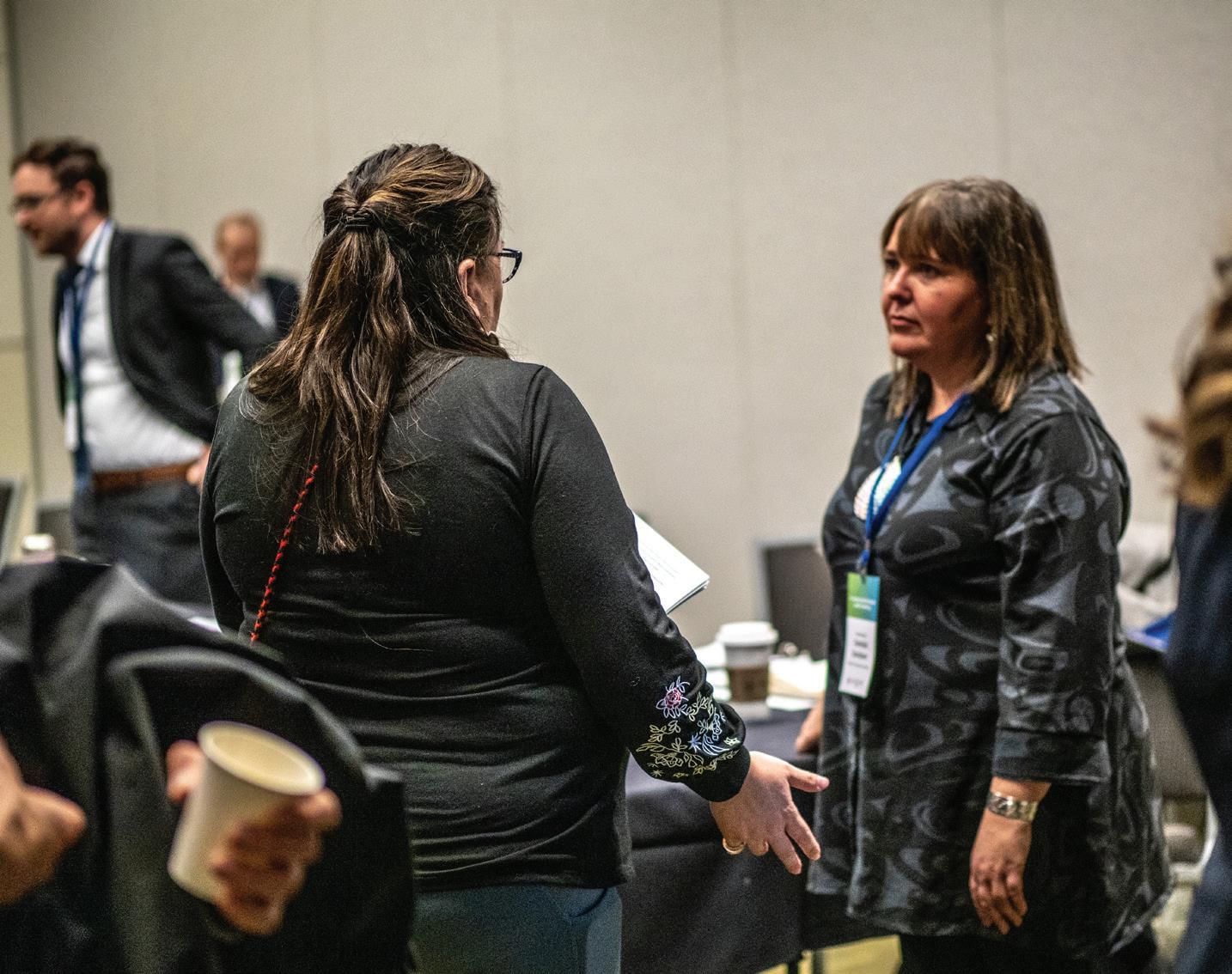

Teneal Nole Chief Administrative Officer, Tahltan Central Government
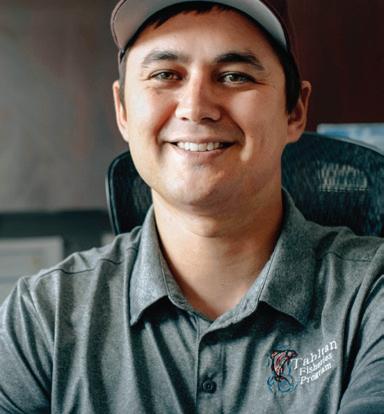
Kerry Carlick Interim Chief Administrative Officer (Oct. 2024-Mar. 2025)
Hello Tahltans,
My name is Teneal Nole, and I am from the Etheni family. I have lived on Tahltan Territory for the past 36 years, raising my family between Iskut and Dease Lake. I am deeply rooted in the values, teachings, and cultural richness of this land. My connection to our Territory is everything—it’s where I was raised, where I raised my children, and where I continue to learn and grow. This strong connection fuels my commitment to our people and to the future of our Nation and Territory.
My roots run deep. My grandmother, Verna Callbreath (Henyu), and my mother, Hazel Sharko (Callbreath), have had a profound impact on who I am today. My grandmother’s teachings at fish camp, at our family’s fishing hole across the river, were filled with patience, tradition, and cultural knowledge. My mother, Hazel, is a woman of resilience and strength. She taught me to be outspoken, fearless, and to face life’s challenges head-on. Her determination and bold spirit shaped my character and laid the foundation for the leadership path I now walk.
The teachings of my late father-in-law, Arthur Nole—a well-respected Elder and knowledge keeper—also play a key role in my life. The time we spent in the Klappan Valley, now a place my family returns to for on-the-land healing, was filled with stories, lessons, and values that I now pass on to my own children. Arthur’s wisdom taught me the importance of balance, humility, and leading with purpose.
My family also has strong historical ties to Telegraph Creek, where a family café operated in the early 1900s. Summers there, and at fish camp, were more than seasonal visits—they were opportunities to carry forward our culture and instill these teachings in my children.
My journey into leadership took over ten years, and roles working with each of our four entities. I first began working with TCG in 2011/2012—as a custodian. It was a humble beginning, but one I now look back on with pride and gratitude. Soon after, I joined the communications liaison team, which allowed me to engage more directly with our members and begin building the skill set that would support my future in leadership.
Since then, I’ve worked in all four Tahltan entities:
• With TCG as a custodian and on the communications team
• With TNDC in administration
• In housing management with both the Iskut and Tahltan Bands
These roles gave me a foundation in community service, operational understanding, and the internal workings of our Nation’s governance
As my experience and confidence grew, I stepped into leadership roles, deepening my connection to the Nation. I served as Vice Chair of the TNDC Board, contributing to the strategic direction and governance of our Nation’s key economic driver. I was also elected as a Councillor for the Iskut Band, where I represented community interests and participated in local decision-making. Additionally, I served as a Family Representative on the TCG Board of Directors, which expanded my understanding of Nation-level politics, unity, and accountability.
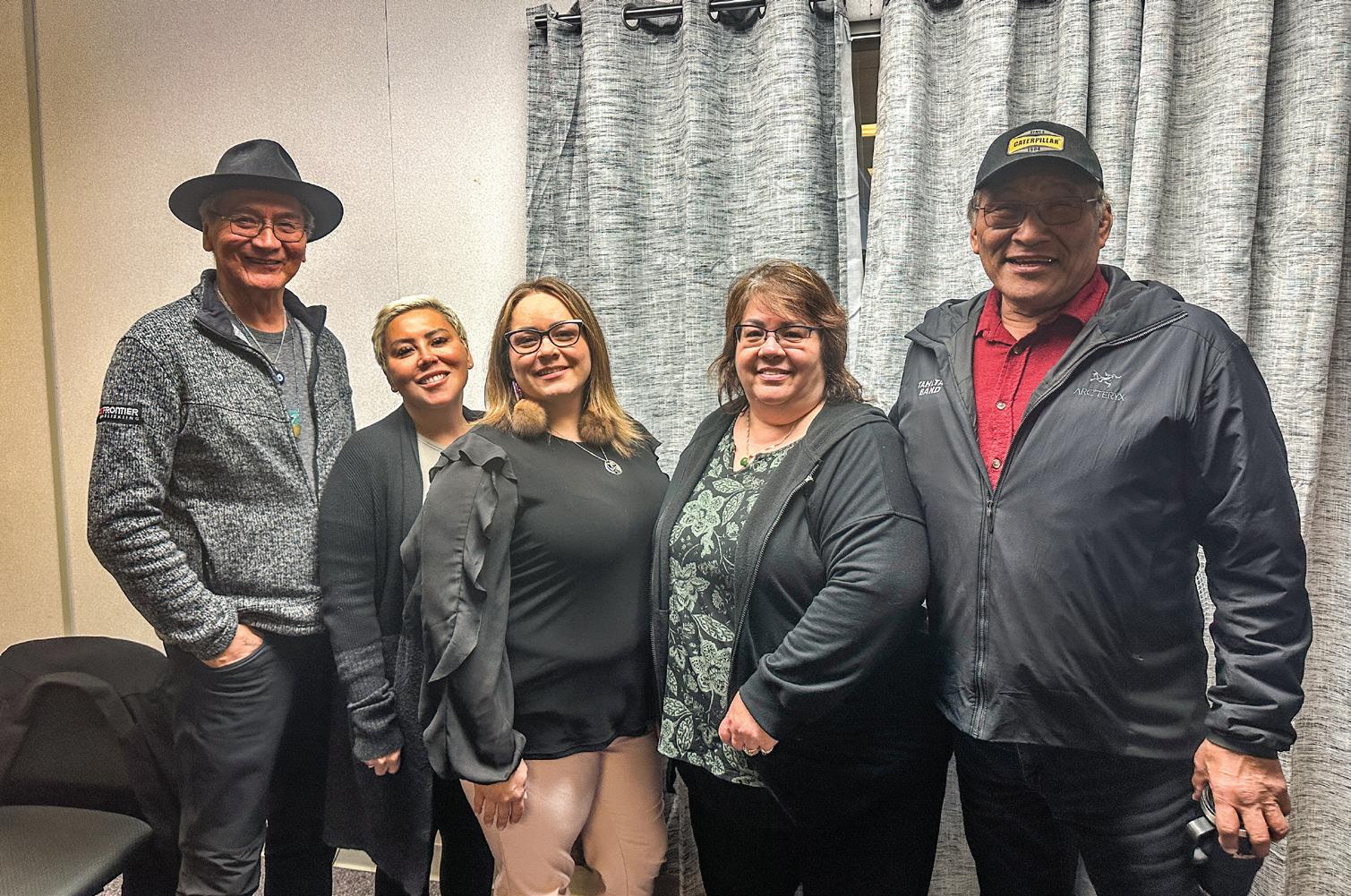
These leadership positions were pivotal in shaping my vision for the future of governance excellence that builds transparent, accountable systems that reflect Tahltan values and strengthen internal capacity and leadership development across the nation and equipped me with the tools I bring into my current role as Chief Administrative Officer.
In 2015, I set my sights on securing long-term employment with TCG. I knew I had more to offer, but opportunities were not coming easily. I was unsuccessful in multiple job applications. The rejections were discouraging, yet ultimately motivating. They lit a fire in me to pursue education and build skills that could not be overlooked.
In 2023, I completed a Master of Business Administration, with a focus in Indigenous Business and Leadership with Simon Fraser University all while living in Territory. I chose distance education not because it was convenient, but because I needed to stay grounded in my homeland and raise my children within our culture and traditions. Even when the coursework was challenging, staying in Territory was more important to me. It allowed me to model the same values that shaped me.
After more rejections, I took another chance. With courage and hope, I applied for the Chief Administrative Officer role. In March 2025, I was informed that I had been successful. Stepping into this position has been one of the most significant and humbling moments of my life. I never imagined holding such a role—but every experience, every challenge, and every lesson has led me here.
Now, I see tremendous opportunity for development, learning, and impact. I am ready to serve with humility and purpose. But I also know I cannot do this alone—I will need the ongoing support of staff, leadership, and
the entire Nation. We are in a time of rapid growth with that comes the need to build strong internal structure formalizing systems, implementing clear policies and procedures, creating transparent, fair processes for hiring and governance.
I carry a deep belief that every Tahltan deserves a fair chance. My own experiences with employment barriers make me passionate about creating accessible pathways for others. No one should feel like the door is closed to them. That is why I am committed to building internal capacity, strengthening policy, and fostering a work culture rooted in Tahltan values.
We are the faces of the Tahltan Nation, and we must uphold the highest level of professionalism in everything we do.
I hold tightly to the Seven Generations teaching, a foundational part of both my education and upbringing. We must make decisions not just for today, but for our grandchildren’s grandchildren. This long view guides me. It’s about protecting our culture, language, lands, and people, so that the generations to come will thrive.
Throughout my professional and personal journey, I have upheld values of equity, kindness, professionalism, and adaptability. I believe in collaboration, adjusting when needed, and holding space for both modern governance and traditional teachings. We must navigate the modern world with a firm grounding in who we are. That includes our language programs, governance systems, and cultural identity.
As CAO, I will continue working to ensure that everyone representing our government, from leadership to staff, maintains a high standard of professionalism and integrity. How we carry ourselves matters.
I am truly honored to be in this role. I bring not only my education and experience but the teachings, values, and resilience of my ancestors. My personality has always been rooted in determination—I never give up, and I always learn from my mistakes. This mindset will guide me as we build a stronger Nation together.
Thank you for your trust, your support, and for walking beside me as we work for the continued strength and success of the Tahltan Nation.

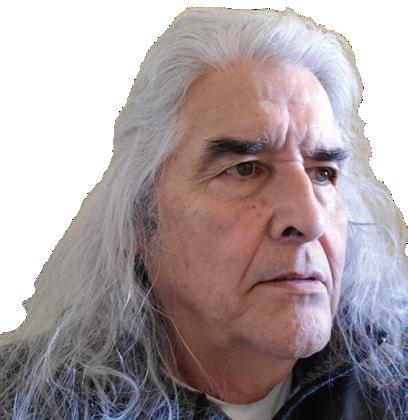

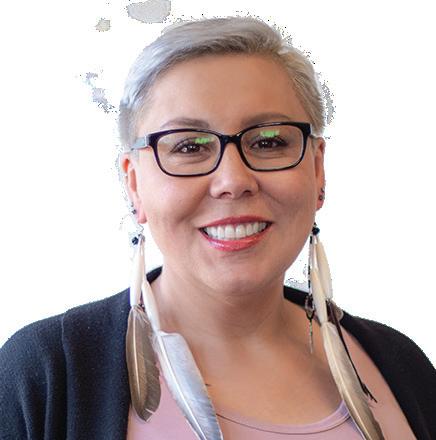

William Brown
Carlick Family carlick@tahltan.org

David Rattray
Etzenlee Family etzenlee@tahltan.org

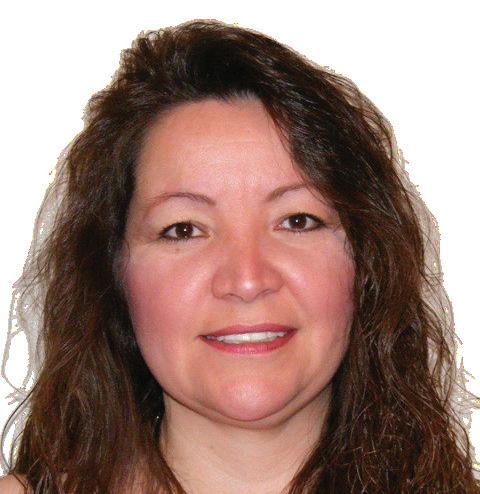
Annita McPhee
Good-za-ma Family goodzama@tahltan.org
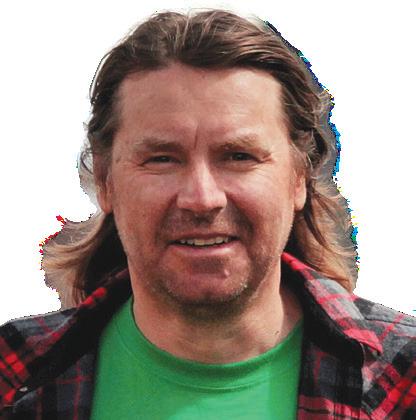
Kimberly Marion
Simgaldtada (Ts’imgalteda) Family simgaldtada@tahltan.org

Colleen Parker
Stikine Claw/Thicke Family stikineclaw_thicke@ tahltan.org
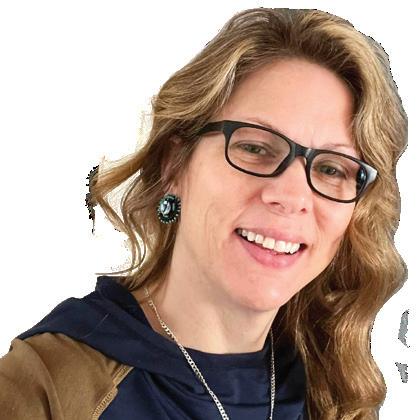
Lily Belhumeur
Eth’eni Family etheni@tahltan.org
Arlene Corcoran
Quock (Dekama) Family quock@tahltan.org
Curtis Rattray
Cawtoonma Family cawtoonma@tahltan.org
Mindy Henyu
Shoe Kawk/Howd-AGhtte (Shukak) Family shoekawk@tahltan.org
Dayle Creyke
Thud ga Family thudga@tahltan.org


RIVER LORRIN GRACYN HARTNELL
Jade Gagnon & Jordan Hartnell
June 14, 2024 5lbs 3oz

CYPRESS Ā SHINAGWĀTL DENNIS
Shannon Dennis & Taylor Boyes
Aug 31, 2024

PAUL JORDIE LEAGH HAWKINS
Aaron Hawkins & Allysha Fryer-Thomas July 16, 2024 8lbs 6oz

Christine Louie and David Crosby
Sept 23, 2024 6lbs 8oz
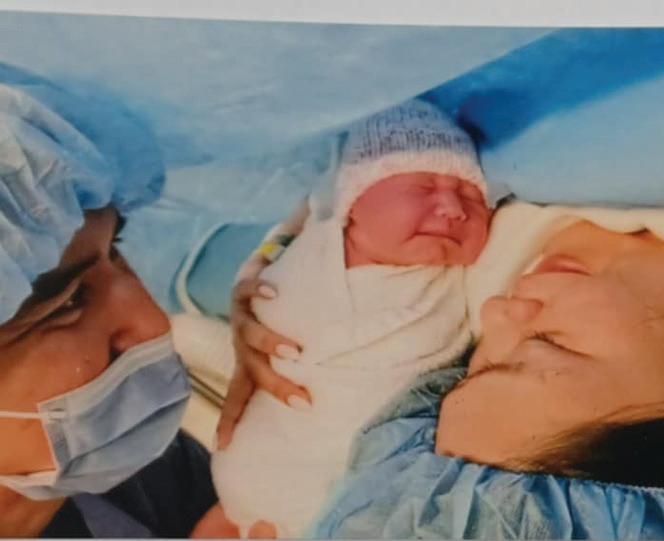
OCTAVIA EDITH MARGARET CARLICK-SAMPSON
Kory Carlick & Nicole Sampson Aug 20, 2024 6lbs 13oz

Rymer Henyu & Radssell Rodrigues
Oct 11, 2024 7lbs 10oz

SCARLET FRANCIS WINCHESTER DENNIS
Jessica Louie & Russ Dennis Oct 21, 2024

WRENLEY AUSTIN GREATREX
Chaylene Rattray & Taylor Greatrex Apr 18, 2025 8lbs 13oz

KUREIN ATLEY JOHN WOODS
Diedre Woods May 5, 2025 7lbs 9oz

MIKAH CLARENCE DANNY LITTLE AXE JR
Santasia and Mikah Little Axe Mar 18, 2025

ARINNA BROOKE NOLE
Diedra Tashoots & Kirk Nole Apr 24, 2025 8lbs 11oz

BECKETT TARA GABRIELLE ZUBEK
Keegan Zubek & Ashley Woloschuk May 6, 2025 3lbs 2.5oz
AMARAH JULIA MAE ZUBEK
Keegan Zubek & Ashley Woloschuk May 6, 2025 2lbs 14oz

ALEC HARDY DENNIS
Medrick Dennis & Emily Andrei Apr 10, 2025 9lbs 15oz

SOPHIA SHAELYN GERALDINE DENNIS
Mic Dennis & Kristen Fourre Apr28, 2025 8lbs 12oz

SAGE DEL REY VANTUNEN
Jesse & Kammy VanTunen June 11, 2005 7lbs 14oz
RANDELL CALLBREATH JR
October 1964 – March 2024
WILLIAM MCPHEE (BILLY)
May 1942 – May 2024
GAY FROCKLAGE (SIMPSON)
January 1943 – May 2024
JERRY ARNOLD QUOCK
Feb 1945 – May 2024
JUDY (DENNIS) CARLICK
October 1961 – May 2024
JR. NICHOLAS DENNIS (HAYDEN)
December 2003 – May 2024
PANSY FORSBERG (QUASH)
April 1964 – July 2024
JERRY LEE QUOCK
December 1964 – July 2024
MAVERICK BLACKBURN
October 2003 – July 2024
STERLING ST.ELOI
August 1986 – August 2024
ELVIS JACK (DENNIS)
April 1957 – September 2024
WAYNE MOSTAD
January 1961 – September 2024
JESSIE PORTER (TIBBETT)
June 1933 – October 2024
TEDDY CAMPBELL
March 1947 – October 2024
DANIEL (JOE) MARION
December 1954 – October 2024
DENNIS DENNIS
March 1970 – October 2024
HILDA (HEIDI) RADFORD
April 1944 – January 2025
MADGE LEIS (THOMPSON)
May 1952 – January 2025
SHEILA FRANK (BOB)
January 1953 – January 2025
TEAGAN MOON
September 2003 – January 2025
ELIZABETH BROOKS
October 1936 – February 2025
LORNA JOHANSON
December 1940 – February 2025
JOHN THOMAS CREYKE
July 1969 – March 2025
RONALD JACKSON
July 1970 – March 2025
SR ALEC DENNIS
November 1927 – April 2025
GLORIA SIMPSON (HILTZ)
March 1948 – April 2025
MARIAN RODRIQUES (WOODHOUSE)
March 1938 – April 2025
DONOVAN BROOKS
April 1968 – June 2025
MARY QUOCK (LOUIE)
September 1944 – June 2025
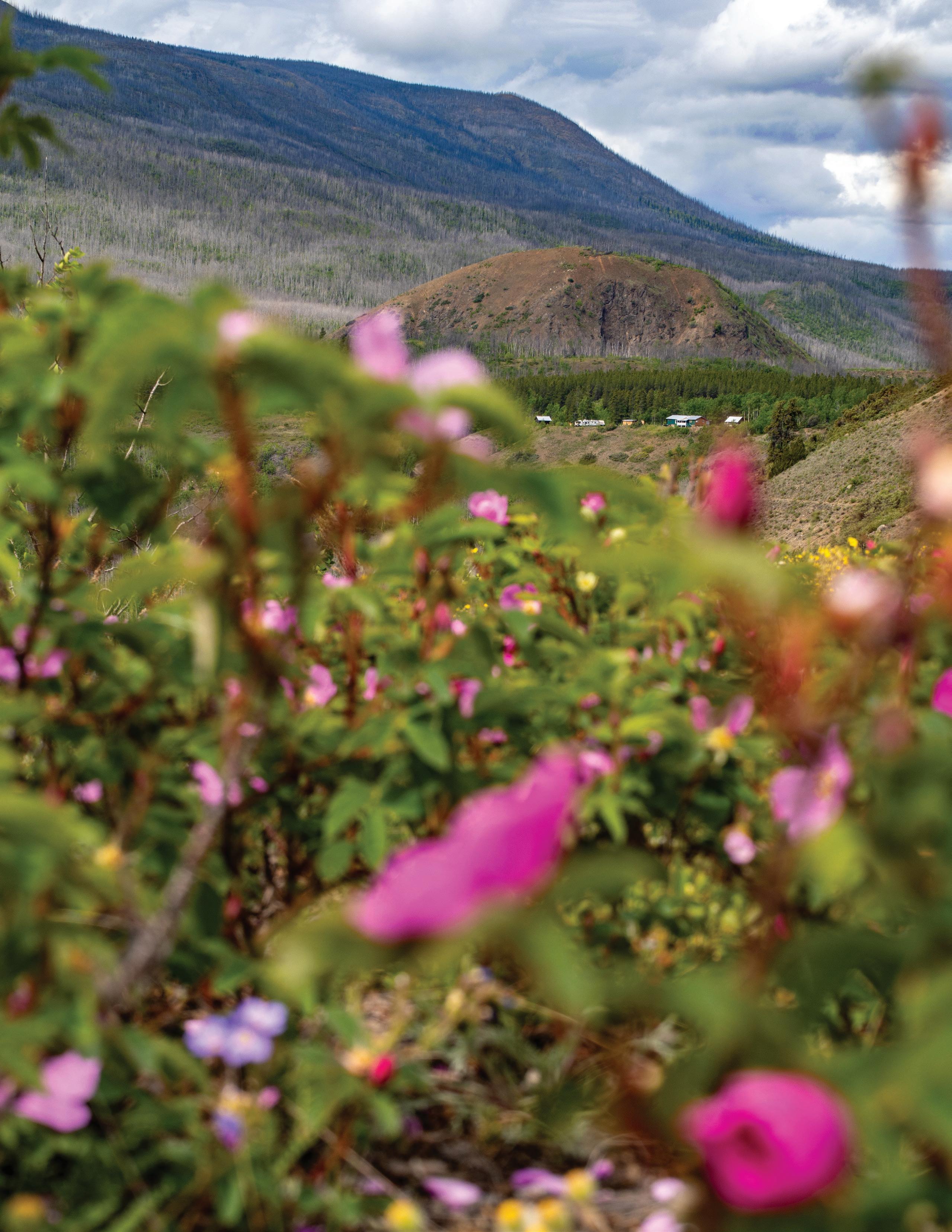
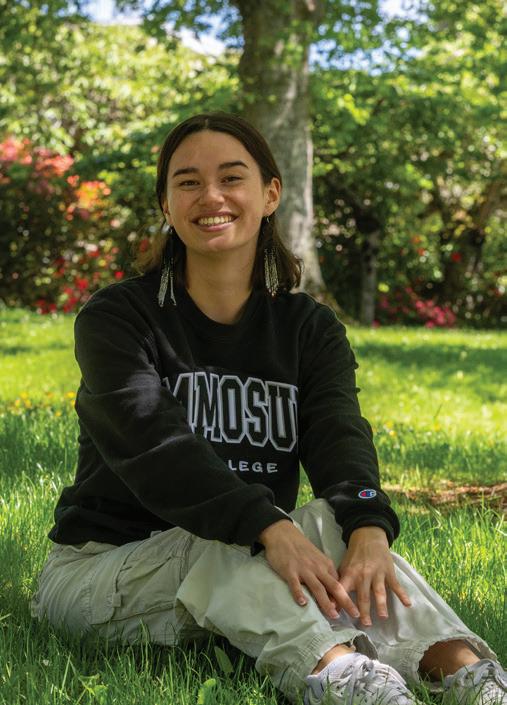

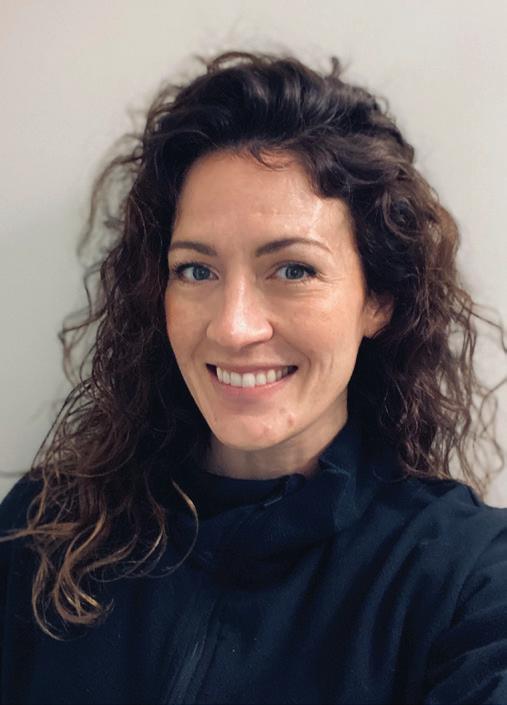
Indigenous Studies Diploma, Camosun College
Living in Victoria, I have successfully graduated from Camosun College with the Indigenous studies diploma and plan to transfer to UVIC to finish a Bachelor of Arts in Indigenous studies degree.
The funding I received from the TCG has helped me mentally, physically, emotionally, and spiritually through being able to attend a college program that allowed for personal exploration of self identity as an Indigenous person. I feel so grateful to have attended such a program, through the help of the TCG and hope to continue my studies and pursue greater heights.

Esthetics Diploma Program, Elements Esthetics Academy
I am a hard working mother of three amazing children. We currently live in Dease lake. The Esthetics program is my dream job. I have completed a 800 hour diploma program in Whitehorse Yukon at the Elements Esthetics Academy. My goal is I want to uplift and beautify our people.
Mēduh for the support from TCG I was able to focus on my studies and complete the Esthetics program.
Bachelors of Science, Biological Sciences SFU
Melissa recently graduated with a Biology degree from SFU and lives outside of Vancouver, BC. She currently works in consulting as an Indigenous Engagement Specialist. Melissa is working to be an advocate for Indigenous Nations in the resource industry, particularly within environmental justice and regulation.

Business Commerce Degree, University of Calgary
My name is Jada Wagner, I currently live in Calgary AB, and have lived here since I was 3 years old. I was born in Fort St John, British Columbia and I am an associate member of the Tahltan’s through my Mother and Grandmother.
I have received funding support from the TCG throughout my entire 5 years at the University of Calgary and I could not be more grateful. Being able to attend university and not worry about the finances definitely made a huge impact on me and definitely made it possible for me to attend the university I desired to go to and not worry about the costs. I am so very grateful and would like to say a huge thank you to everyone who made this possible for me. Being able to say I finished university and pushed through all the tough classes makes it so worth it and being able to say I had your support through the entire experience makes it that much more meaningful. So thank you for everything and I will forever be so grateful for the TCG’s support.

Bachelor of Fine Arts, Visual Art, University of Victoria
“I currently live in Victoria, BC, working as an artist and kickboxing coach. I have received numerous offers for work in illustration, animation, and graphic novel projects after school, and my contemporary art practice seeks to further efforts in Tāłtān language revitalization and narrative activism via Indigenous fantasy. I’m currently training for the WAKO National Championship in kickboxing and preparing for my solo exhibition debut in May.

Certificate of Achievement, Academy of Learning, Business & College Career


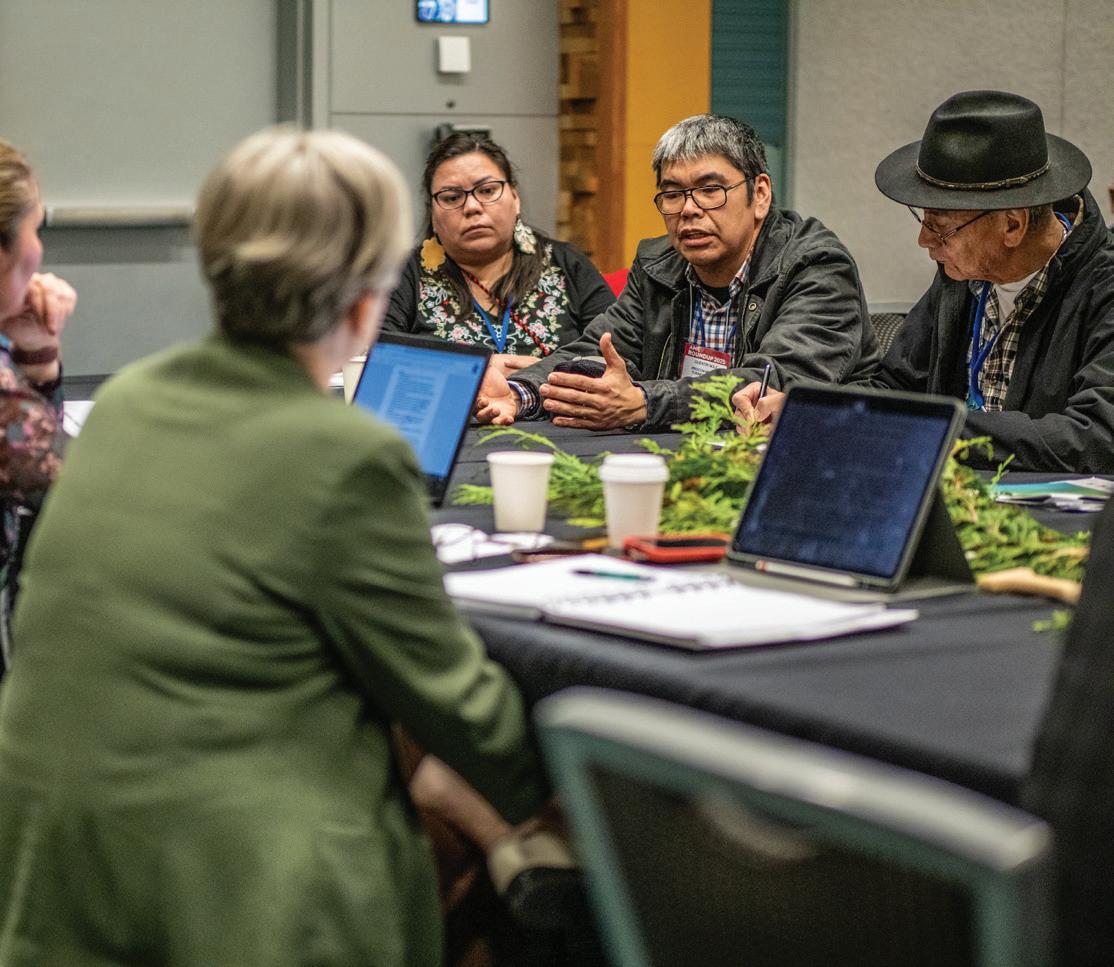
JANUARY 21 & 22, 2025
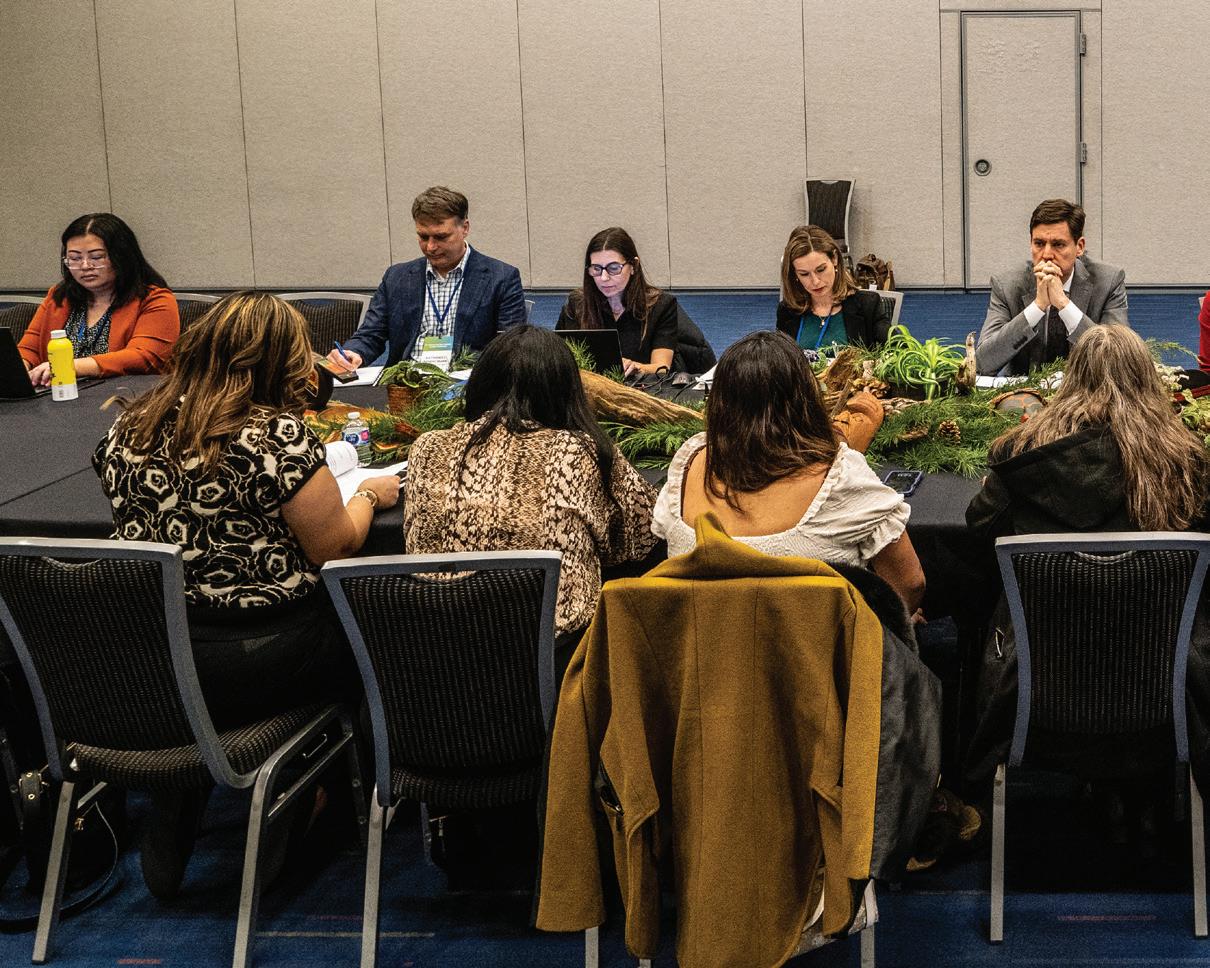
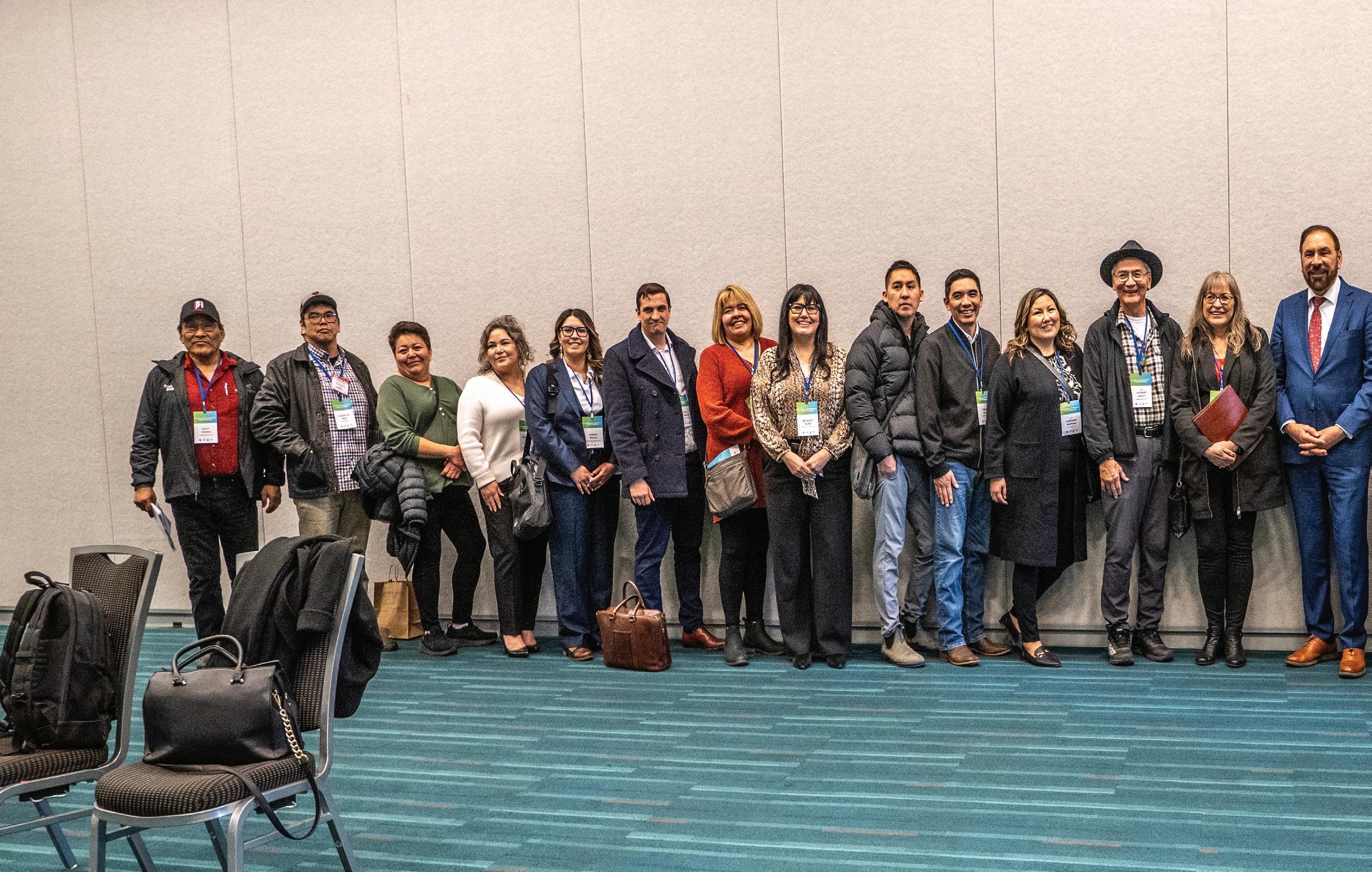
TCG Leadership, the Iskut Band Chief and Council, and the Tahltan Band Chief and Council traveled to Vancouver to meet with the Province.
Top left: Meeting with Minister of Health, Josie Osborne
Top Center: Meeting with Premier David Eby and Minister of Indigenous Relations and Reconciliation, Christine Boyle
Top Right: Meeting with Minister of Infrastructure, Bowinn Ma
Middle Right: Meeting with Minister of Transportation and Transit, Mike Farnworth
Bottom Right: Meeting with Minister of Public Safety and Solicitor General, Garry Begg
Bottom Left: Meeting with Minister of Mining and Critical Minerals, Jagrup Brar

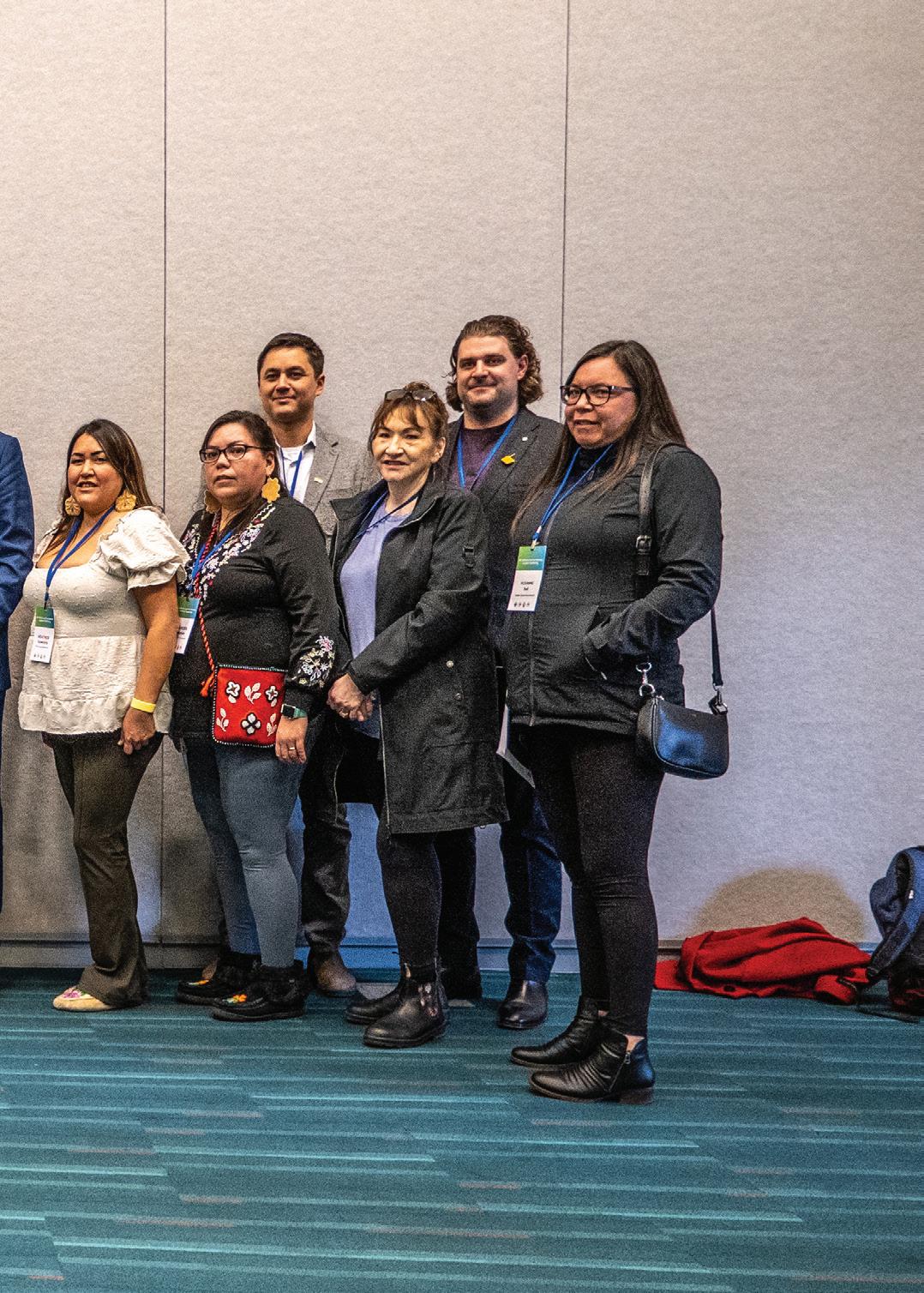

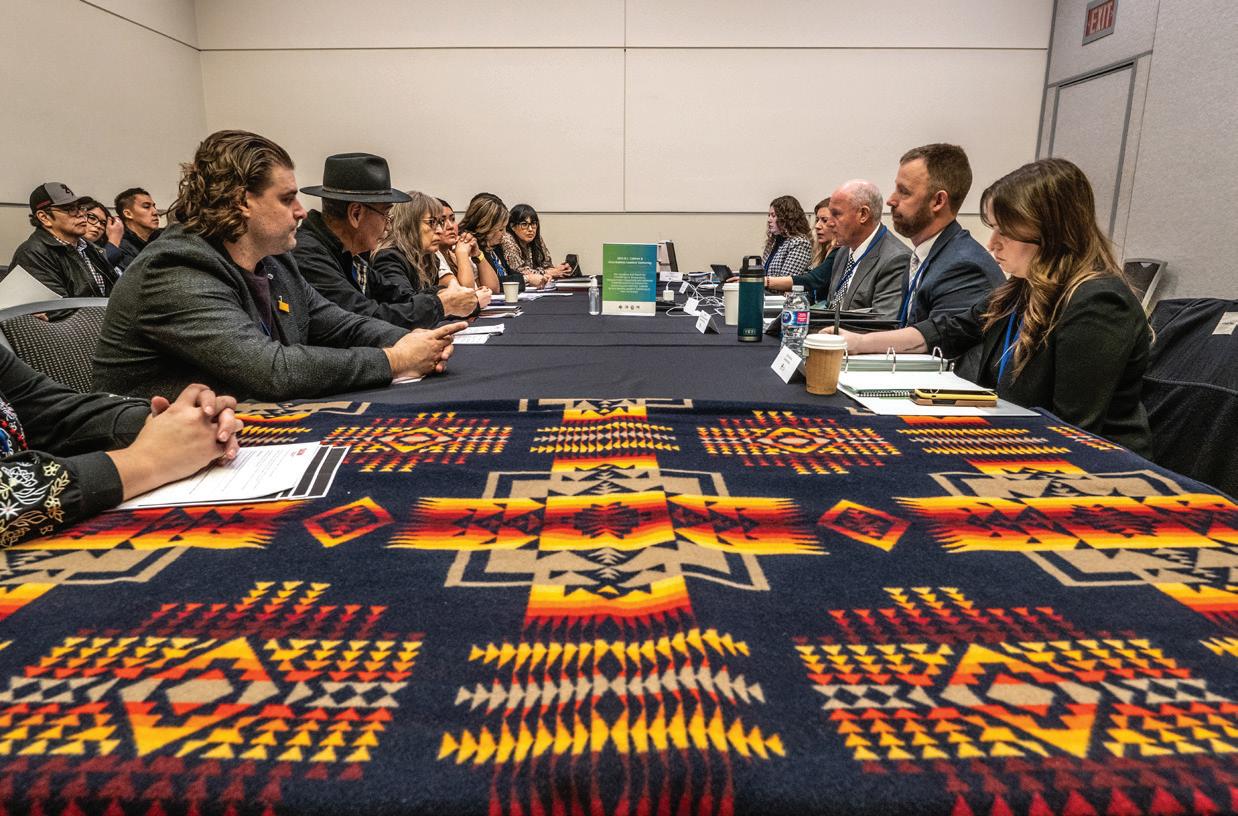
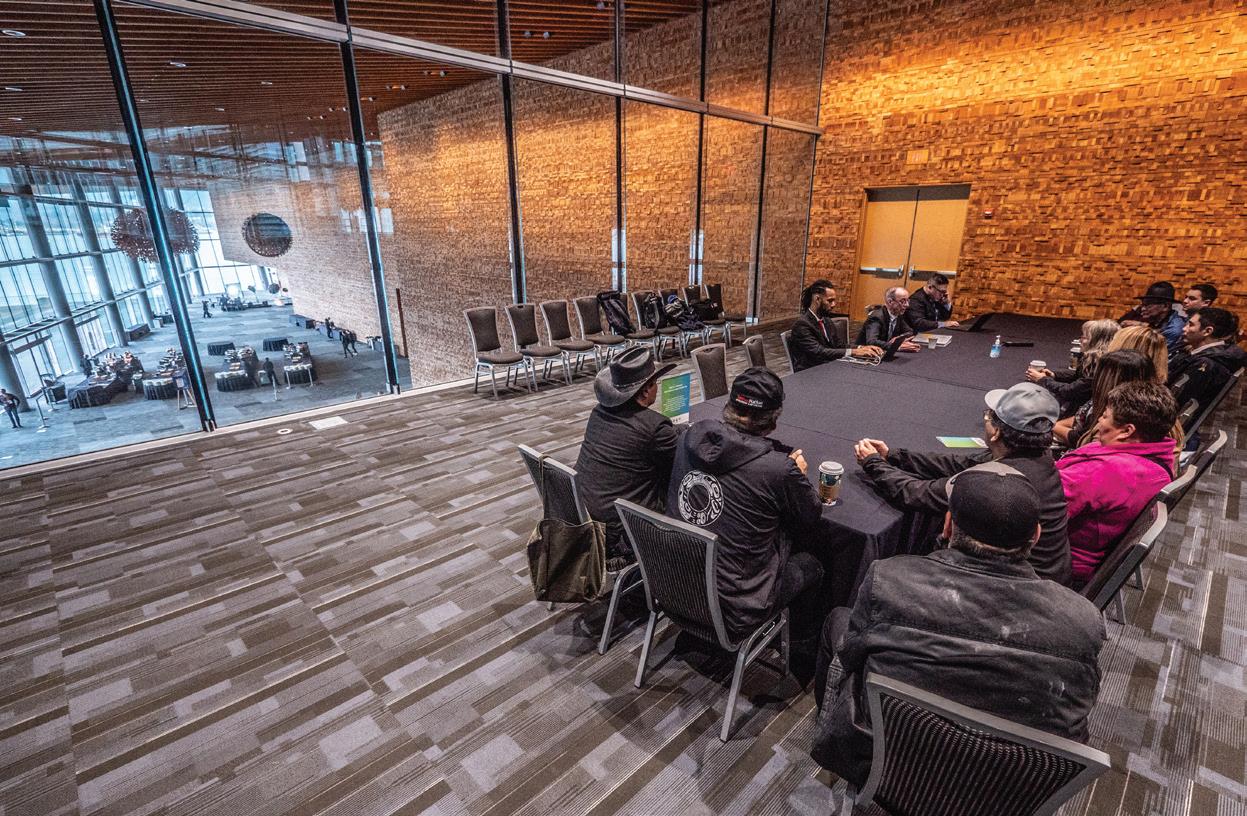












NOTICE IS HEREBY GIVEN that the Annual General Meeting (“AGA”) of the Members of TAHLTAN CENTRAL GOVERNMENT (the “TCG”) WILL BE HELD ON:
July 4th, July 5th & July 6th starting at 9am each day AT:
Dease Lake Recreation Centre/Arena, Dease Lake, BC
Notice is hereby given to all members that the ANNUAL GENERAL ASSEMBLY of the TCG will be held on the dates and at the location specified above for the following purposes:
1. receive the financial statements of the TCG for the year ended 2024;
2. provide members with a report of the TCG Executive Committee and Board of Directors;
3. elect the Directors of the TCG in accordance with Bylaws of the TCG, including the Executive Committee and the Family Representatives;
4. vote on certain special resolutions involving amendments to the bylaws of the TCG, the text of which is set out in the pages that follow; and
5. transact such other business as may be properly brought before the meeting.
During the 2025 AGA, TCG membership will elect a new Board of Directors. Only the positions of President, VicePresident and 1 of the 10 Family Representative positions will be subject to a vote due to some positions being won by acclamation or having no nominees. The list of nominees and other election information can be found at https://tahltan.org/2025aga.
Full adult members of the TCG may vote remotely or in person during the AGA. Voting will open on July 4 th at 9am PST and close on July 6th at 5pm PST. Further information regarding the voting process is set out in the following pages and will be provided to each member in a voter package, which will be mailed in advance of the AGA. Each voter will receive a unique voting PIN as part of the voter package.
To register as a TCG member or to update your contact information please see one of the following links:
For updating: https://tahltan.formstack.com/forms/member_contact_update_form
For registering: https://tahltan.formstack.com/forms/member_information_form
If you have any questions about the 2025 TCG AGA or would like to verify your TCG membership, please email tcgelections@tahltan.org or call 1-855-TAHLTAN or 250-771-3274. An agenda setting out the programming for each day of the AGA will be posted on the TCG website prior to the AGA
TAHLTAN CENTRAL GOVERNMENT

START: FRIDAY, JULY 4 AT 9:00AM PT
END: SUNDAY, JULY 6 AT 5:00PM PT
Using your PIN, which will be provided in your individual voter package, you can vote by internet, phone, or in person.
To vote by internet, type the website below in the address bar of your web browser (such as Chrome, Edge, Safari, etc) and follow the instructions.
tahltan.isivote.com
Using your PIN, which will be provided in your individual voter package, you can vote by internet, phone, or in person.
To vote by phone, call the voting phone number below and follow the instructions.
1-866-213-9896
The TCG Annual General Assembly (AGA) will be held at the Dease Lake Recreation Centre (Arena).
Voting by paper ballot will be available during the AGA at the following location:
• Dease Lake Recreation Centre (Arena)
• Friday, July 4, 9:00am to 5:00pm PST
• Saturday, July 5, 9:00am to 5:00pm PST
• Sunday, July 6, 9:00am to 5:00pm PST
PIN and Photo ID are required. If you do not have photo ID, an elder can verify your identity.
Online and phone voting are available at all hours during this time.
In-person ballot voting is available from 9 AM PST to 5 PM PST in Dease Lake each day: July 4, 5, 6.
You qualify to vote if:
• You are of Tahltan ancestry.
• You are at least 18 years of age on or before July 6, 2025.
• Your name is included on the TCG membership list prior to the close of voting.
Important Information:
• This PIN is assigned to, and may only be used by, the person identified in this letter.
• You are receiving this information because your name appears on the list of voters entitled to cast a ballot in this vote.
• This is a SECRET BALLOT vote. Your vote is entirely confidential.
To register as a TCG member, please complete the digital form at the following link or scan QR code on the right:
https://tahltan.formstack.com/forms/member_ information_form
To update your contact information, please complete the digital form at the following link or scan QR code on the right: https://tahltan.formstack.com/forms/member_ contact_update_form
To verify your TCG membership, email membershipdirector@tahltan.org or call 1-855-TAHLTAN
If you require technical help with voting, please contact the toll-free voter help line at 1-888-281-8683.
Voter Help Line hours of operation: July 4 – 6 9:00am to 5:00pm (PST)
If you do not have your voting PIN, please contact the toll-free voter help line: 1-888-281-8683
Voter Help Line hours of operation: July 4 – 6, 2025 9:00am to 5:00pm (PT)
Scan the QR code below to register as a TCG member:
Scan the QR code below to update your contact information:
During the 2025 AGA, TCG membership will elect a new Board of Directors consisting of President, Vice-President, Secretary Treasurer, and 10 Family Representatives.
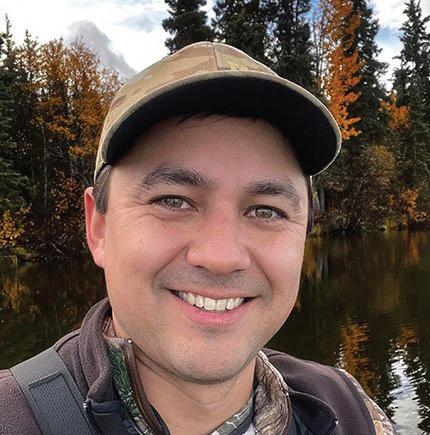

KERRY CARLICK ALLEN EDZERZA
HEATHER HAWKINS
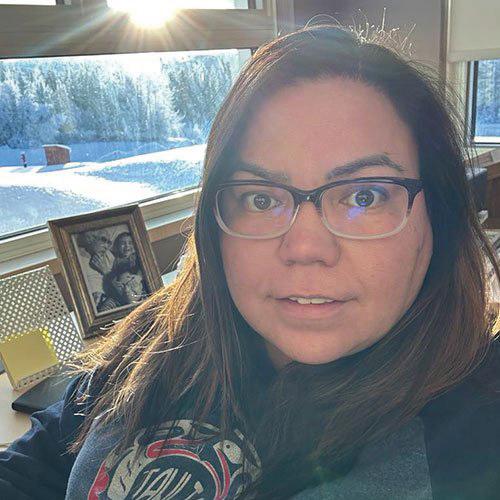
SANDRA CARLICK MARION
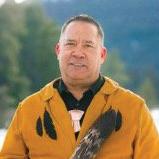
RICK MCLEAN
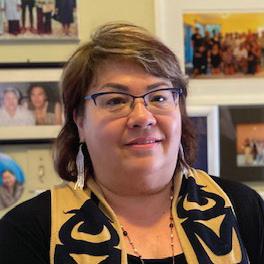
BEVERLY SLATER
KIMBERLEY S. MARION
LILY ROSE BELHUMEUR
NATHAN SKUBOVIOUS
Sheena Seymour has rescinded her nomination for the Secretary-Treasurer position. As a result, Carol Danielson will be acclaimed into the role of Secretary Treasurer.
For the Shukak family position, we received no candidates. We will need to hold a by-election at a later date.
The only Family Representative race during the 2025 Elections will be for Eth’eni.
For the rest of the Family Representative races, the single candidate wins automatically by acclamation.
During the 2025 Annual General Assembly, the Tahltan Central Government (TCG) membership will elect a new Board of Directors consisting of one President, one Vice-President, one Secretary Treasurer, and 10 Family Representatives. The following summary has been prepared to ensure that all nominees to the TCG Board of Directors are aware of the expectations that come with the role.
All members of the TCG board of directors are expected to act in the best interests of the TCG, attend TCG board meetings and related leadership meetings, and comply with the TCG’s bylaws, BC Societies Act and TCG policies. This include providing sworn disclosures regarding all potential conflicts of interest.
The TCG board will typically hold meetings at least monthly for approximately 8 hours. Directors will also attend meetings of the Tahltan Leadership Forum, which are typically held on a quarterly basis. In addition, directors may be asked to serve on TCG committees or in other roles within the Tahltan Nation, which will often require an additional 6-12 hours per month. In preparation for these meetings, directors should expect to spend 4-6 hours reviewing material.
The TCG board serves an important decisionmaking role within the Tahltans Nation and will be regularly asked to vote on issues that may be highly controversial and have broad implications. Directors should be prepared to take on this responsibility and devote the time and energy needed to make well informed decisions.
The TCG Executive Committee, consisting of the President, Vice-President, and Secretary Treasurer, will serve an integral role in representing the TCG to third parties and helping manage the day-to-day affairs of the TCG, working alongside the TCG’s administrative staff. The President’s role should be considered a full-time responsibility, while the Vice-President and Secretary Treasurer roles are expected to be part-time roles. The exact expectations and time commitment for each Executive Committee position may vary through the term of office at the discretion of the board.
Family Representatives serve an important function, including engaging with individual families and making decisions in the best interest of the TCG. This role does not require the same level of day-to-day responsibility as the Executive Committee positions but will require being available to attend meetings on a regular basis, host family engagement meetings, and review substantial material in advance of board meetings.
All nominees to the TCG board are encouraged to consider these responsibilities carefully and confirm their intent to fulfill these obligations for the duration of the 3-year term of office prior to submitting their nomination forms
Scan the QR code below to learn more about the TCG Elections:
OFFICIAL NOTICE OF 2025 SPECIAL RESOLUTIONS
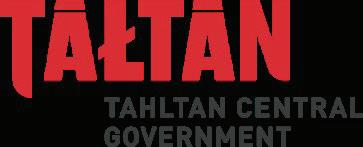
To: All Registered Tahltan Central Government Members From: Tahltan Central Government Re: 2025 Special Resolutions
Members of the Tahltan Central Government will be asked to vote on changes to the Central Government’s Bylaws at the 2025 Annual General Assembly.
Important Details:
• Date: July 5th, 2025
• Time: 1:00pm
• Location: Dease Lake Recreation Centre (Arena), Dease Lake, B.C.
• Voting: You must attend in person to vote on the proposed changes.
The proposed changes are grouped into 12 separate special resolutions. This means members can vote for or against each special resolution individually.
During the AGA, the special resolutions will be proposed as follows:
1. The special resolution will be presented, along with an explanation
2. The floor will open for questions and discussion
3. The special resolution will be voted on by a show of hands
Each resolution needs approval from at least two-thirds (2/3) of the votes cast to pass.
If you have questions, please email contact@tahltan.org and your question will be forwarded to the right person.

Dear TCG Membership,
We are writing to you to present a series of proposed amendments to the TCG bylaws, which will be put forward for a vote at the upcoming Annual General Assembly (AGA).
Over the past two years, the TCG has navigated some challenging governance issues. Through this experience, it became clear that our current bylaws are outdated, lack clarity regarding roles within the organization, and don't provide the board with the authority to hold the board of directors accountable for abiding by our policies.
The proposed amendments to the bylaws address these vital areas. The key changes include:
Updating the format and clarifying inconsistencies within the bylaws. This will make the bylaws easier to understand and apply.
Clarifying the various roles within the organization. This includes defining the responsibilities of the Board, President, Vice-President, Secretary-Treasurer, Chief Administrative Officer, and Chief Financial Officer, ensuring everyone understands their part.
Adding provisions that allow the board to develop and enforce policies. These policies will cover crucial areas such as conflicts of interest, fiduciary obligations, elections, and other important matters, giving the board the tools to maintain strong governance.
It is important to highlight that these proposed changes are not intended to significantly alter the Tahltan Central Government's current governance structure. Instead, they will add important clarity to the various roles and provide the board with more effective tools to ensure our organization is governed in an open, transparent, and accountable manner. These updates are essential for our continued good governance.
We encourage you to review the proposed amendments thoroughly before the AGA. We believe these updates are an important step forward in strengthening our organization and ensuring we continue to serve the Tahltan Nation effectively.
Sincerely,
TCG Governance Committee
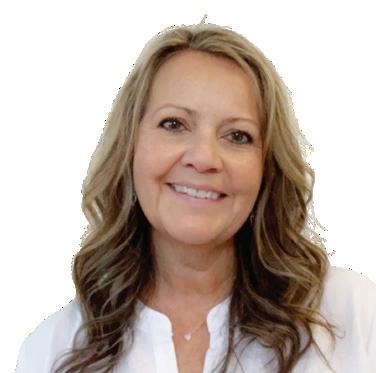
Prepared by:
Theresa Montpellier, CPHR
HR Business Partner
This report outlines the creation and implementation of Tahltan Central Government’s first Human Resources (HR) framework. The initiative supports TCG’s commitment to building a professional, equitable, and culturally informed HR structure that aligns with both employment law and the values of the Tahltan Nation. This framework provides a foundation for recruitment, retention, compliance, and workforce development to meet organizational goals.
The establishment of the HR Business Partner (HRBP) position was a direct result of feedback gathered in the organization-wide Employee Satisfaction Survey, which was conducted by a previously contracted HR consulting firm. That survey identified critical gaps in internal processes, employee support, policy consistency, and staff engagement, all of which shaped the mandate for a dedicated HR function. The HR Business Partner role officially began on December 2, 2024, and has since been instrumental in building TCG’s first internal HR department.
Theresa Montpellier is a Chartered Professional in Human Resources (CPHR) with over 22 years of progressive HR experience, currently serving as the HR Business Partner for TCG. Theresa brings a deep understanding of Indigenous governance, employment law, and organizational leadership. She is a proud member of the Tahltan Nation and is committed to fostering inclusive, transparent, and culturally respectful HR practices. Her work is rooted in supporting Nation-building through people-first policies and ethical, accountable systems.
Prior to 2024, TCG operated without a dedicated HR department. With the expansion of programs and staff, the lack of formal HR structure became increasingly unsustainable.
The decision to create a permanent internal HR function stemmed from the Employee Satisfaction Survey, which highlighted:
• Unclear roles and expectations
• Inconsistent recruitment and onboarding
• Gaps in workplace support systems
• A strong desire for HR leadership and accountability
This feedback, along with executive leadership support, led to the hiring of a full-time HR Business Partner to establish an HR framework that serves the organization and respects cultural values.
The goals of the HR Framework for TCG are to build a sustainable, compliant, and culturally safe human resources foundation. These goals ensure that HR practices are aligned with both legal requirements and the values of the Tahltan Nation.
• Created TCG’s first internal HR department led by a dedicated HR Business Partner.
• Implementation of core HR best practices including hiring, leaves, vacation, and performance reviews.
• Ensured alignment with employment laws and Indigenous practices.
• Introduced onboarding, training, and performance tools across departments.
• Supported recruitment of key executive and departmental leadership roles.
• Integrated foundational policies from the 2017 TCG HR Manual.
• Provided employee relations guidance and established clear protocols.
As of May 2025, TCG currently employs 62 full-time and part-time staff across all departments.
TCG proudly recognizes the dedication of its long-serving employees. In 2024–2025, the following milestones were celebrated:
• 2 employees reached 10 years of service
• 5 employees reached 5 years of service
• 11 employees recognized for 1–4 years of service
The following is only an example of some of the Employee Recognition and Engagement Framework that has been introduced since December 2024.
Service recognition is a cornerstone of employee engagement and cultural appreciation at TCG. As part of the new HR framework, a formal Employee Recognition and Engagement Framework has been introduced to ensure staff feel seen, valued, and supported in their contributions to Nation-building.
The goals of the HR Framework for TCG are to build a sustainable, compliant, and culturally safe human resources foundation. These goals ensure that HR practices are aligned with both legal requirements and the values of the Tahltan Nation.
Key components of the framework include:
• Annual Service Recognition: Celebrating years-of-service milestones with personalized certificates, Nation-branded gifts, and public acknowledgment across internal platforms.
• Onboarding Welcome Kits: Every new employee receives a culturally grounded welcome package, a message from leadership, and essential onboarding tools.
• Milestone Acknowledgments: Special attention is given to birthdays, retirements, promotions, and personal achievements through cards, emails, and shared celebrations.
• Quarterly Spotlights: Employees are highlighted for exemplary performance or team spirit through internal newsletters and team meetings.
• Wellness and Appreciation Events: Coordinated initiatives such as seasonal staff events, lunches, and wellness activities aim to support morale, reduce burnout, and foster team cohesion.
Looking ahead, the HR department plans to introduce a peernominated recognition program and explore the integration of digital tools to support real-time acknowledgments. All recognition practices will continue to be shaped by the Nation’s values, emphasizing respect, equity, and connection.
Since the inception of the HR Business Partner role, significant progress has been made in building and strengthening TCG’s HR framework. Key achievements to date include:
• Established and implemented foundational HR best practices, including medical leaves and gradual return to work programs, recruitment protocols, and performance expectations.
• Created standardized HR documentation such as interview templates, medical leave forms and performance evaluation templates.
• Provided direct HR support in managing employment relations, conflict resolution, and return-to-work plans.
• Introduced forms, gradual return to work plans, and templates
• Built early-stage capacity for internal HR file management and compliance monitoring.
The HR framework is designed to align with all relevant legal standards and internal governance requirements. Compliance and policy integrity are essential to ensuring both organizational protection and employee fairness. The following legislation and policies form the backbone of the HR framework:
• BC Employment Standards Act – to ensure minimum employment conditions, including wages, hours, and leave entitlements.
• BC Human Rights Code – to uphold equity and prevent discrimination in the workplace.
• WorkSafeBC Regulations – to promote occupational health and safety across all departments.
• Freedom of Information and Protection of Privacy Act (FOIPPA) – for the secure handling of employee records and personal data.
• Personal Information Protection Act (PIPA) – to govern privacy and data security in employment practices.
• Internal TCG Policies – including governance mandates, financial signing authority, and community representation priorities.
Efforts are ongoing to embed culturally appropriate practices into policy application, ensuring the HR approach is legally sound while remaining culturally responsive to the needs of the Tahltan Nation.
While progress has been significant, the development of the HR framework has not been without its challenges. These considerations continue to inform the work and guide future improvements:
• Lack of historical precedent for a formal HR department in an Indigenous governance setting, requiring careful adaptation of policies to suit the cultural and operational realities of TCG.
• Balancing cultural traditions, community expectations, and legal obligations, especially around employment law, confidentiality, and discipline processes.
• High workload during transitional periods, with overlapping responsibilities between departments and HR.
• Varying levels of HR knowledge among department managers and supervisors, necessitating targeted training and coaching.
• Limited internal administrative infrastructure, such as absence of HR/Payroll software, requiring manual tracking and processing.
• Sensitive organizational change management, especially during the implementation of new structures or when addressing long-standing informal practices.
These challenges are being addressed with transparency, leadership engagement, and a step-by-step approach to capacity building.
As TCG continues to evolve, the HR department will play a central role in supporting sustainable growth, cultural alignment, and operational excellence. The following priorities and recommendations are proposed:
• Finalize and adopt the full HR policy manual with regular review schedules and version control.
• Launch a centralized HR/Payroll management software to support record keeping, payroll coordination, and leave tracking.
• Develop an Indigenous mentorship and leadership development program to build internal capacity.
• Create and deliver recurring HR training modules for managers and directors on recruitment, performance, and legal compliance.
• Strengthen cultural safety initiatives within onboarding, training, and workplace expectations.
• Create feedback loops with employees and leadership to ensure continuous improvement of HR systems.
• Secure resources and staffing to support HR functions beyond a single position to ensure sustainability.
• Ensure alignment with strategic planning processes and community goals to support TCG’s broader mandate.
The development of the Human Resources framework at Tahltan Central Government (TCG) has been built upon the foundation of the existing HR Policies and Procedures Manual (Amended November 2017). These longstanding policies continue to play a central role in the structure, compliance, and cultural integrity of TCG’s HR practices.
The HR Business Partner is reviewing and aligning new framework to ensure consistency with the following existing core areas:
• Recruitment and Hiring Practices: Incorporates Indigenous preference language and requires Executive and HR Committee review for final candidates in leadership roles.
• Probationary Periods: Defined timelines and extension protocols support early-stage performance review and fit assessments.
• Job Descriptions: Structured, required for all roles, and reviewed during performance evaluations.
• Working Hours and Overtime: Aligns with BC Employment Standards and internal approval processes; emphasizes flexibility while safeguarding employee wellness.
• Vacation, Statutory Holidays, and Leave: Includes cultural accommodation for Tahltan traditions and holidays such as Aboriginal Day and Tahltan Day.
• Medical, Parental, and Compassionate Leave: Codifies access to federally mandated and culturally respectful family care provisions.
• Performance Management and Discipline: Based on a progressive discipline model, with a focus on correction, fairness, and documentation.
• Termination and Resignation Procedures: Clarifies notice periods, exit processes, and the use of investigative suspensions when needed.
• Workplace Conduct, Harassment, and Violence Prevention: Policies comply with WorkSafeBC and BC Human Rights Code, emphasizing safe, respectful work environments.
• Conflict of Interest, Confidentiality, and Code of Conduct: All employees must sign acknowledgment forms and adhere to defined standards.
• Use of Equipment and Office Conduct: Clear expectations for TCG property use, professionalism, and workspace appropriateness.
To ensure policies remain relevant, the HR Business Partner recommends:
• Annual policy reviews and updates, led by HR in collaboration with Directors and the Executive.
• Rebranding and republishing the 2017 HR Manual under the new framework, with sections indexed, digitally searchable, and tailored to modern systems.
• Integration into onboarding and training sessions for all new employees, with acknowledgment tracking and refresher timelines.
These initiatives are intended to reinforce accountability, equity, and Nation-led governance through a strong, culturally informed HR foundation.
The creation of TCG’s first Human Resources framework marks a transformative milestone in the organization’s development. It reflects a clear and collective commitment to professionalism, cultural integrity, and employee well-being. Through careful planning, community-informed decision-making, and alignment with both legal standards and Tahltan values, the foundation has been laid for a robust HR system.
This journey has only begun. The ongoing support of leadership, staff, and the broader Tahltan community will be essential to building an HR department that not only supports operational needs but also strengthens identity, culture, and governance. With continued investment in people, tools, and training, the HR function will serve as a strategic partner in achieving TCG’s long-term goals.
As the HR Business Partner, I remain committed to advancing this work with transparency, accountability, and deep respect for the Nation I serve.

Chief Administrative Officer (CAO)
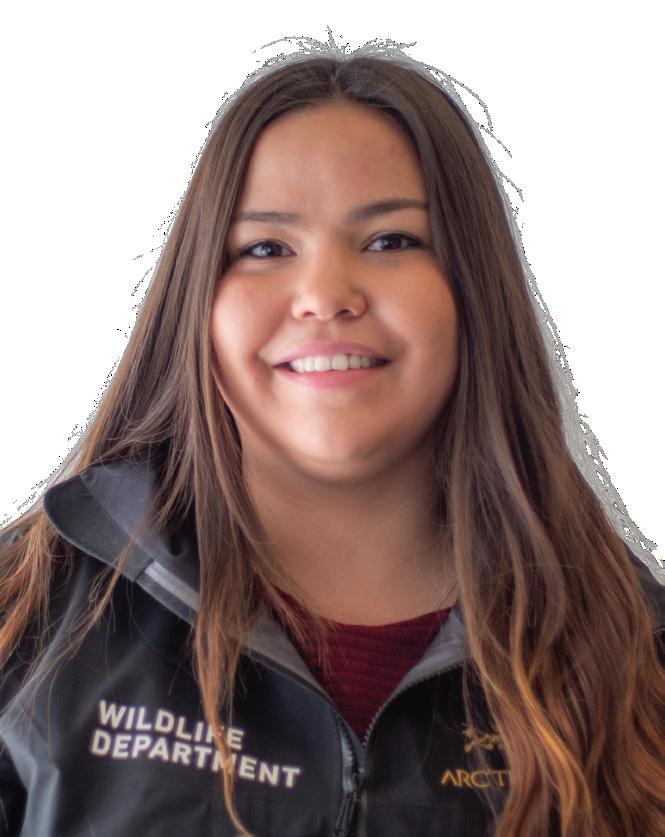
Wildlife Coordinator

Employment & Business Director

Employment & Business Coordinator
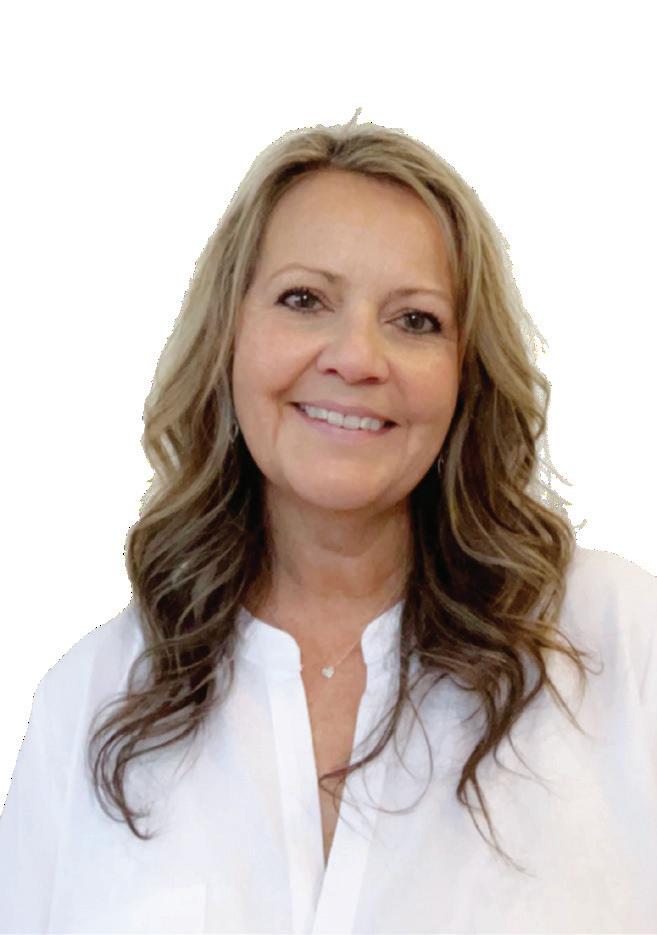
HR Business Partner

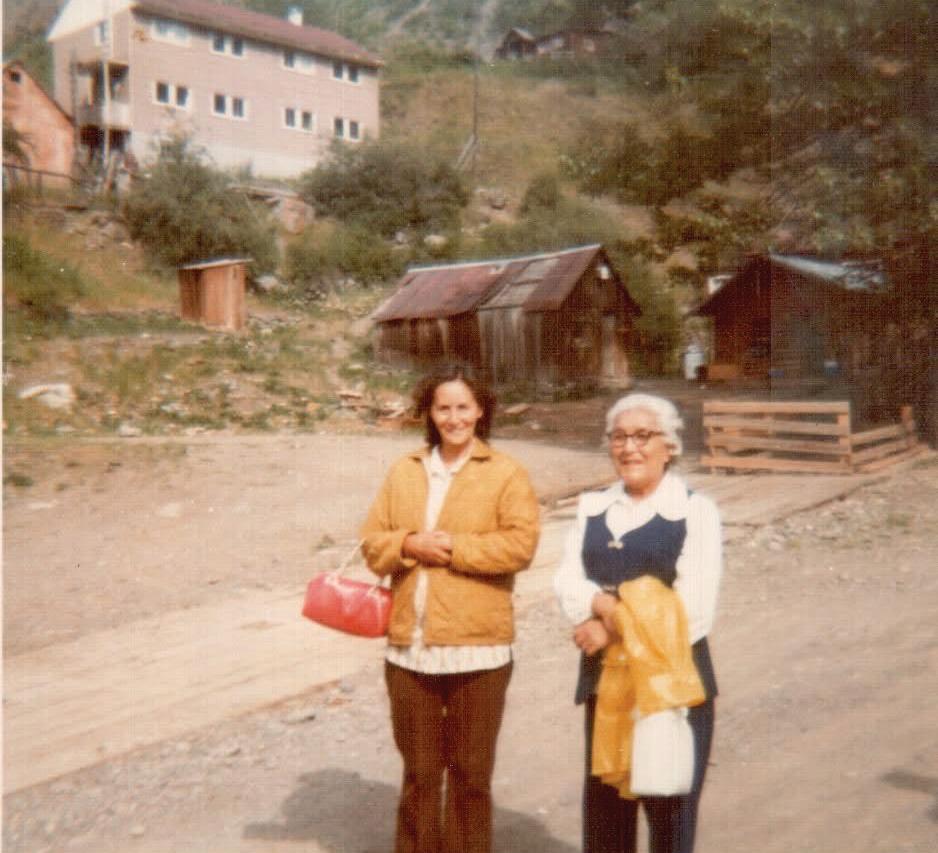

As Edna Quock turns 100 years old, she stands as a living bridge between generations. Born in 1925 in Tahltan Territory, the eldest of twelve children, her life reflects the strength and resilience of her people. She delivered babies as a midwife, sewed dresses by lamplight, worked through a TB outbreak at Miller Bay, and raised seven children—alongside more than sixty grandchildren, great-grandchildren, and great-great-grandchildren. Through war, residential school, loss, and great change, Edna has remained rooted in hard work, humility, and love. Her story is a celebration not only of a life well lived, but of a culture and community carried forward through her hands and heart.
Edna Quock was born in 1925 in Tahltan Village, the eldest of twelve children born to Mary Brown and Belfrey Etzerza. As the firstborn, she carried a natural sense of responsibility from a young age—one that would define much of her life.
Her siblings were Ralph, Peggy, Irma, Carl, Alice, Ira, Bill, Joyce, Belfrey, Albert, and Rose. Among them, only Peggy, Ralph, and Edna herself were spared from being sent to Indian Residential School.
Edna was raised in a log cabin nestled in the heart of the community. She attended school in a modest building that also served as a church.
“We go to church there. And December month, on the 20th, the teacher made a Christmas party for us. Each one of us got gifts. Man, he was nice. He was a priest, and he was a teacher. And he was first aid.”
Education in those days was as much about survival as it was about learning. The priest-teacher was also the community’s healer.
“If any one of us got sick, we’d go to him. He’d give us some medication, but he’d also say, ‘You guys know how to make your own medicine. Well, go on and do it. But still, I’ll give you this to help the pain.”
Her family practiced and passed down traditional healing, using Indigenous medicines like Hodzih klāne and Balsam bark tea.
“My mom would make that, and she’d make us drink lots. Within two days’ time, we’d all feel better. Just on that Indian medicine.”
Edna grew up in a self-sufficient and closely knit community where people lived off the land—fishing, hunting, gathering, and preserving food to last through the long northern winters. It was a lifestyle that shaped her values early on and grounded her in traditional knowledge and Tahltan ways of life.

At just 18 or 19 years old, in the early 1940s, Edna worked in Lower Post as a seamstress, hand-sewing dresses for the women in her community.
“I used to work all night sewing dresses. People would place orders, and I’d sew and sew, trying to get them done. Sometimes five dresses in a night!”
She mostly sewed for Indigenous women, creating beautiful garments that were highly sought after.
“It was hard work, but they were nice dresses. Everyone wanted them.”
This period in her life reflected her strong work ethic and her dedication to her community. She wasn’t just making dresses—she was helping women feel beautiful and proud.
This period in her life reflected her strong work ethic and her Though far from the frontlines, Edna Quock’s life in Tahltan Village was shaped by the distant thunder of global conflict. From wartime blackouts to the pride of seeing local men in uniform, she witnessed how war reached even the most remote corners of the North.
During World War II, Edna was a teenager living in the village. She recalled the fear that settled over the community at night.
“As soon as it’s getting dark, we had a light set. Mom put heavy blankets all around. Sometimes at night, we wake up, we hear some planes going by. Oh, it was scary.”
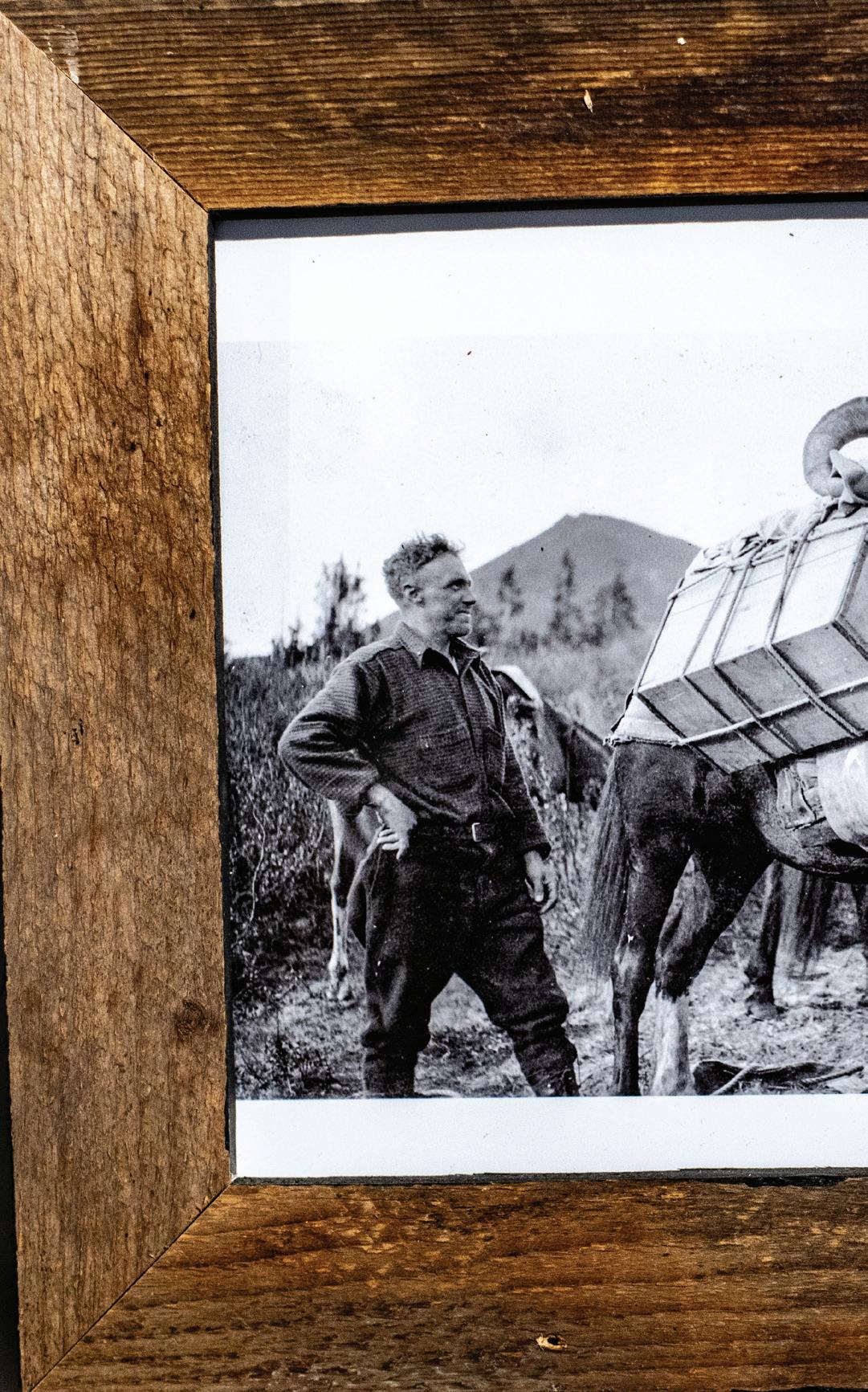

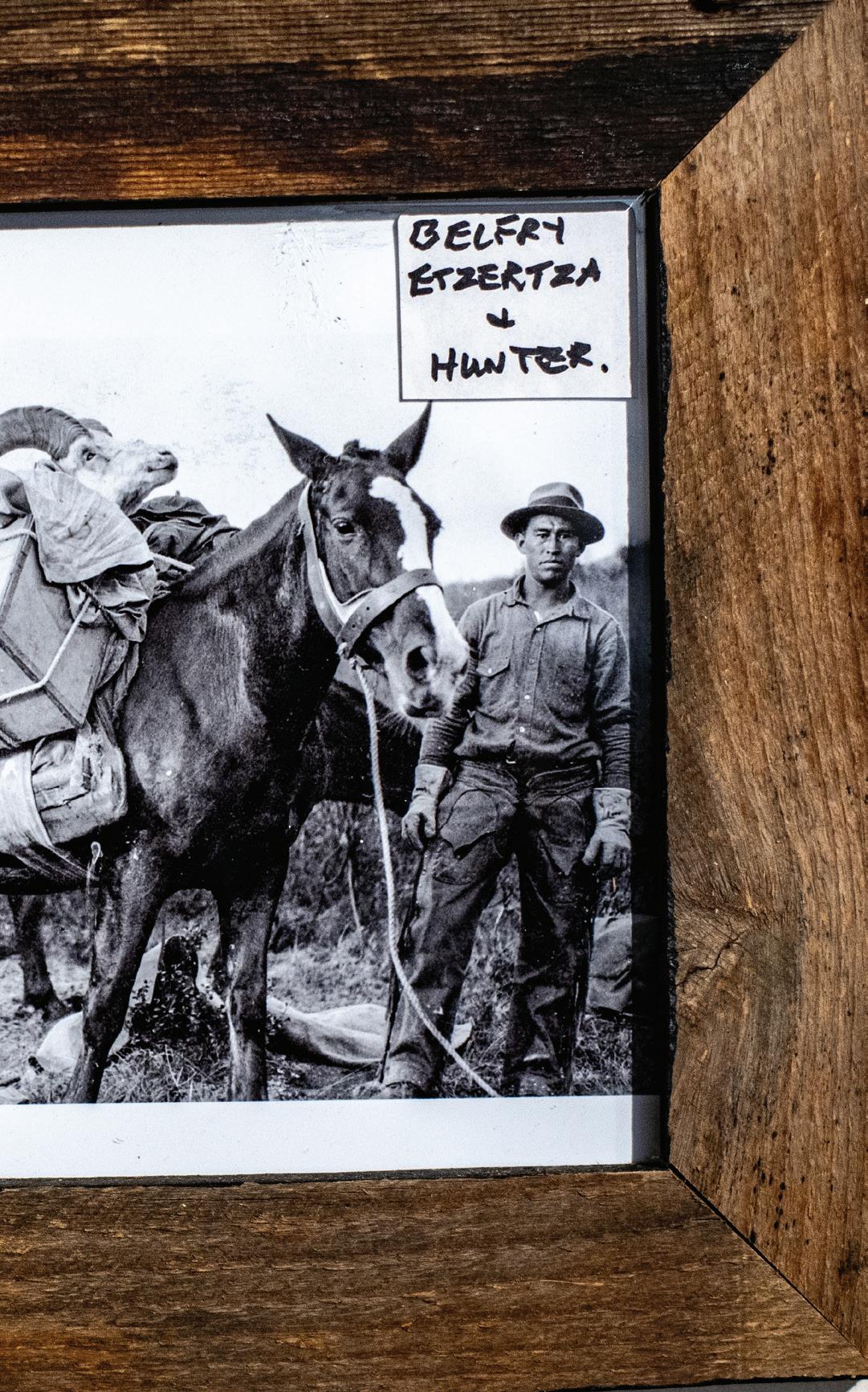
People listened closely to the radio, following updates about the war with caution and curiosity.
“I heard it on the news. Radio. Yeah? I still have one of those radios. Battery-operated. Man, that thing comes just clear.”
Though none of her closest friends were sent to war, the tension of the time left a lasting impression.
Years later, during the Vietnam War, Edna was a mother with a growing family. While Canada did not officially join the war, some Indigenous men from northern B.C. volunteered or were recruited across the border.
She recalled Bill McPhee going to the war. She especially remembered how sharp he looked in uniform.
“Oh my goodness. When we saw that picture of Mr. McPhee. Almost all the women went crazy over him!”
Her memory is warm and proud—tinged with both admiration and a quiet understanding of the risks those young men faced.
As a young woman in the late 1940s, Edna worked at Miller Bay, a tuberculosis hospital near Prince Rupert. TB was a serious illness that devastated Indigenous communities, and working at the hospital was both a privilege and a risk.
“I worked with the patients right in the hospital. TB hospital, too. I had to wear a mask and gloves.”
Every morning, she was met with the sound of patients coughing—a stark reminder of the disease’s severity.
“Oh, I feel so scared. The nurse told me, ‘Don’t be afraid. You will be protected.’ They gave me some kind of shots, too.”
Despite the fear, she found purpose in her work. Years later, a patient she had cared for recognized her and expressed his gratitude.
“He grabbed my hand. He thanked me very much for taking care of us,” she recalled.
But Edna’s work as a healer didn’t stop at the hospital. She also served as a midwife, helping deliver babies in Telegraph Creek and surrounding areas. In a time when doctors were scarce, she was often called upon to assist with births, bringing new life into the world with steady hands and calm wisdom.
“I helped deliver so many babies,” she would say with pride.
Among them were Fannie Vance and Beatrice Quash, who grew up knowing that it was Edna who had been there at their first breath.
Her role as a midwife was another way she gave back to her people— ensuring that mothers had support and that babies arrived safely, even in the most remote conditions.
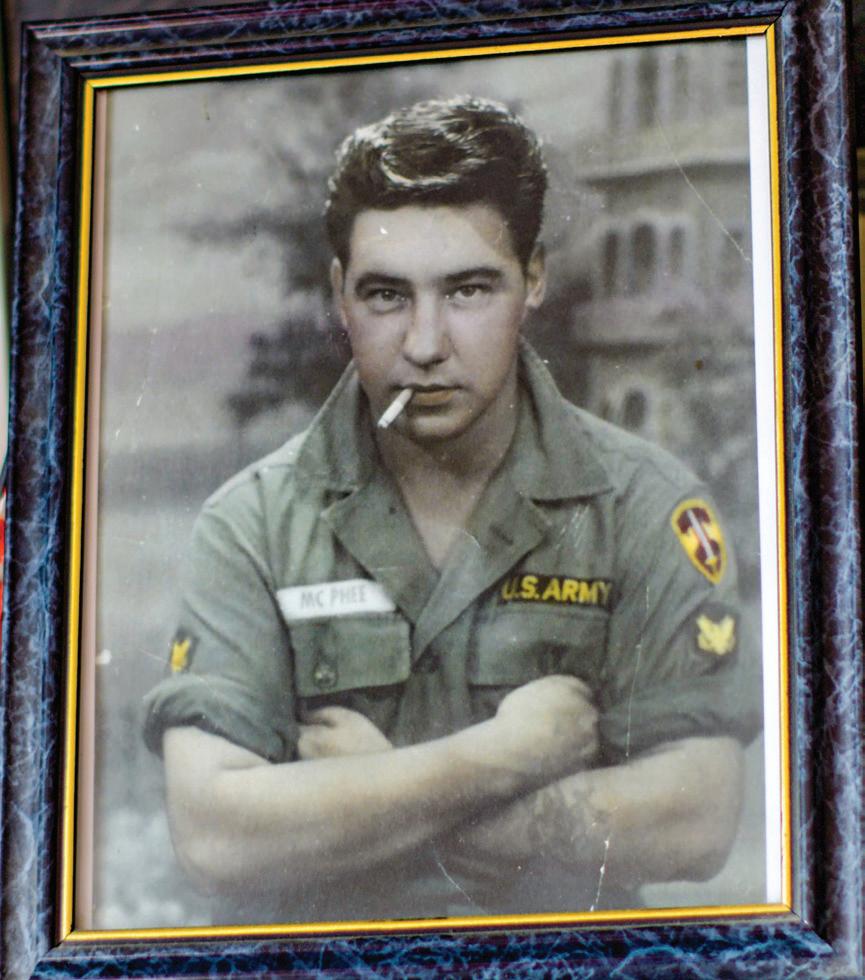
In 1950, Edna met her future husband, Henry Quock, while he was working in Telegraph Creek.
“We got more closer in 1950, and in 1952,” she said.
They were married in July 1952, just months before the birth of their first daughter, Bernice.
“Just think, on my wedding night, I danced all night with that baby. I never even feel it.”
Before her marriage to Henry, Edna had her first child, Eugene, in the mid-1940s. After marrying Henry, together they had Bernice, Daisy, Isaac, Lynda, Clarence, and Claire. From their children, Edna and Henry’s family has grown to include over 60 grandchildren, greatgrandchildren, and great-great-grandchildren—a legacy as vast and vibrant as the land they called home.
Dancing was a cherished part of their life together.
“Did grandpa know how to dance?”
“All night. Two-stepping,” she replied.
One night, their daughter Lynda Palmer woke up in the middle of the night and went downstairs. What she found was something she’s never forgotten—her parents, alone in the living room, dancing together. That memory, of quiet love and joy, remains one of the most beautiful gifts her parents ever gave.
Together, Edna and Henry built a home and raised their children in Telegraph Creek, surrounded by extended family and community. Life was not easy—it was filled with long days of fishing, hauling wood, sewing clothes, and preparing food.

“I used to work on everything. Work on fishing when I’m pregnant. And it was those kids that helped me when they got older.”
But motherhood also brought heartbreak. Edna miscarried three sons and gave birth to one stillborn son, losses that were later linked to an undiagnosed thyroid condition that went untreated for too long.
“I didn’t know that I had that, what do you call it, thyroid? Too late before I went to see the doctor. After I lost four boys.”
Despite the losses, Edna’s love for her children, her strength as a mother, and her devotion to family never wavered. Her home was always full—with work, with laughter, with music, and above all, with love.
Though Edna never attended residential school herself—nor did her siblings Peggy or Ralph—the rest of her brothers and sisters were taken. She isn’t sure which schools they were sent to, but she remembers the absence.
Later in life, Edna experienced that same pain more personally when one of her own children was taken away.
Though she later recalled that the child eventually came home and did not return to the school, the experience left its mark. Edna never forgot what it meant to have a child taken.
This chapter in Edna’s life speaks to the larger legacy of residential school—how it fractured families, disrupted cultural knowledge, and left generations coping with loss and silence. For Edna, it was a story of grief, strength, and the longing to protect her children in a time when so many parents could not.


Fishing was a central part of Edna’s life. Not only did she process fish for food, but she also made her own fishing nets by hand—a skill that few carry on today.
“Where did you learn how to make nets?” she was asked.
“Oh, we had to learn. I started off with one end, then I come back and do the same thing. And when you think it’s long enough, you join it in the middle.”
This meticulous process was vital to sustaining her family.
“Because our nets set, nobody gets past them. That’s why they work.”
The loss of such skills in younger generations concerns her.
“Kids these days don’t know about hard work. I try to teach younger people, but when they try, they get tired.”
Top: Henry and Edna’s fish house.
They set their net in a back eddy at mesk’ā t’oh (seagull’s nest), directly below the confluence of the Tahltan and Stikine rivers.
Photos by Gary Fiegehen
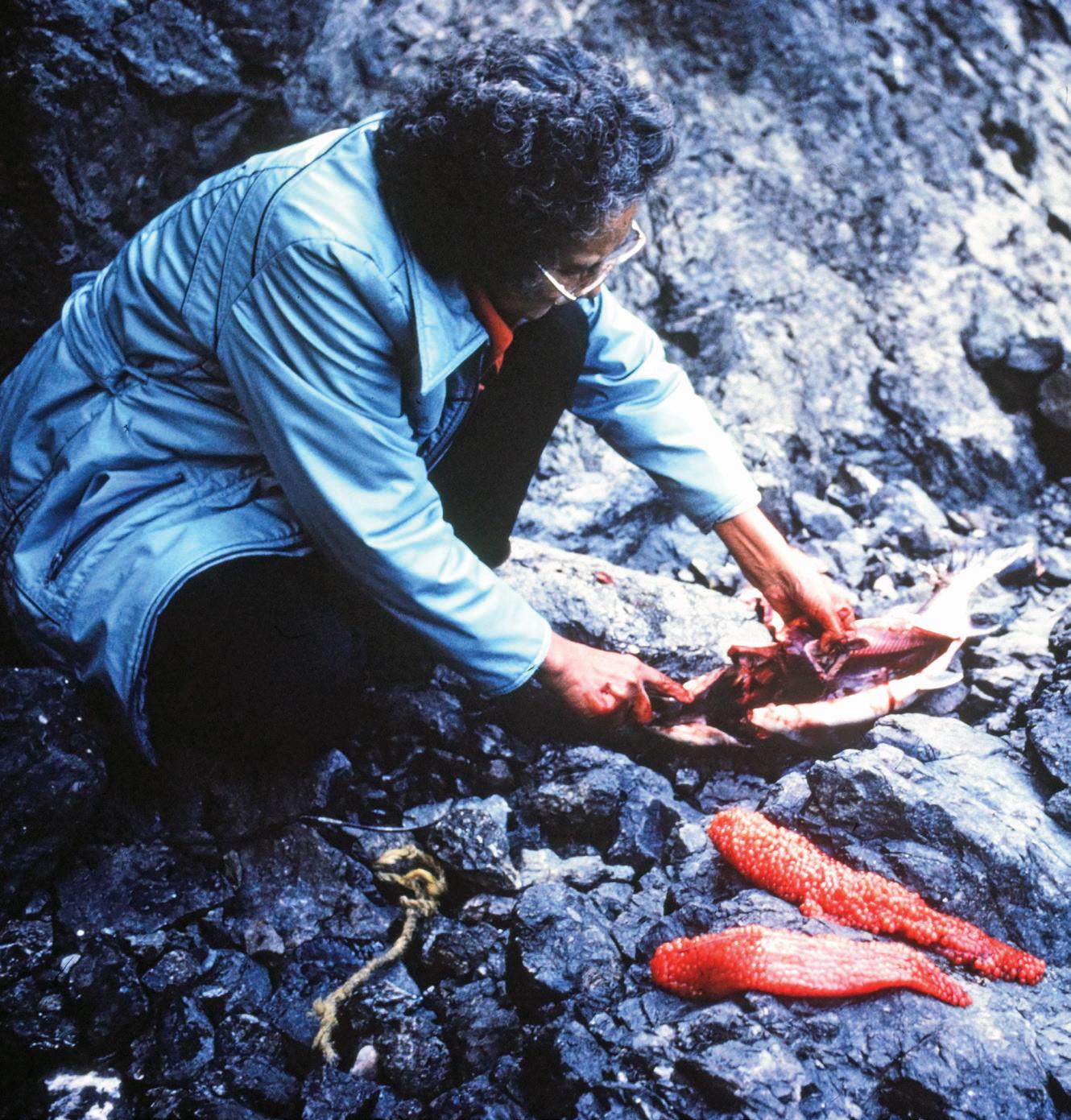
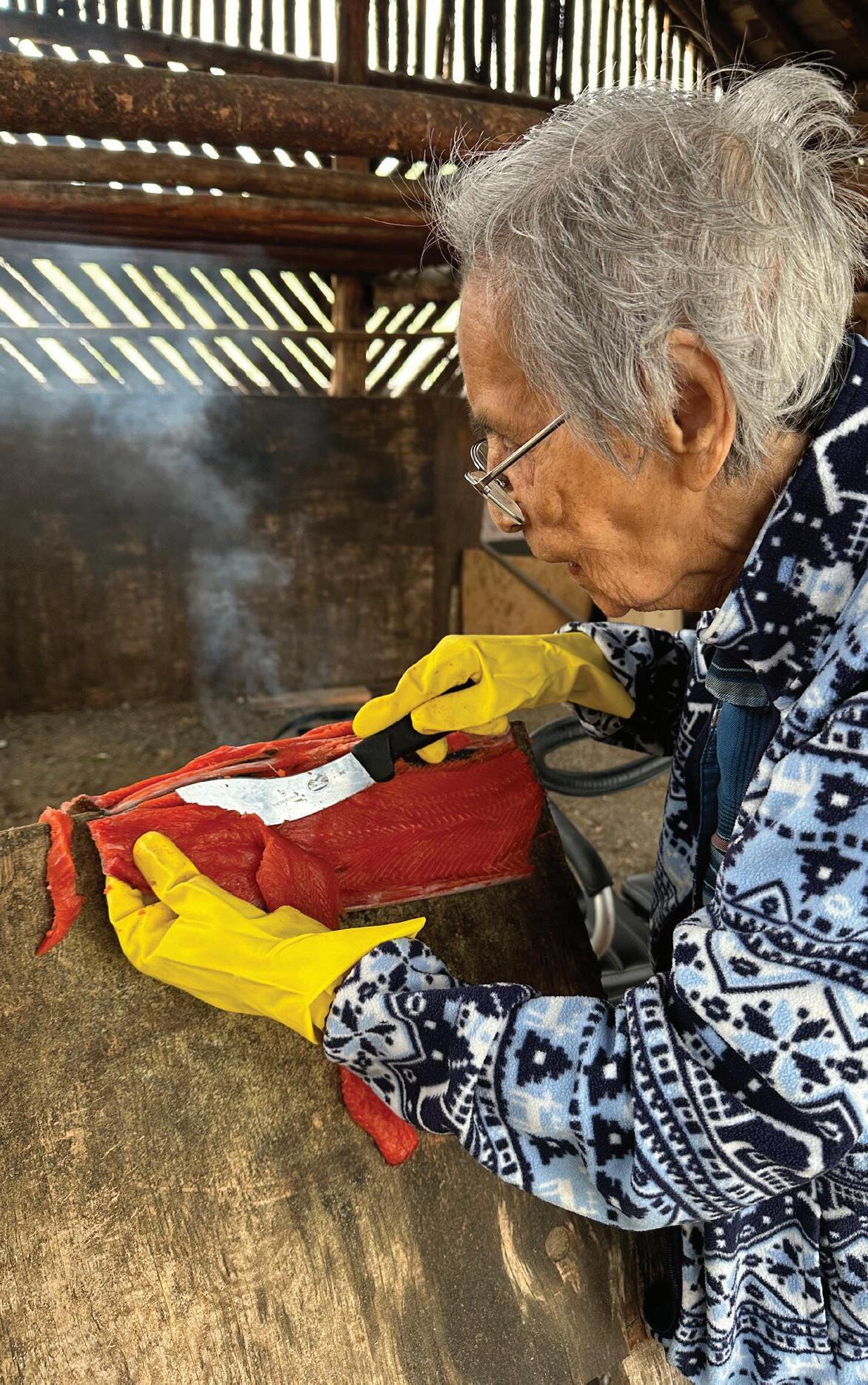
When asked what message she would like to pass on to future generations, Edna was clear:
“Take care of yourselves. Eat traditional foods. Too many poisons have come into our food now.”
She also encouraged learning from elders and keeping traditional medicine alive.
“Traditional food and traditional medicine should be your life.”
She hoped young people would value the wisdom of their ancestors and take better care of their health.
Edna Quock’s story is one of perseverance, love, and dedication. In her life, hard work wasn’t a choice—it was survival. Whether it was sewing dresses through the night, making her own fishing nets, working long hours at the TB hospital, delivering babies as a midwife, or raising 7 children, Edna did what needed to be done. But over time, hard work became more than just a necessity—it became a way of life, a value she still holds close as she approaches 100 years old. Even now, she believes that staying busy and putting in the effort is what builds strength, resilience, and a good life
Her life is a testament to the strength of Indigenous women, the importance of community, and the wisdom of traditional ways of life.
As she celebrates her 100th birthday, her story continues to inspire generations to come.
Profiles of Edna From Her 90th Birthday
• Tahltan Band Elders webpage: https://tahltan.ca/elders-page/edna-quock/
• 2019 Spring Newsletter – Elders Profile: https://tahltan.org/wp-content/uploads/2025/03/Edna-Profile-p-9.pdf


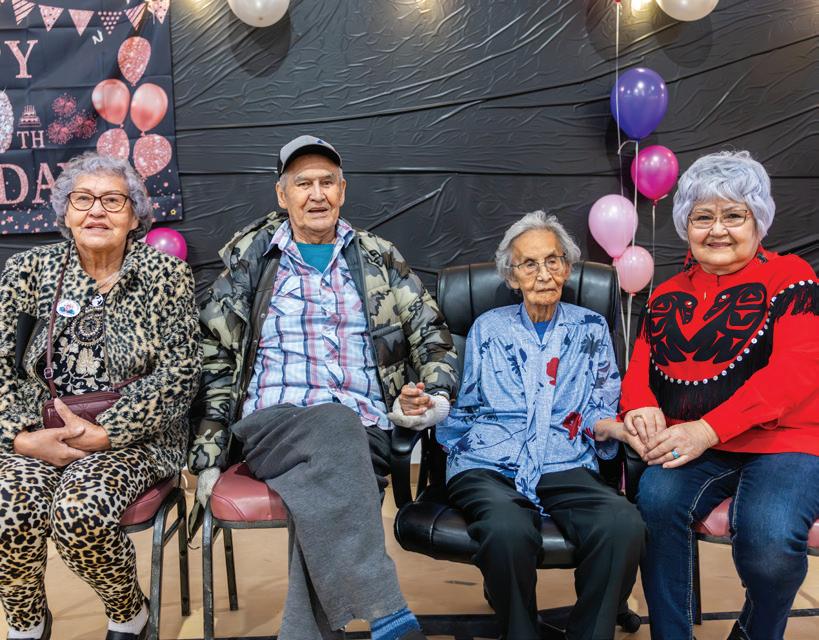

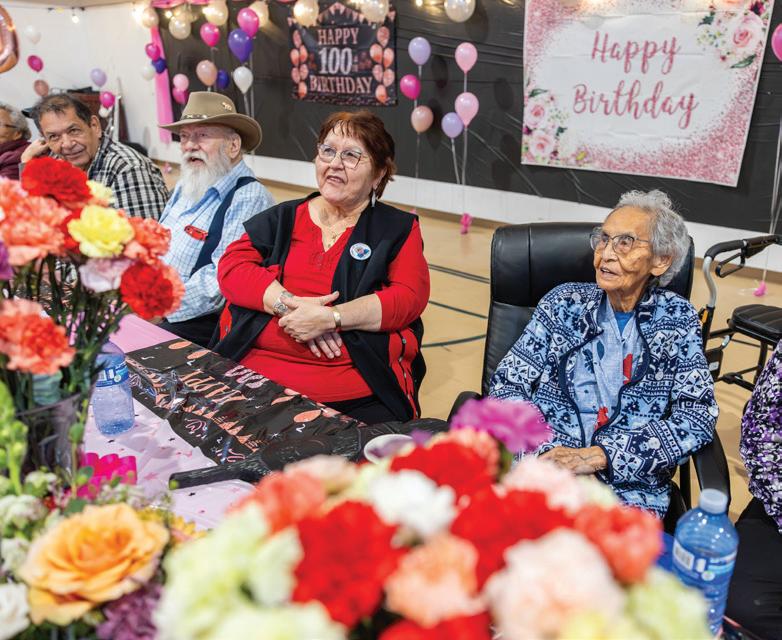

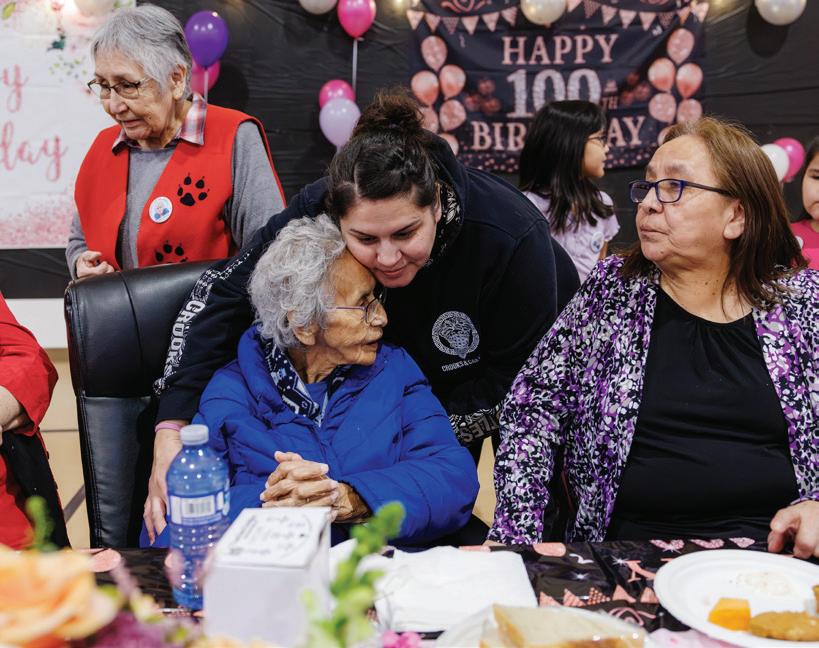

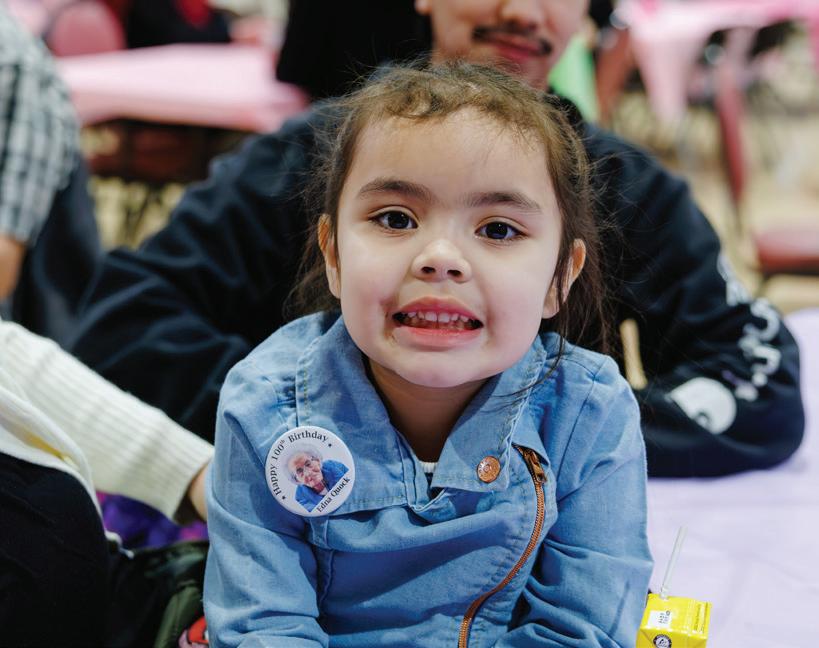




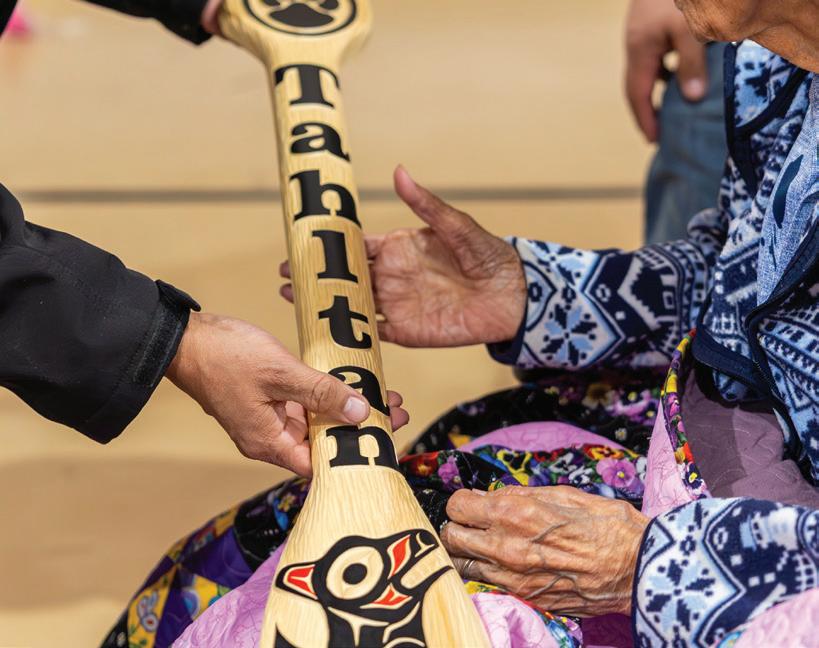
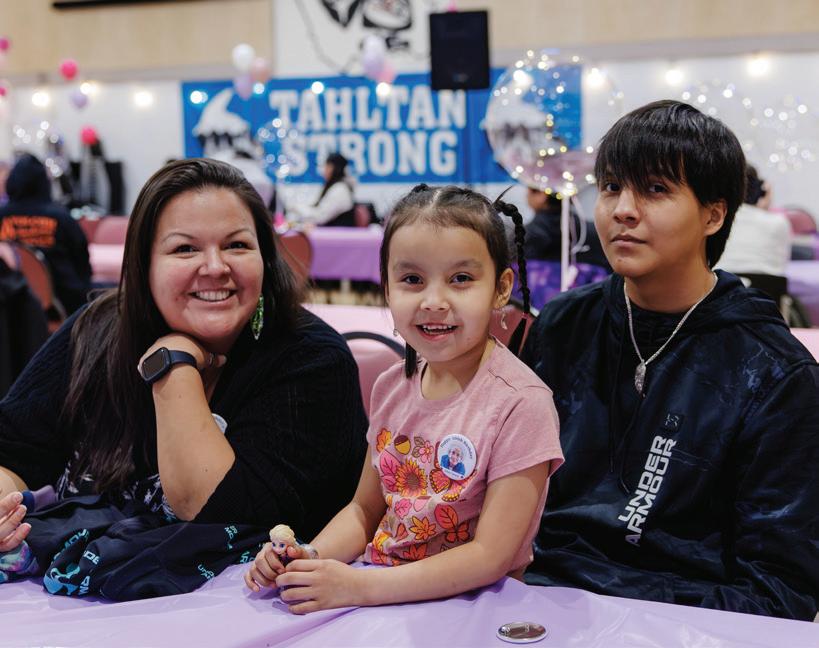

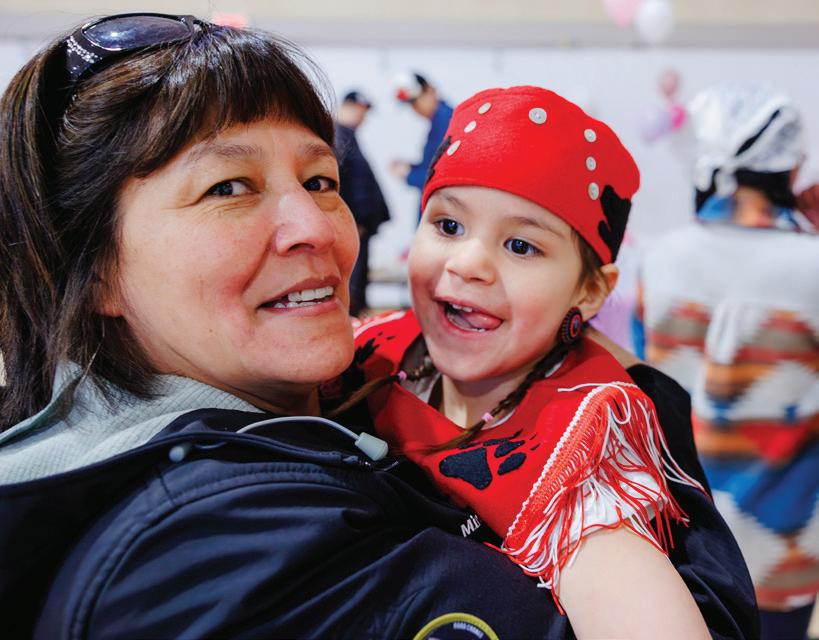
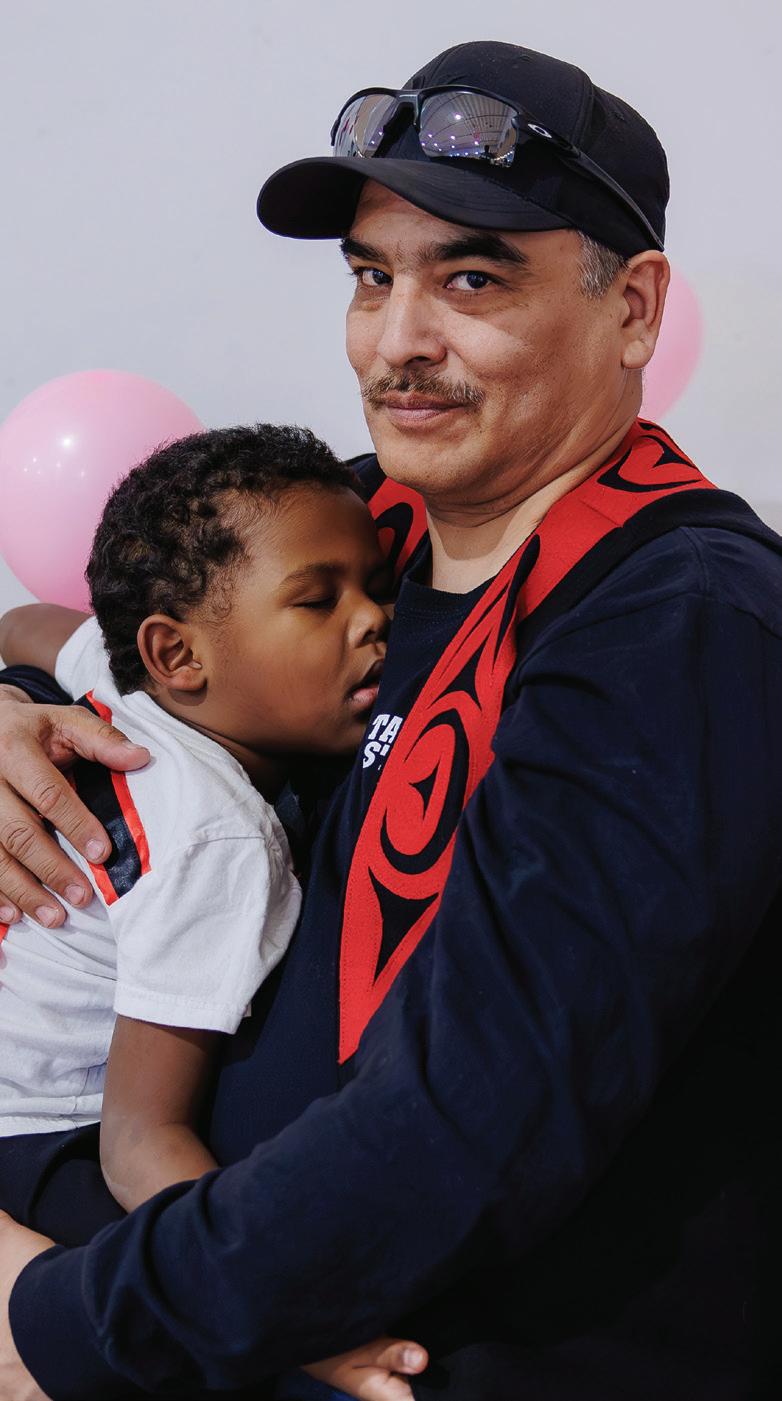

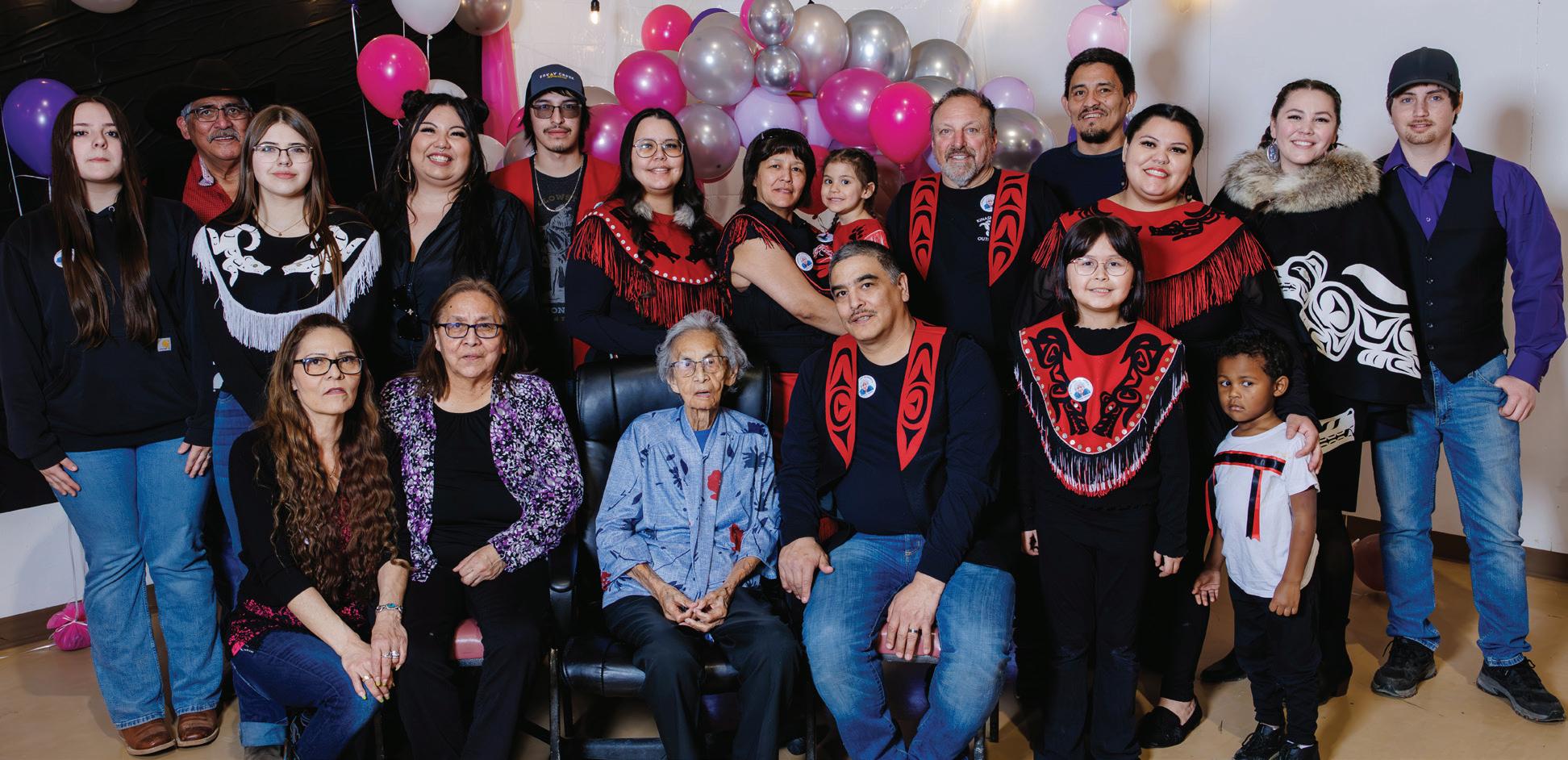
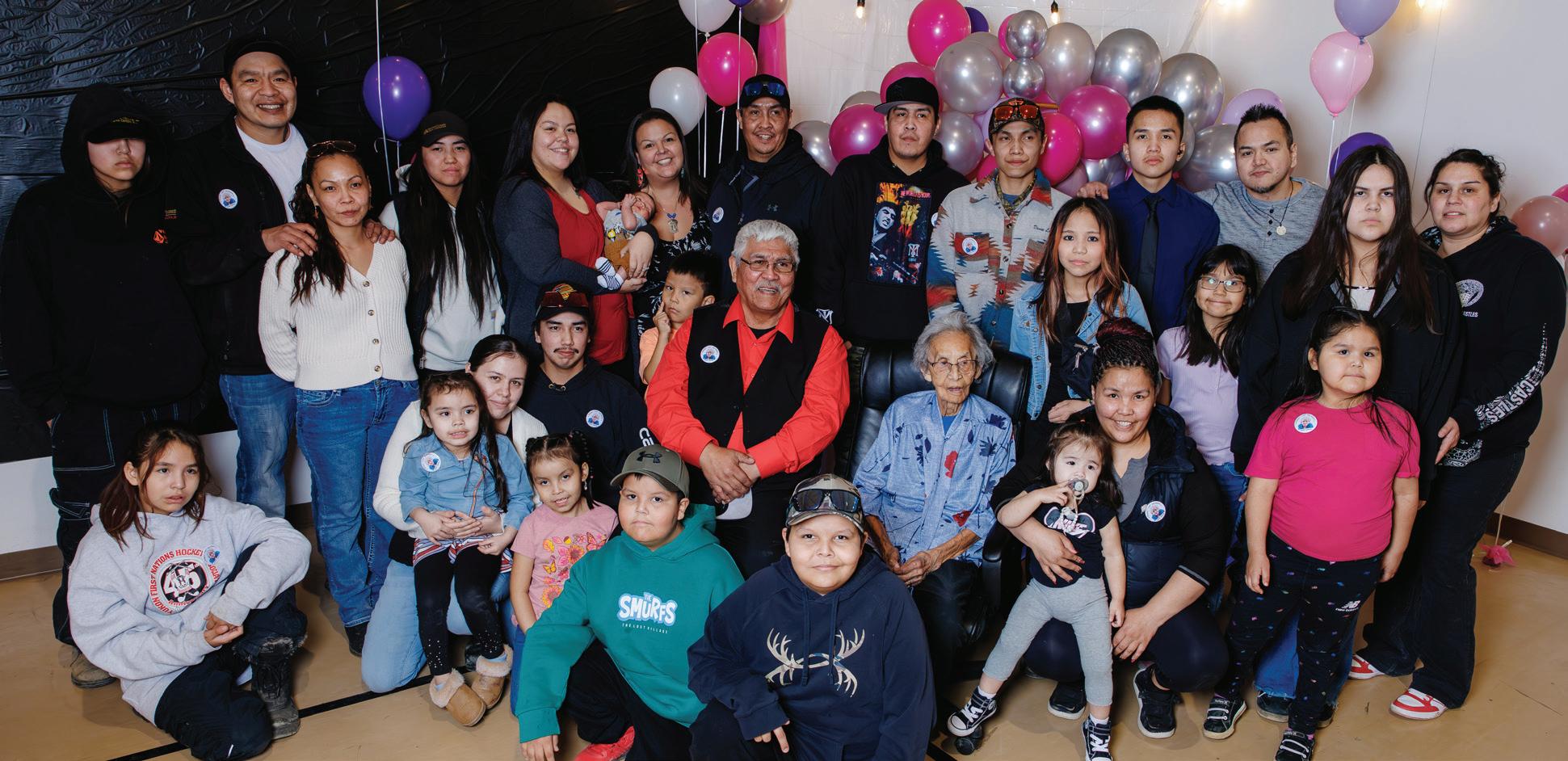

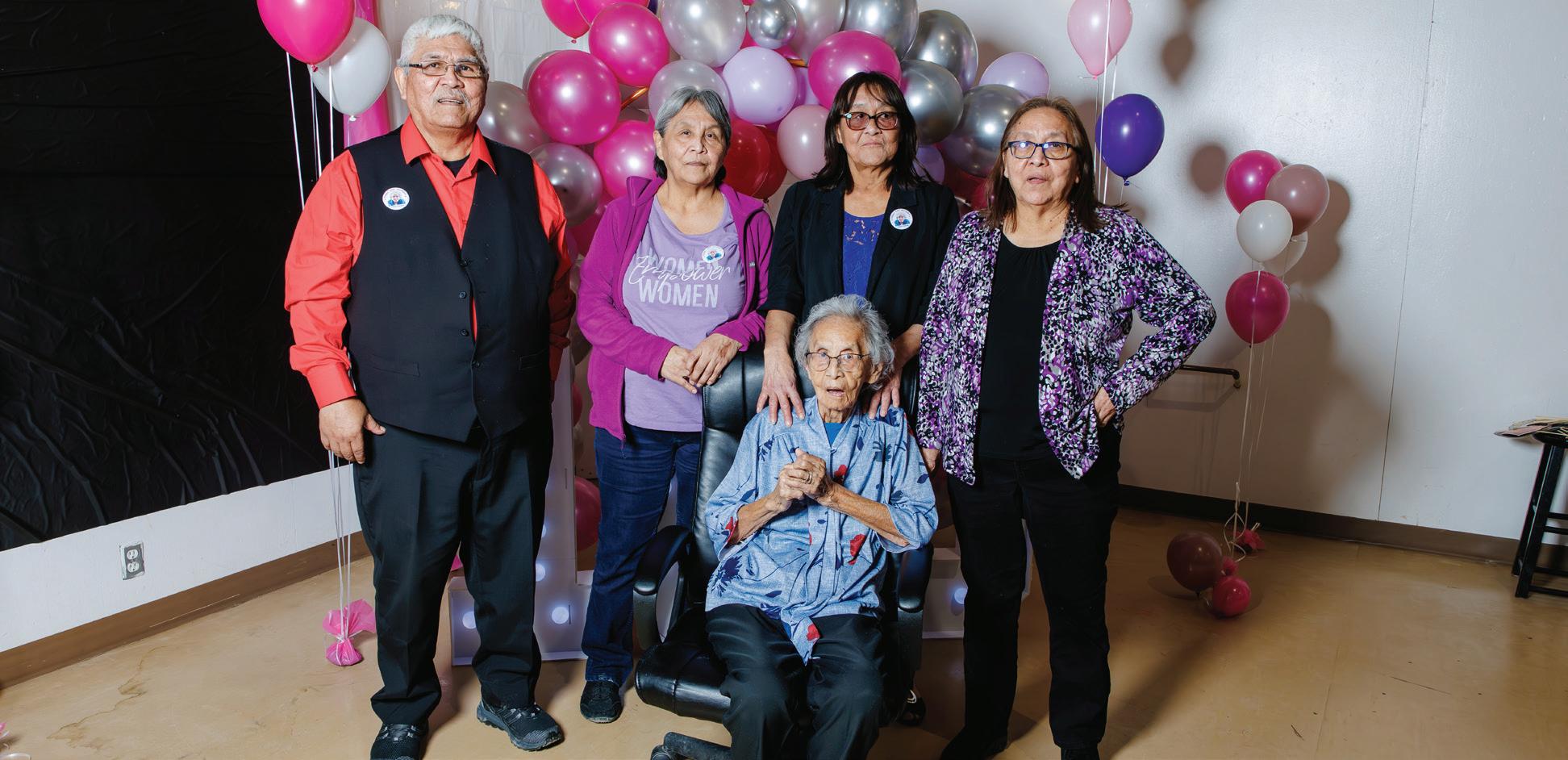
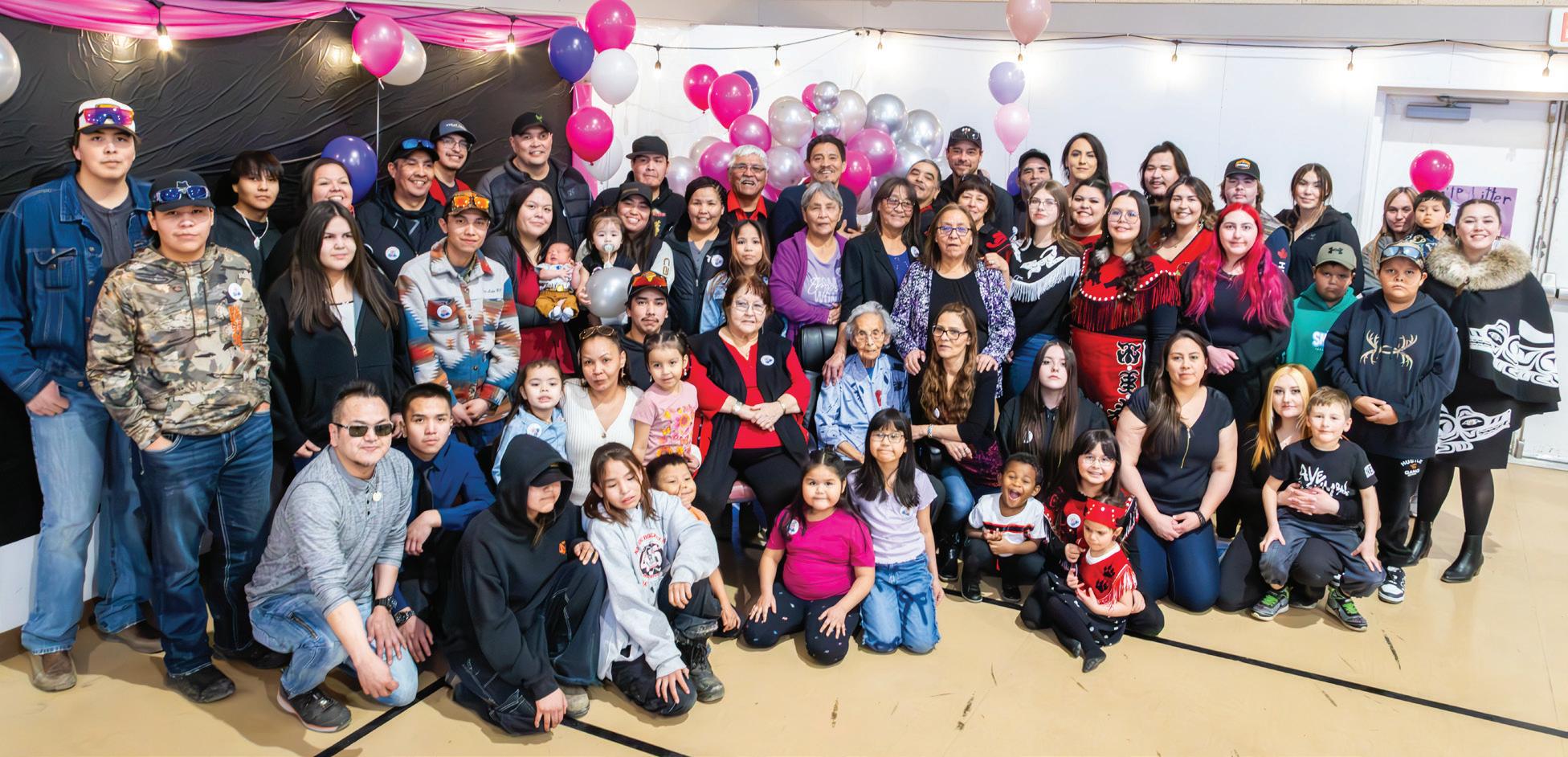
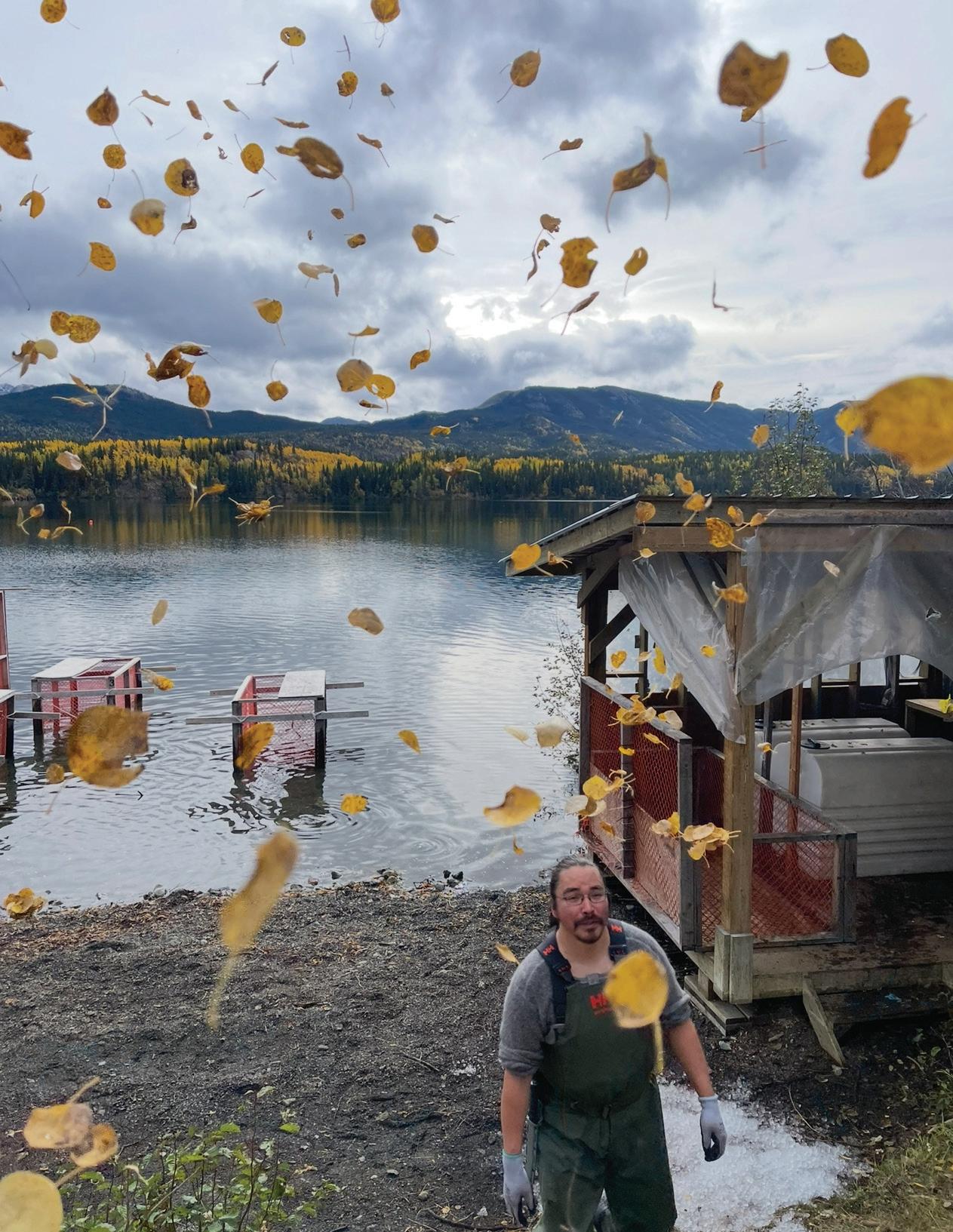

As our skilled team grows, we work together to ensure that our land, and the resources it provides us, are protected We work to nurture our people and our culture We reclaim our history and preserve our language We develop skilled workers and assure safe working practices Our job is to protect our people and our Nation, and to support our growth

Mariko Waite Acting Culture & Heritage Director
The Culture and Heritage Department is proud to share highlights of our work over the past year, including significant growth, collaborations, and capacity building. Our department continues to protect, preserve, and celebrate Tahltan culture, heritage, and history. Through initiatives in emergency preparedness, archaeological training, cross-cultural education, Elders Council support, repository development, and archives management, we have enhanced TCG’s ability to safeguard the stories, artifacts, and sacred places that are vital to the Tahltan Nation’s identity.
Guided by the knowledge of Tahltan Elders and the strength of the communities, we remain committed to ensuring that Tahltan heritage is honored and protected for future generations.
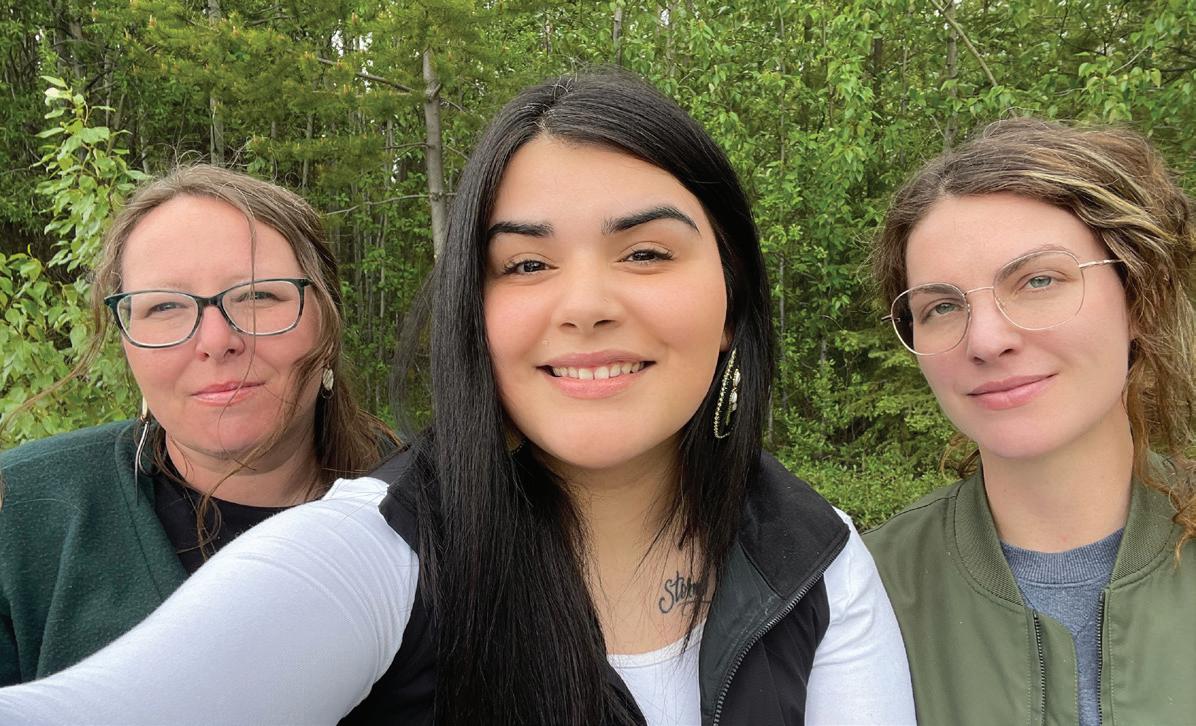
In October 2024, members of our department participated in a Heritage Emergency Response Network (HERN) training session held in Whitehorse, Yukon. This hands-on training strengthened our ability to respond to emergencies that impact cultural heritage including fire, flood, and artifact preservation challenges. We gained valuable skills in collections handling, emergency planning, and inter-agency coordination, which will support our long-term goal of developing a Tahltanspecific Heritage Emergency Plan. We successfully secured funding from Galore Creek Mining Corporation for a full HERN kit and a Sea-Can storage container, which will be used to house and protect important cultural materials and emergency response equipment. This marks a critical step in building our long-term capacity to safeguard Tahltan heritage.
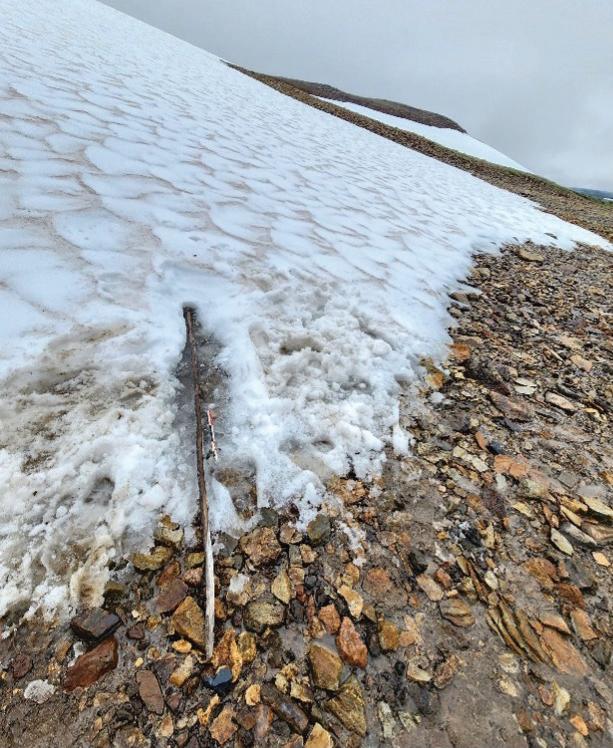
In 2024, TCG hosted its third annual Archaeological RISC training program. Officially titled Resources Information Standards Committee – Archaeological and Culturally Modified Tree Inventory Training for Crew Members, the program is coordinated by the British Columbia Association of Professional Archaeologists and delivered in partnership with Kleanza Consulting and the Galore Creek Project.
Four students participated in this year’s program, which blended classroom learning with hands-on fieldwork to build practical experience. Over the course of the training, participants developed essential skills and knowledge in:
• Identifying archaeological sites
• Conducting archaeological inventories
• Recording and documenting site information
• Analyzing and cataloguing artifacts
• Accessioning artifacts into collections and repositories
• Understanding the cultural and legal significance of archaeology in relation to Tahltan Rights and Title
• Navigating archaeological overview and impact assessment processes
• Applying site mitigation strategies
• Representing TCG in archaeological initiatives
This year also marked continued progress for the Tahltan Archaeological Monitoring Program. Trained Tahltan monitors played a vital role in overseeing archaeological work across the territory, ensuring all activities meet Tahltan Nation standards and protocols.
The 2025 Archaeological RISC training will be held at Red Chris Mine and led by Ecofor Consulting. Hosting the training on-site will allow participants to gain valuable experience working directly in Tahltan Territory while continuing to build capacity in archaeological stewardship.
By leading in heritage resource management, TCG continues to uphold and assert the Tahltan Nation’s inherent rights and responsibilities. Through collaboration with archaeologists, industry partners, and other TCG departments, we are working together to ensure that Tahltan sacred sites are not only protected but honored and respected.
There has long been a need for a training course to introduce non-Tahltans working in the territory to Tahltan culture, history and land. Tahltans still encounter racism in the workplace, and ignorance about natives in general and Tahltans specifically. Under the Impact and Benefit Agreements (IBAs), industry is required to protect Tahltan workers from such discrimination and racism, in part by providing cross-cultural sensitivity training for their employees. TCG is responsible for providing the material for this training.
Over the past two years, building on years of previous work, development, and research, we worked with the Department of Communications & Media to create a feature-length video and a comprehensive training course.
The training course is presented via a virtual tour of Tahltan Territory, using an ArcGIS Storymap. The tour stops at significant places to teach about Tahltan values and history through the land. At each stop, it tells a story connected to the place. An accompanying video shows the landscape or archival footage, illustrating the story. As we build this out further, we can add audio of Elders telling stories, narration of the text, and more.
Throughout the course, Tāłtān words are hyperlinked to the dictionary, to introduce people taking the course to the language. By the time the tour is finished, the training has provided an introductory survey of who the Tahltan are as a nation, Tahltan culture and practices prior to the arrival of Europeans, and the history of the territory from the 1860s through to the present day.
The tour format of the course was inspired by a physical tour of the Stikine Canyon given by David Rattray last summer, in which he spent a week orienting a mining exploration team before they began their work. This was a rare luxury. With the course, we hope to at least each worker to take a half-day to orient themselves to Tahltan before they begin their work in the Territory.
How the course content came to be
This course is the end result of a long process, involving numerous people.
The content of the various “stops” in the tour comes from a variety of sources. We drew on the school course material developed by Louise Framst; years of discussions and interviews we’ve had with members (on all sorts of projects); historical and ethnographic research; many hours spent drafting land use studies; videos, presentations, booklets and documents held in the Tahltan Archives; and all sorts of content collected across a series of TCG projects.
The course is now under review with the Elders Council and leadership. After that, we’ll share it with membership for edit and review too.
We hope to add more historic Tahltan characters. If you know of particular people, events, and anecdotes important to our history, please get in touch. Especially if these stories are unfamiliar or unrecorded!
We hope to share individual (as well as communal) narratives, and to individuate the Tahltan story, telling the story of particular people as well as of a people. Too often, we have the names and details of nonTahltans in recorded histories, but not of their Tahltan counterparts.
Down the road, we hope to develop the training course further. Part of this development will involve adding additional videos, photos and audio clips throughout the tour. We also aim to make an advanced course for Tahltans wanting to learn more about their culture and history. And to turn that course, and this one, into books for the schools.
Scan the QR code below to visit our website and request a demo of the Storymap:
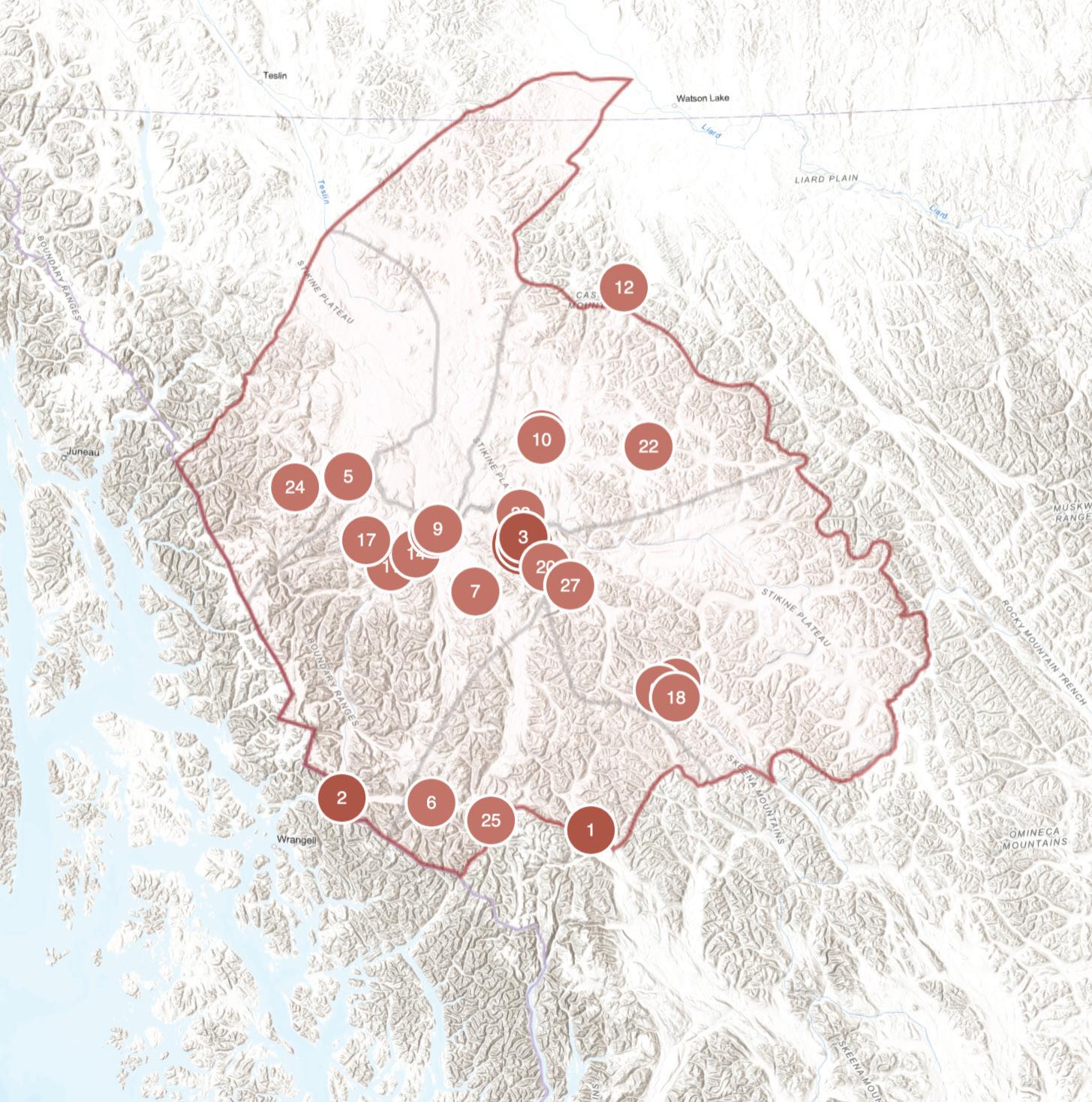
of the stops on the cross-cultural training course virtual tour

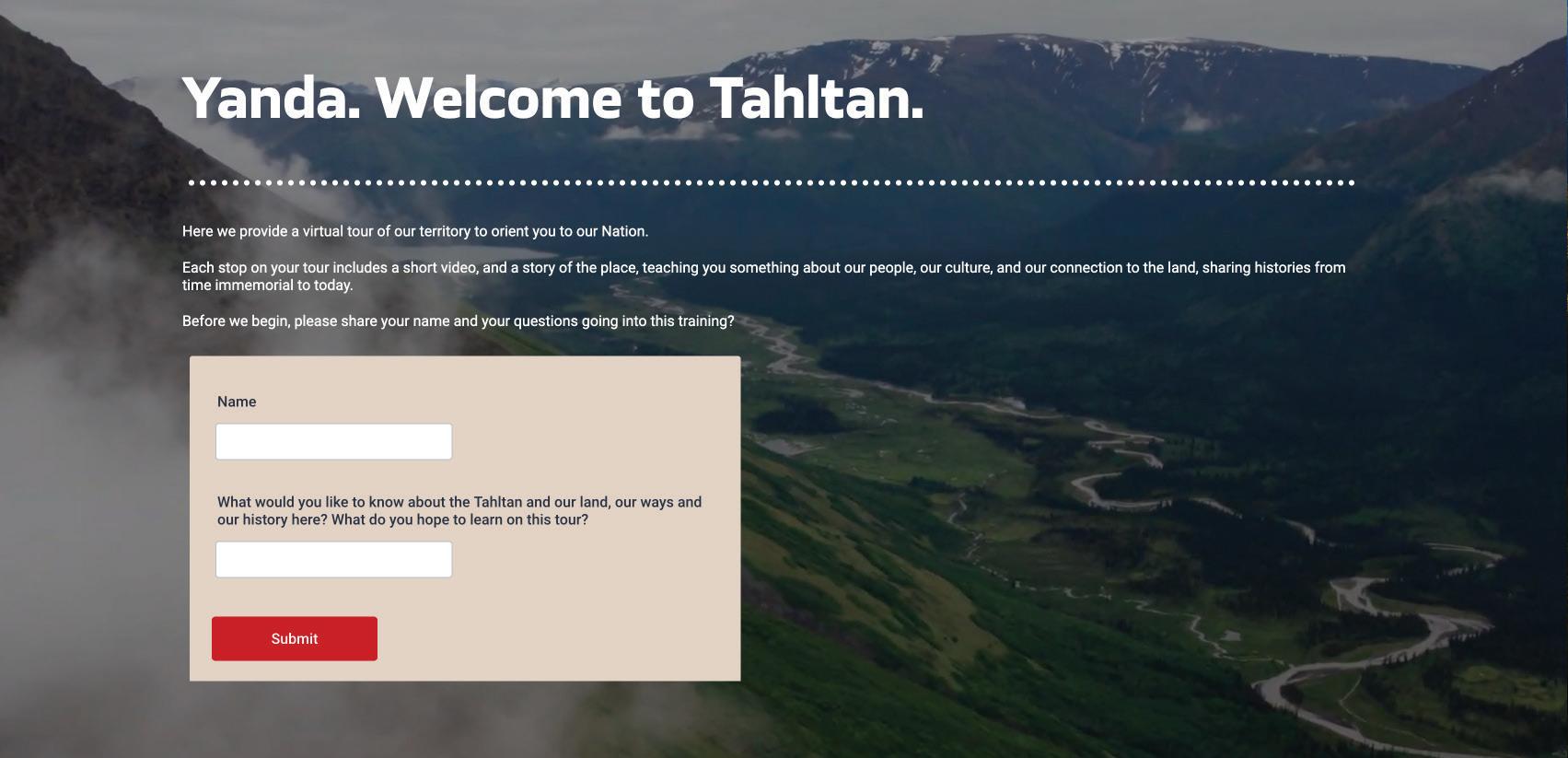
Yāndā. Welcome.
You are on Tahltan land.
This is our home. Our keyeh. We have been living here for thousands of years.
When you come and work on our land, you’re our guest.
We have always welcomed guests, and we continue to do so. But we have rules that we expect guests to honour when they are on our land.
We expect you to treat our land with respect.
We expect you to treat our people with respect. In the workplace, and in our communities. Racism and discrimination will not be tolerated. Sexual harassment will not be tolerated.
Our culture dates back from long before your time. This course will introduce you to aspects of our culture and history. We hope that by learning a little about the land and its history, you will come to appreciate and respect our home. And that you will respect us by taking the time to learn a little bit about who we are.
If we are to work well together, there are things you need to know about us. For instance, that when we talk of the importance of family, we mean more than mother and father, brothers and sisters. We mean uncles and aunts, cousins and second cousins, grandparents and great-grandparents. All these people are “immediate” family to us.
If someone dies, we must go to the funeral. Even if we are working. This is not optional. It is not a choice. It is our culture. This is just one example.
Respect our culture while you are on our land.
And understand that the core of our culture is our connection with the land. Not any land, but this land, this place. And by land we mean the rivers and mountains, the meadows and forests, the moose and the salmon, the eagles and the ravens. And also the men, women and children who live here. We are all kin and part of the same community.
Treat this community with respect.
That is the most important rule.


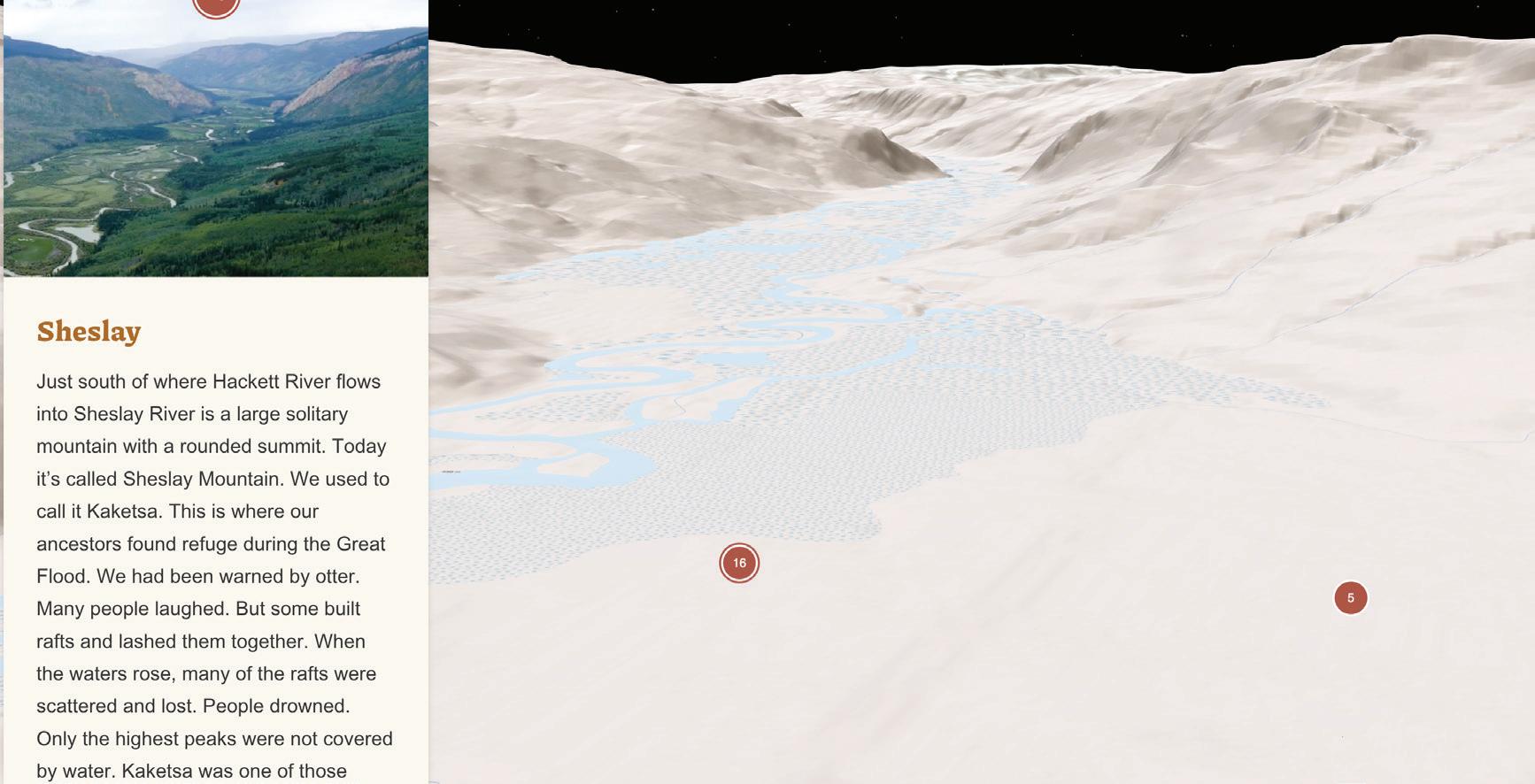
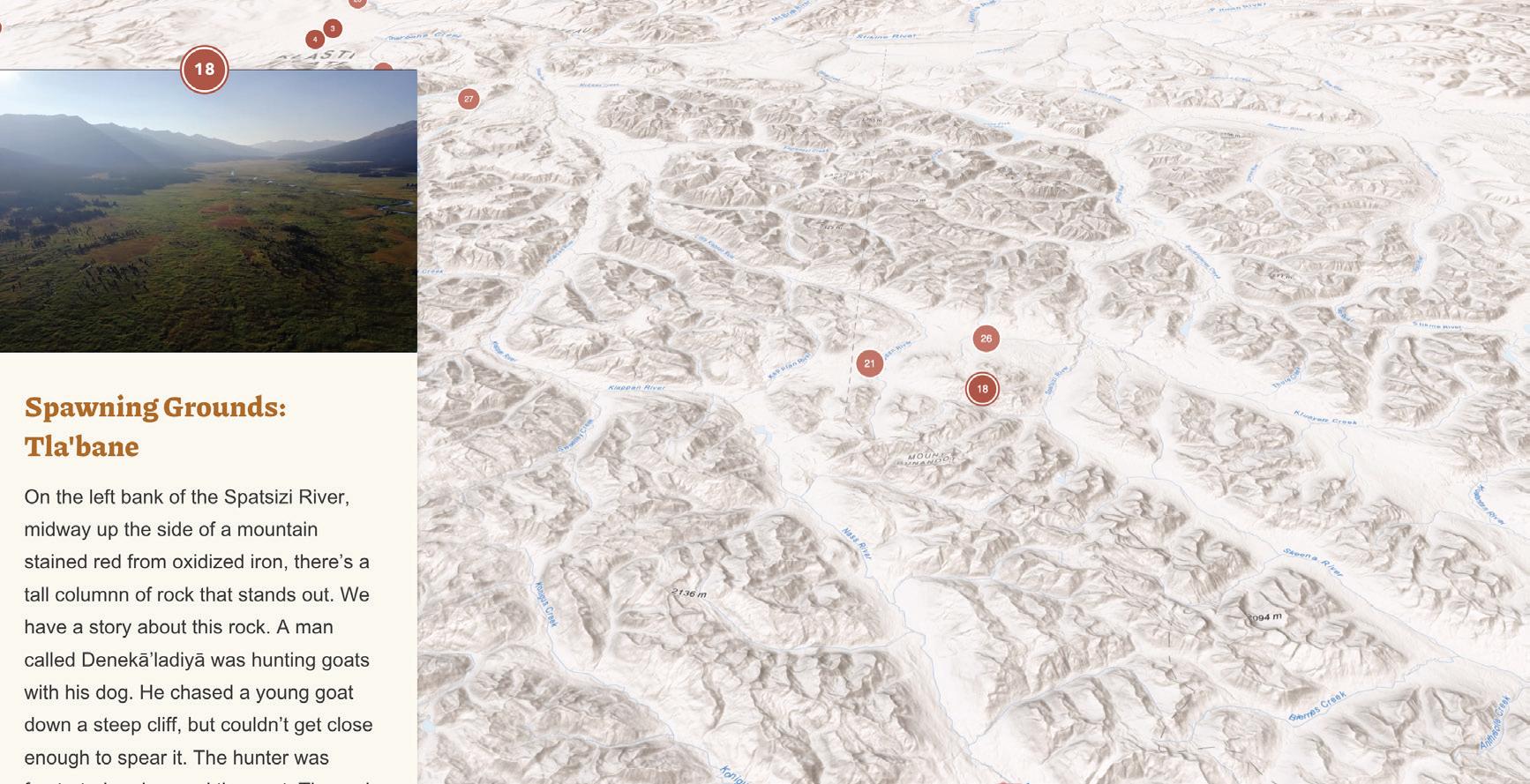
This year, the Culture and Heritage Department was proud to support the Fisheries Department’s Fish Welcoming Ceremony by providing artist Shannon Dennis with obsidian from Mount Edziza, collected during a recent ice patch archaeology trip. Shannon will use the traditional stone to craft the blade for cutting the first fish, honoring ancestral practices and deepening the cultural significance of the ceremony.
The use of Edziza obsidian reflects a meaningful connection to the land, the traditions of Tahltan ancestors, and the importance of sustaining these teachings for future generations. We are honored to play a role in keeping this important tradition alive and strong.
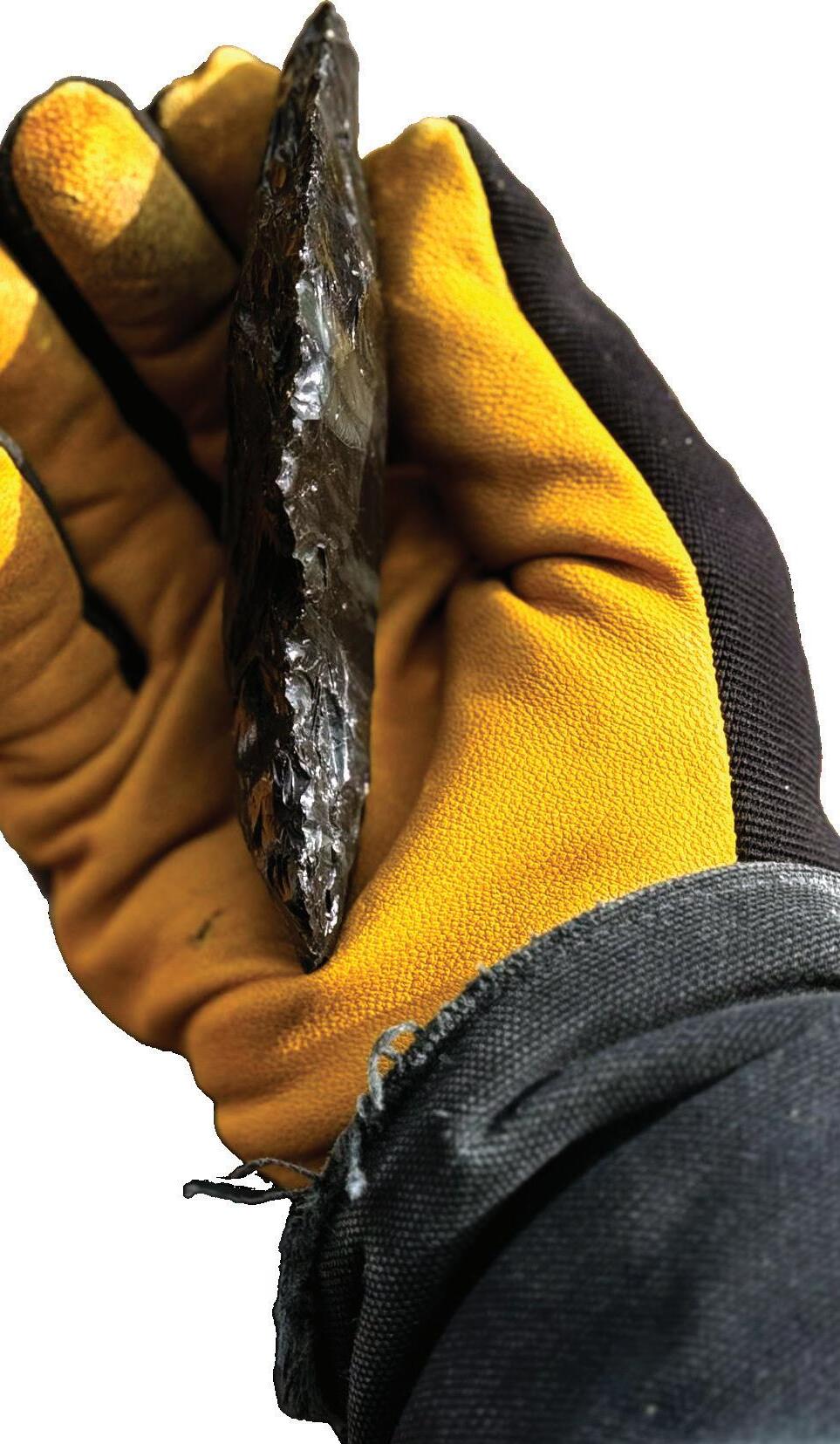

Field operations were conducted in late July 2024, supported by TCG Culture & Heritage, TCG Lands & Regulatory Affairs, and BC Parks. This research follows on the heels of preliminary field work conducted in 2019.
The field crew consisted of archaeologists Duncan McLaren and Brendan Gray of Cordillera Archaeology Inc., and Dennis Quock and Kenzie Dennis representing the Tahltan Nation for TCG.
Access to the Kitsu Plateau was gained via Tundra Helicopters with pilot Sean Whitford. A field camp was established, and most areas were accessed on foot from the base camp. On the final day, we conducted helicopter assisted survey to ice patches situated near Artifact Ridge and Obsidian Ridge.
We managed to revisit several ice patches over the five days of field work. Three new ice patch archaeology sites were recorded, and freshly melted perishable artifacts were noted at sites initially recorded in 2019.
In addition to millions of obsidian flakes and cores, perishable materials found to have melted out of the ice patches included Tes (walking staffs), K’i tudze (birch bark basket) fragments, and objects made from animal bone, antler and skin. The biggest highlight in the 2024 season was the discovery of a wooden atlatl dart shaft with fletching still attached to it.
This is a piece of ancient hunting equipment that is the shaft of a spear that was thrown with an atlatl board or throwing board. While archaeologists often find projectile point tips made of stone, they rarely find the wooden shafts on to which these points were fixed as the wood tends to decay.
As our research continues to demonstrate organic artifacts have been preserved for thousands of years in the ice patches of the Kitsu Plateau.
We are still awaiting radiocarbon date results for our work in 2024. By comparison, materials found in 2019 were dated to various ages over the last seven thousand years.
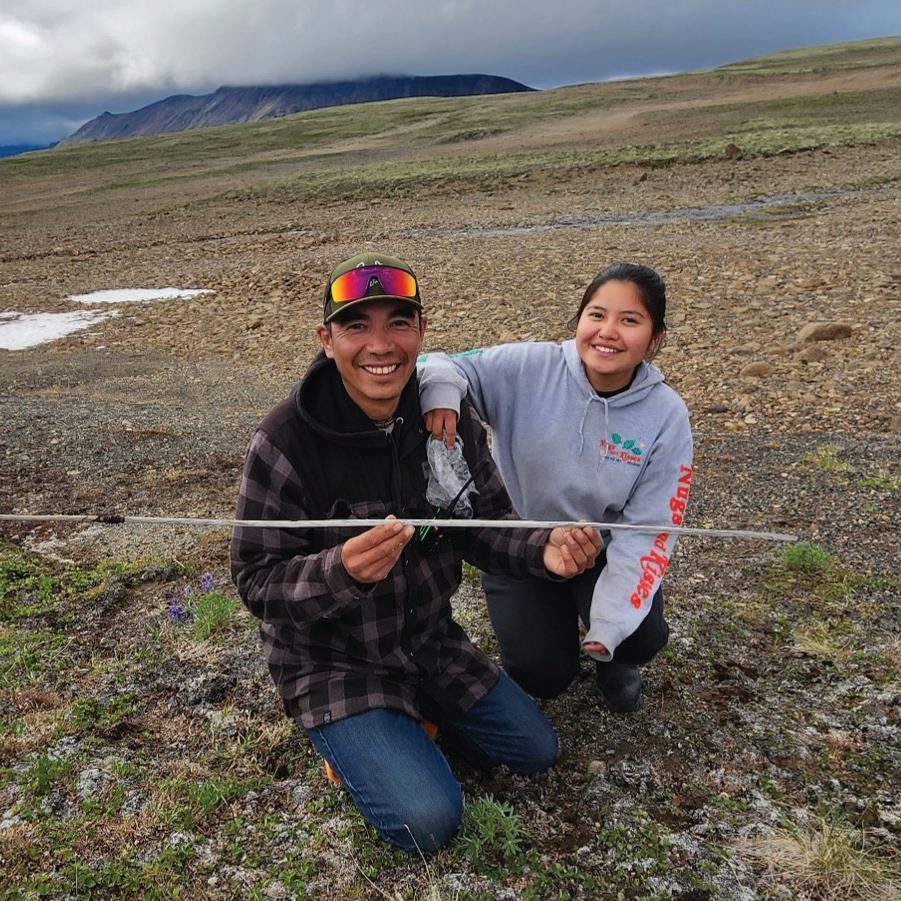
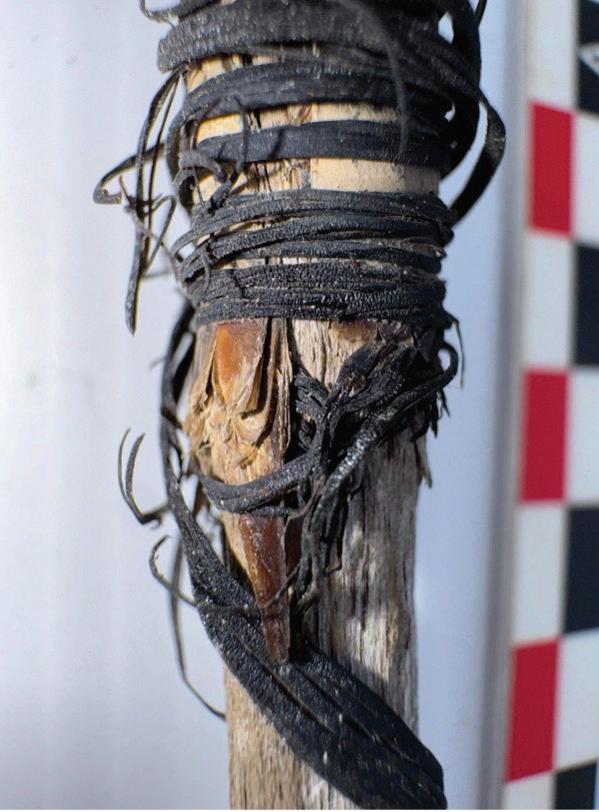
The Culture and Heritage Department provides extensive administrative support for the Tahltan Elders Council, ensuring consistent communication, meeting coordination, and record-keeping. This support is a foundational step in strengthening the Elders’ voice within TCG decisionmaking and in cultural planning.
The Culture and Heritage Department manages the Tahltan Nation’s sole repository. An archaeology repository is a facility that stores and curates’ artifacts and documentation from archaeological excavations. In its third year of operation, the repository is slowly growing in capacity and artifacts.
In the 2024-2025 fiscal, we approved 11 requests from consulting archaeologists to use TCG Archives and Repository for depositing archaeological materials recovered from Tahltan Territory through their permitted work.
The Culture and Heritage Department was awarded a $40,000 grant from the Museums Assistance Program to run a 3-part workshop series and build capacity in repository and museum best practices for Tahltan culture and heritage practitioners.
The repository has had ongoing support from archaeologists Brendan Gray, Duncan McLaren, and Angela Dyck, and others at Cordillera Archaeology. As they continue to work collaboratively with the Tahltan Nation on archaeology projects, the repository continues to receive artifacts from their work. From ice patch archaeology on Mt. Edziza, a collaboration with Obsidian Discoveries Tahltan Tene Mehodihi Youth Group Hike and the “Our Ancestors’ Trail” museum exhibition, the repository received an atlatl and walking staff, as well as a range of obsidian artifacts.
The Culture and Heritage Department is also working with BC Parks to build procedures and develop signage for chance finds recovered or identified in Tahltan Territory.

Chance finds are artifacts found outside of permitted archaeology, such as by someone hiking a trail in a park or hunting in the backcountry. Through signage, we are directing non-Tahltans in parks and other areas in Tahltan territory to either leave Tahltan objects in place or to bring them to the repository, rather than treating them as keepsakes.
Last year, the Culture and Heritage Department significantly advanced archival work through the leadership of Archivist Ursula Abramczyk and the support of Archives Assistant Kailene Louie and new team member, Raina Feldman, a longtime Fisheries contractor. Together the remaining 123 boxes in the Legacy Collection were processed at a record group level and over 2,000 maps and 39 Bankers Boxes of records and materials were deaccessioned (appraised for removal). Inventories were built out for claims and treaty records, the George Asp collection, and the Tahltan oral history collection.
We accessioned seven deposits, including the Tahltan Heritage Recovery Project (THRP) 1980-1982 and select records from Harlan Inkster’s private collection. We will be sharing these materials at the 2025 AGA this year — so come check out our booth!
The THRP was coordinated by John Frank and Sylvia Albright. The purpose was to support Tahltan youth in documenting the stories and histories of their grandparents. Albright donated all the research materials from the project to the archives, including 1,200+ photographs of Tahltan people in the 1980s at Metsantan, Caribou Hide, Sheslay, Edziza, Telegraph Creek, Dease Lake, and Iskut, and more than 50 audio recordings with local Tahltan celebrities, including Eva Callbreath, Benny Frank, Emma Brown, Felix Jackson, and others.
Tahltan member Harlan Inkster, one of the archives’ first donors, donated four irreplaceable and original Tahltan trapline volumes, evidence of Tahltan Title area. Inskter loaned a collection of historic photographs at Telegraph Creek from the late Bill McPhee, select literary resources such as “Cassiar” by Conway Turton and “Listen… Tahltan People are Talking” by Vera Asp et al., as well as three maps published in 1898 by the Geological Survey of Canada of the Yukon and Northern British Columbia, based on early surveyor George M. Dawson’s interpretation of the area.
The archives accept donations and loans. A donation is an item or collection of items and associated intellectual property rights permanently gifted to the Tahltan archives. A loan is a temporary deposit to the archives, where the archives retain a duplicate copy for a defined purpose while the depositor retains the originals and associated intellectual property rights. Our collections policy is broad — any analogue or digital material focused on Tahltan people and territory, history, language, etc. is of interest to the archives.
If you have a personal archives collection and you would like support in preserving it for the long term, without any obligation to enter into a donation or loan agreement, please book an appointment with Ursula (archivist@tahltan.org).
The archives have a wide range of materials and records from different sources. Access is open to duplicate copies of materials that are already in the public domain, such as trapline, Stikine Agency, missionary, historical, anthropological, and archaeological records. Original records such as Tahltan oral histories, songs, stories, etc. must be shared responsibly and respectfully, meaning with consideration of community and family rights. Access to original records is restricted until an access policy is developed and ratified by vote by TCG and Iskut and Tahltan Band Councils. An access policy guides decision-making on who can access what from the Tahltan archives collection. In order to develop policy that balances Tahltans’ right to access Tahltan heritage with the need to protect evidence and advance the interests of the Tahltan Nation, meaningful engagement with community and direction and support from leadership is required. Please stay tuned for opportunities to participate in this process!

Here are just a few of the 1200+ archival photographs donated by Sylvia Albright from her work on the Tahltan Heritage Recovery Project.
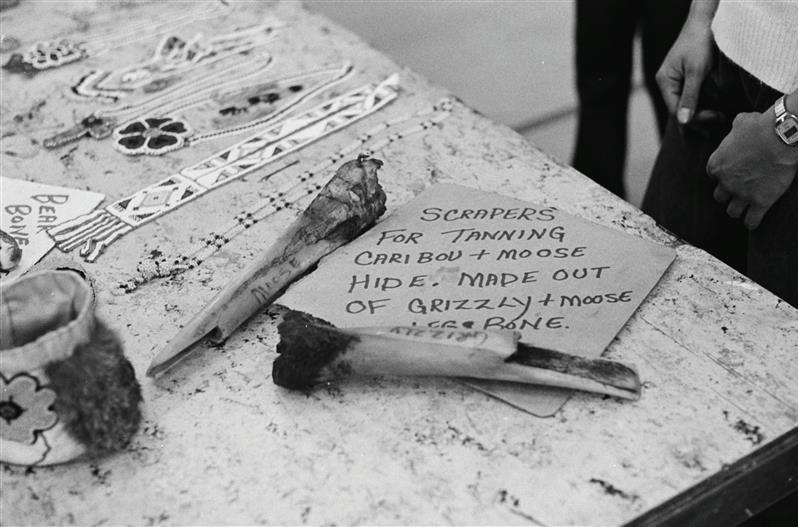
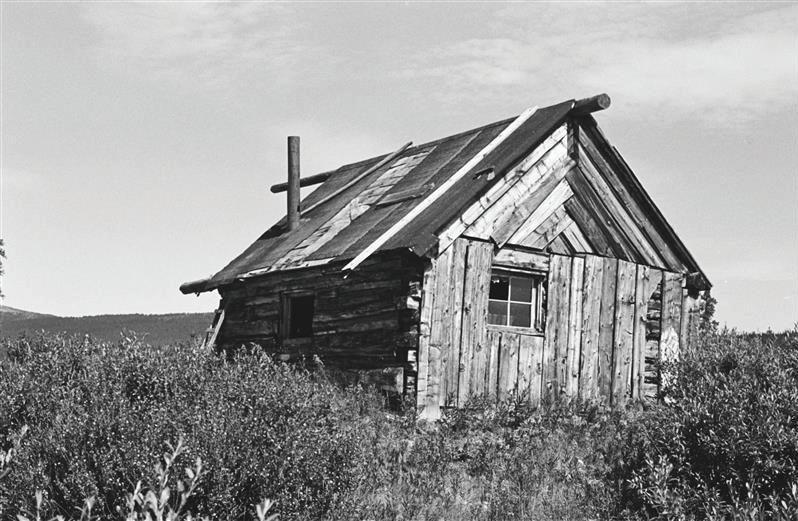
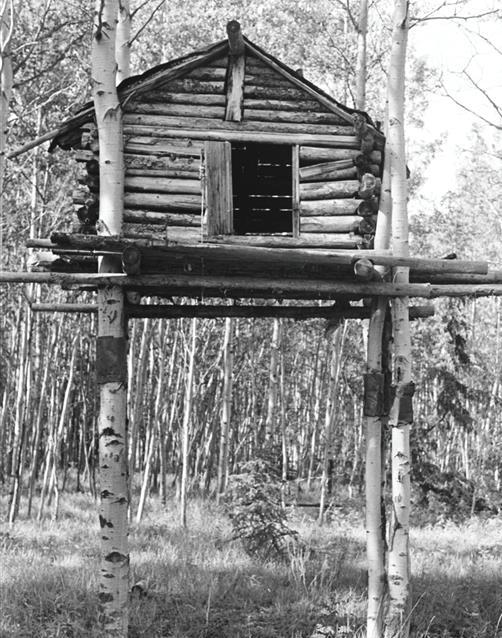



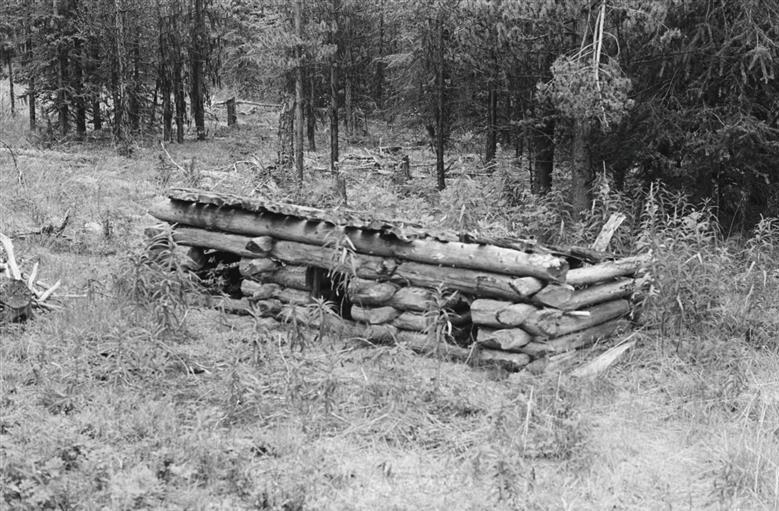
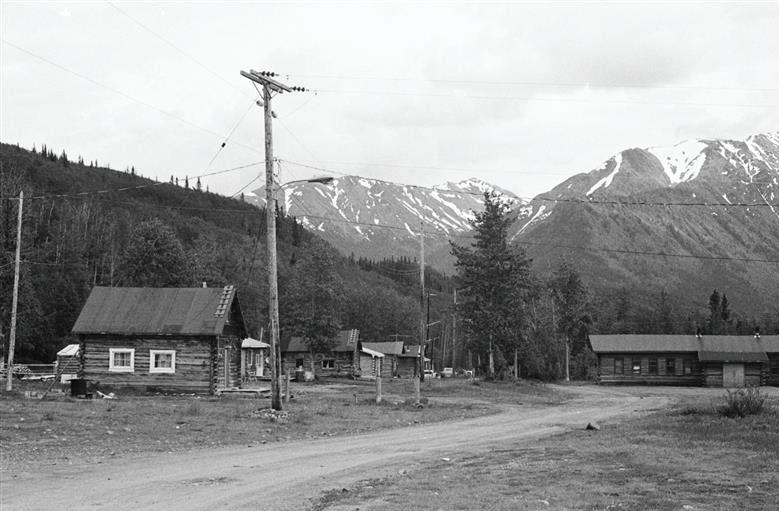


DEPARTMENT MESSAGE
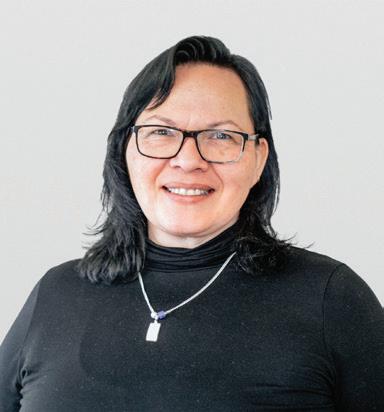
Hello Everyone,
I am so happy to fill you in on my activities over the last year! I had the opportunity to organize many community gatherings and activities that brought us all together for fun and learning. We had events both indoor and outdoors and for all ages.
I applied for many grants last year and continue to apply as they come available. These funds are applied directly to my programs and activities that I bring for the betterment of the community of Dease Lake. Here I’ll highlight the successful grant applications and what they provided for the community. Some of these activities have been completed. Others are in planning stages and set to be completed in the coming months. The total amount for the grants I secured is $102,609.
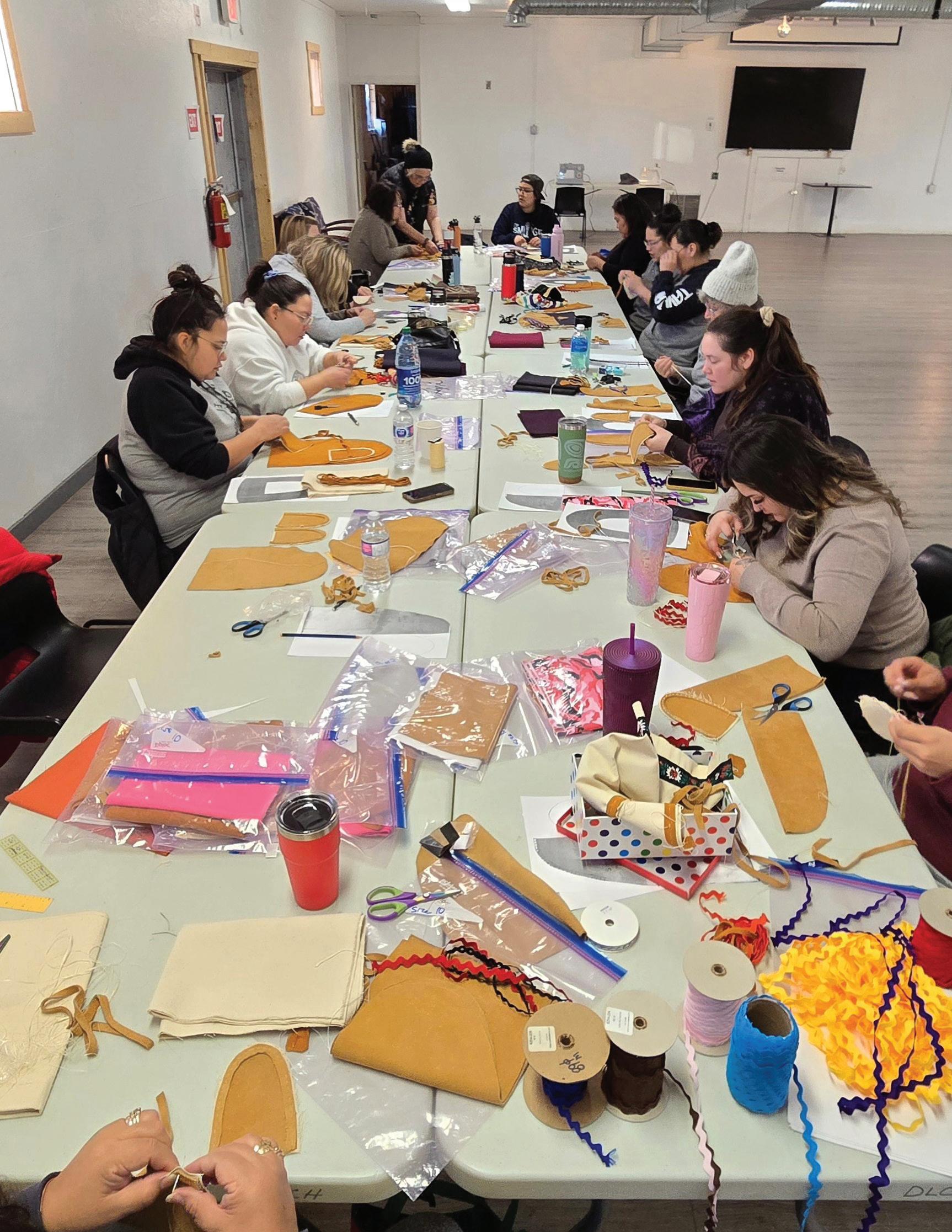
BC Parks Family Day Grant
Indigenous Sport, Physical, Activity & Recreation Council (ISPARC)
$800
Family Sliding Day Party
$23,300
First Nations Health Authority (FNHA) $3200
Northern Health
Northern Health
Tahltan Cultural Program
• Tahltan traditional medicines
• Moosehide slippers
• Shawls and vests
Aboriginal Day Activities
$4600 Cooking classes with Youth
• Canvas top mukluks
• Parka making
• Tahltan language walks
14 weekly classes covering frying, baking, steaming, and boiling a variety of dishes and meals.
$5750 Fall prevention and healthy aging items for Dease Lake Elders
• Grip socks
• Reachers
• Movable shower handles
• Grip stickers for bathtubs
• Shower chairs
• Ice cleats
• Cane picks
• Non-slip mats
ISPARC
ISPARC
FPCC
FNHA
$8000
Dease Lake Garden Boxes
Elder Plant Knowledge Gathering
$18,000 Tahltan Water Program
• 8 Kayaks
• 4 paddleboards
• Lifejackets (multiple sizes) and swim vests
$33,000 Art Strengthening
• Ribbon skirts
• Baby slippers
• Youth tunics
Winter Wellness Ride & Slide
• Extra paddles
• Floaties
• Lifeguard chair
• Women yokes
• Canvas top mukluks
• Aprons
• Octopus bags
• Beaded earrings
• Hide vests
$320
Farm2School
• Skidoo ride
• Sliding party
$1000 Plants and equipment for school community garden
OTHER ACTIVITIES I HAVE DONE OVER THE LAST YEAR INCLUDE:
• Elder lunches
• Tufted Earrings
• Taking Elders to the Health Fair in Telegraph Creek
• Guitar lessons with Elliott Brown
• International Women’s Day Luncheon with Jodi McKen
-Thank you to Cheri Frocklage for giving a wonderful speech!
• Easter party and movie
• Tahltan headbands
• Ribbon skirts
• Hanging flower baskets for the community
• National Indigenous People’s Day luncheon with People’s Haven
• Pride Day BBQ with Jenn Wonder and Terri Brown
• Traditional medicine picking and making medicines with Vivian Lindstrom and Fannie Lindstrom
• Peach canning
• Fall photos with Pregnancy Outreach
• Youth cooking classes
• Baby slippers with Pregnancy Outreach
• Tahltan Day activities: Bingo/potluck dinner / music jam
• Halloween painting
• Halloween bonfire and costume contest with Dease Lake Rec
• Ladies Christmas Tea with Jodi McKen
• Tahltan dancing with Hayle Gallup
• Moose hide slippers with Penny Louie
• Canvas top mukluks with Penny Louie
• Melton vests and shawls with Una Ann Moyer
I always welcome ideas for activities for Dease Lake and always try to bring them to our community.
Please feel free to let me know what you would like to see and do. I can be contacted by my email deaselakedirector@tahltan.org or my work number 250-771-3087.
Sending a huge Thank You! to all my partners and helpers throughout the year! Events are so much more amazing with your help, knowledge, and support. I would like to express my appreciation to all my community collaborators, Tahltan Band and People’s Haven, Kim Rowe and Jodi McKen, Penny Louie, Una Ann Moyer, SD#87, Pregnancy Outreach, Lavonne Lindstrom, Super A, and Bandstra.
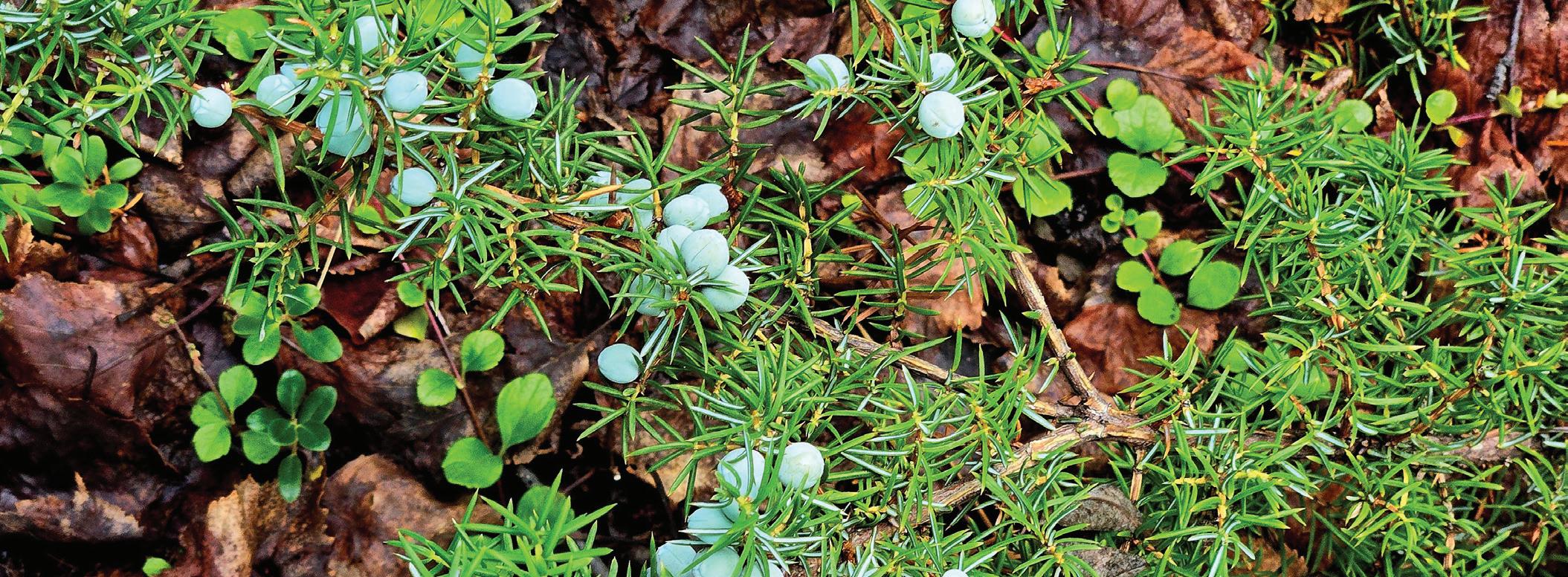

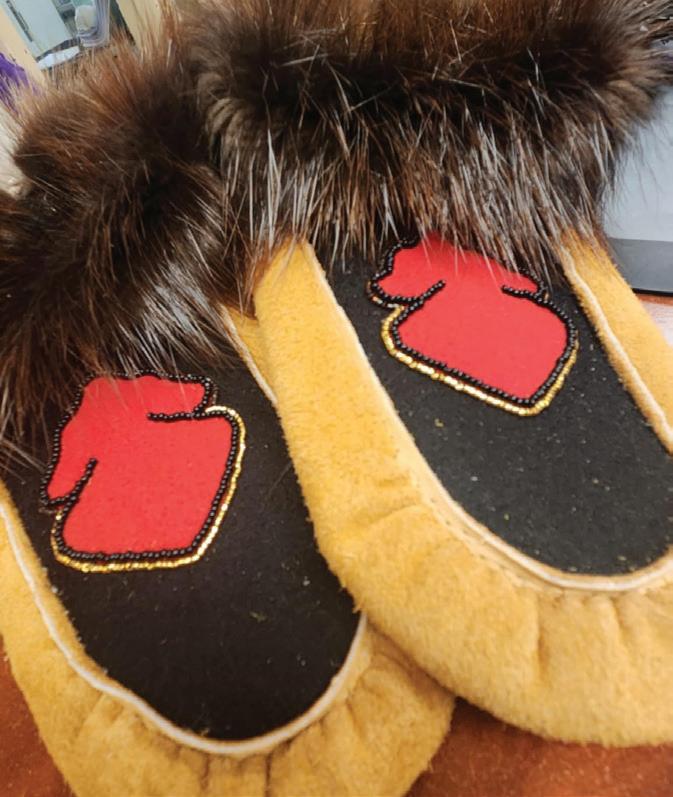
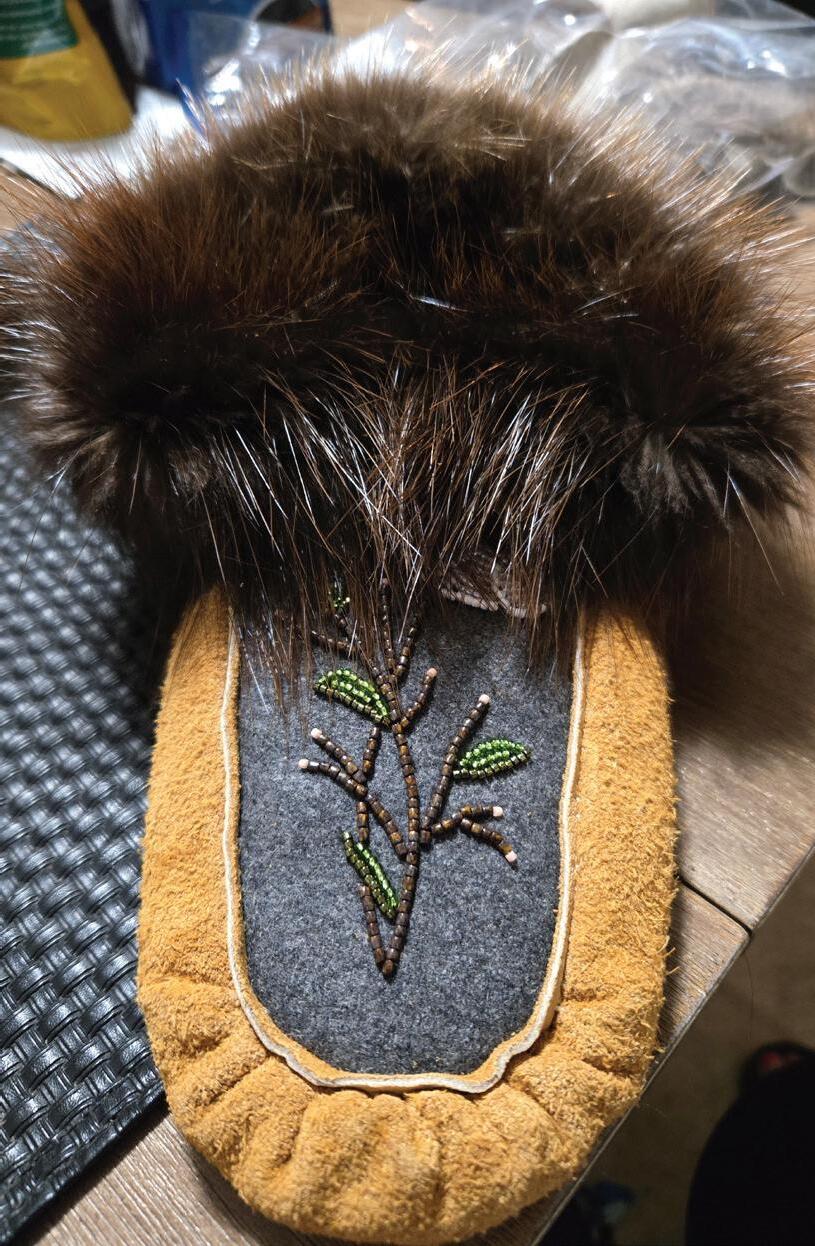
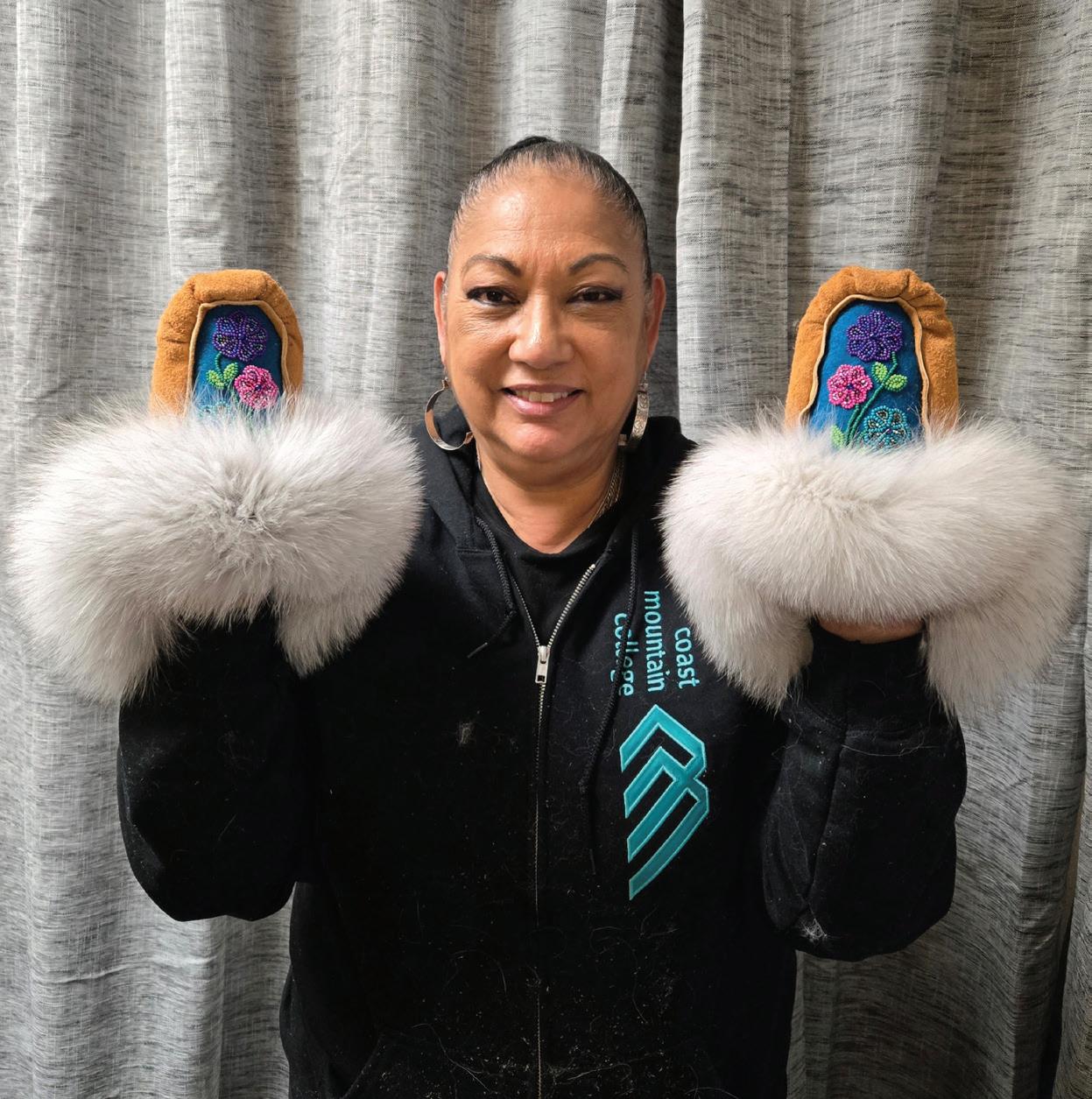

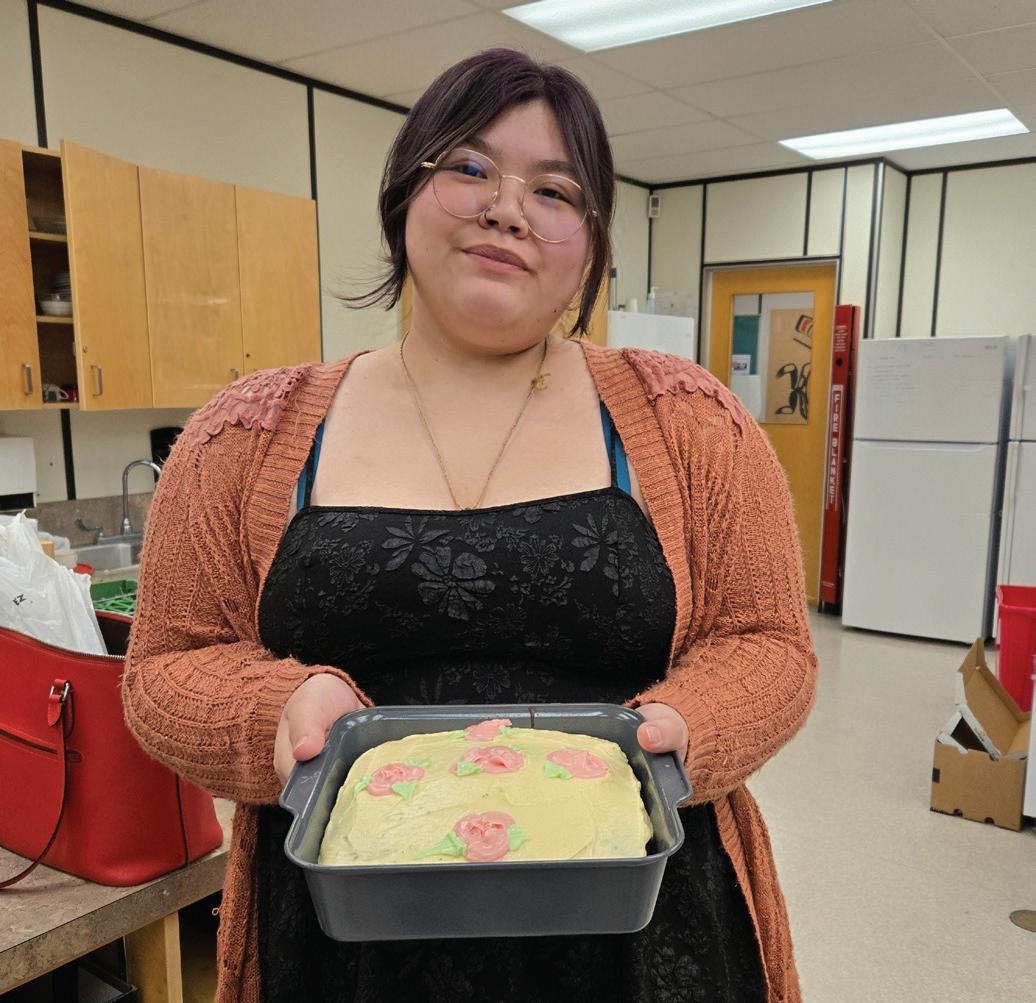

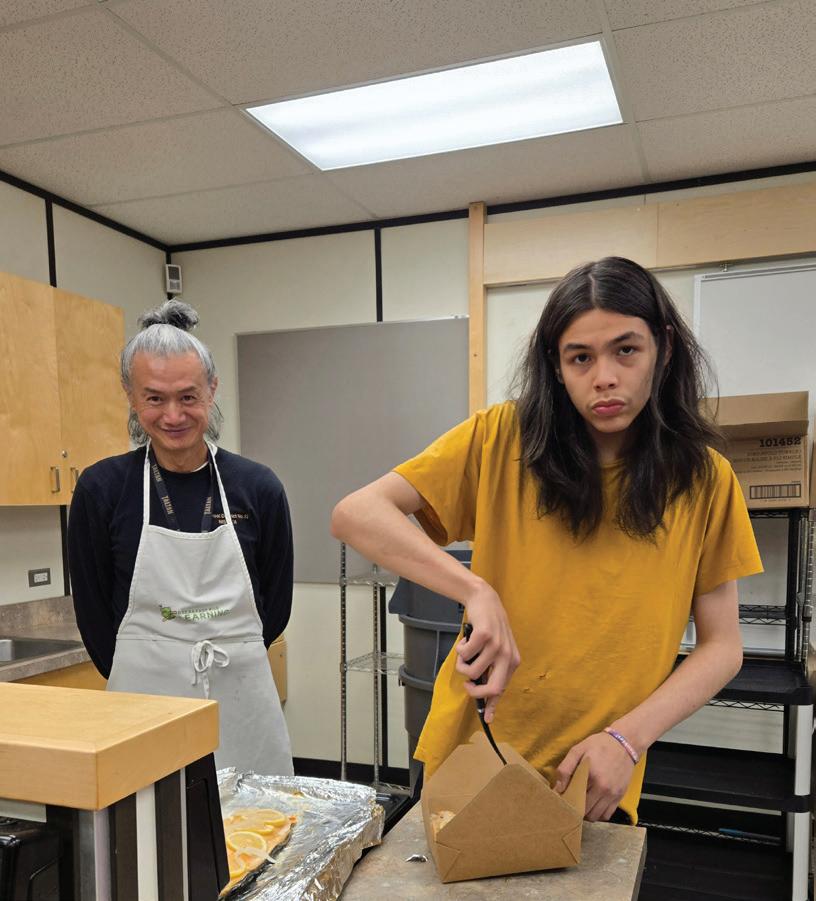

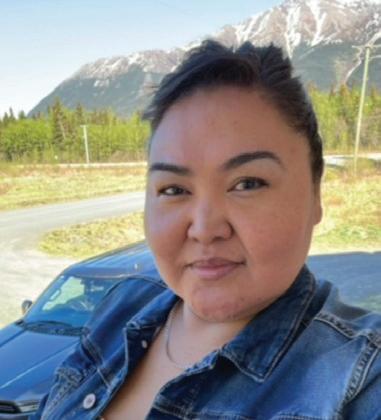
Candace Quock
Education & Training Coordinator
I’ve had the privilege of working with TCG for the past two years, and I absolutely love being part of our Education & Training Department and supporting our Tahltan students.
Over the past year, we’ve proudly supported more than 100 students across Canada on their educational journeys—including those pursuing short courses, trades, and post-secondary programs.
We’ve been honored to witness many students succeed in a wide range of fields—from Fine Arts, Osteopathy, and Biological Sciences to Commerce and Law School. Their dedication and achievements continue to inspire us every day.
Thanks to the generous support of our partners— Newmont/Red Chris Mine, Coast Mountain Hydro, and Tahltan ERM—we’ve been able to offer three bursaries to help ease the financial burden that so many students face. Seeing these companies step up and invest in our Tahltan students is incredibly uplifting and deeply appreciated by all of us.
This past year, we also supported several students through EMR (Emergency Medical Responder) First Aid Training, with all participants successfully earning their certification. It’s amazing to see companies not only
offer these valuable training opportunities but also support our people in completing them.
Looking ahead, we’re excited to be planning our 4th Annual Exploration Mining Tour in Tahltan Territory. Each year, we select 10 students to visit key sites such as Red Chris Mine and Galore Creek, tour our three communities, and share an overnight visit with Elders in Telegraph Creek. This tour gives students—some of whom have never been back to the Territory—a powerful connection to our land, people, and traditions. This year will be my first time joining the tour, and I’m beyond excited to share in this experience.
Having worked more than 20 years in the mining industry and for our Tahltan leadership organizations—including the Tahltan Band, Iskut Band, and now TCG—I can truly say that working in the Education & Training Department is one of the most rewarding roles I’ve had. Supporting our Tahltan people on their educational journeys and seeing them succeed is something I’m incredibly proud to be a part of.
I always encourage our people to pursue education—whether that’s returning to school or becoming certified in a trade or profession. I am deeply thankful to our leadership, past and present, as well as the Board of Directors and Executives who approved this Education funding back in 2018. I raise my hands to you all in gratitude for helping make a lasting difference in the lives of our Tahltan people.
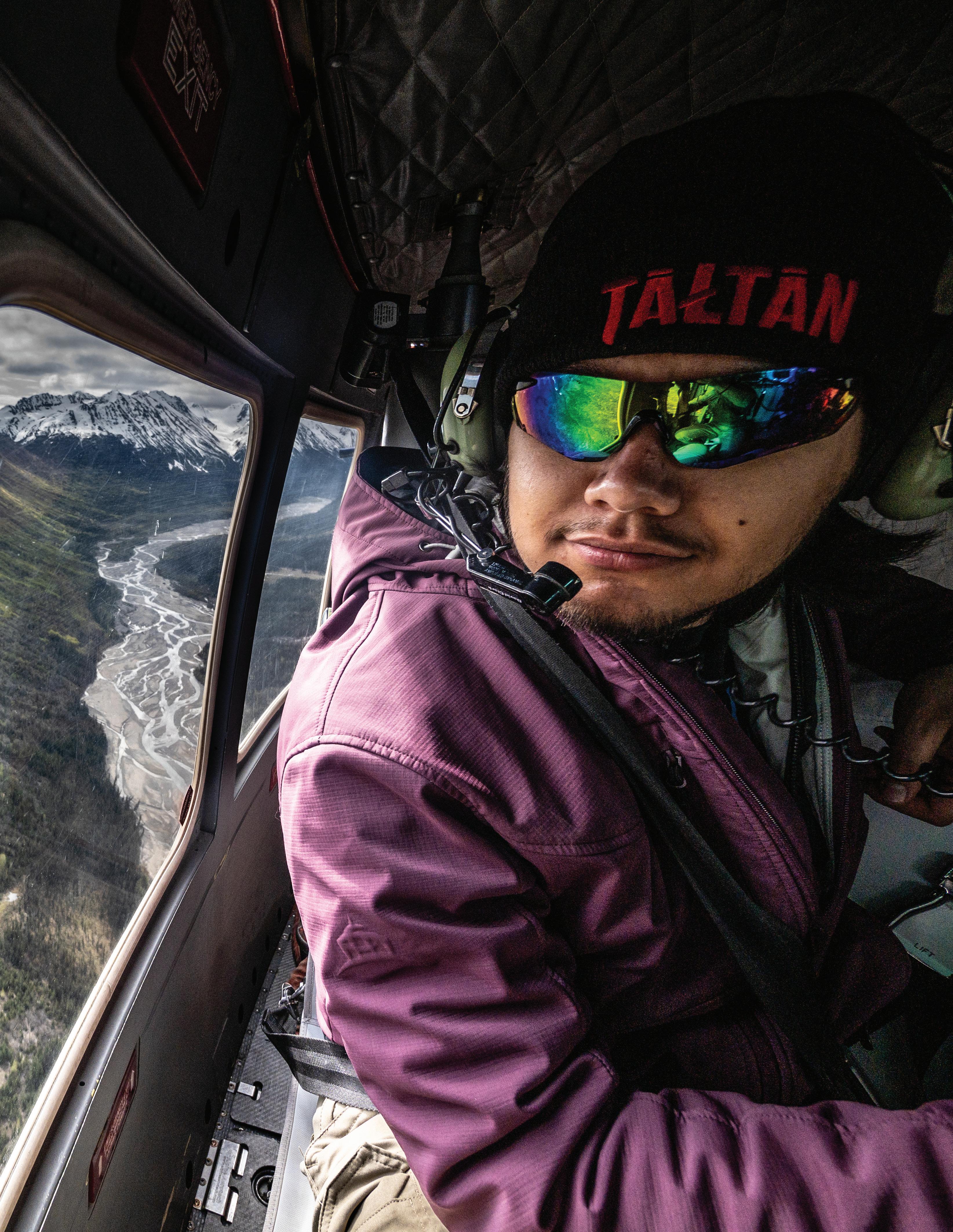


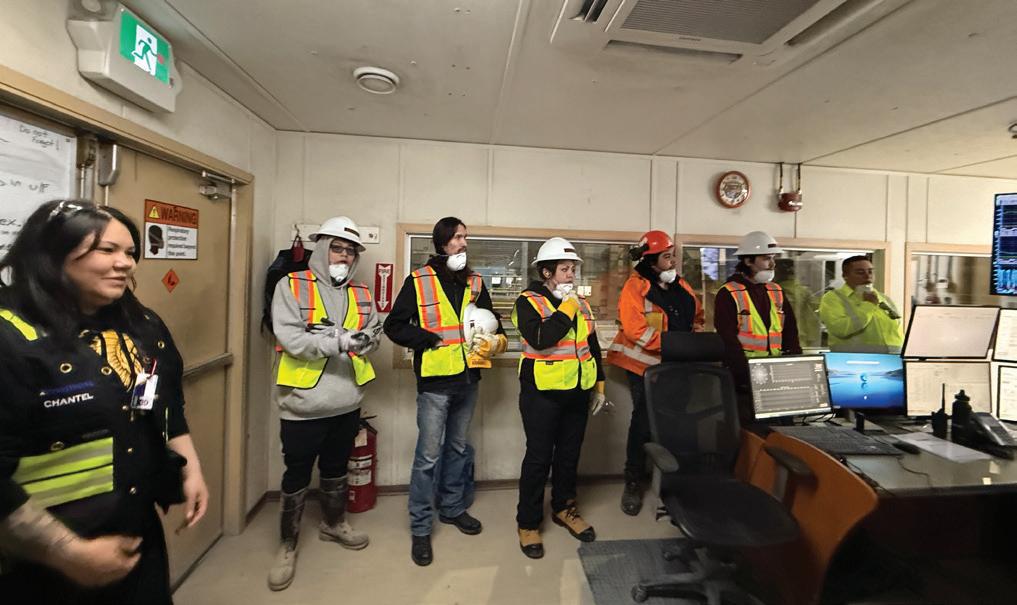

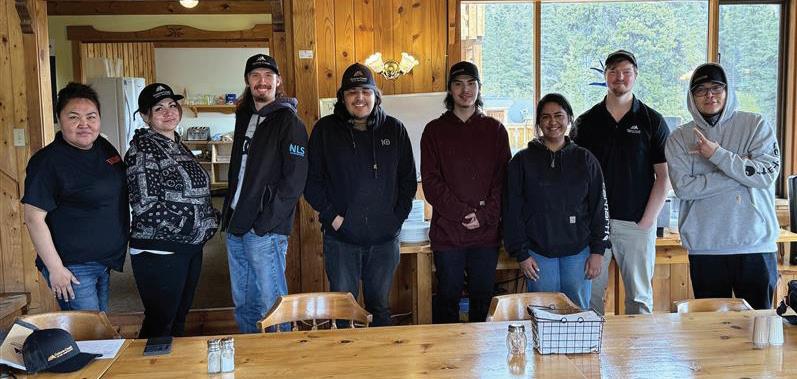
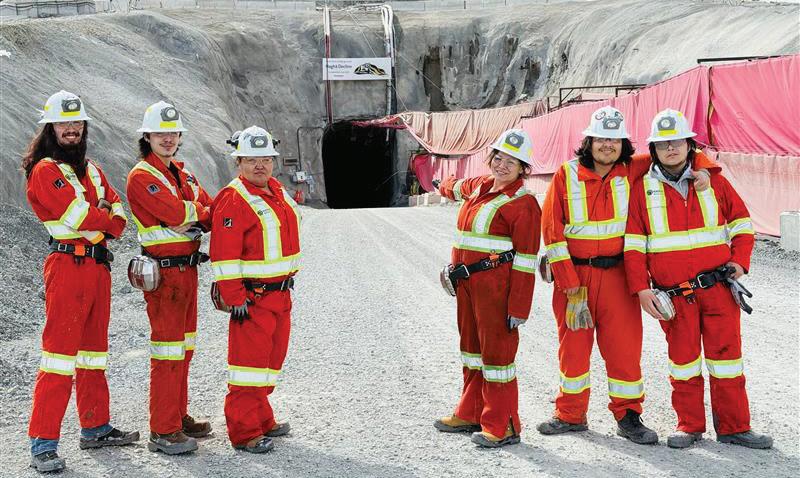


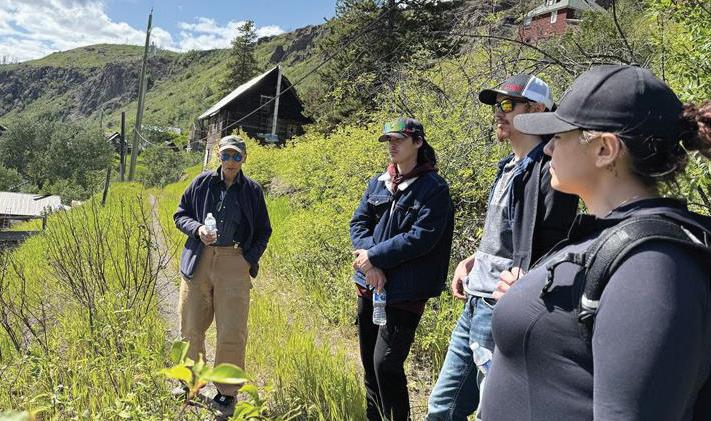
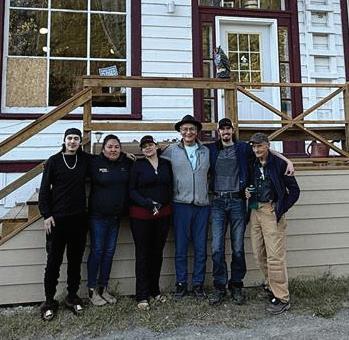
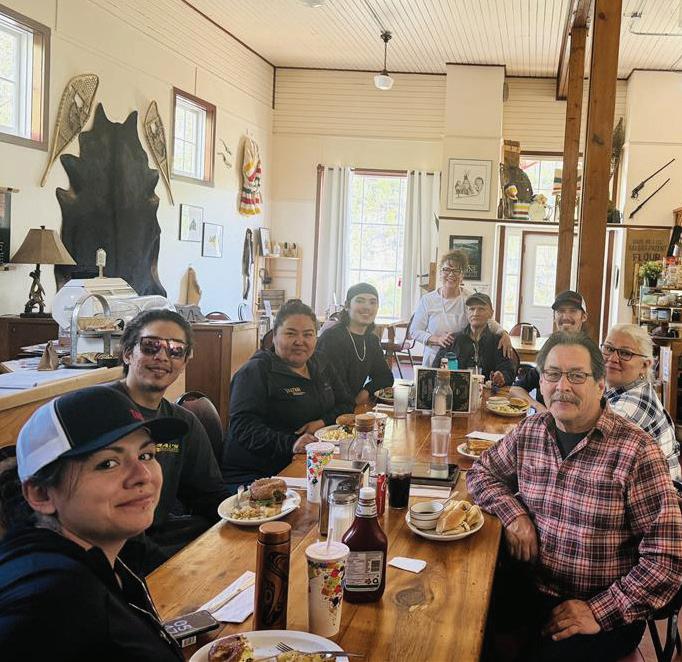
Had a wonderful evening at Riversong connecting with our Elders and enjoying a delicious meal prepared by Corrina Reimert, Riversong
Mēduh Cho to Chief Richard
for taking the time to share your knowledge of our people, families, and the mining industry.
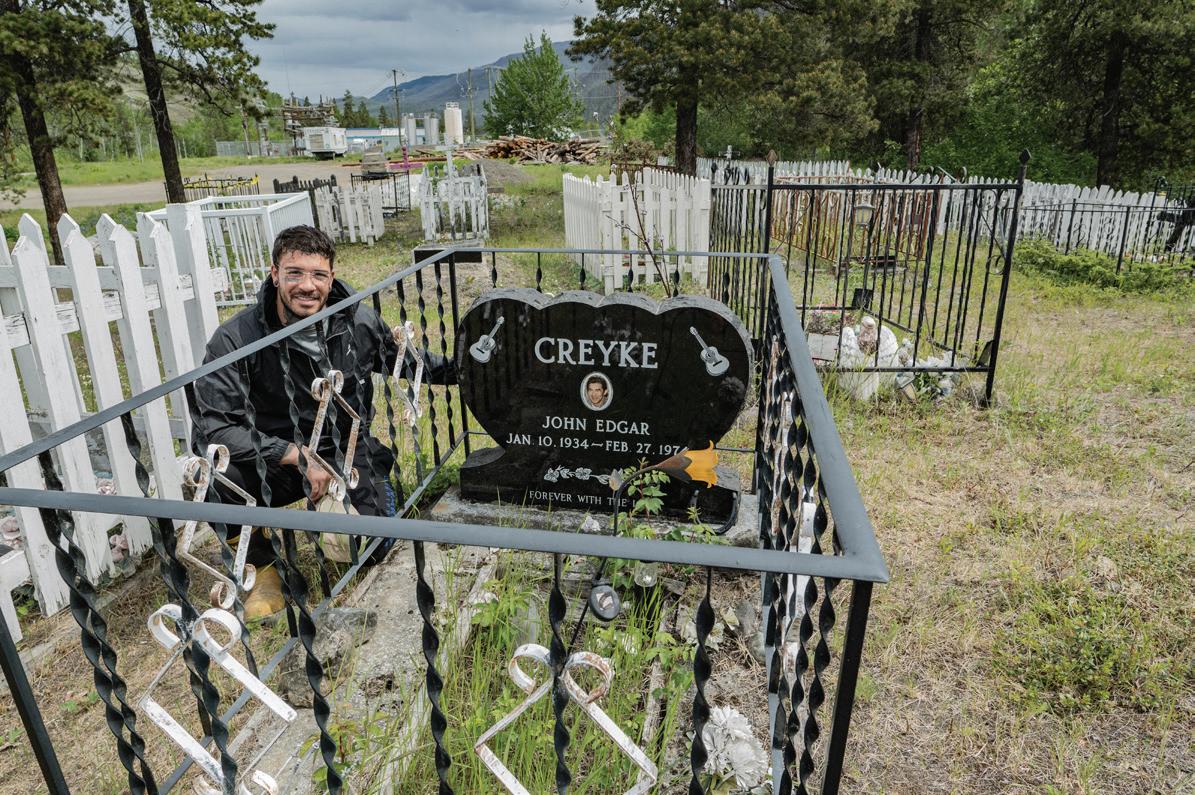
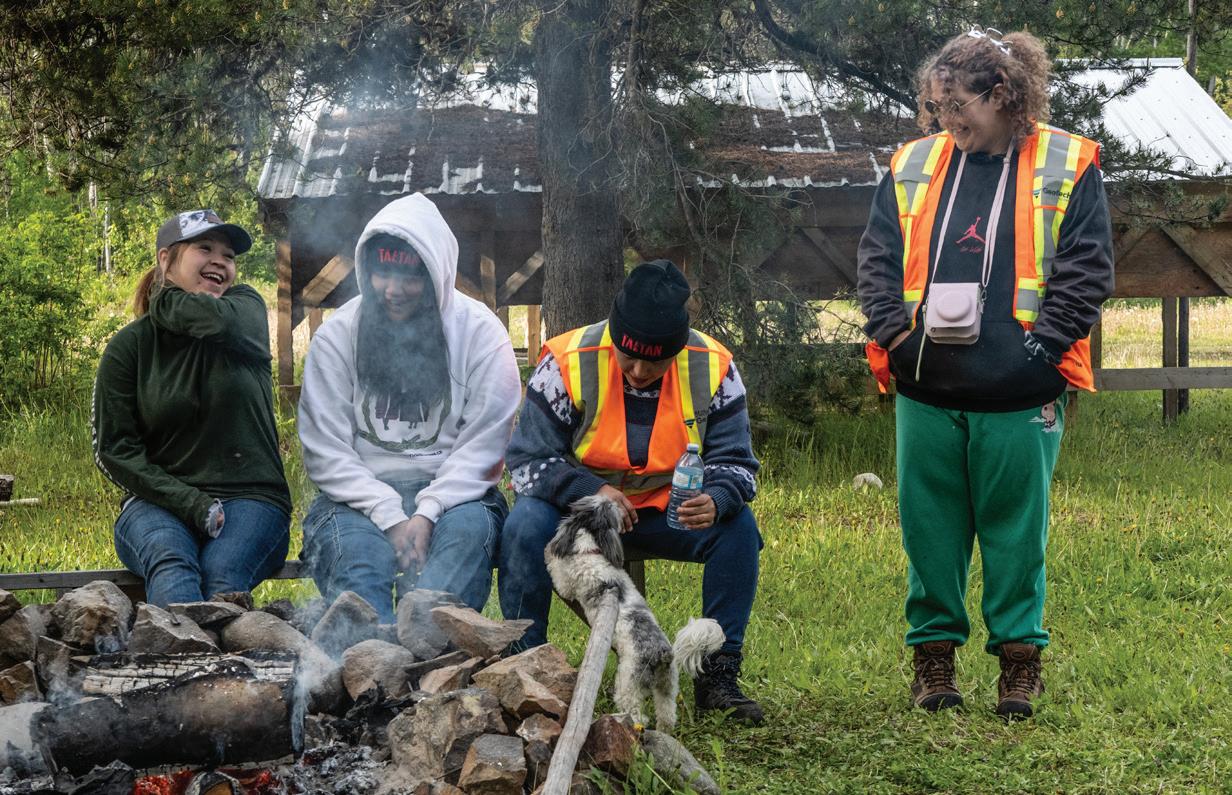

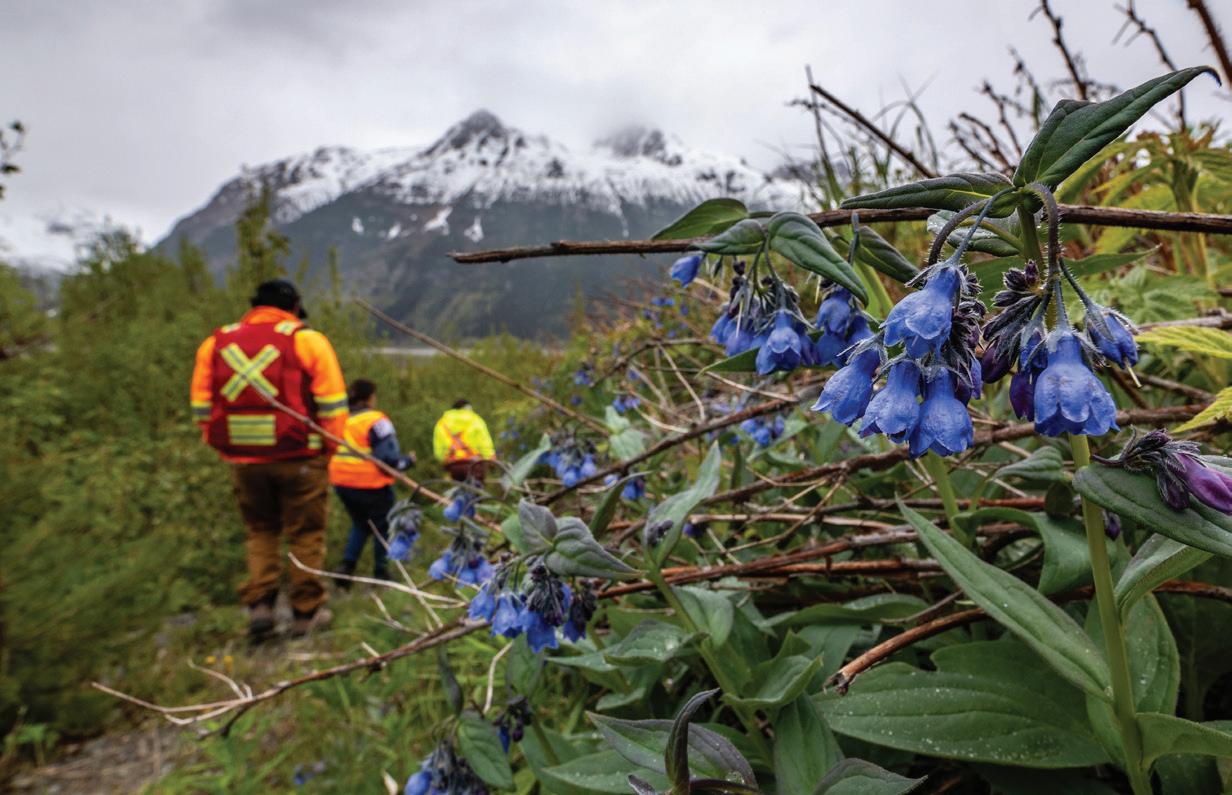

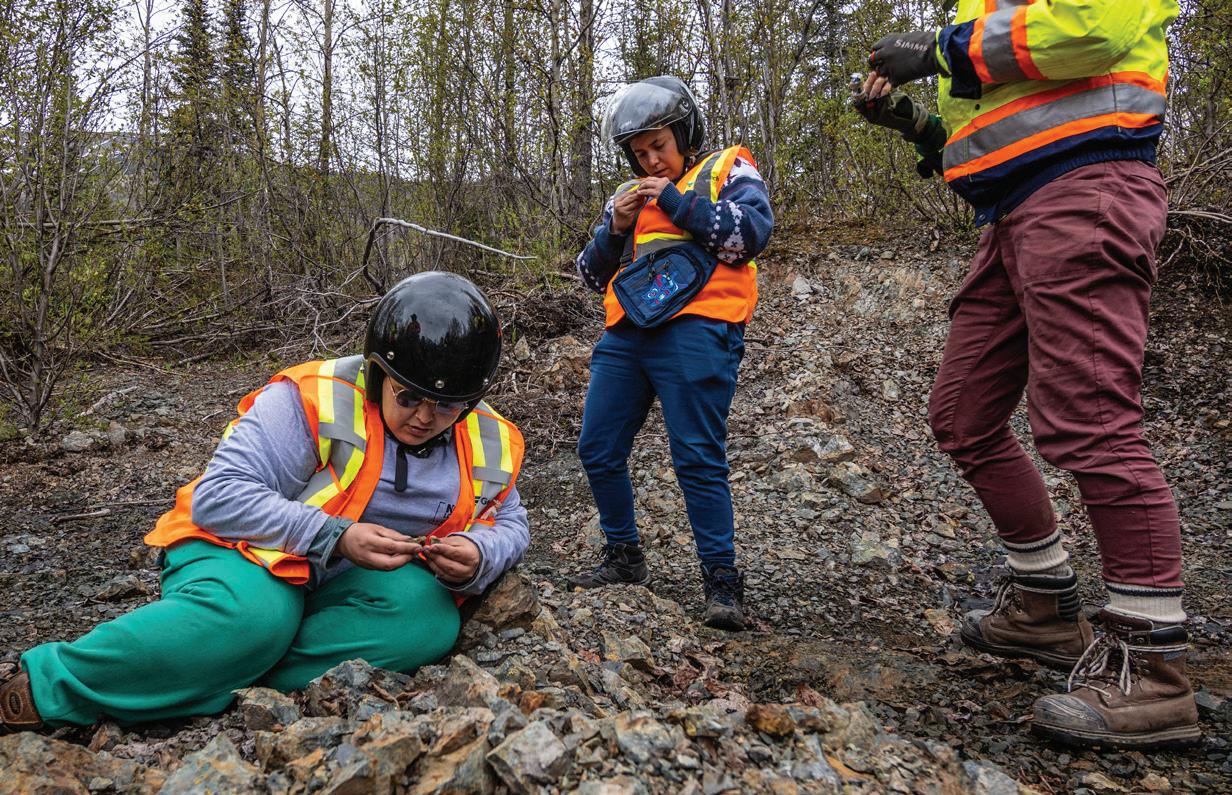


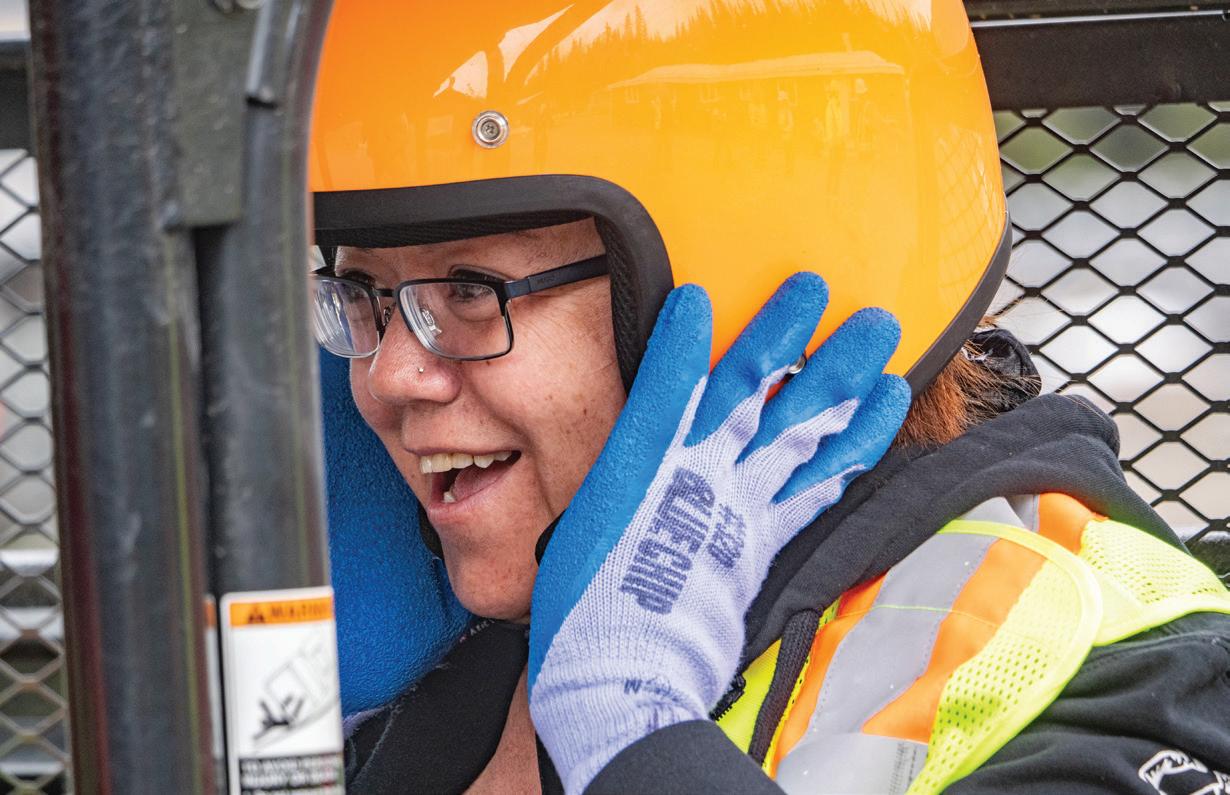
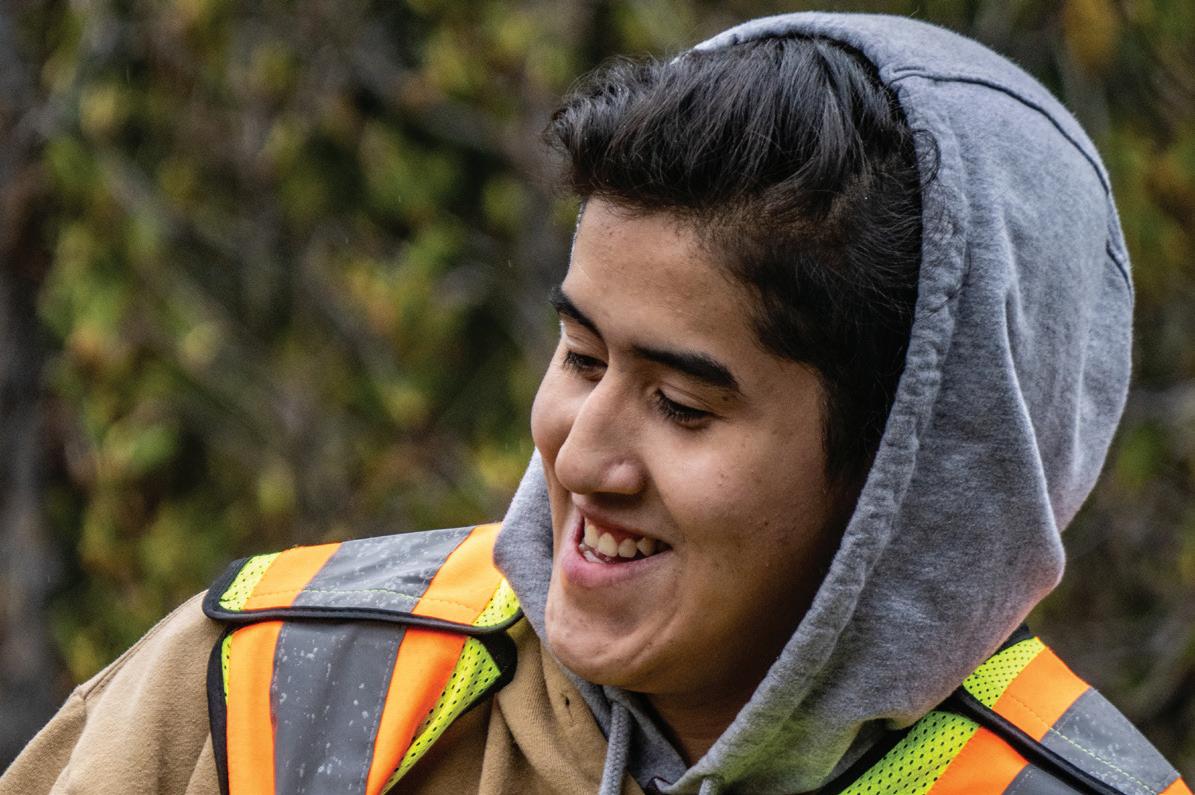
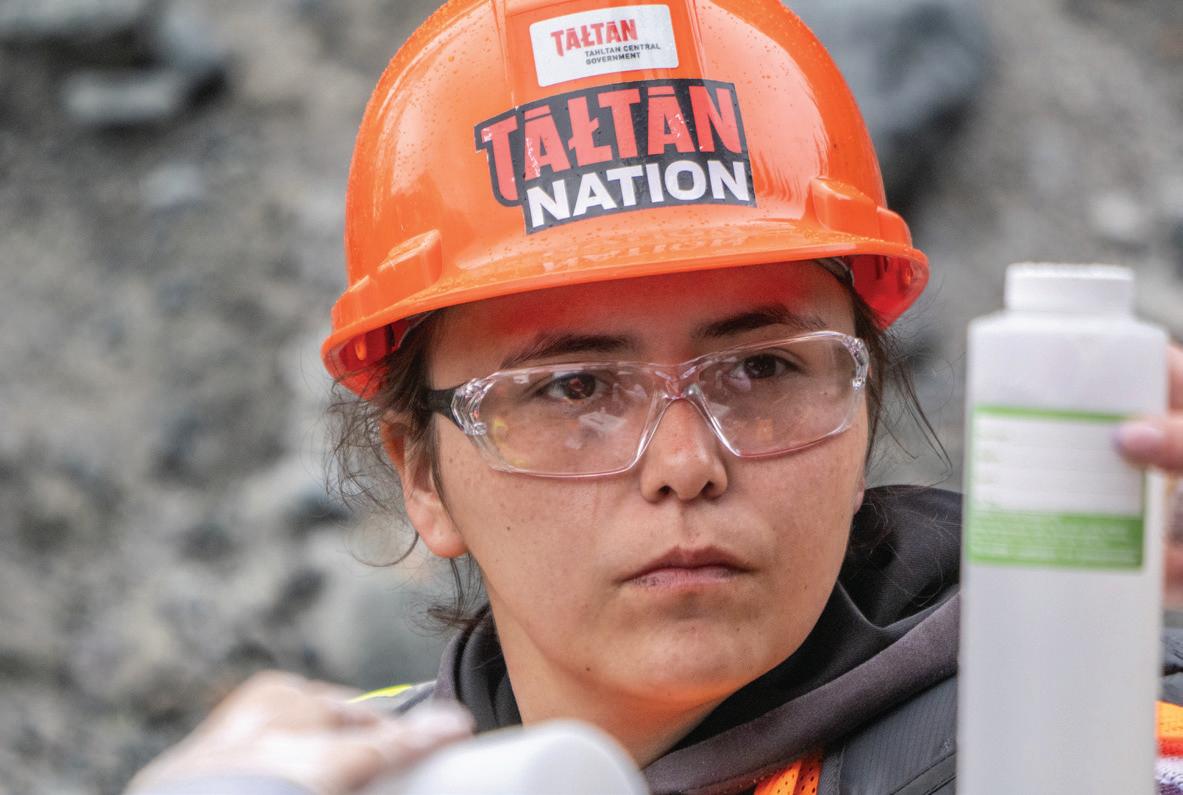

The Tahltan Central Government (TCG), together with the generous support of our business partners, continue to offer academic bursaries to Tahltan students pursuing post-secondary education, trades and skill development bursaries. The TCG has been administering bursaries since the inception of the Education & Training Department in 2018.
To be eligible for a bursary, an applicant must be of Tahltan ancestry and a member of the TCG. Students do not have to be a registered status Indian under the Indian Act.
Students can be from anywhere, studying anywhere in Canada and in any accredited post-secondary institution or trade school.
To qualify for funding, an applicant must:
• Be of Tahltan ancestry
• Be a confirmed registered member of the TCG
• Be registered on the TCG OnTrack employment resource website
• Be in good financial standing with the TCG, the Tahltan Band and the Iskut Band (if applicable)
• Be applying for a program that aligns with the program eligibility requirements outlined in the policy
Scan the QR code below to visit the Bursaries webpage: tahltan.org/bursaries
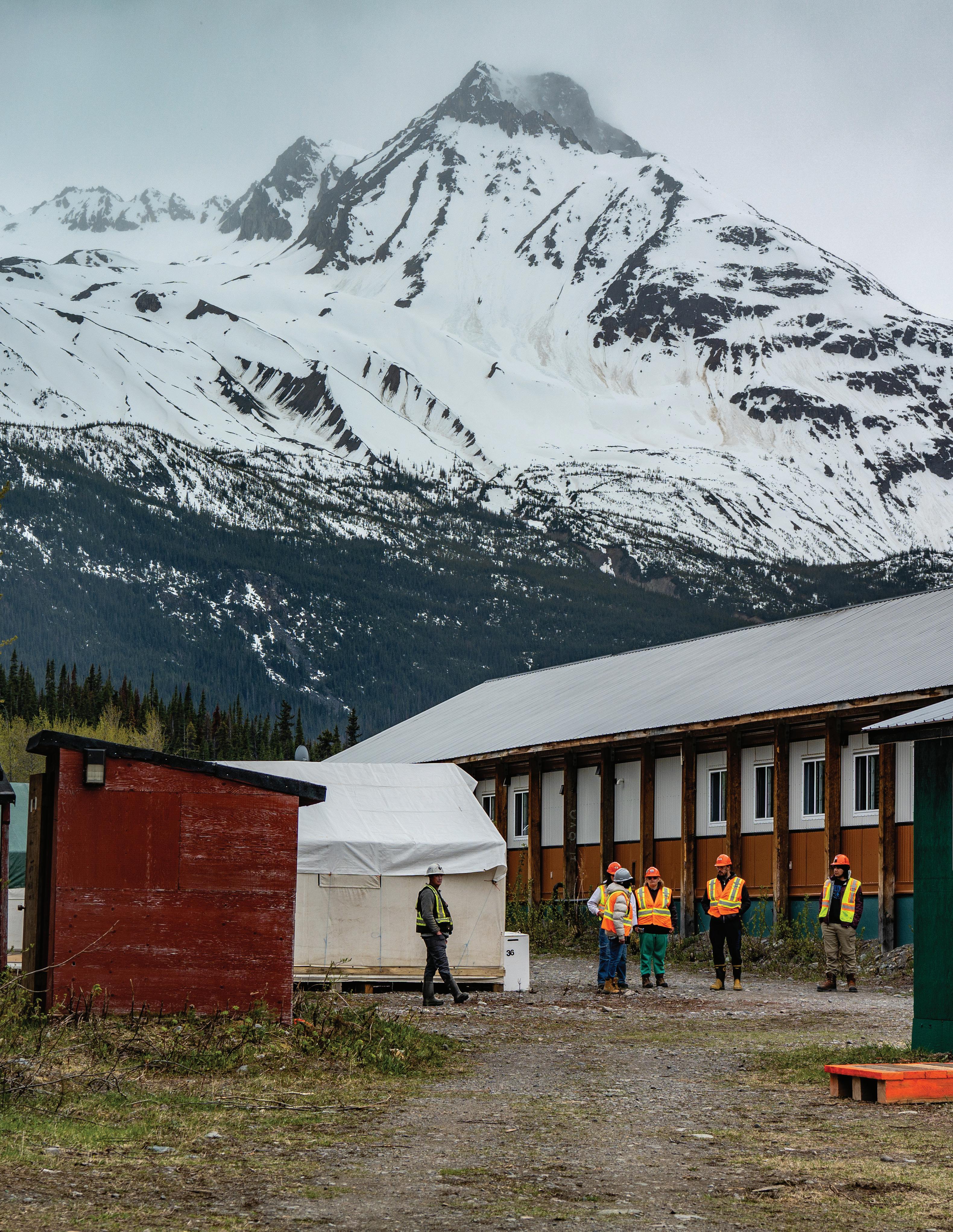
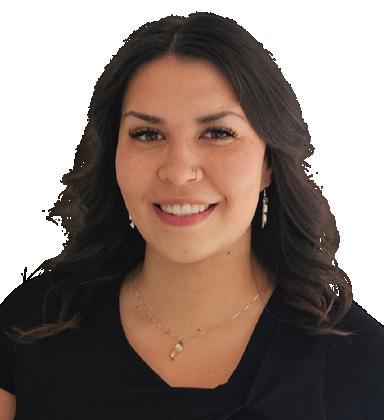
Vanessa McLean
Employment & Business Director
Since stepping into the role of Director of TCG’s Employment and Business Department, I’ve had the honour of working alongside community members, industry partners, and leadership to help build strong foundations for economic growth, skill development, and business collaboration within Tahltan Territory. The department also hired the talented Trisha McCreery as the Employment and Business Coordinator.
This year has already seen some important milestones. In February, we launched a Resume Building Tour, traveling across communities to help Tahltan members enhance their job-readiness and confidence when applying for work. This opportunity allowed our department to be visible within all three communities— giving us time for all in our territory. We intend for this tour to be annual.
In April 2025, we hosted a Business Forum designed to bring together Tahltan entrepreneurs with key industry partners. The goal was to foster relationships and open dialogue, and create real opportunities for
collaboration. It was a dynamic event that showcased the innovation, determination, and business spirit of Tahltan Nation.
We also recently held a Career Fair, open to all members of the public. This event connected job seekers with employers across multiple industries, offering valuable insight into local and regional employment opportunities. It was an exciting day that highlighted the talent and ambition within our communities.
These initiatives are just the beginning. Our department is committed to supporting Tahltan members in gaining meaningful employment, growing their businesses, and building long-term partnerships that benefit the Nation as a whole. We are here to listen, support, and act—ensuring that every program we deliver is community-driven and results-focused.
As we move forward, I invite all members to stay engaged, share their ideas, and take part in upcoming opportunities. Together, we are building a stronger economic future for the Tahltan Nation.

My name is Vanessa McLean, and I’m a proud member of the Tahltan Nation from the Tsesk’iye (Crow) clan. I’ve worked in the mining industry since 2011. I feel as though the experience I gained there will help me in this new role.
Last September, after spending a decade at Red Chris, I stepped into a new role as Director of Employment and Business for TCG. Since then, my focus has been on implementing initiatives that support our Nation—like a yearly resume-building tour, a business forum to connect local entrepreneurs with industry partners, and a public career fair to open doors for job seekers.
Though I’ve been living in Prince George since 2022, my connection to Tahltan Territory remains strong, and I visit often. In this role, I’m guided by a commitment to our people and a belief that lasting economic strength comes from empowering each other—through employment, entrepreneurship, and shared opportunity.
I’m here to listen, to advocate, and to help build paths forward that reflect the strength and vision of the Tahltan Nation.

Hello everyone! I am excited to introduce myself as the new Business and Employment Coordinator with TCG.
While I grew up in Lheidli T’enneh territory (Prince George), I am proud to be Tahltan and part of the Tsesk’iye (Crow) clan. Staying connected to my roots is important to me. My grandma has played a key role in helping me stay grounded in our culture and language. With her guidance, I earned a micro-certificate in language documentation from the University of Victoria, in conjunction with earning a Bachelor of Arts in First Nations Studies from the University of Northern British Columbia.
Beyond sharing my heritage in Canada, I have also had the opportunity to represent the Tahltan Nation internationally on the Isle of Man. As part of an academic internship based on language and culture revitalization, I gave a presentation highlighting some of the achievements of our people.
Now I am working to use the knowledge that I have gained—both through university and teachings from my family—to come back to my Nation and contribute to its growth. In my role, I handle day-to-day business and employment support needs. So if you ever need a resume made, you know who to call!
I look forward to working together and supporting our Tahltan Nation.
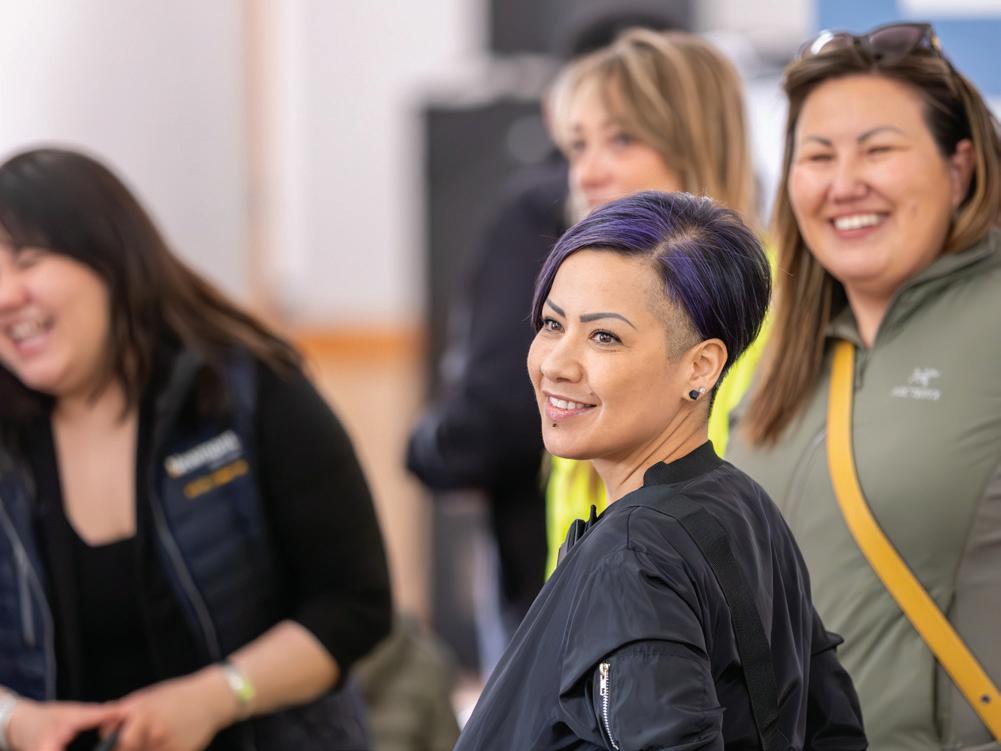



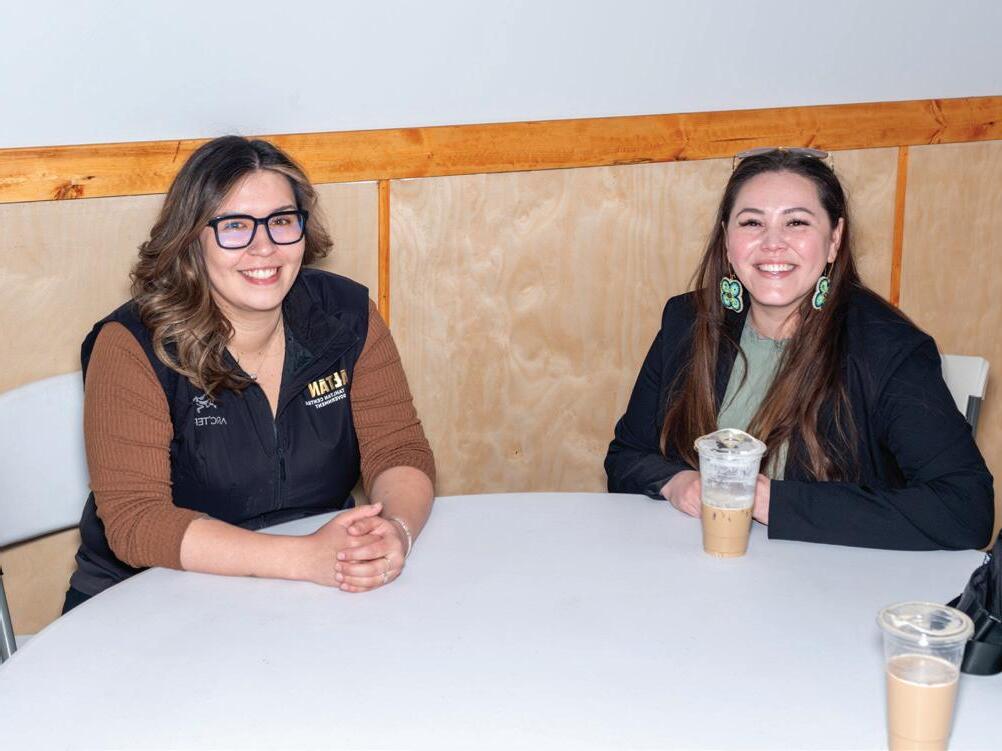


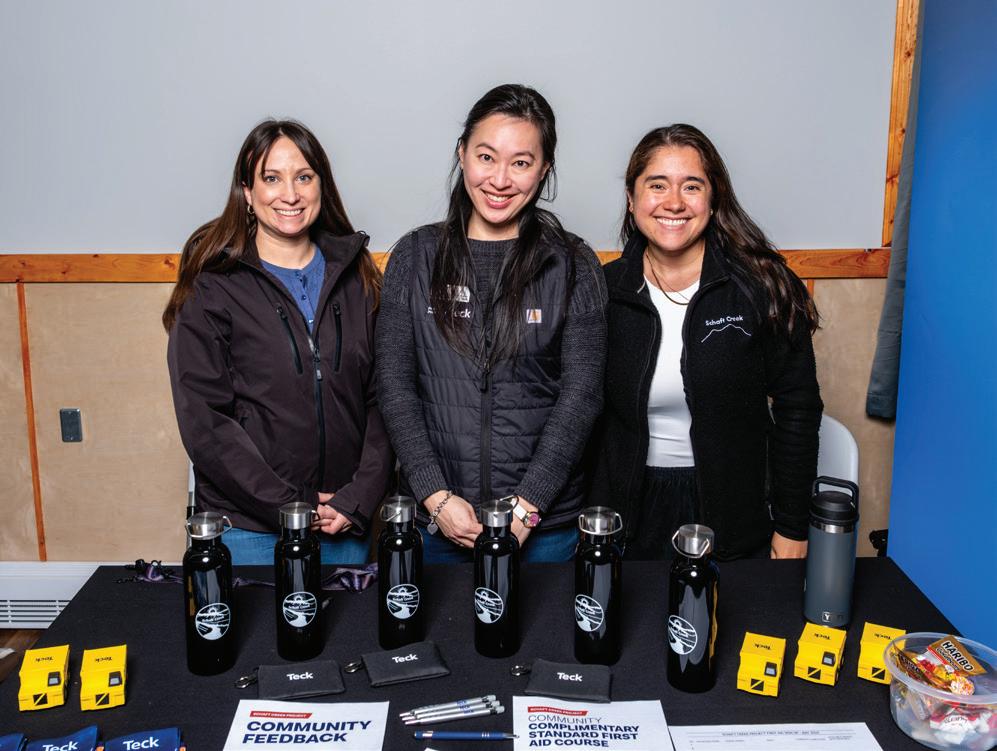

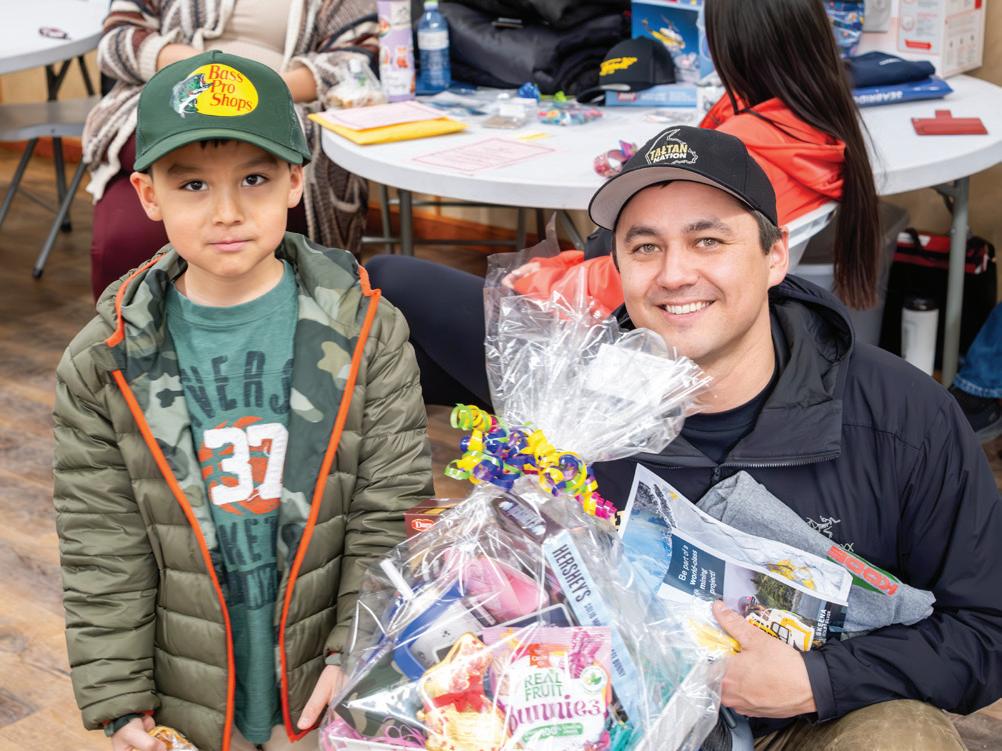
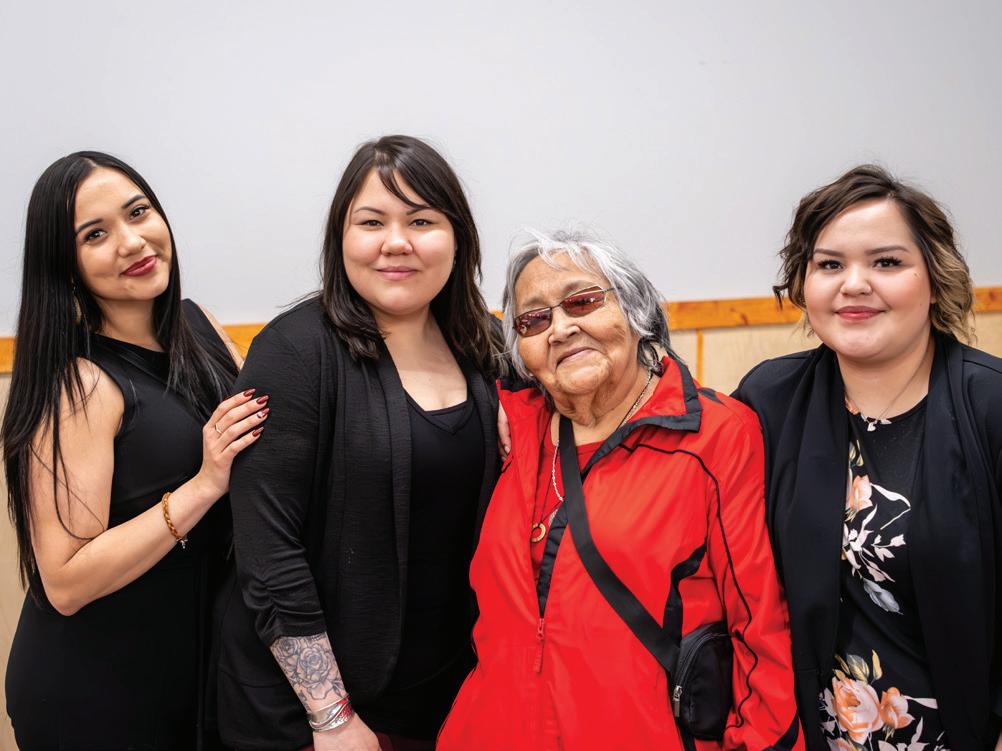
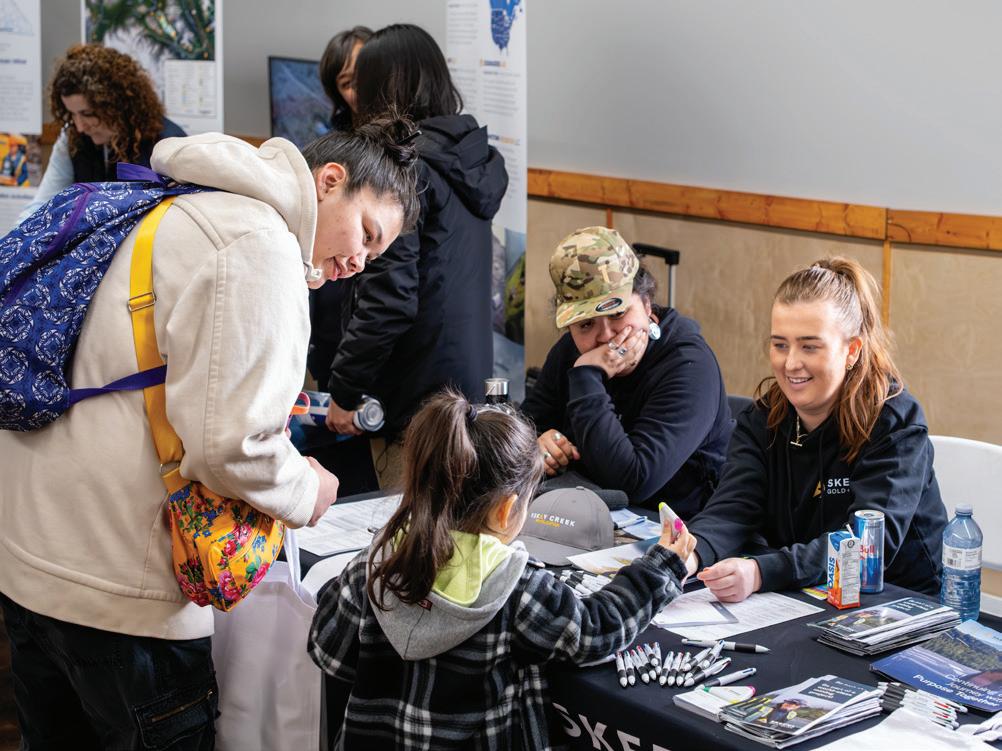

Keenan’s journey begins in Dease Lake. Growing up in Tahltan Territory gave him a foundation that shaped his identity, values, and sense of purpose. A proud member of the Ch’iyōne (wolf) clan, Keenan developed a connection to his roots from a young age. He learned through observing, listening to stories, and hands-on experience, absorbing knowledge from community members as he built relationships and joined in cultural practices such as beading and regalia making.
At just 18, Keenan entered the mining industry. In the mining industry, adaptability is key. Keenan started as a summer student in maintenance before transitioning to various operational roles, including haul truck driver and dispatch systems at Red Chris. His continual curiosity and work ethic brought him to leadership support and administrative positions, ultimately leading to his current focus in Health and Safety.
Alongside his work at Red Chris, Keenan has also held continued contracted positions with TCG, supporting the Business and Employment Department.
Keenan’s educational path reflects the drive he shows at work. He earned an Advanced Safety Management Diploma from the BC Institute of Technology and an HR Management Diploma from Thompson Rivers University. A network of mentors, peers and community members helped Keenan grow. Thanks to their support, he’s now the youngest underground shifter at Red Chris.
Though still early in his career, Keenan already wants to give back. He remains committed to his community and wants to help others as others helped him. He’s mentoring youth, supporting Tahltan-led initiatives, and championing systemic change.
His advice for newcomers? Network fearlessly, advocate for yourself, and embrace continuous learning.

Breanna is a proud member of the Tahltan Nation, newly connected to her heritage through the Tsesk’iye (Crow) clan. Though she was raised in Edmonton, Alberta, her work and personal journey have brought her back to her roots in Tahltan Territory, where she has formed deep ties with family and community she didn’t grown up around.
Breanna’s career began early. She entered the workforce at 18, with a drive that would carry her across industries and roles. From running half a camp as an assistant facility manager in the oilfields to jumping all the way over to Human Resources at Red Chris, Breanna has built a career grounded in resilience, transparency, and a deep commitment to supporting others. A pivotal moment in her journey came when she chose to pursue education during her leave time. This choice moved her into HR, where she now thrives.
Starting her HR role at Red Chris required Breanna to uproot her life. Despite personal challenges, including the passing of her brother shortly after she began working in Tahltan Territory, Breanna found strength in the support of her employer and the community. Since then, she has focused her energy on building inclusive, supportive systems for others.
Breanna is especially proud of her role in spearheading the Tahltan Business Resource Group, the first of its kind. The group has led initiatives like installing Tāłtān language stop signs, gate signage, branded safety vests, and displaying the Tahltan Declaration at Red Chris. Through these efforts, Breanna ensures that the cultural presence of the Tahltan Nation is seen, respected, and woven into the fabric of the workplace.
Currently, Breanna balances full-time work with academic coursework. She is two years into her Bachelor of Arts in First Nations Studies and is on track to earn her HR designation within the next year.
Known for her calm leadership and grounded mentorship, Breanna describes her style as realistic and hands-on. She leads by example—whether that means making sure shared spaces are clean or being the first to offer support through initiatives like the buddy program for new hires. Her focus on progression lines and internal interviews helps create pathways for career development for Tahltan workers onsite.
Breanna’s journey has not been without challenges. Once soft-spoken and reluctant to speak up, she now serves as a voice for others—advocating, mentoring, and holding herself and her peers accountable. Her ability to learn from setbacks, document diligently, and remain a friend to herself guides her success.
What keeps her going is the belief that there is always more to learn, more to build, and more to give. Her advice to newcomers in the field is simple but powerful: “Take your time, be patient. It’ll still be there tomorrow.”
Looking back, Breanna wouldn’t change a thing. Every step—every challenge, risk, and achievement—has led her exactly where she’s meant to be.
This article is lovingly dedicated to my brother, Tommy.
You were more than my big brother—you were my protector, my biggest supporter, and the one who always knew how to make me laugh, even on the hardest days. You had an incredible gift for bringing people together. Your humor, your kindness, and the way you made everyone feel like they belonged, left a lasting impression on everyone lucky enough to know you.
When you encouraged me to take that Human Resources job at Red Chris, I wasn’t sure I was ready. But you believed in me without hesitation—just like you always did. Working at the same mine, watching your determination as a driller’s helper, and feeling proud just to be your sister, changed the course of my life.
Your loss is felt every single day, but so is your presence—in the strength you taught me, in the laughter you left behind, and in the path you helped me start. This article is for you, Tommy. Thank you for your love, your light, and your unwavering belief in me.

Tommy Lafond
November 21st 1995November 1st 2023
May he rest in Peace
DEPARTMENT MESSAGE
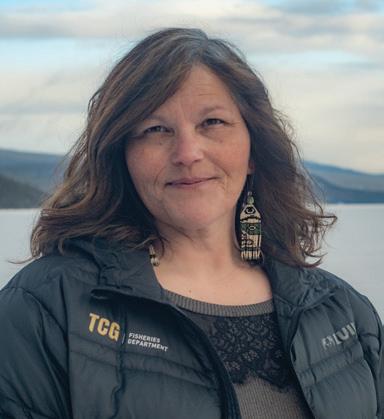
Cheri Frocklage Fisheries Director
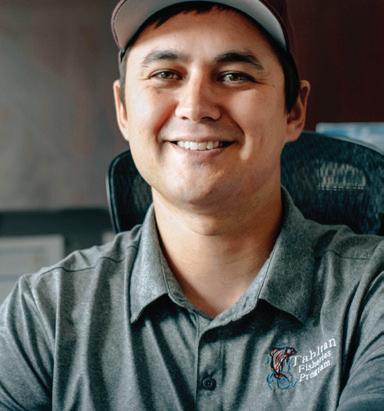
Kerry Carlick
Fisheries Manager
Last year marked a year of many changes within the TCG Fisheries Department, in particular with our department staff. TCG Department restructuring plans are underway, and there will likely be further changes to our staff in the near future.
After the spring Tahltan Lake Sockeye Smolt work was completed, our senior employee, Field Supervisor Michael Nole announced that he was stepping down from his post at the lake to pursue other job aspirations. For the last several years, Michael has encouraged our Tahltan youth to get involved with the Fisheries department fieldwork. He spoke frankly about how the long-term staff were soon to age out, and the importance of recruiting new, aspiring young people as the next generation to continue the role of Tahltan people actively participating in the management and protection of our Stikine River salmon resources.
Over 25 years at Tahltan Lake working the Smolt, Adult, and Egg Take projects, he became the site expert. Michael is known as the Mayor of Tahltan Lake. He has spent the last decade passing on his knowledge, sampling techniques, and skills to new field technicians. Since resigning his post, Michael
is now on a healing journey, not a journey he had envisioned for himself, but he is moving forward in true warrior form. We are praying for our brother and wishing him a speedy recovery.
In the late fall of 2024, Fisheries Manager Kerry Carlick stepped up to take on the interim role of the TCG’s Chief Administrative Officer. Drew Inkster was hired to take on the interim Fisheries Manager role. Drew attended the winter meetings and held down the fort from November to March. Mēduh Drew for all your contributions and efforts during your time as the manager. Kerry has returned to his position and Drew will be joining the field crew in May.
Our Aquatic Protection Officer, Naia Newton was released of her duties in December. There was not enough work to justify the position anymore, and the difficult decision had to be made. Naia made many contributions to both the Fisheries and the Lands Departments during her time with TCG and we are very grateful for her commitment to her tasks and to the organization. We wish her well in her future endeavors.
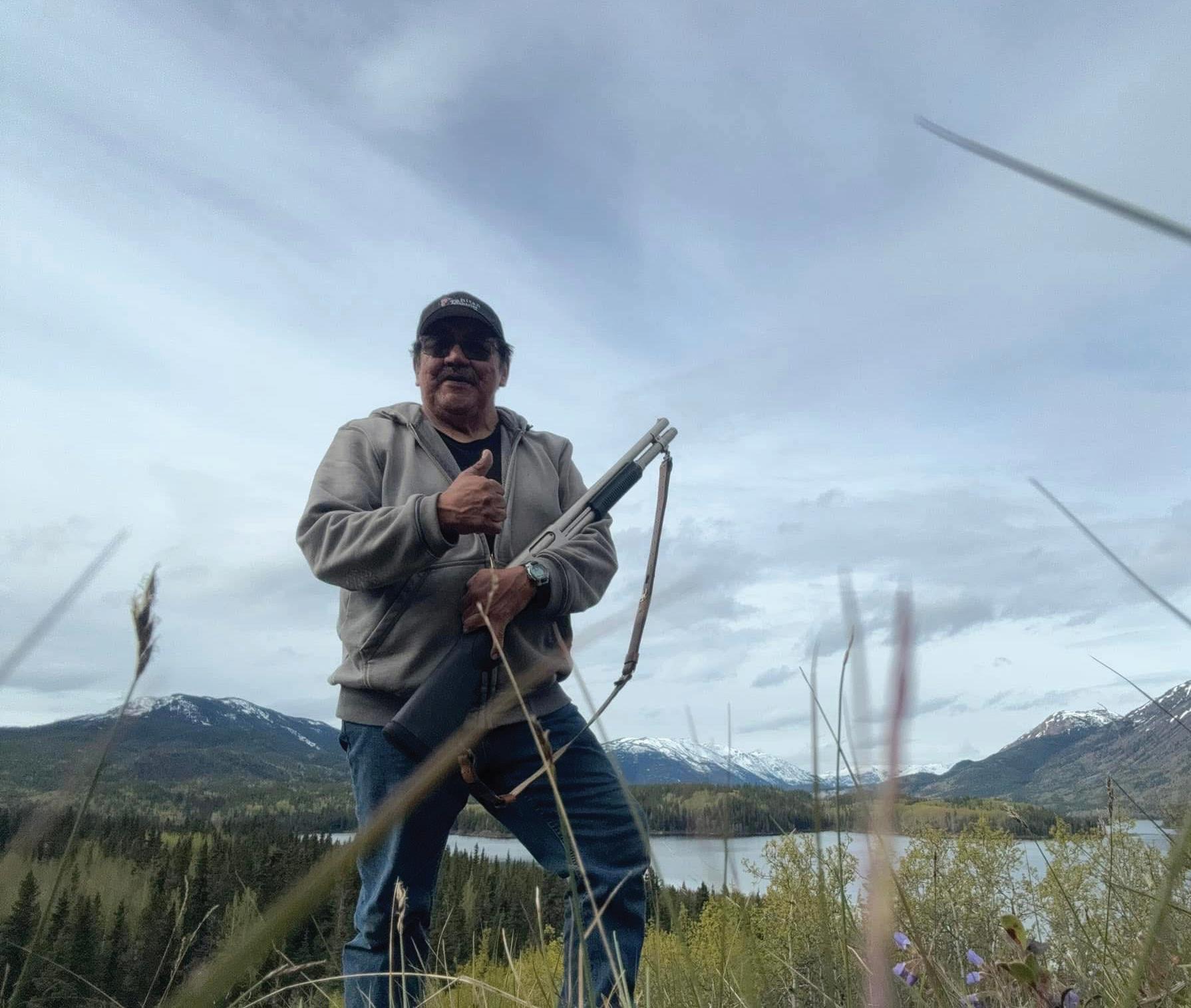
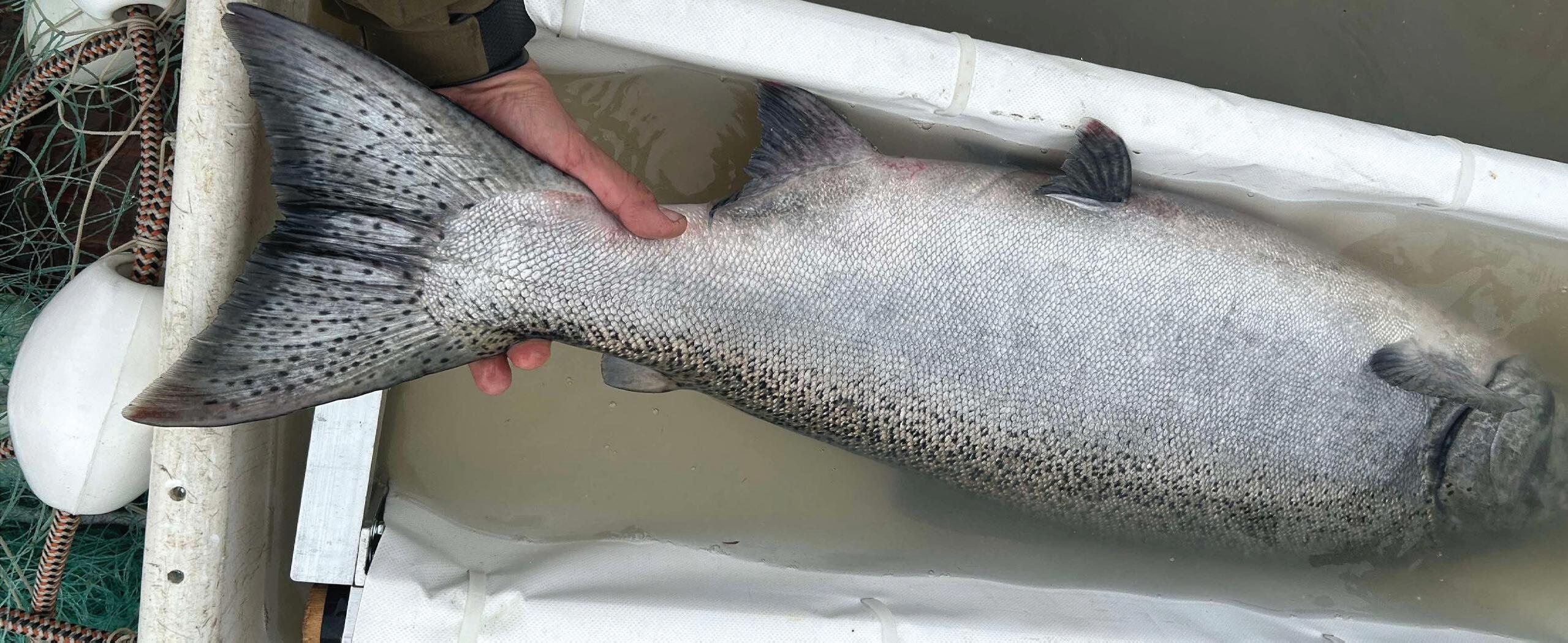
In 2024, the Stikine River watershed saw a terminal (or final) estimated run size of 8,000-9,000 large Chinook. The 2025 pre-season forecast is for 10,000 large Chinook, still well below the 10-year average of 15,400. This decline continues to remain concerning to the Tahltan Nation and is of international concern for both Canada and the US. Both Canada and the United States are continuing to take serious management measures and actions to avoid the harvest of Pacific Chinook salmon, which include:
• No directed commercial or assessment fishery
• Non-retention of all Chinook (dead or alive)
• The full angling closure of the Tahltan River from the confluence of the Stikine up
• Delaying the US subsistence Sockeye fishery
• Delaying the start of the Canada/US Sockeye commercial openings
• Delaying the opening of our First Nation fisheries to minimize the incidental catches of chinook.
In June 2024, the Fisheries Director requested that DFO Conservation and Protection investigate a net that was reportedly set at 6 Mile, with someone fishing against the posted Chinook Conservation Closure. The officer attended and seized the net and gear, which were later returned to the individual in September. No charges were laid.
Enforcement of the Chinook closure will be in effect again for the 2025 fishing season.
ONLY 233 Large Chinook (King) salmon were recorded at the 2024 Little Tahltan weir. If the sex ratio holds, and half of those were females, an estimated 116 females made it to the spawning grounds.
This population cannot handle directed fishing pressure and we will do everything in our power to STOP unsanctioned directed fishing by our members.
Your TCG Fisheries Department continues to strongly encourage and advocates for ALL our members to assist in efforts to preserve and conserve the struggling Tahltan River Chinook salmon populations. You can do this by NOT setting your net through the migration period of these stocks. The 2025 Tahltan food fishery will open on July 7th to align with the arrival of the Sockeye salmon and to allow for the majority of the Chinook/King salmon to migrate up-river past our food fishing corridor.
We would also like to ask everyone to record and release any healthy chinook from their nets. The number of Chinook released is important data for us to have as managers of the Food Fishery in Telegraph Creek.
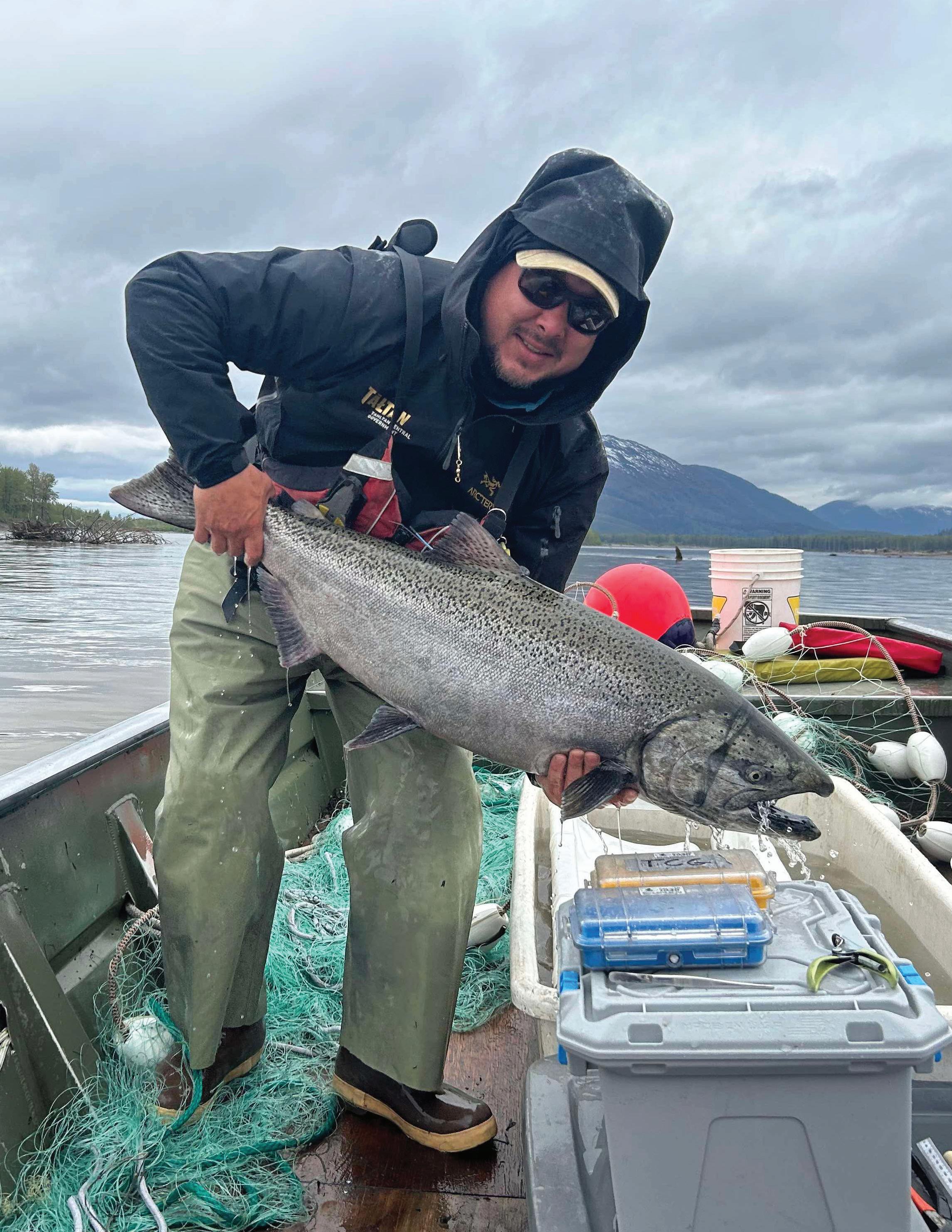
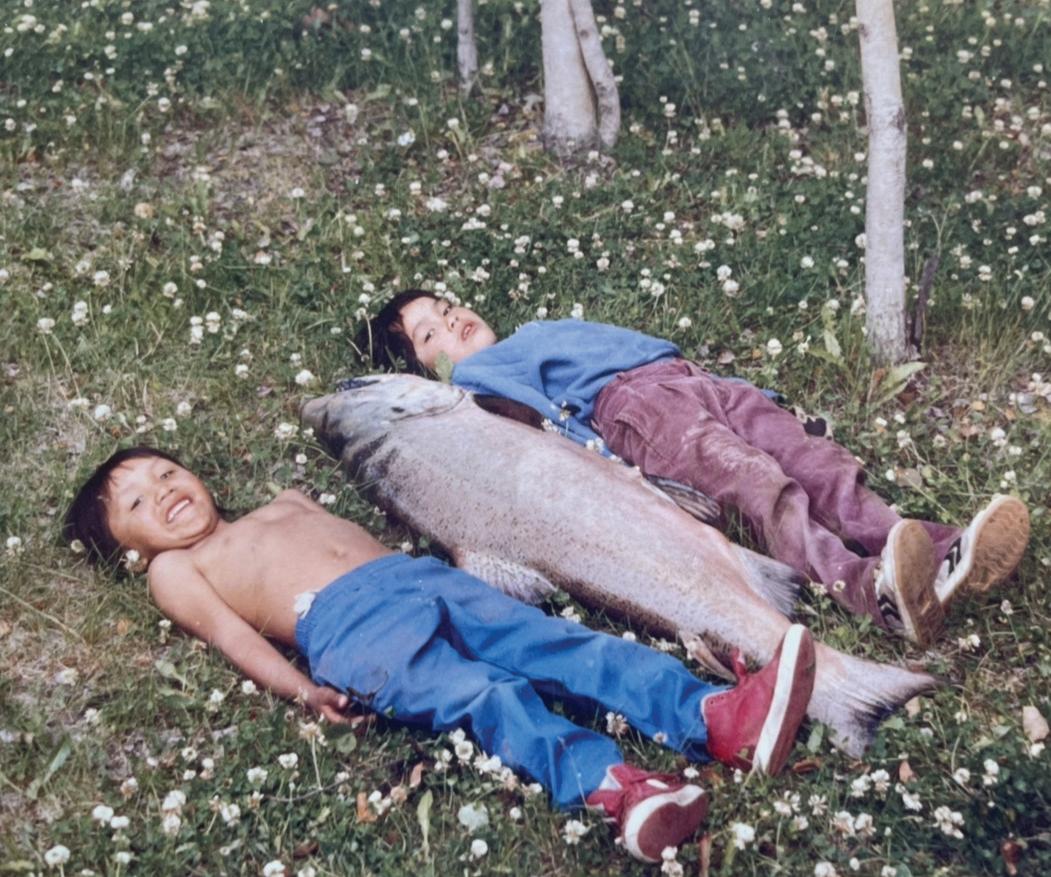
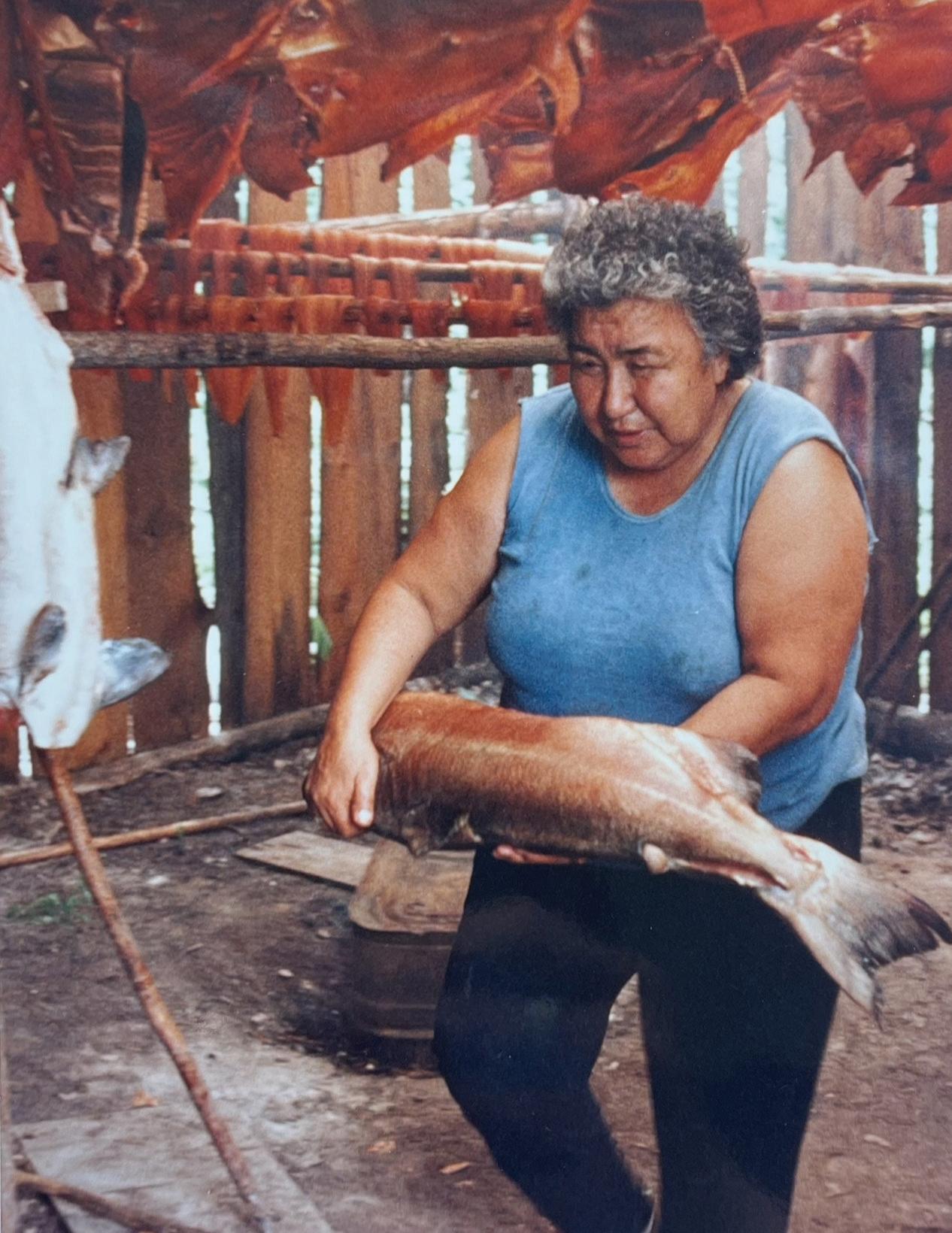
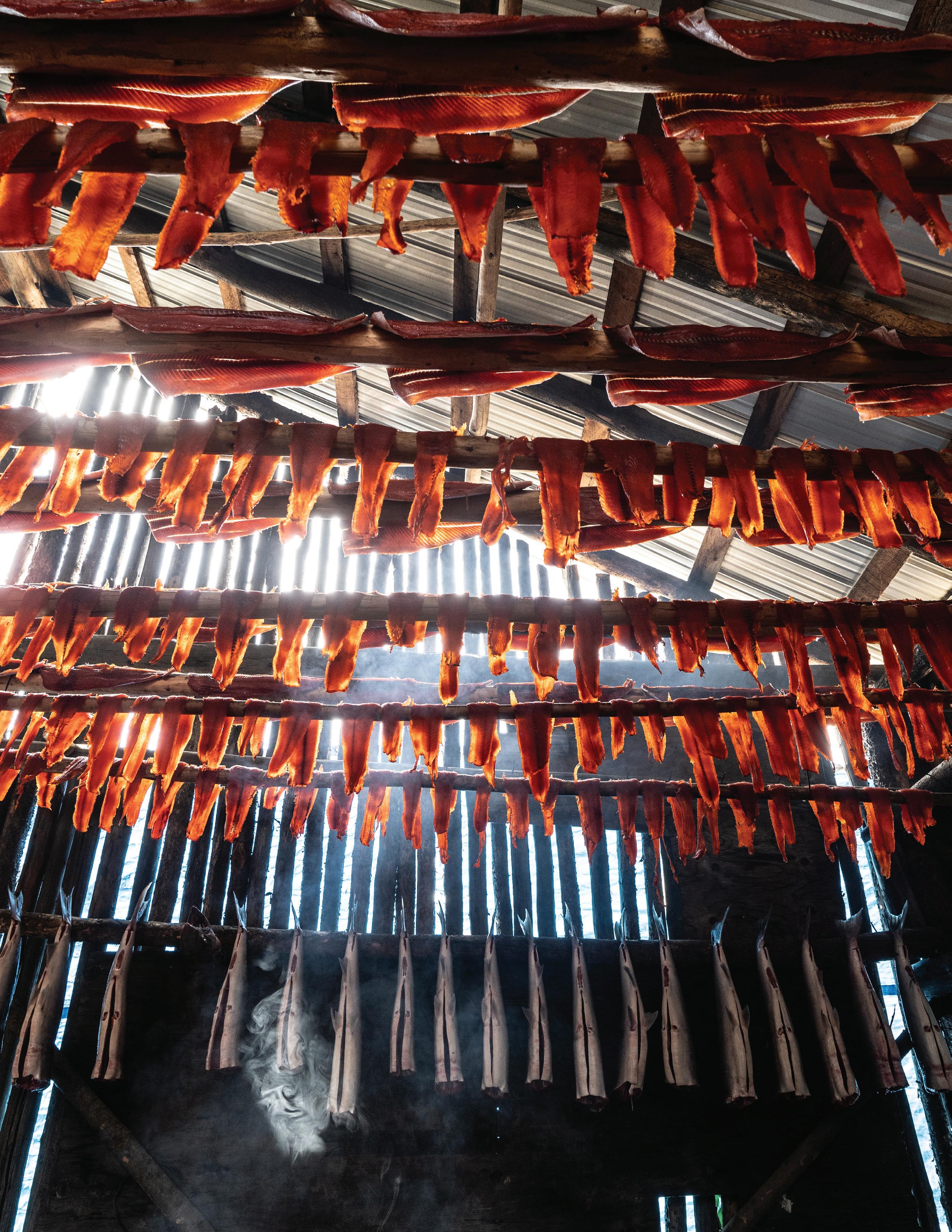

Our Fisheries Monitor Noreen Mclean will be stationed at the TCG Fisheries Department Cabin located at the Tahltan River bridge. Please stop by and see her for your permit and fishing information in Tahltan Territory. If you have any questions or concerns regarding the Tahltan Food Fishery, Noreen will be happy to discuss them with you.
If you require a transport permit, please stop in and have Noreen issue you a permit upon your departure. Transport permits ensure that if you are stopped at a game check outside of the territory, you have the proper documentation.
We wish happy and successful fishing for all our Tahltan Families.
THE STIKINE RIVER SALMON STUDIES – BIOLOGICAL CONTRACT
LOWER STIKINE CODED WIRE TAGGING
LOWER STIKINE COMMERCIAL SAMPLING
LOWER STIKINE SOCKEYE ASSESSMENT
LOWER STIKINE ADULT CHINOOK TAGGING
TAHLTAN LAKE SMOLTS
LITTLE TAHLTAN CHINOOK
TAHLTAN LAKE SOCKEYE ADULT ENUMERATION
CATCH MONITORING & REPORTING
STIKINE STOCK SEPARATION/FOOD FISH SAMPLING
TAHLTAN RIVER CHINOOK ENUMERATION FEASIBILITY STUDY
STIKINE RIVER AERIAL SURVEYS
TAHLTAN SLIDE
2024 ESCAPEMENTS
TAHLTAN LAKE EGG TAKE (1989-2024)
TAHLTAN LAKE SOCKEYE
TAHLTAN LAKE SOCKEYE
• Escapement Goal Range: 11,000–25,000
Management Objective: 22,600
• 2025 Terminal Tahltan Run Forecast: 135,000
Mainstem stocks are targeted in the mixed fishery conducted in US marine waters (districts 106 & 108), the US in-river subsistence fishery, and the Canadian commercial fishery.
ESCAPEMENT GOAL RANGE
MANAGEMENT OBJECTIVE 11,000–25,000 22,600
Tahltan Wild: 101,000
Tahltan Enhanced: 34,000
10-Year Average: ~73,000
MAINSTEM SOCKEYE
• Escapement Goal Range: 13,000–33,000
Management Objective: 21,000
TERMINAL RUN FORECAST
TAHLTAN WILD
TAHLTAN ENHANCED
135,000 101,000 34,000 ~73,000
10-YEAR AVERAGE
MAINSTEM SOCKEYE
• 2025 Terminal Run Forecast: 41,000
10 Year Average: ~39,000
• Total Combined Stikine Sockeye Salmon Run Forecast: ~176,000
Given the 2025 forecast of 41,000 for the Stikine Mainstem Sockeye stocks, commercial fisheries opportunities will be afforded, and management actions will be taken to protect these stocks during their migration period.
ESCAPEMENT GOAL RANGE
13,000–33,000 21,000
MANAGEMENT OBJECTIVE
TERMINAL RUN FORECAST
41,000 ~39,000
10-YEAR AVERAGE
176,000
TOTAL COMBINED STIKINE RUN FORECAST
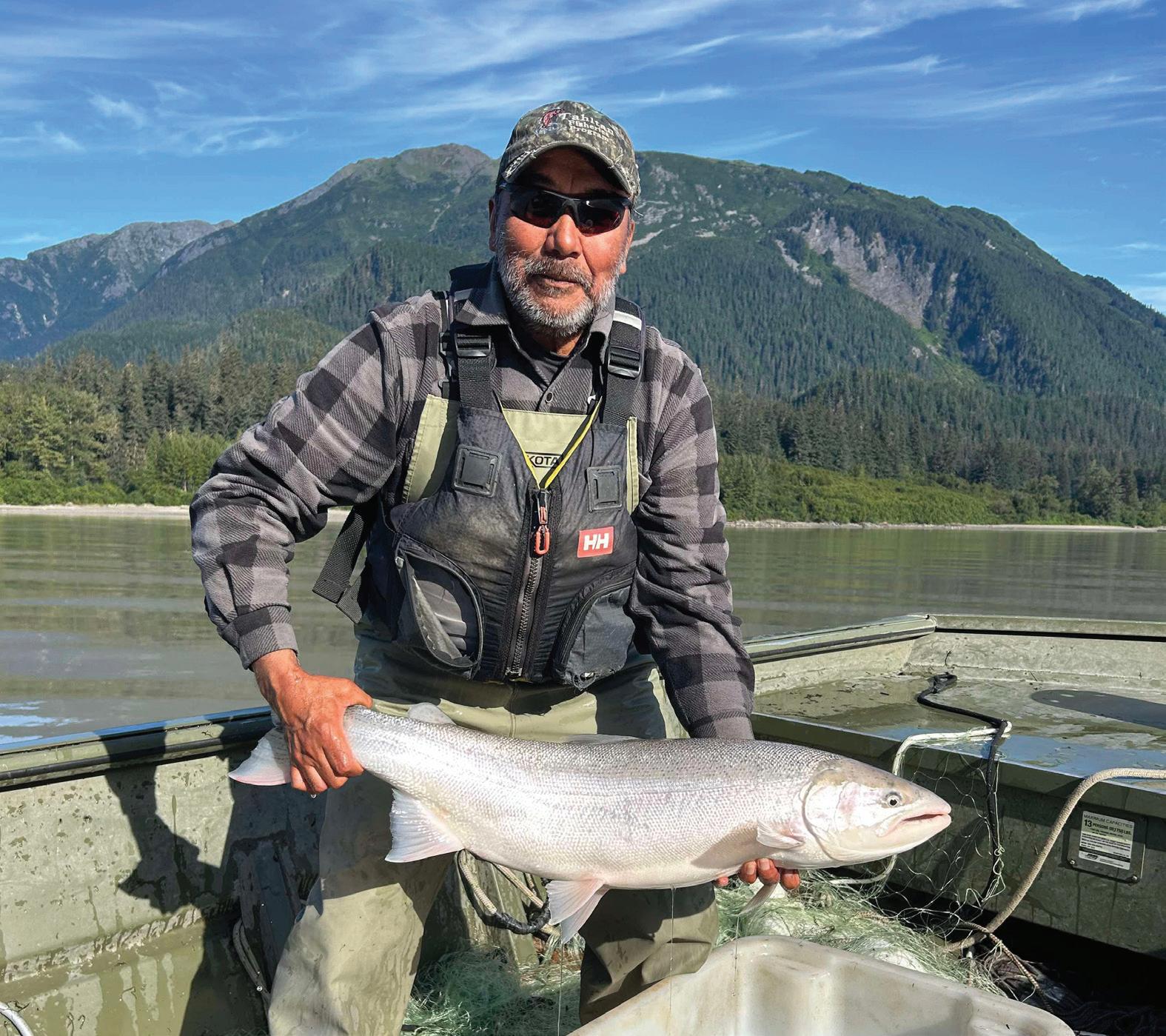
The 2024 Juvenile Chinook and Coho coded wire tagging (CWT) project, which takes place on the lower portion of the Stikine River, was in operation from April 16- May 31, 2024. The project aims to capture and tag Chinook and Coho juvenile salmon and apply a small, coded wire tag to each smolt. This provides essential information about their origin, age, growth, run timing, and other characteristics. This is a critical tool for guiding fisheries along the west coast of Canada and the United States.
This season, the project experienced issues with low water conditions. Despite the challenges, our Canadian and US crews successfully captured and tagged 25,486 Chinook and 4,647 Coho smolts. The TCGFD staff were led by Field Supervisor Jared Dennis and included Kyle Inkster, Drew Inkster, John Nole, Salina Gray, Noreen Mclean, Jay Day, and Raina Feldman (cook).
The TCG Fisheries Department secured the contract in the amount of $577,000, providing employment for approx. 16 field employees from April to October 2024.
The Chinook Mark/Recapture project is an international tagging project designed to capture and tag Chinook salmon as they enter the Stikine
River on the US side of the border. Tags are recovered throughout the fisheries and from the spawning grounds, providing data on run strength and stock distribution. TCGFD staff representing and participating in the project were Kyle Inkster, Drew Inkster and Peter Carlick-Beck, in union with Alaska Department of Fish & Game (ADF&G) staff from May 5 to July 11. Crews successfully caught and tagged 115 large Chinook salmon and 73 non-large salmon.
The non-lethal Sockeye Assessment fishery is designed to distinguish between Tahltan and Mainstem runs of adult Sockeye salmon returning to the Stikine and to give an idea of each stock’s in-season abundance. The returning fish are caught using a combination of drift and set nets. The drift-caught fish give a catch-per-unit-effort (CPUE), which gives us an idea of abundance, and the set net gives the biological samples used in the post-season analyses (stock composition, run timing, and run reconstruction).
The Assessment Fishery sampling program data is used in-season to provide direction to Fisheries Managers to manage the duration of the commercial openings and to ensure that they achieve their management objectives. These management objectives, in order of priority, are:
• Conservation – Make sure enough fish make it to the spawning grounds.
• Food, Social, and Ceremonial – First Nation Fishery
• Commercial and Recreational Sectors
This year, both DFO and TCGFD staff delivered the 2024 project from June 16 to August 24. From TCGFD, we had Drew Inkster, John Nole, Kyle Inkster, Salina Gray, and Shenoa Asp. They captured and released 507 Sockeye in the drift and 918 Sockeye in the set net.
APRIL 16–MAY 31, 2024 WIRE TAGGING RESULTS (Alaska Department of Fish and Game)
25,486
CHINOOK
4,647
COHO
2024 GOALS
30,000
CHINOOK
10,000
COHO
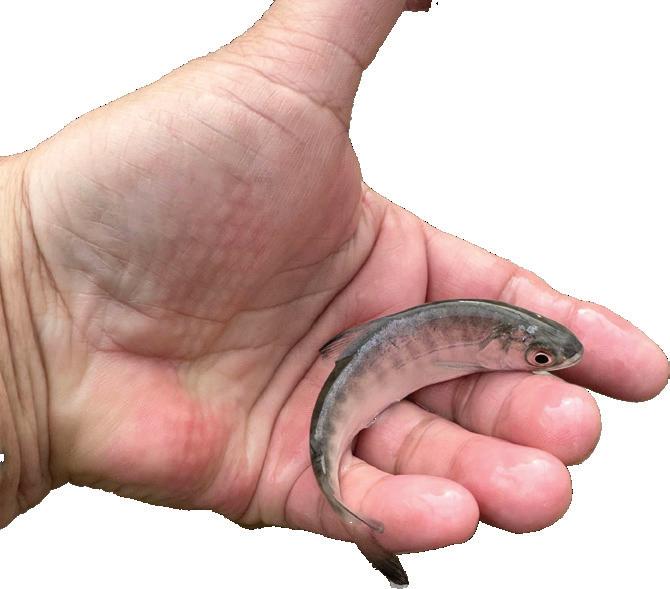
The Sockeye smolts that out-migrate in the spring are counted by means of a juvenile counting weir stationed at the outlet of Tahltan Lake that discharges into Johnny Tashoots Creek. Here, the Sockeye smolts are counted by the bucket load using volumetric displacement; biological samples are also collected from a subset of the smolts. A total count is collected, and the ratio of enhanced vs wild smolts is determined through otolith analysis, which, in 2024, was determined to be 42% enhanced smolts. This was another season of the improved wild production we have observed since 2022.
In 2024, TCGFD staff led by Field Supervisor Michael Nole were Keira Asp, Peter Carlick-Beck, and Trisha Carlick manning the weir and field operations for the project. The project ran from May 3 to June 15, and our field staff counted 2,034,420 Sockeye smolts. The final count exceeded the forecast of 1.8 million. Their highest count and busiest day for the 2024 smolt migration was moving 453,880 smolts in a 24-hour period, occurring on May 17th.
The annual run of Sockeye salmon that returns to spawn in Tahltan Lake is counted through a weir installed at the lake outlet that drains into Johnny Tashoots Creek. The fish jump into the weir, where they are counted visually, and a daily portion of them are sampled to determine the ratio of wild vs. enhanced origin.
From July 7th to September 7th, 2024, the staff counted 78,419 adult Sockeye returning to spawn in the lake. A total of 1,634 were removed for
broodstock and 400 for biological sampling at the weir, resulting in a total natural spawning population estimate of 76,385. The first fish arrived at the weir on July 15th, with the biggest day being August 8th, when 4,222 fish were counted over the 24 hour period. TCG provided a 2-man crew and weir operations were led by supervisor Drew Inkster and supported by field technicians Keira Asp and Trisha Carlick.
Stikine River Coho Salmon Stock Assessment Background:
Chapter 1 (Transboundary Rivers), 3(a)(ii)(A) of the Pacific Salmon Treaty directs the Parties to develop and implement an abundance-based approach to managing Coho salmon on the Stikine River.
Since 2019, a variety of approaches have been investigated to assess Stikine River Coho abundance:
• Chutine River sonar site investigations (2019)
• Katete River sonar assessment (2019 and 2021)
• Iskut River Mark-Recapture estimate (2021, 2022, and 2023)
• Stikine River above-border mark-recapture estimate (2023 and 2024)
The Stikine River above-border estimate (bilateral project) has been identified as the most promising approach.
Stikine River 2024 above-border markrecapture estimate (Year 2)
Event 1: Capture and Tagging (August 16 to September 28)
• At Kakwan Point, below the Canada/U.S. border (extension of Chinook and Sockeye tagging)
• 328 Coho marked (spaghetti tags)
• Drop out estimate: 186 radio tags deployed
• 5 never detected
• 67 of 181 tags deployed crossed border
• Estimated drop out: 62%


Event 2: Recapture (August 25 to October 9)
• Recovery in: Canadian commercial fishery Lower Stikine Coho assessment set net sites
• 3,248 Coho inspected and 19 tag recoveries
Stikine River Coho Salmon Stock Assessment Preliminary Abundance Estimates
• Northern Endowment Fund application is pending
• Continue to refine bilateral project
• Continue to develop Coho salmon genetics baseline in Canada
The TCGFD staff participating in the project were Jared Dennis, Kyle Inkster, Drew Inkster, Peter Carlick-Beck, Salina Gray, Keira Asp, and John Nole.
The small commercial Coho fishery, which takes place in-river above the US/CAN border, opened on August 31st, and concluded on September 21st. A total of 2,682 pieces were harvested. DFO and TCGFD staff, who also completed the Coho Assessment work, sampled and monitored the fishery.
COHO STOCK ASSESSMENTS
3,248
NUMBER OF COHO INSPECTED ABOVE BORDER
19
NUMBER OF COHO TAGS RECOVERED
328
NUMBER OF COHO SPAGHETTI TAGGED
20,079
53,445 ABOVE BORDER POPULATION ESTIMATE
IN-RIVER POPULATION ESTIMATE
The TCGFD received an initial AFS contribution of $293,000 from DFO in 2024. Additional PST funding, in the amount of $224,105, combined with surplus carried over from the 2022/23 Agreement contribution, resulted in total DFO funding in 2024 of $678,826. The AFS contribution agreement allows for office infrastructure; administration costs; vehicle purchases, insurance, and maintenance; equipment purchases and maintenance; wages; meeting travel; school programs; and an increasing list of stock assessment and monitoring projects, summarized here. Some of our long-term projects (previously funded under the bio contract) have been moved over under AFS administration to ensure stability and continued funding.
The enumeration of the adult Chinook salmon that return to the Little Tahltan River each year is counted by visual means using a video counter that records each fish as it passes by the camera. The staff can then download the files and review them to inspect for size, sex, and tag presence.
This season was the second year the crew tested a new device called a river scanner, purchased by TCG. The scanner records the data straight to a file, rather than the crews using their eyes and a background grid to make the measurements. They will continue using both methods to test and prove the new method works as well as the old. This year, our staff recorded 233 large, 904 medium, and 659 jacks. Site operations were again led by Field Supervisor and site expert Jared Dennis with assistance and support provided by Field Technicians Jay Day and Trisha Carlick.
This season saw the second successful pilot program using the sonar equipment to help get a more accurate estimation of the number of returning Chinook and Sockeye that enter the Tahltan River watershed. The site location was selected in 2022, just below Lava Beds, and is where the sonar unit was installed by DFO and TCGFD staff. The team arrived at the site on June 10th, and the testing was conducted through until August 17th. The TCGFD staff that participated in the operations were Hunter Frank, Shenoa Asp, and Raina Feldman. Due in part to capacity issues, the Tahltan River Sonar project is paused and will not be conducted in the 2025 field season. We look forward to resuming this work as soon as we are able.
The Tahltan food fishery (FSC) that takes place in the Telegraph Creek corridor of the Stikine River was once again monitored by long-term employee Noreen Mclean. The purpose of her job is to issue food fish and transport permits and to collect catch records from all Tahltan members who fish for their sustenance needs. Noreen then enters the data on a spreadsheet and our weekly harvest information is provided electronically to DFO and TCGFD.
In 2024, the opening of the FSC fishery was delayed by two weeks to aid in the ongoing conservation efforts to let more Chinook (King) salmon (who are co-migrants during the start of the Sockeye run) safely through, assuring they make it past our fishing sites and onto their Tahltan River spawning grounds. This management action is proving to be effective and we will continue to delay the start of our fishery until the Stikine Chinook populations start to show signs of recovery. Every single Chinook (King) salmon that makes it back to spawn is a huge factor for the continuation of the stocks.
TAHLTAN FOOD FISH HARVEST
49 223
LARGE CHINOOK JACKS
7,709
SOCKEYE


The sampling of fish from the FSC fishery to collect biological data that aids in the stock composition and tag recovery for Chinook and Sockeye ran from July 10th to August 10th. The staff, led by Supervisor Raina Feldman, Shenoa Asp, and Keira Asp, were able to sample 600 Sockeye and 24 Chinook provided by the Tahltan food fishers and families.
During the 2024 fishing season, Margaret Asp returned to her position as the TCGFD Fisheries Guardian. During the summer, Margaret continued to monitor fishing activities on the Upper Stikine and Lower Tahltan rivers. A significant component of Margaret’s work is community engagement, informing the public and members about conservation concerns, expected returns, and other general info regarding fisheries or the area. Additionally, Margaret is authorized to provide permits and receive catch records. Unfortunately, in 2024, the TCG Fisheries Guardian was unable to perform a joint patrol with the Federal Fisheries Officers, as was done in 2022. The goal is for those patrols to collaborate annually. This kind of collaborative approach ensures the resource has the best protection possible. This is a very important role, and a tough one, and we would like to recognize Margaret for her continued dedication to the salmon of the Stikine.
In 2023, we piloted a succession training strategy with the creation of a shadow position within the existing Upper Stikine River Monitoring programs operated by the TCGFD. This was mirrored in the 2024 season and will become part of the annual stock assessment and fishery monitoring into future years. The objective of the shadow position is to provide the opportunities and options for this individual to rotate through, participating and shadowing the Fisheries Monitor, Fisheries Guardian, and Stikine Stock Separation staff as they conduct their respective duties throughout the field season. This will ensure that we are building capacity within our field staff to move into monitoring and stock assessment projects positions with experience and confidence in their abilities.
2024 Egg Take Summary – TCGFD crew flew to the site with BC Yukon on the 8th of September. Four egg takes were completed between September 13-19, and a total of 2,002,568 fertilized sockeye eggs were delivered to Snettisham Hatchery. In true form, the fall weather was not entirely cooperative for egg transport flights. We experienced a one-day delay on our first egg lot, and a two-day delay on the second egg lot. The third and fourth egg lots were same-day deliveries. Egg transport flight services were provided by Ward Air from Juneau. Camp was winterized and crew were demobilized and flown out on Sept 25th with BC Yukon Air. Much appreciation to Kenny, Gerri, pilots and staff at the base for their support.
Eggs from 772 females were collected and fertilized by 772 males respectively. Fecundity (# of eggs per female) was estimated at 2,594 which resulted in 2 million eggs delivered. In addition, ovarian, kidney, and broodstock (lengths and otoliths) samples were taken and provided by field staff, as per the project protocols.
Participating crew members were Richard Erhardt, Cheri Frocklage, Drew Inkster, Peter Carlick-Beck, Harlin Neehas, Lo’oks Ushyeh, Jay Day, Noreen Mclean, and Trisha Carlick. Trisha returned for a second year, joining the crew in the capacity of camp cook.
Gratitude to our returning crew members for their ongoing commitment and the lending of expertise to some new field staff on this project.
Many thanks to Kevin Steck and the crew at Snettisham Hatchery. We truly appreciate all the people on the other end that make sure the support fights, fuel, propane, supplies, and groceries keep coming in. Mēduh to DFO for use of the camp facilities.
On May 16-17, 2024 an estimated 1,592,000 Sockeye fry were released into Tahltan Lake from the 2023 egg take. The 10-year average is 1.93 million.
Expected release in the spring of 2025 is 1.57 million enhanced fry resulting from the 2024 Tahltan Lake egg take.
2,002,568
1,592,000
The estimated 200 Sockeye fry reared through the winter of 2023-24 were released at the confluence of Tahltan River and Stikine River on June 11, 2024 with a gathering of students, teachers, parents, elders and community members in attendance. A hot dog lunch was cooked by the RCMP. Our gratitude to the RCMP staff for their continued participation and assistance with the day’s activities. Mēduh. Unfortunately, 2024 also saw the pause of the salmon classroom incubation program. TCGFD will continue to strive to increase our presence in the three local schools. Typically, students rear the Sockeye eggs to the fry stage, observing egg and fish development along the way and learning about the biology of the Pacific Sockeye salmon and the cultural values and significance of the Stikine Salmon resources to the Tahltan Nation.
It was decided over the summer months during our bi-weekly department meeting discussions, that we would not have the capacity to maintain the program for the 2024-25 school year. Our APO Naia Newton, who is the lead on this project, announced that her husband was up for transfer and they would likely be departing Dease Lake in December or January, which prompted the pause of the program for this year.
TCGFD Manager, Kerry Carlick, thoughtfully plans for and provides the annual staff training schedule to ensure the health and safety of our field staff while they conduct their various stock assessment duties. The following is a summary of prior, current, and anticipated courses and certifications to be provided during the spring training sessions.
2024
• Occupational First Aide Certification
• Transportation Endorsement
• Working Safe In Water (WSIW) Certification 2025
• PAL Certification 2026
• Riverboat Safety Certification
• Bear Awareness/Avoidance & Non-Enforcement Shot-Gun Certification

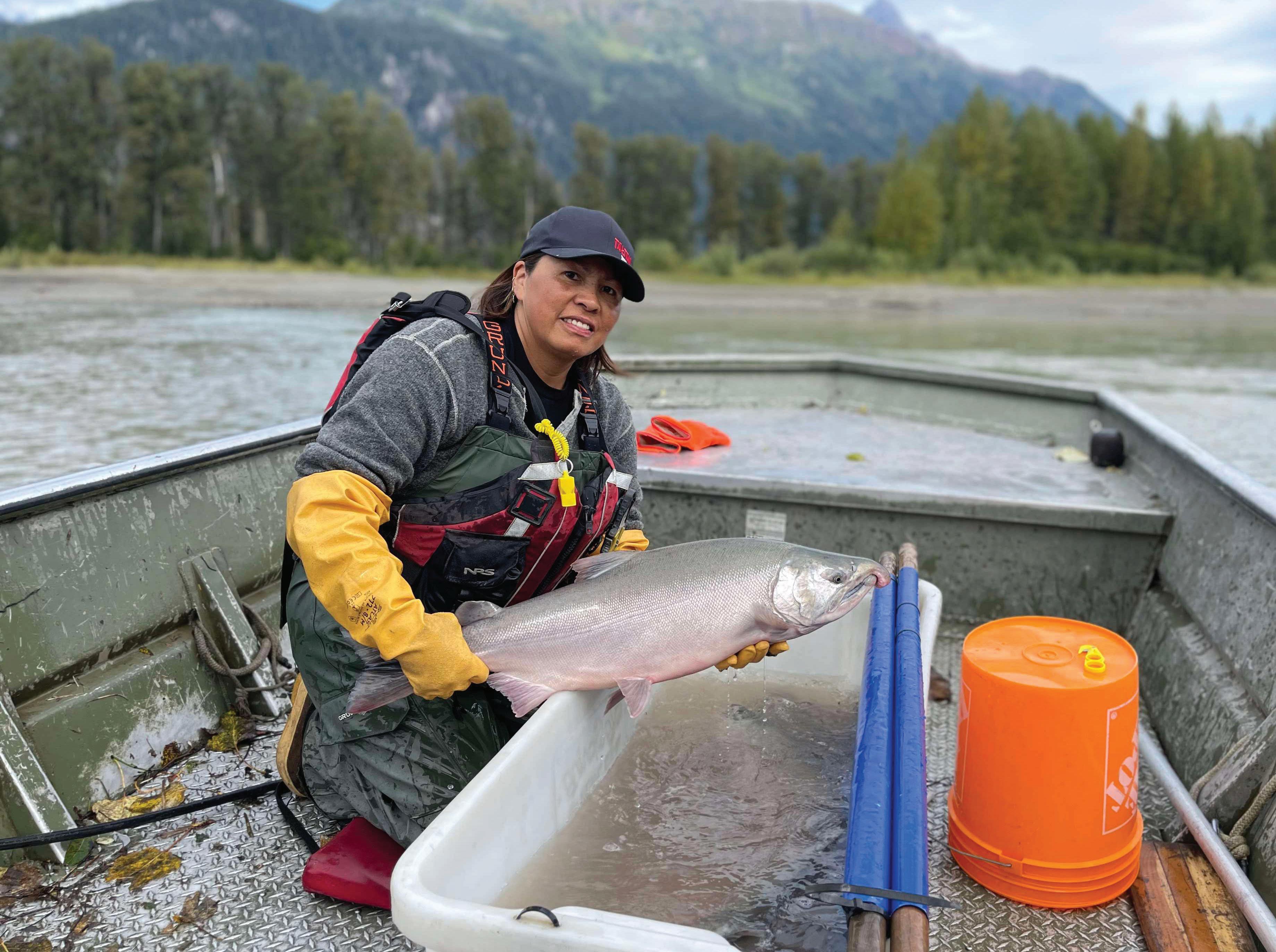
CHINOOK AERIAL INDEX SURVEY
The 2024 Stikine River Chinook aerial survey was completed on August 1, 2024 by TCGFD Manager Kerry Carlick and TCG Wildlife Coordinator Brianna Tashoots. The survey flight was conducted with Tundra Helicopters. The flight left Dease Lake at about 09:30 and returned at approx. 18:00. The weather throughout the day was excellent, with sunny skies and overall great conditions for the survey flight.
The results are as follows (in sequential order):
The 2024 Stikine River Sockeye aerial survey was completed on September 12, 2024 by TCGFD Director and Manager Cheri Frocklage and Kerry Carlick, respectively. The survey flight was again conducted using Tundra. The flight left Dease Lake at about 07:30 and returned just after 16:00. The weather throughout the day was overcast, with some periods of mixed blue skies and clouds.
The results are as follows (in sequential order):
Summary
Chutine River 261
Scud River 124
Porcupine River 39
Verret Sloughs 107
Verret River 97
Bronson Slough 0
The 2024 Stikine River Coho aerial survey was completed on November 1, 2024 by TCGFD Director and Manager, Cheri Frocklage and Drew Inkster, respectively. The survey flight was done with Tundra. The flight left Dease Lake at about 09:00 and returned around 19:30. The weather through most of the day was excellent conditions, with no precipitation during survey time. This provided ideal viewing conditions throughout the day, with some glare. Temps ranged from -6℃ to 6℃ during the day.
The results are as follows (in sequential order):
Summary
Craig River 1614
Scud River 177
Porcupine River 89
Verret Sloughs 0
Verret River 64
Katete 253
Katete (West) 64
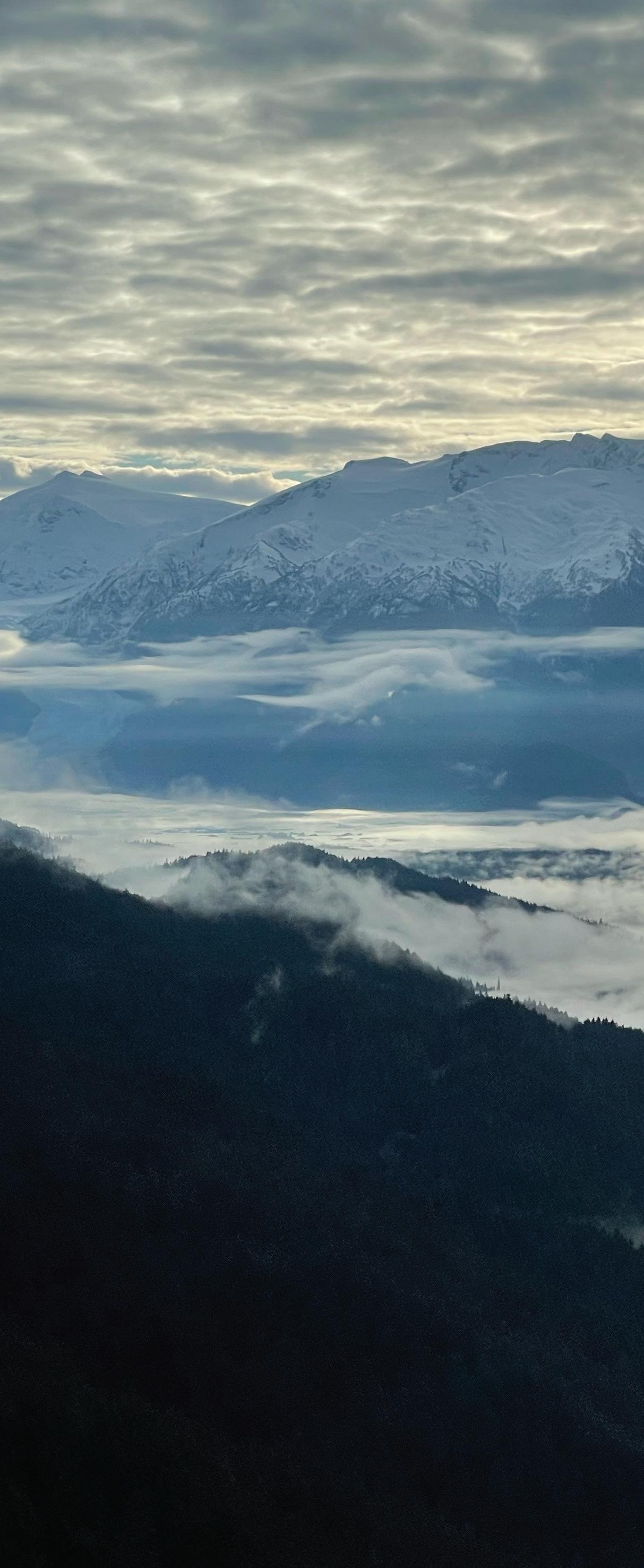
TCGFD Managers continue to attend the various fisheries management meetings in-season and during the winter months, including but not limited to:
• Stikine River Salmon Management Committee
• Transboundary Technical Committee and Enhancement Sub-Committee
• Pacific Salmon Commission –Transboundary Rivers Panel (Kerry-TBR Panel Rep. Cheri-TBR Panel alternate)
• Pacific Salmon Commission – First Nation Caucus (Kerry now representing the TBR Nations on the FNC Executive Committee)
• G2G Meetings with DFO and TFN post and pre-season
• TCGFD/DFO – In season bi-weekly management meetings
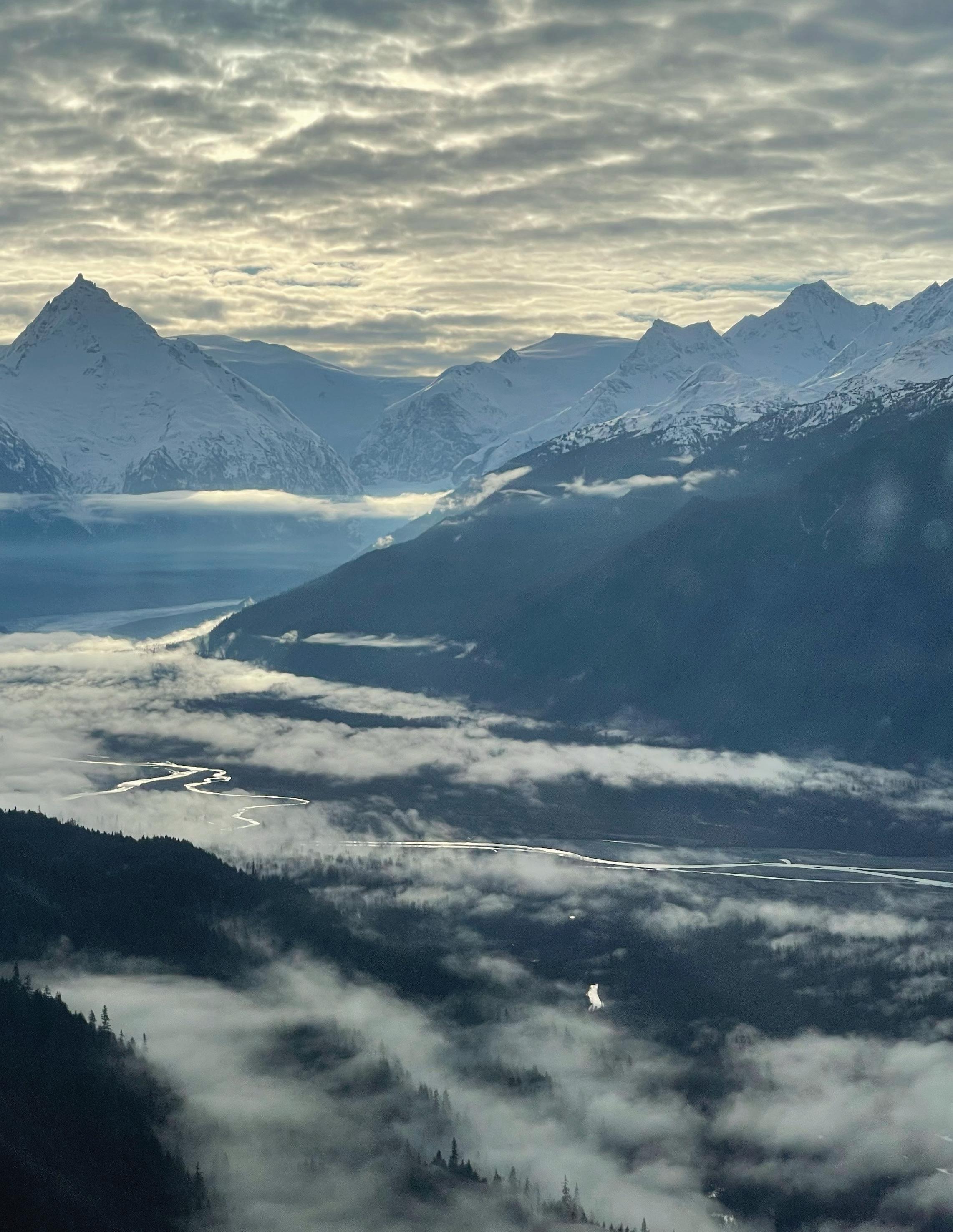
• TCG/DFO – Tahltan Lake Dam Working Group
• TCG - BC/Tahltan Fish and Wildlife Working Group
• TCG - Major Project Reviews (Fisheries component)
• TCG – Directors Meetings
• TCG - Fisheries Department bi-weekly meetings
• TCG – Community Engagements
• TCG – Strategic Planning Meetings with Leadership and Board of Directors
• TCG – Tahltan Elders Council
• TCG - Fisheries Forum
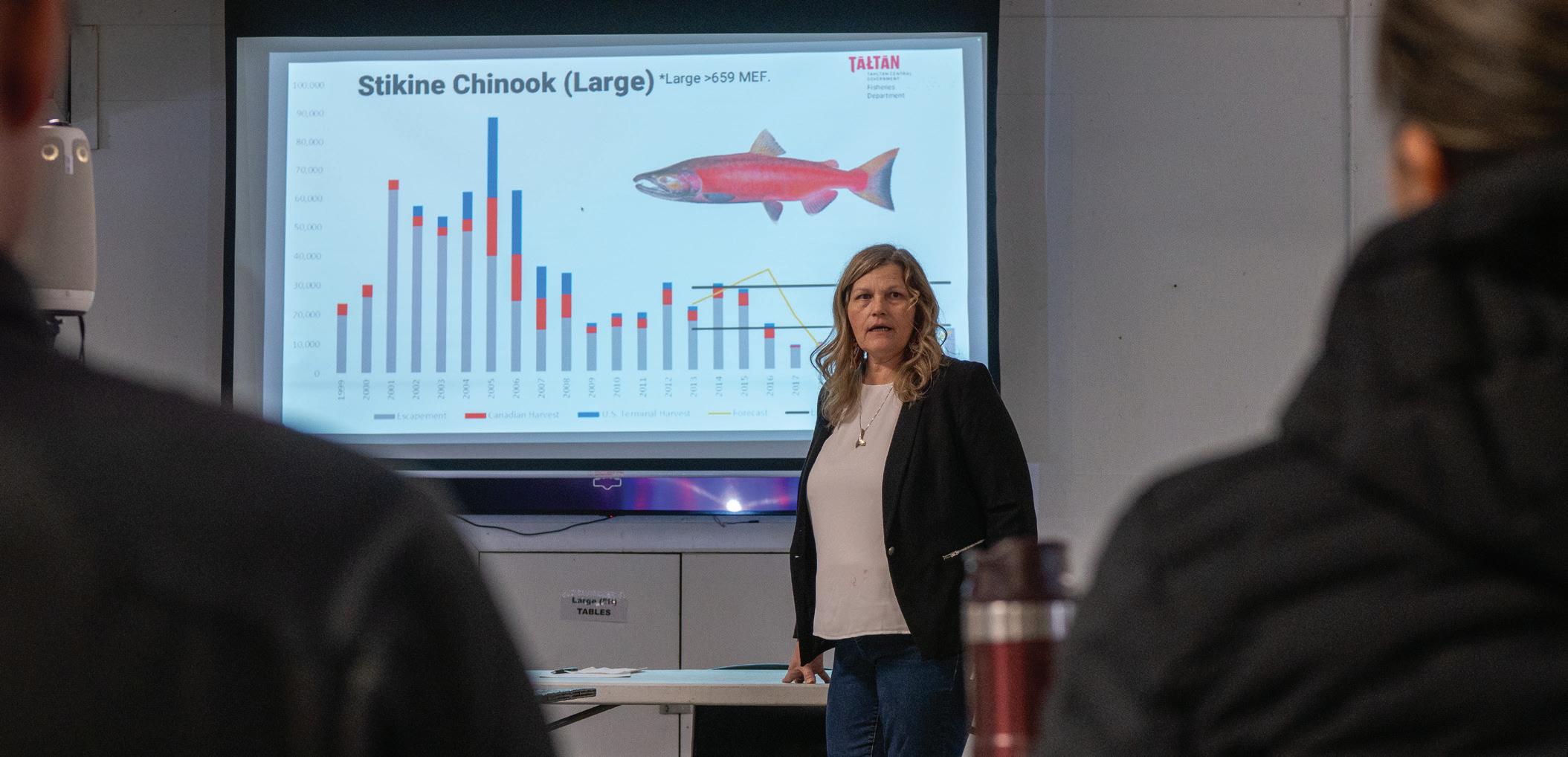
During the 2022 AGA, there was a resolution passed instructing the TCG to hold a 3-day Fisheries Forum in territory to enable open and transparent discussions with members and seek direction regarding growing fisheries issues and concerns.
Being respectful of the current TCG financial restraints, a down-sized meeting was held February 19-21, 2025 in Dease Lake, with funding provided through the AFS Contribution Agreement.
Please see the list of resulting resolutions and direction received on the final day of the Forum:
1 WHEREAS, The Elders Council desires to hold the Fish Welcoming Ceremony in May, including an apology for anything we may have done to offend the salmon, therefore be it resolved that the TCG and Fisheries Department organize and conduct the Salmon Welcoming Ceremony as requested.
2 WHEREAS, Be it resolved that the Tahltan Elders Council ask for our community members to follow the conservation directives of the TCG Fisheries Department regarding the Chinook salmon fishery.
3 WHEREAS, The Tahltan communities support the investigation of the re-diversion of the feeder creek back into Allen Lake, with periodic updates from TCG Fisheries Department to membership.
4 WHEREAS, Fisheries policies do not currently exist, we request that the TCG Fisheries Department discuss this further with the Leadership Forum in order to create and formalize policies for the Tahltan Food Fishery based on traditional and ethical values and practices and with direction from the Elders Council and membership.
5 WHEREAS, The Tahltan Nation authorizes the TCG Fisheries Director to elevate the concerns around the status of Stikine Chinook salmon stocks with news media releases.
6 WHEREAS, The Tahltan Nation has concerns over the health of our freshwater fish that is consumed by our members, therefore may it be resolved that we support efforts made by the TCG Fisheries Department to create and implement studies on freshwater lakes and systems within our territory.
7 WHEREAS, Be it resolved that the Tahltan Elders Council requests the Chiefs and Councils of the Tahltan Band and the Iskut Band provide support regarding the conservation of our Stikine Watershed Chinook salmon stocks.
I would like to thank all the people who were able to attend, either in person or through virtual means, over the course of the three days that we gathered at the community hall. Mēduh for your contributions to the discussions and for the direction that was received from our Elders, members, Band Councils, TCG Leadership, and the Fisheries Department staff.
I would also like to acknowledge the TCG Communications & Media Director Adam Amir for travelling north and taking care of all the communications and technical needs for the Forum. The meals were provided by the Dease Lake School 2025 Grad Class, parents and teachers. They kept us all well fed and the food was fabulous…all tied together with great service and lots of smiles. Mēduh, we appreciate your hard work and all the wonderful meals.
Caption: Fisheries brought our their archives for the Forum, and the Department of Culture & Heritage digitized a collection of old Fisheries videotapes, slides, and photos.

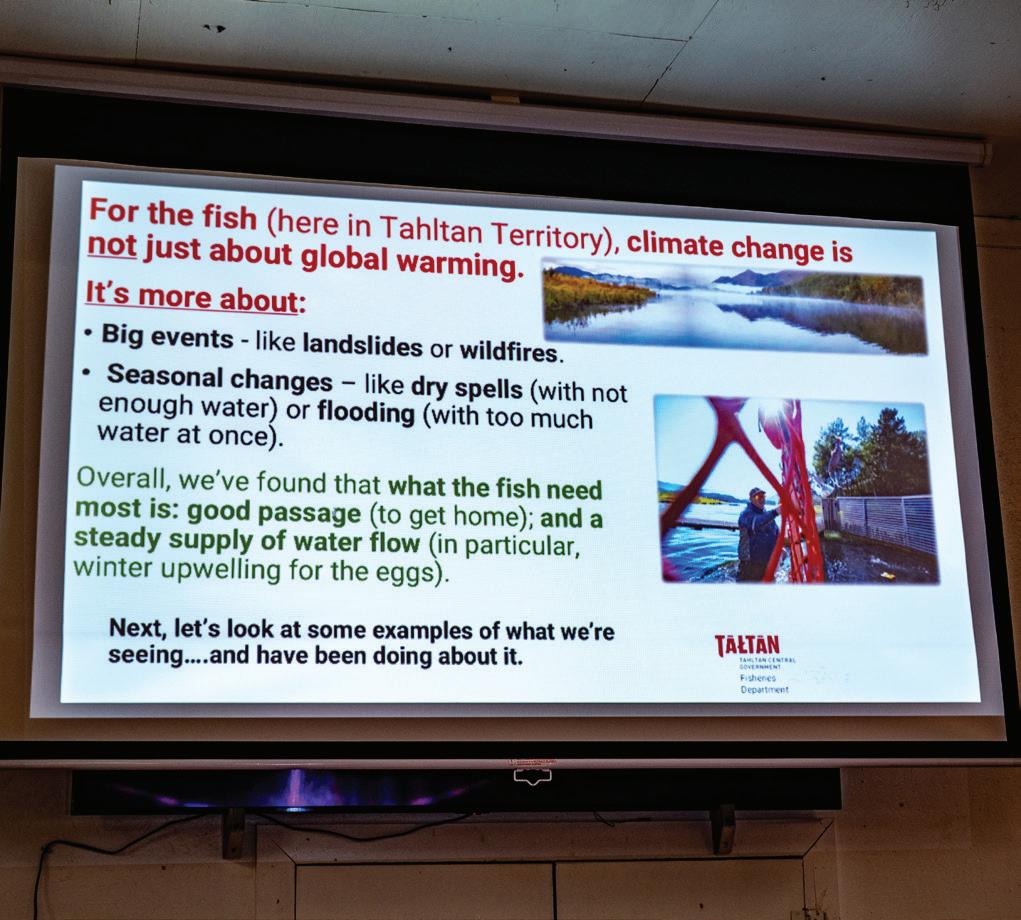
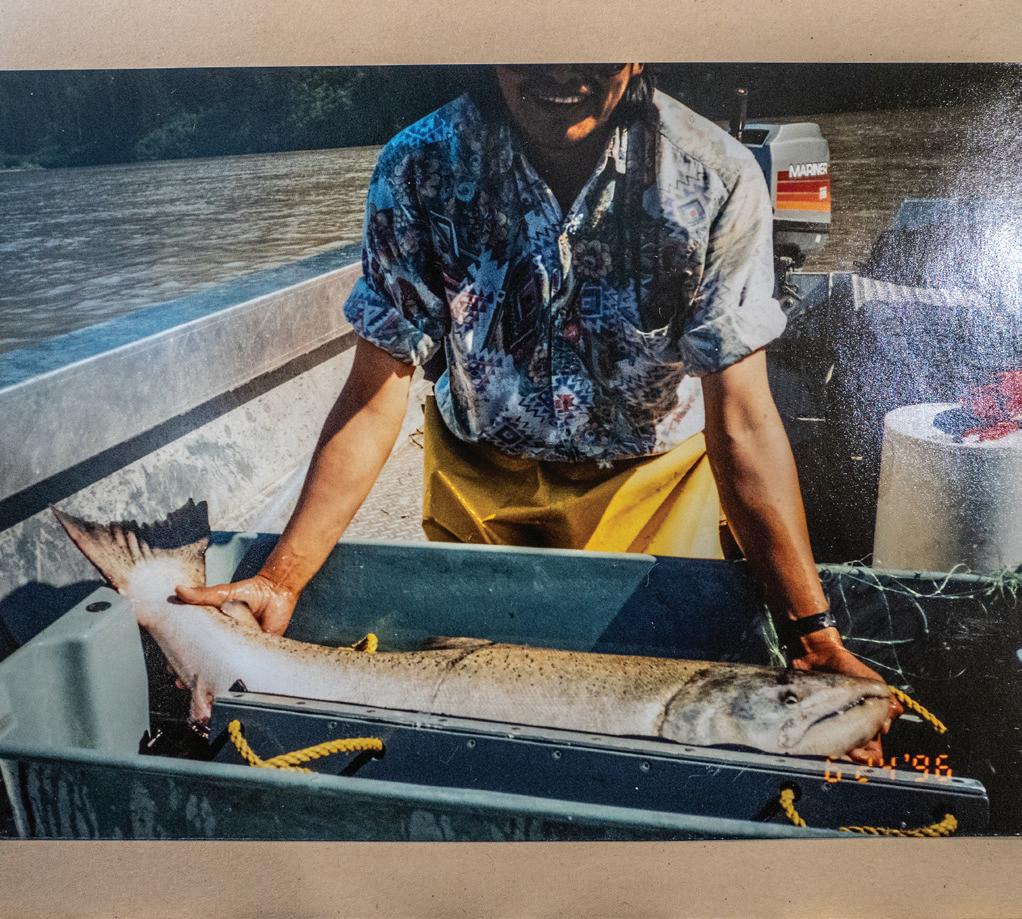
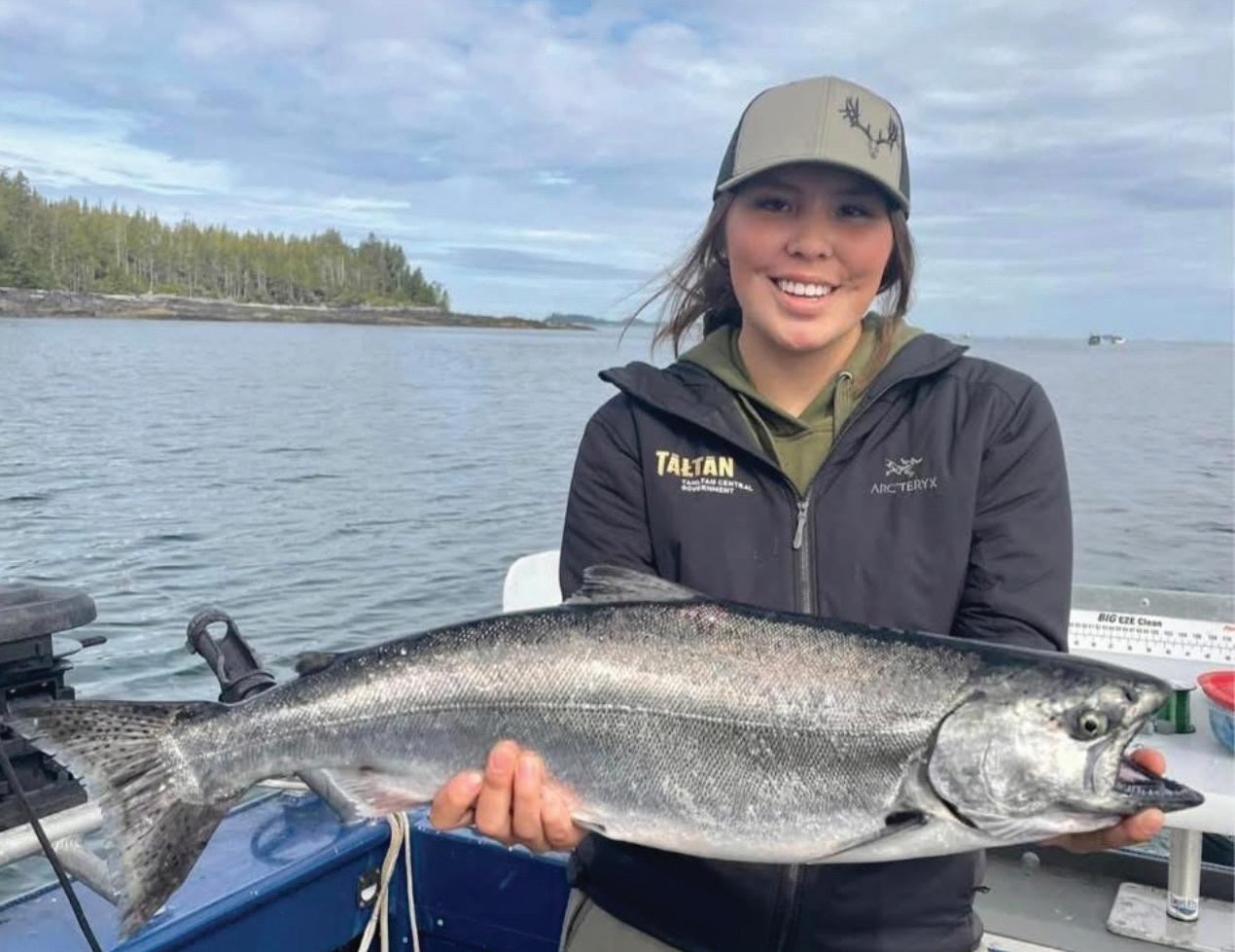
*There are no means to identify Stikine bound Coho in the marine fishery
The following table shows the Bilaterally agreed upon escapement goals for Stikine Chinook, Sockeye and Coho salmon, as set out in the US/Canada Pacific Salmon Treaty.
Watershed Species Area
Stikine Chinook Stikine 28,100 (pre-season) 24,500 (in-season)
(MSY*)
Comments
21,000 (MSY pre-season) 17,400 (MSY in-season) 14,000–28,000 Includes Little Tahltan
Est. Feb 2023
Stikine Sockeye Stikine Wild 43,600 24,000–58,000 Est Feb 2023
Stikine Sockeye Tahltan 22,600* 11,000–25,000 Est Feb 2023
*Includes 3600 Broodstock
Stikine Sockeye Mainstem 21,000 13,000–33,000 Est Feb 2023
Stikine Coho Stikine Not Yet Established N/A To Be Established by 2029
*MSY is the Maximum Sustainable Yield is the maximum level at which a natural resource (fish) can be routinely exploited without long-term depletion.
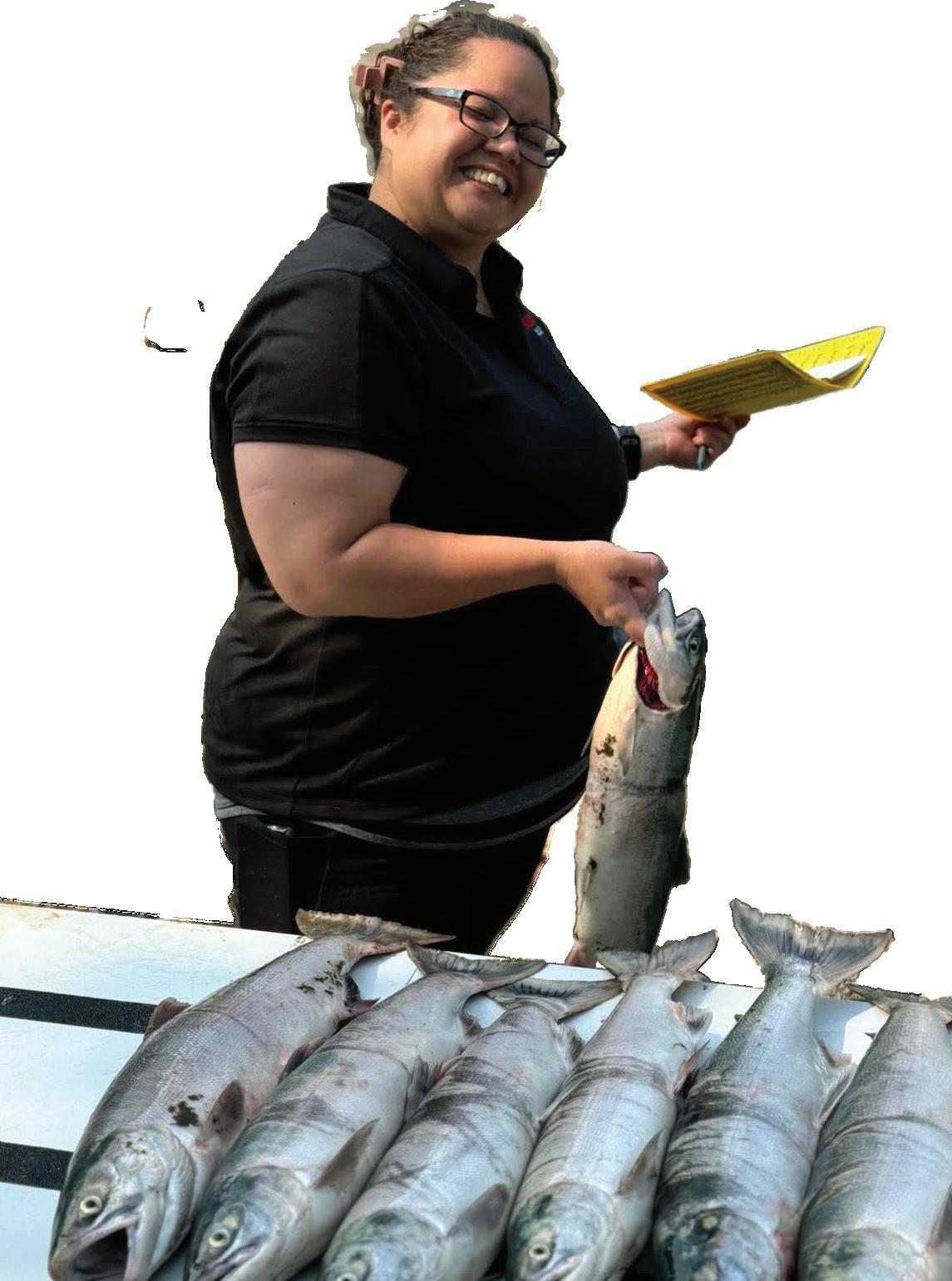
The Stikine Sockeye Escapement Biologically Agreed Goal Review has been completed and findings were presented to the Pacific Salmon Commission - Transboundary Rivers Panel in February 2023.
The recommendations were adopted by the Panel and new Stikine River Sockeye salmon escapement goals are now being used to manage the stocks.
There is a Chinook Biological Escapement Goal Review currently underway by the working group established by the Transboundary Technical Committee.
There are currently no means of accurately estimating Stikine Coho escapement or run size. The work to develop an accurate estimate of Stikine Coho is ongoing.
Left: Trisha Carlick, Stikine Stock Separation (Food Fish Sampling).
Right: Sculpin, incidental catch while seining for smolts. Lower Stikine.
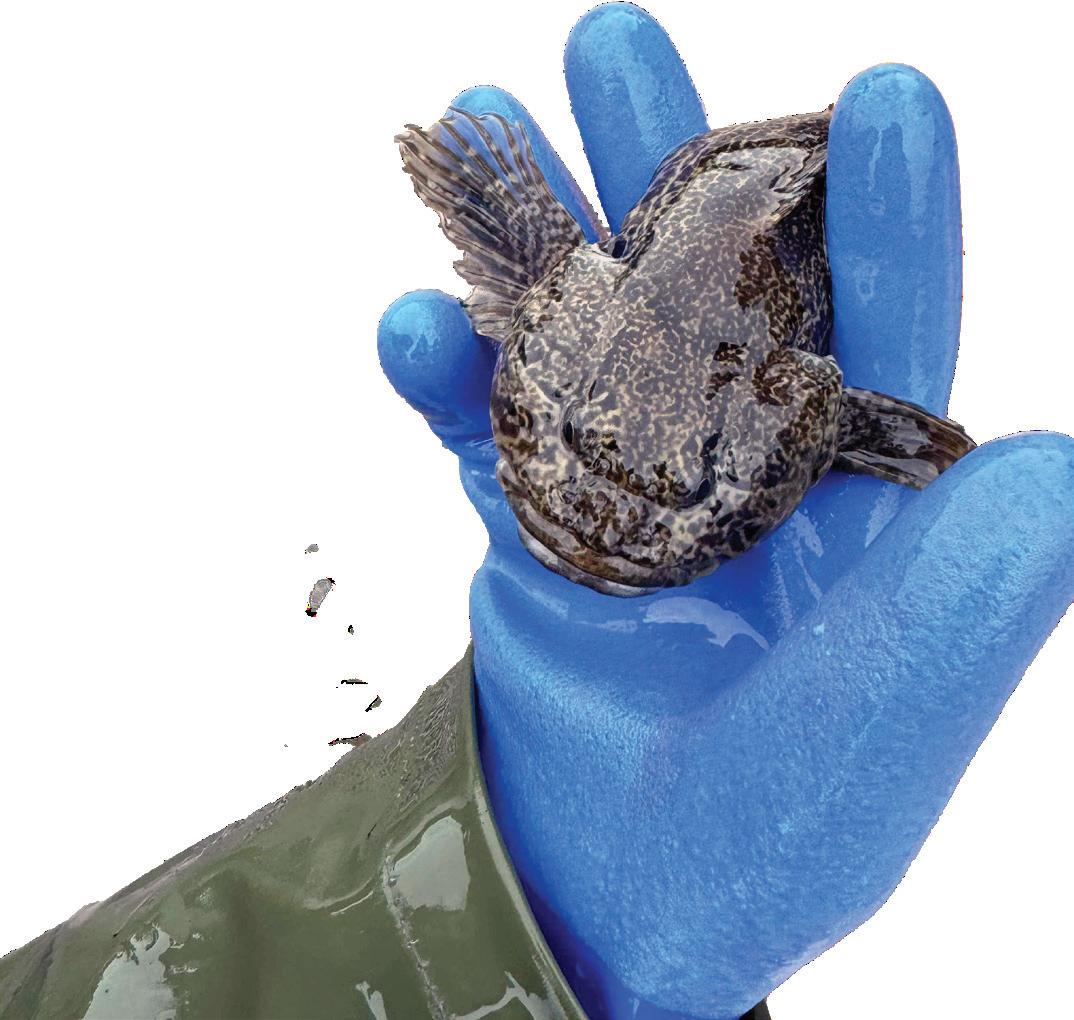
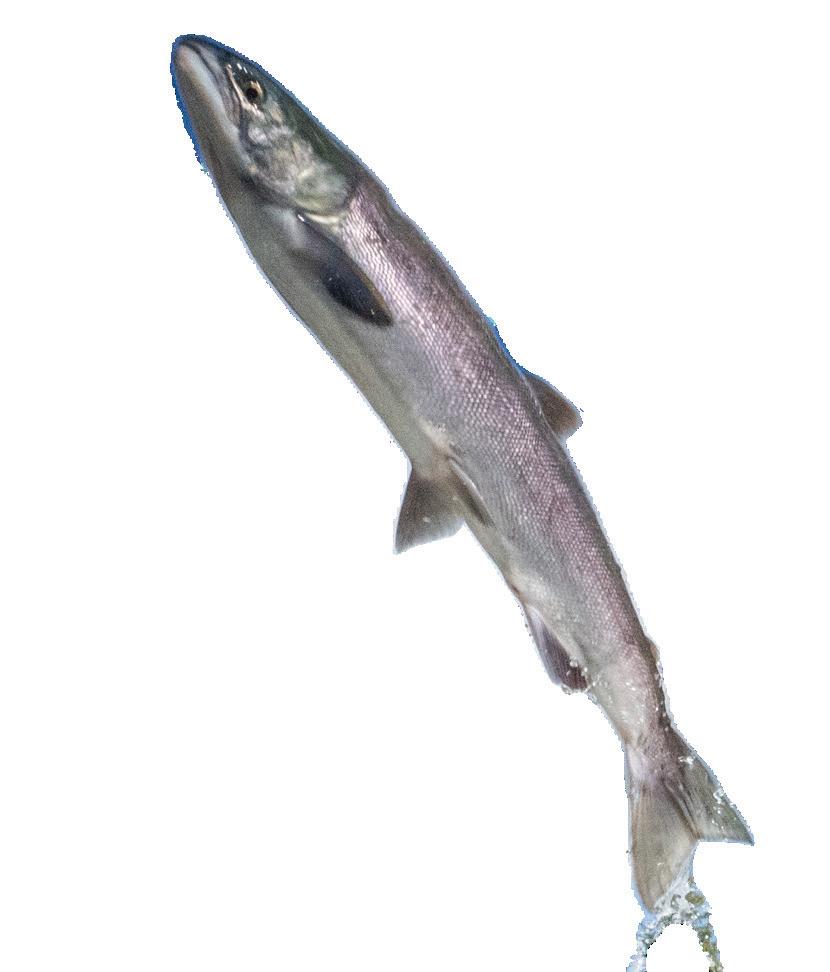
In the fall of 2021, in partnership with Environment and Climate Change Canada, the TCGFD installed a hydrometric station on the Tahltan River. The station’s name is “Tahltan River at The Mouth (08CE005)”. The station can be searched on the Government of Canada website, using the station name. This equipment is key in our efforts to monitor water levels on this river. The Tahltan River watershed is a key habitat for salmon species harvested by Tahltan fishers. For years the gauge at Tuya was used as a proxy but now we have accurate real time data on what the water is doing. With this information we can monitor climate change trends, such as when the timing of the spring freshet happens and when the lowest water is, all of which are very useful data when it comes to salmon management.
The Tahltan Lake Dam Working Group (TLDWG) was established in 2021 to guide the process of replacing the failing lake outlet weir structure that has been on site since 1959. Since 2021, the project has progressed to the design phase with ongoing site preparation to commence again in May 2025 and construction due to start in the fall. In concert with the working group and the project engineers, TCGFD has been engaged in the design process for the new structure, the logistics of implementation of the overall project, coordination of Archaeology surveys in the area, and on worker health and safety improvements at site.
Archaeology is an important factor in any project in Tahltan Territory. TCGFD has been facilitating Archaeology surveys at the site. A number of artifacts have been uncovered during these surveys, further enhancing our understanding of the heritage resources at Tahltan Lake and our deep history and traditional use at the site. Detailed surveys were conducted around areas of the new weir footprint and material borrow areas, as well as at gravel and rock borrow areas away from the camp. The TCG Archaeology team has completed detailed cataloging of the artifacts, which include obsidian biface points and a large flake tool.
Three PSC Northern Fund projects were conducted in the 2024 field season. The first two projects listed below had funding arrangements that were extended at our request into 2024, as we were unable to complete the fieldwork in the 2023 fiscal year.
1 Lower Iskut Fisheries Enhancement Study (2023 funding carried over)
2 Upper Stikine Chinook Habitat Conservation Study (2023 funding carried over)
3 Tahltan Lake Water Balance Study 2024 funding
The project purpose here is to design a strategic program to identify and address critical impacts from climate change, in particular substantial effects on Chinook habitat or access, influenced initially by wildfires. In 2023, we began monitoring / sampling of local river temperatures and level of turbidity (color/ dirtiness of water). General indications aligned with community observations of the water being above average in temperature and turbid during the Chinook spawning period. We plan to continue this initiative with turbidity data logging and the possible investigation of options for Chinook restoration / enhancement at the local, historical streams surrounding Telegraph Creek and Glenora.
This project proposes to refine options and plans for the enhancement and restoration of mainstem Lower Iskut Sockeye salmon. Key objectives for the project include developing a more detailed summary of the conceptual project thus far, and options for moving forward; collaborative consideration of the best approaches for implementation; and conducting an online workshop in relation to the above. Overall, we are also looking at options for a future, potential food fishery on the Iskut River, which addresses both conservation and food
Work continues at Tahtaneh to complete the weir replacement at the outlet of the lake. The Tahtaneh Water Balance Study has been moving ahead with the completion of the computer model for the watershed. The model results have been used in the design of the new weir (dam), and in the establishment of water management planning for the operation of the new weir.
As part of the field work at Tahtaneh, Tahltan Fisheries is adding new monitoring locations to increase the amount of surface water and groundwater data for the water balance model. This includes a new hydrology station in the Tributary 2 (Grass Lake) watershed and the re-establishment of a groundwater monitoring station at the northeast side of the lake that was damaged the year before by curious grizzly bears. Tahtaneh has never had a watershed management tool like this in the past. The team is excited to continue to add to the monitoring data at the lake and to use the water balance model to assess climate change effects and increase our understanding of the hydrology of the watershed. All of this supports the long term vision for the lake whereby we use the water
The addition of the Tributary 2 hydrometric station will allow for further investigations and modeling to encompass all of the Johnny Tashoots watershed down to the Tahltan River confluence. This will allow for a more detailed, science-based approach to managing the fisheries resources and habitat of the lower river. Johnny Tashoots Creek has important Chinook and Coho habitat, in addition to the rearing
and migration of lake-bound Sockeye, so we are going to add a hydrometric station at the confluence of Johnny Tashoots Creek and the Tahltan River to begin collecting flow and water temperature data. In 2025 this new data will expand the model to include all of the watershed which will support a better understanding of the habitats in Johnny Tashoots Creek and manage the flow from the lake with a “fish first” approach.
Water quality sampling from both streams and groundwater sites is also a part of the study as we build a water quality database for the Tahtaneh watershed. In 2024, we mobilized to take samples from 10 new sites across the watershed to fill gaps in the data. The water quality information from the groundwater wells gives important information on water quality at the spawning areas and provides information on temperature and chemistry in egg pockets in the gravel. The water quality data also supports the water balance model by providing insights into water types, sources and chemistry trends. Data from the water balance study is all being stored in a private data platform for ease of use.
Tahltan Fisheries is also involved in the design of the new weir through the use of the water balance model, field surveys, construction oversight, support for archaeology work and project logistics. In 2024, weir construction activities involved building an emergency spillway to better manage flows through the weir for the upcoming construction period in September and October. Through working group technical meetings, Tahltan Fisheries is involved in the design of sampling platforms and facilities to make the final product as fish-friendly and worker-friendly as possible.
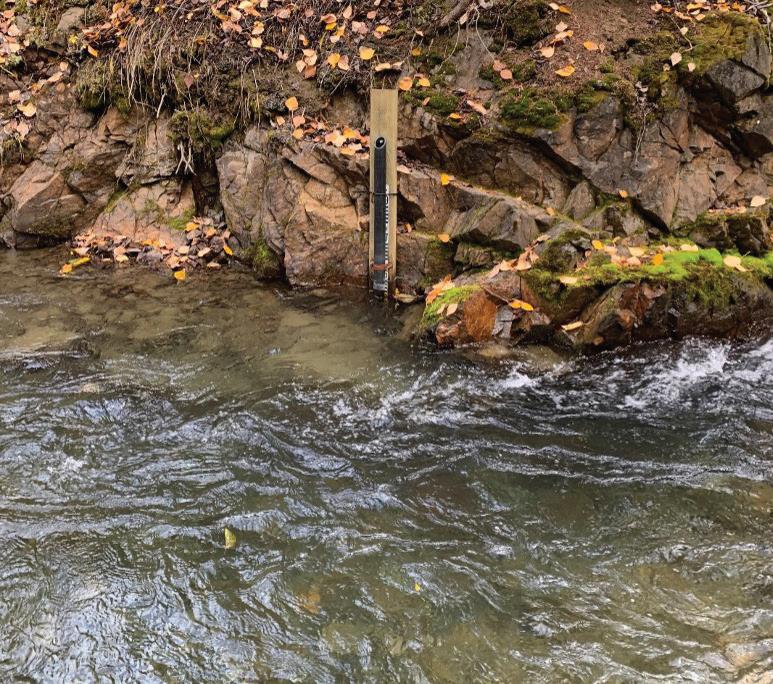
Left: The new hydrometric station on Tributary 2 creek downstream of Grass Lake.
Right: Mitch Engdahl pumping a groundwater sample from the monitoring well at the main spawning area.
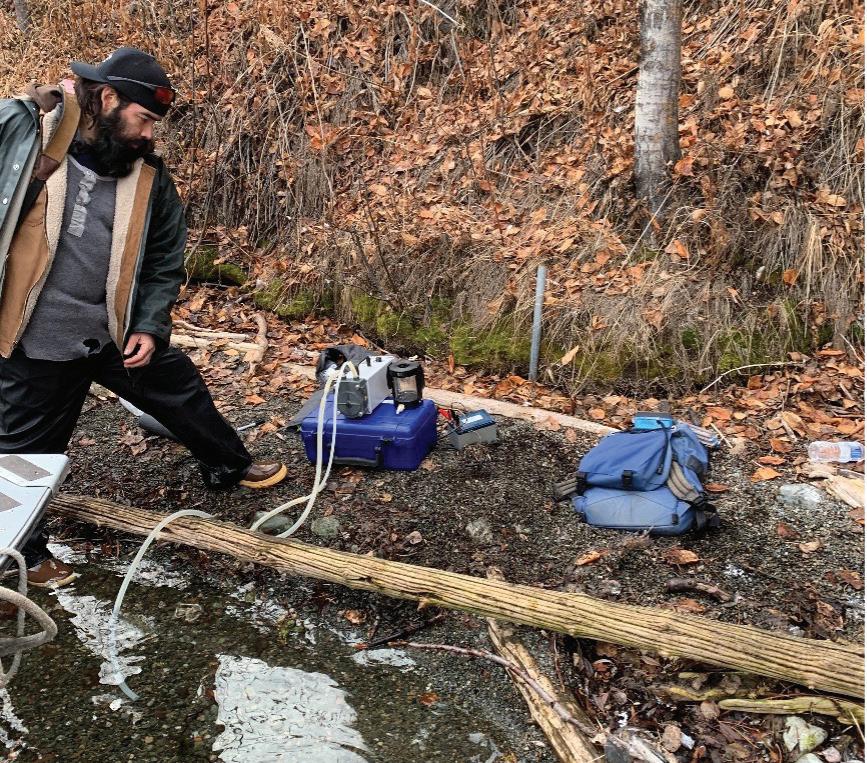
Overall, this has turned out to be a very complex project with logistical, fish-passage and water management challenges.
Tahltan Fisheries is confident that, with the help of our project partners in the Department of Fisheries and Oceans, ISL Engineering and Groundwater Solutions Inc., the finished product will be a much improved weir. The final construction phase is planned for the fall of 2025. We look forward to using the new facility in 2026 and beyond.
The 2025 project year for the weir replacement project will include a spring scope of work to complete the archaeology
surveys, sourcing materials for the dam and flying in the prefabricated aluminum bins that will make up the main structure of the dam. Engineering of the weir bins, walkways and other infrastructure is nearing completion as of March. Activity at the lake will begin in late April to prepare for the final construction window in late September and October.
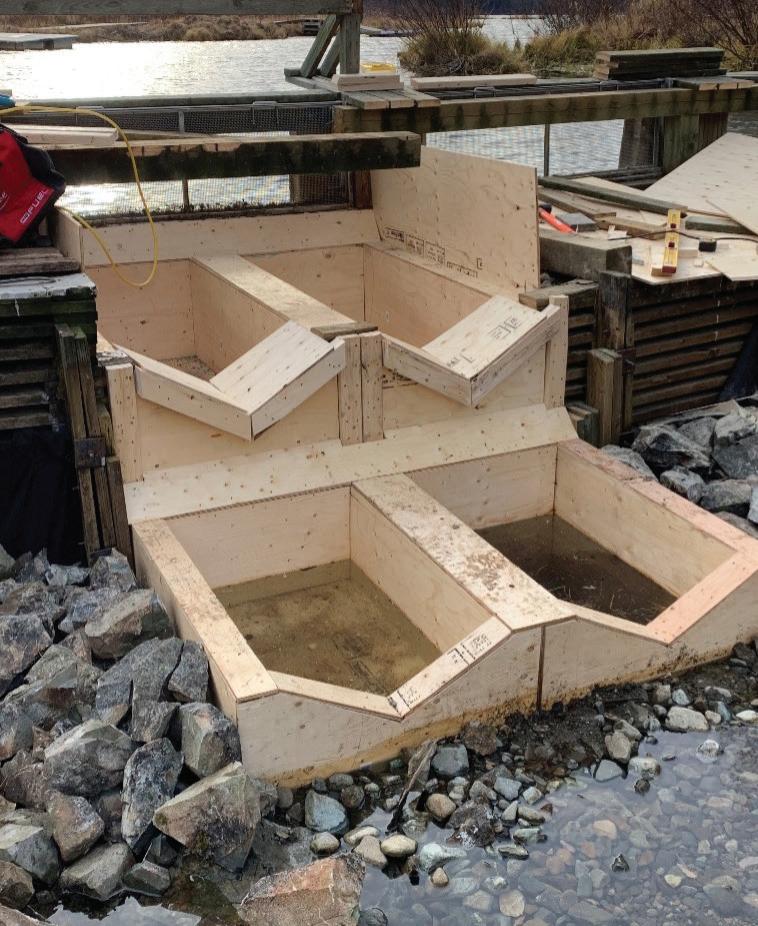
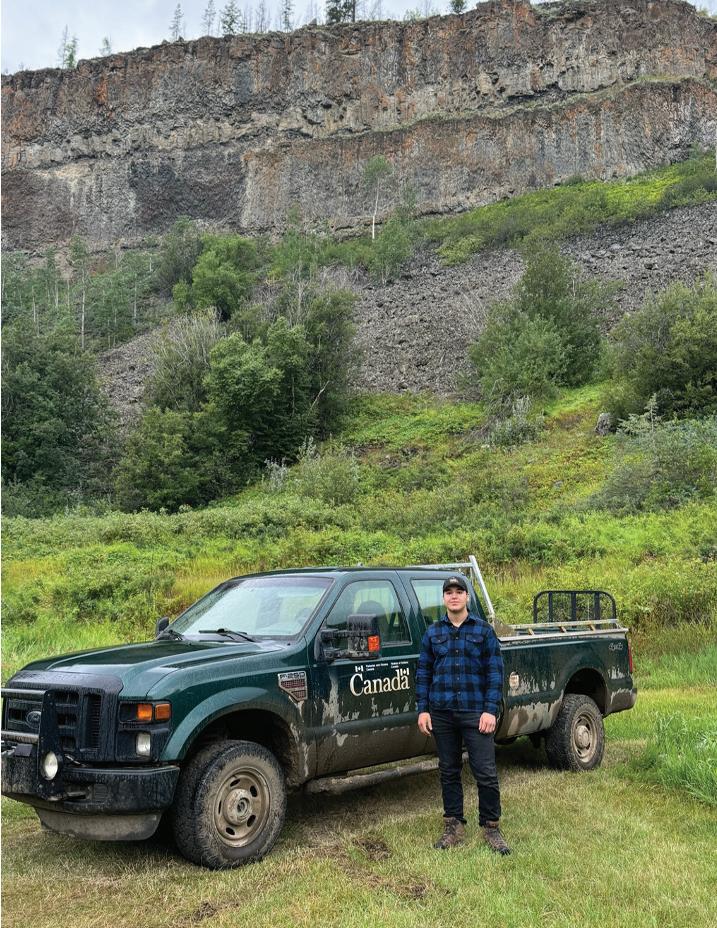

My name is Aiden Paul Hunter Frank, and I’m 15 years old. I grew up in Smithers and Telegraph Creek, B.C. This past school year, I had the opportunity to live in North Vancouver, where I played hockey and attended school.
Last summer, I worked for Fisheries on the Sonar Project for the first time. Each day, I hiked into the canyon to retrieve data collected by the sonar equipment, then hiked out and input the data. I really enjoyed the experience and appreciated the opportunity to contribute to the project. I’m excited to be returning to Fisheries again this year.
Being home means a lot to me. I love spending time with my friends and family, and I enjoy hiking, biking, swimming, training, and hunting. I’m passionate about learning more about the natural world and our resources so I can bring that knowledge back to the territory. My goal is to help protect our traditional way of life for future generations.
Mēduh
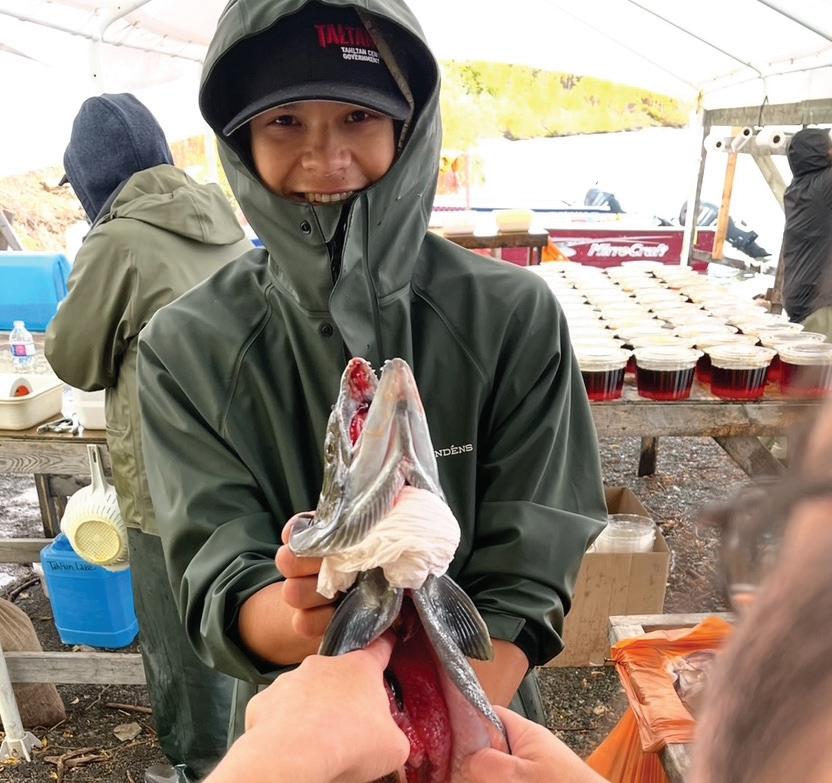
My name is Harlin Brian Mel Nehass. I grew up in Tahltan, Telegraph and Dease Lake, and partly in Iskut. I’ve experienced the land from hunting, fishing, snowmobiling for fun, and staying out on the land for multiple weeks. I’ve also always been an athletic person. Any sports find my interest but my favourite is hockey. My parents are Victor Callbreath and Shirley Nehass, my grandparents are Melvin Callbreath and Verna Henyu, along with Fannie Lindstrom and Brian Lindstrom, I worked for Fisheries for the 2024 Egg Take in September. I loved it. Tahltan Lake is quite the destination to be at, I loved it right from the start. I love my job because I help our salmon, and I also get to be where I love to be the most, out on our land :) I feel more than blessed to be with great people and a great environment. Mēduh.

My name is Mariah Marion. I am 18 years old. I grew up between Telegraph and Terrace. I am Tāłtān and I belong to the Tsesk’iye clan. My grandparents are Eugene Etzerza and Lola Etzerza. My parents are Steve Marion and Trena Marion. I have two older siblings and two nephews. I enjoy working with Fisheries for many reasons, such as being in the natural environment and the supportive work we do towards the salmon species. I have been working with TCG Fisheries for one year, going into my second year now. My first year I got to do sampling within the community of Telegraph Creek, which gave me insight on how important fish is not only to us, but to many others who enjoy fishing. The educational aspect of fish, especially Chinook, is very important to me and I believe everyone should be informed about it. Medūh.


Connor Pritty
Lands & Regulatory Affairs Director
The past year has been marked by incredible progress, hard work, challenges, and meaningful achievements by our department and the exceptional team I have the honour of leading. Guided by the mandate of our department and the vision of Tahltan leadership, we continue advancing our collective goals year after year.
Over the last year, we made significant strides across numerous priority areas. These included major regulatory and environmental assessment processes, advancing a clear pathway toward the closure of the Jade Placer and Hard Rock mining industry in Tahltan Territory, and completing and securing approval of the Tahltan Stewardship Plan. This milestone includes the identification of three Tahltan Indigenous Protected and Conserved Areas, representing an assertive and transformative step forward in asserting Tahltan jurisdiction and values on the land.
We have also continued to strengthen the foundation of land stewardship through the continual advancement of a compliance and enforcement framework with the province aimed at ensuring responsible resource development across the mining sector operating in Tahltan Territory.
Above all, I am most proud of the growth, accomplishments, and resilience of each team member. It has been a privilege to witness my staff grow, adapt, and lead with passion and determination as we navigate the complex and evolving landscape of our work. The success of our department is rooted in the energy, commitment, and excellence of our people.
On behalf of our team, I extend sincere thanks to Tahltan Leadership for their continued guidance, support, and oversight over the past three years. The advancement of land stewardship and protection of Tahltan Title and Rights through our department’s mandate would not be possible without their leadership.
As we reflect on our achievements, we also carry forward the lessons learned, and insights gained. To all Tahltan members who participated in our engagements, shared Tahltan Knowledge, and provided direction—thank you. Your voices continue to guide our work and will remain central to everything we do as we move into another year of ambitious land stewardship, and rights and title protection.
Your Lands Director, Connor Pritty

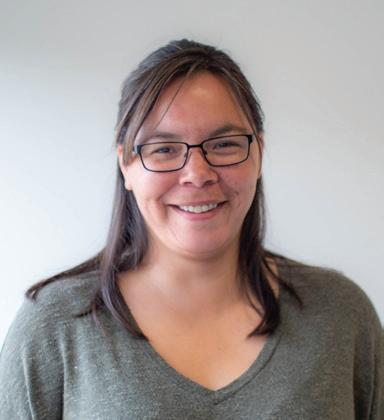
Roxanne Ball
Lands Administrative Assistant
My name is Roxanne Ball. I am a proud member of the Shoe-Kawk family and belong to the Crow Clan of the Tahltan Nation.
I’ve been with the Tahltan Central Government for the past eleven years, working across several departments. For the past two years, I’ve been honoured to serve full-time as the Lands Administrator within the Lands Department.
My role is dynamic and ever-changing—no two days are the same. One day I might be coordinating logistics for our department vehicles, and the next I’m helping support major visits to our Territory, including when Premier Horgan came to visit. This past year in particular has been a powerful learning experience.
Over the last year, our department has led numerous community engagement sessions throughout Tahltan Territory. Keeping our people informed about what’s happening on the land is essential, and I’m proud of the role I’ve played in supporting that work.
I am deeply passionate about our people and our land. For me, this work isn’t just a job—it’s something I carry close to my heart every day.

Shawn Ducharme
Major Projects Coordinator
Over the years, I’ve been privileged to gain valuable experience across a range of resource sectors in Northwest BC, beginning with forestry and fisheries. These early roles taught me the foundational importance of responsible resource management and the need to balance use with sustainability.
I later broadened my perspective through work in compliance and enforcement, which deepened my understanding of the regulatory landscape and the critical need to protect our lands through proactive oversight. Eventually, my path led me into the mining industry, where I worked as an environmental technician, monitor, and later as a project environmental coordinator—all within our Tahltan Territory.
These experiences have given me a profound appreciation for the complexities of resource development and the responsibilities that come with it. I’ve gained a strong understanding of what it takes to meet permit authorizations, ensure regulatory compliance, and uphold environmental integrity. More importantly, these roles have taught me the deeper responsibility of advocacy—to be a voice not only for the land, water, and wildlife, but for the long-term protection of our resources on behalf of future generations of the Tahltan Nation.
Naturally, these experiences have empowered me to grow into a more informed and effective advocate for our people. In my current role as a Major Project Coordinator, I help oversee and manage resource projects in our Territory, with a focus on upholding Tahltan interests, values, and long-term stewardship goals.
This work has become even more important at a time when the governments of British Columbia and Canada are beginning to better understand what meaningful consultation, collaboration, and recognition of Indigenous rights and title truly require. It is an honour to contribute to this work and to help shape a future where the Tahltan voice is not only heard—but respected and acted upon.
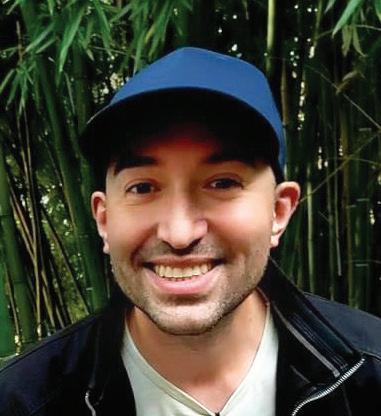
As the Shared Engagement Record Coordinator, my primary responsibility is reviewing permit application referrals from the Province for all proposed activities within Tahltan Territory. The Tahltan Central Government receives over 100 referrals annually, and each one represents an opportunity to ensure that development aligns with Tahltan values, rights, and interests.
My extensive experience working in Tahltan Territory—as an Environmental Monitor, Technician, and Consultant—has given me a deep understanding of the land and the regulatory landscape. These past roles helped me fulfill permit conditions for a range of clients and employers, and that knowledge now informs and strengthens my contributions in this role. I am proud to now apply this experience in service of our Tahltan Nation directly, rather than for external companies operating in our Territory.
In 2024, I participated in several mineral exploration mine inspections alongside the Ministry of Energy, Mines and Low Carbon Innovation, including a series of inspections during the summer with the Ministry of Critical Minerals. My role is also growing to include more community-focused and strategic responsibilities. I’ve become more engaged in community meetings related to environmental assessments for major projects such as the Red Chris Block Cave and Eskay Creek Revitalization.
As I continue to grow in this role, I’ve taken on additional responsibilities, including participating in the Placer and Jade Mineral Working Group, contributing to discussions on Mineral Tenure Act reform, and supporting planning for the Cultural Flow Needs Study for the Forrest Kerr Hydroelectric Facility. Each of these efforts strengthens our Nation’s ability to assert greater control over activities in our Territory and protect our land and water for future generations.
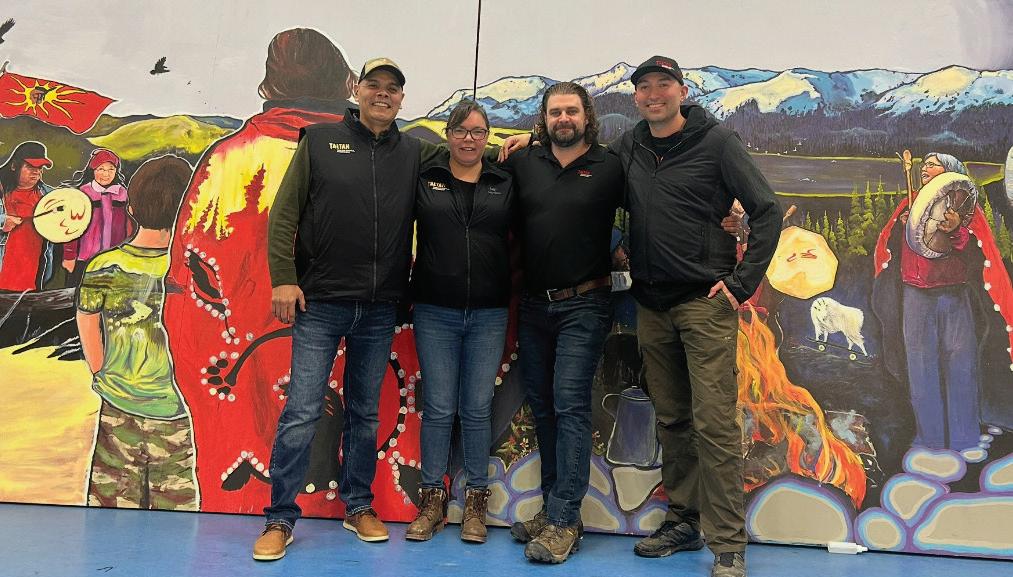
In 2020, the Province of British Columbia issued an Order in Council restricting the issuance of new placer jade mining permits and amendments within Tahltan Territory. This initial restriction was expanded in July 2021 to include mineral or “hard rock” jade, with similar limitations in place until May 2023. Recognizing the growing concerns related to the impacts of jade mining, the Province issued a further Order in Council in May 2024—commonly referred to as the Jade Closure Order. This Order prohibits any jade mining activity on newly acquired tenures and establishes a five-year transition period for current tenure holders to conclude operations, complete reclamation, and fulfill all reporting obligations.
In support of this transition and in response to longstanding Tahltan concerns, the Placer Jade Recommendations and Strategies report was completed and submitted in April 2024. Developed through collaboration between the Tahltan Central Government (TCG) and the Province, the report provides a comprehensive overview of the jade industry’s operational history within Tahltan Territory. It outlines the significant environmental issues that have arisen, including a substantial number of legacy sites that have left lasting impacts on the land and waters.
To help address these concerns and advance responsible reclamation and land management efforts, TCG partnered with the Province in 2024 to deliver a satellite imagery and remote sensing program. This initiative aimed to assess the extent of existing and historic disturbances across jade mining areas, particularly in the Jade Boulder and Turnagain regions. The data gathered has been instrumental in supporting cumulative effects management and in identifying sustainable, landscape-level thresholds that align with Tahltan stewardship values.
This year, our department has prioritized further action to support progressive reclamation reform, enhance access management, and develop clear strategies to address the environmental legacy of past jade mining activity. A key focus has been increasing ground-truthing and on-the-ground verification of current disturbance areas to ensure accurate mapping and appropriate reclamation planning.
We are also working toward the implementation of targeted access management measures in the Jade Boulder Road corridor. Through the Jade Protocol Agreement and the implementation of a Special Use Permit, TCG and the Province are exploring mechanisms

to regulate industry access and activity along this sensitive corridor. The proposed access management system would include collaboration with the Jade Boulder Trail Users Association, which aims to bring together all industrial users of the road—including proponents of mineral exploration, placer operations, and jade mining.
As part of this effort, we are working to continue advancing a controlled access system. This will help regulate industrial traffic, minimize environmental damage, and generate resources to support ongoing management, monitoring, and reclamation activities. These actions reflect the broader goals by the Tahltan Nation to transition the jade industry toward closure in a manner that prioritizes environmental restoration, respects Tahltan rights and values, and ensures restored land use for future generations.

On September 26, 2023, the BC Supreme Court released its landmark ruling in Gitxaala v. British Columbia, 2023 BCSC 1680 (the Gitxaala Decision), finding that the current mineral claims system under the Mineral Tenure Act infringes upon Aboriginal title and rights. The Court determined that the Province’s practice of allowing mineral claims to be staked remotely—without prior consultation or notification to affected Indigenous Nations—is unconstitutional and violates the Crown’s duty to consult.
This decision represents a significant shift in the legal and regulatory landscape for mineral development in British Columbia. The ruling explicitly states that Indigenous Nations must be consulted before mineral claims are granted within their territories. As a result, the Province was legally required to reform the Mineral Tenure Act, with a mandated timeline to consult with Indigenous governments and implement legislative changes by Spring 2025.
In alignment with its commitments under the Declaration on the Rights of Indigenous Peoples Act (DRIPA), the Province has also initiated broader engagement efforts to bring its laws into alignment with the United Nations Declaration on the Rights of Indigenous Peoples (UNDRIP). These efforts include direct engagement with Indigenous Nations Governments—like the Tahltan Central Government (TCG)—on the reform of the mineral tenure regime.
The TCG Lands and Regulatory Affairs Department began participating in these critical consultations in late winter 2023 as part of a multi-party advisory body composed of provincial representatives, legal experts, and Indigenous government delegates. Our involvement in this process was focused on advancing the recognition of Tahltan jurisdiction, governance, and the inherent right to manage and regulate all aspects of mining activity within Tahltan Territory.
This engagement reflected the Nation’s and Leadership’s longstanding position: that any mineral activity on Tahltan land must occur only with Tahltan free, prior, and informed consent and in alignment with Tahltan laws, values, and stewardship principles.
Throughout 2024 and into 2025, our department was actively involved in the initial Mineral Tenure Act reform process. As we move into Phase 2 and seek to align the Mineral Tenure Act with DRIPA, we are committed to ensuring that the necessary advancements to the current legislative framework reflect a new era of shared decisionmaking—one that truly upholds the rights and title of the Tahltan Nation. This work continues to be essential for building a future of respect, sustainability, and grounded in reconciliatory action.

In 2023, the Highway 37 Corridor Study—alongside Tahltan community engagement meetings—helped define key transportation challenges, identify priority improvement areas, and incorporate critical recommendations from Tahltan leadership and Tahltan community members. This collaborative process covered Highways 37, 37A, and 51, laying the foundation for a long-term strategy to enhance safety, accessibility, and connectivity throughout the region.
Building on this groundwork, our Lands and Regulatory Affairs Department began working closely with the Province in 2024 to host final engagement sessions aimed at presenting and refining proposed improvement options for Highway 37. These proposals have been directly shaped by Tahltan community input and include tangible solutions such as:
• Installation of Wi-Fi access points at rest stops,
• Line-of-sight brushing for improved visibility and safety,
• Upgrades to road shoulders and critical bridge infrastructure.
As part of this work, and through the advocacy of Tahltan Leadership, the Province and the Government of Canada have jointly committed $195 million to support a multi-year investment plan for highway improvements in Tahltan Territory. This funding includes $120 million from B.C.’s Ministry of Transportation and Infrastructure and $75 million from the federal Critical Minerals Infrastructure Fund. The current commitments include:
• Three Wi-Fi hot spots at key rest areas,
• Seven new passing lanes to enhance traffic flow and safety,
• Three chain-up/off areas to support winter road conditions,
• Three shoulder widening projects in high-priority zones.
The Tahltan Central Government’s Lands Department will continue to work closely with the Province to ensure these projects are advanced in a way that reflects Tahltan values, safety priorities, and long-term Tahltan community needs.
In addition to supporting the Province’s current plan, we will also be advocating for further infrastructure upgrades—particularly the replacement of narrow bridge crossings and other targeted safety enhancements throughout the corridor and along Highway 51 into Telegraph Creek.
This continued collaboration reflects our broader commitment to ensuring safe, sustainable, and resilient transportation infrastructure in Tahltan Territory—designed to serve not only current users but future generations of the Nation.
In the fall of 2019, the Tahltan Central Government (TCG) signed a Contribution Agreement with Environment and Climate Change Canada under the federal “Challenge” program. This agreement supported the TCG in delivering the project titled “Establishing Tahltan Indigenous Protected and Conserved Areas through the Tahltan Nation Land Use Planning Process.”
The primary goal of this project was to identify and protect areas of profound cultural, ecological, and spiritual importance to the Tahltan Nation. Specifically, the project aimed to:
• Define boundaries for Tahltan Indigenous Protected and Conserved Areas (TIPCAs); and
• Conduct internal and external engagement to support the creation, governance, and long-term stewardship of these areas.
Through the Tahltan Stewardship Plan (TSP) process, three significant regions were identified for TIPCA designation:
• Tataneh / Dzah Tē Protected and Conserved Area
• Klappan Sacred Headwaters Protected and Conserved Area
• Tenh Dzetle Protected and Conserved Area
These areas were identified through deep community engagement, interviews with Knowledge Holders and Elders, field-based research, and collaboration with the TCG Fisheries and Wildlife Departments. Together, they represent critical landscapes requiring immediate protection to safeguard Tahltan values, ways of life, and Title and Rights.
In July 2024, during the Annual General Assembly (AGA) of the Tahltan Nation in Dease Lake, the Tahltan Stewardship Plan, titled “Keep Our Trails Open,” was formally presented and received approval from the assembly. This milestone marked the culmination of more
than a decade of work and solidified the TSP as the guiding vision for the Tahltan Territory land stewardship moving forward.
In parallel, policy shifts in British Columbia have created meaningful opportunities to assert Tahltan’s leadership role in land use and environmental governance. These include the Province’s commitment under the Declaration on the Rights of Indigenous Peoples Act (DRIPA) to align laws with the United Nations Declaration on the Rights of Indigenous Peoples (UNDRIP), a renewed focus on ecosystem health, and modernizing land use planning across the province.
In 2020, the Tahltan Nation and the Province of British Columbia signed the Shared Prosperity Agreement (SPA)—a strategic government-to-government agreement that outlines a joint commitment to reconciliation, clarity on land use, and collaborative planning. A central component of the SPA is the co-development of a regional land use plan between the Province and the Tahltan Nation.
To support and guide this work, the TCG, through the Tahltan Stewardship Initiative (TSI), developed the Tahltan Stewardship Plan—a Nation-led vision to protect Tahltan Title and Rights, ensure healthy ecosystems, and support our people’s ability to practice our Tahltan way of life for generations to come. With the AGA’s approval, the TSP now serves as the formal foundation for the co-development of a Tahltan–BC regional land stewardship plan and the broader shift toward Nation-led stewardship in Tahltan Territory.
To provide space for this transformative planning work, the Province has enacted a temporary pause on new mineral tenuring in priority ecological and culturally significant areas of Tahltan Territory. This interim measure allows for engagement, policy alignment, and collaboration with stakeholders, while offering increased clarity for future resource development.
Over the next year, TCG and the Province will work to advance this Phase 1 planning process. Immediate focus will be on permanently protecting key regions—Klappan, Level Mountain, Sheslay, and Tahltan Lake—while also advancing shared governance models and stronger co-management tools. Together, these steps will help ensure all future development in Tahltan Territory reflects Tahltan values, responsibilities, and long-term vision for stewardship.


The Tahltan Stewardship Plan (TSP) titled “Keep Our Trails Open”, developed through the Tahltan Stewardship Initiative (TSI), brings transformative change based on the recognition of Tahltan Title and Rights.
The Tahltan Nation has developed and finalized a Tahltan Stewardship Plan (TSP) through the Tahltan Stewardship Initiative (TSI). The Tahltan Stewardship Plan outlines Tahltan principles for caring for and stewarding all land within Tahltan Territory.
During the July 2024 Annual General Assembly of the Tahltan Nation in Dease Lake, British Columbia, the Tahltan Stewardship Plan titled “Keep Our Trails Open” was presented and approved by the assembly.
With the approval of the Tahltan Stewardship Plan –after a decade of work including engaging our people – the Tahltan Nation is progressing to the next phase, with the Tahltan Stewardship Plan serving as our guiding light.
Scan the QR code below to visit the TSP website: tsp.tahltan.org
Scan the QR code below to watch the TSP video:
The Tahltan Central Government (TCG), through the Lands and Regulatory Affairs Department, continues to lead the implementation of the Section 7 ConsentBased Decision-Making Agreement—the first of its kind under British Columbia’s Declaration on the Rights of Indigenous Peoples Act (DRIPA). Signed in 2022, this landmark agreement affirms Tahltan jurisdiction and recognizes Tahltan’s inherent Title and Rights with respects to decision-making on the Eskay Creek Revitalization Projects Environmental Assessment.
Over the past year, TCG has worked to advance this agreement through the Tahltan Assessment of Skeena Gold + Silvers proposed revitalization of the Eskay Creek Gold-Silver Mine. The project proposes transitioning from historic underground operations to a large-scale open-pit mine, requiring a comprehensive Tahltan Assessment review through the consent-based decision-making agreement.
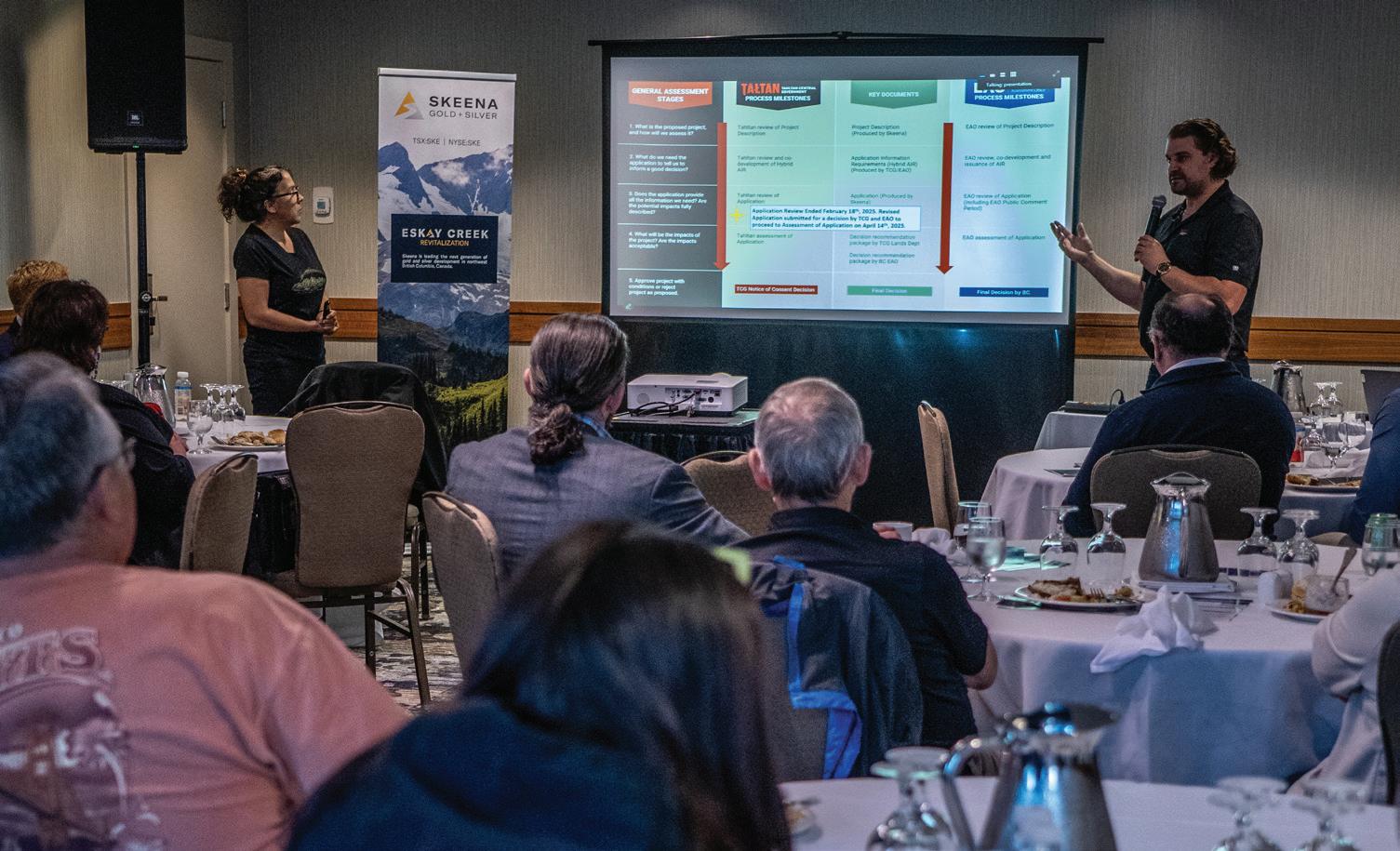
Pursuant to the Section 7 Agreement and the Tahltan Impact Assessment Policy, TCG led extensive engagement efforts to ensure that Tahltan membership was informed, heard, and central to the assessment process to date.
Past Sessions included a series of in-person engagement held with Skeena and the Environmental Assessment Office (EAO) on October 8, 9, and 10 in Iskut, Dease Lake, and Telegraph Creek. These sessions featured presentations by TCG and Skeena, creating space for membership to ask questions, raise concerns, and seek clarity on the contents of the Environmental Assessment (EA) Application. A virtual session followed on October 17, 2024, allowing off-Territory members to participate. EAO staff were present in person to address questions related to the provincial EA process.
After completing its technical review, TCG’s THREAT (Tahltan Heritage, Resources, Environmental Assessment & Technical) team prepared a detailed Eskay Creek Revitalization Project Information Package.
Between December 1–6, TCG hosted multi-day, Tahltan open houses in all three Tahltan communities to present the technical findings and support independent discussion. These sessions allowed for more open dialogue in the absence of Skeena and the EAO. Members were able to explore the technical analysis in depth, share their perspectives, and identify both the potential benefits and risks of the proposed project.
In early 2025, a Tahltan Leadership tour was undertaken to engage membership in urban areas. An open house was also hosted in Whitehorse during the 2025 All Native Hockey Tournament, ensuring access and participation from off-Territory members.
These cumulative engagements enabled TCG to gather a broad range of insights from Tahltan members. These perspectives have been critical in shaping the understanding of the Application’s predicted outcomes and incorporating Tahltan values and interests into the Tahltan Assessment process so far.
On May 30, 2025, Skeena Gold + Silvers EA Application was formally accepted into both the Tahltan Risk Assessment and Provincial Effects Assessment phases. These processes will inform the upcoming Tahltan Decision-Making Phase expected in October 2025.
Looking ahead, TCG will focus on:
• Identifying and outlining Tahltan perspectives on anticipated positive and negative outcomes of the project;
• Developing a set of proposed Tahltan Conditions to manage risks and protect Tahltan Values;
• Completing the final Tahltan Risk Assessment Report by late September 2025, which will serve as the foundation for informing the Tahltan Decision-Making Phase in October 2025.
The Tahltan Central Government (TCG), through the Lands and Regulatory Affairs Department, continues to lead the implementation of the Section 7 Consent-Based Decision-Making Agreement—the second of its kind under British Columbia’s Declaration on the Rights of Indigenous Peoples Act (DRIPA). Signed in 2023, this landmark agreement affirms Tahltan jurisdiction and recognizes Tahltan’s inherent Title and Rights with respects to decision-making on the Red Chris Block Cave Environmental Assessment Amendment.
Over the past year, TCG has worked to advance this agreement through the Tahltan Assessment of Newmont’s proposed transition of the Red Chris Mine. The project proposes transitioning from open pit mining operations to a large-scale underground block cave mine, requiring a comprehensive Tahltan Assessment review through the consent-based decision-making agreement.
Pursuant to the Section 7 Consent-Based Decision-Making Agreement and the Tahltan Impact Assessment Policy, the Tahltan Central Government (TCG) has led extensive engagement efforts to ensure that Tahltan membership remains central to the assessment of Newmont’s proposed Block Cave project at the Red Chris Mine.
In alignment with our commitment to informed, inclusive, and transparent processes, TCG has hosted multiple rounds of in-person and regional engagement sessions over the past year, including:
December 8–10, 2023, and February 25–28, 2024: In-person sessions held in Iskut, Dease Lake, Telegraph Creek, and at the Red Chris Mine site. These featured presentations by Newmont and provided opportunities for members to ask questions, raise concerns, and request clarity on the proposed project.
March 21–22, 2024: TCG hosted a dedicated open house in Whitehorse, Yukon during the All Native Hockey Tournament, expanding outreach to off-territory Tahltan members and families.
April 8–10, 2024: Follow-up engagements were held in Iskut, Dease Lake, and Telegraph Creek, focused on technical review updates and collecting deeper feedback.
May 23–24, 2024: The latest round of sessions took place in Telegraph Creek and Dease Lake, continuing the dialogue with community members and leaders.
Through these cumulative sessions, TCG has gathered a broad range of Tahltan perspectives, priorities, and concerns. This input has been critical in shaping the Nation’s understanding of the anticipated risks, benefits, and uncertainties of the proposed Block Cave project.
These insights are being directly applied to the ongoing Tahltan Assessment process, ensuring that Tahltan values, jurisdiction, and knowledge systems guide the path forward in evaluating Newmont’s proposal. TCG remains committed to continuing engagement and information sharing as the assessment advances into its next phases.
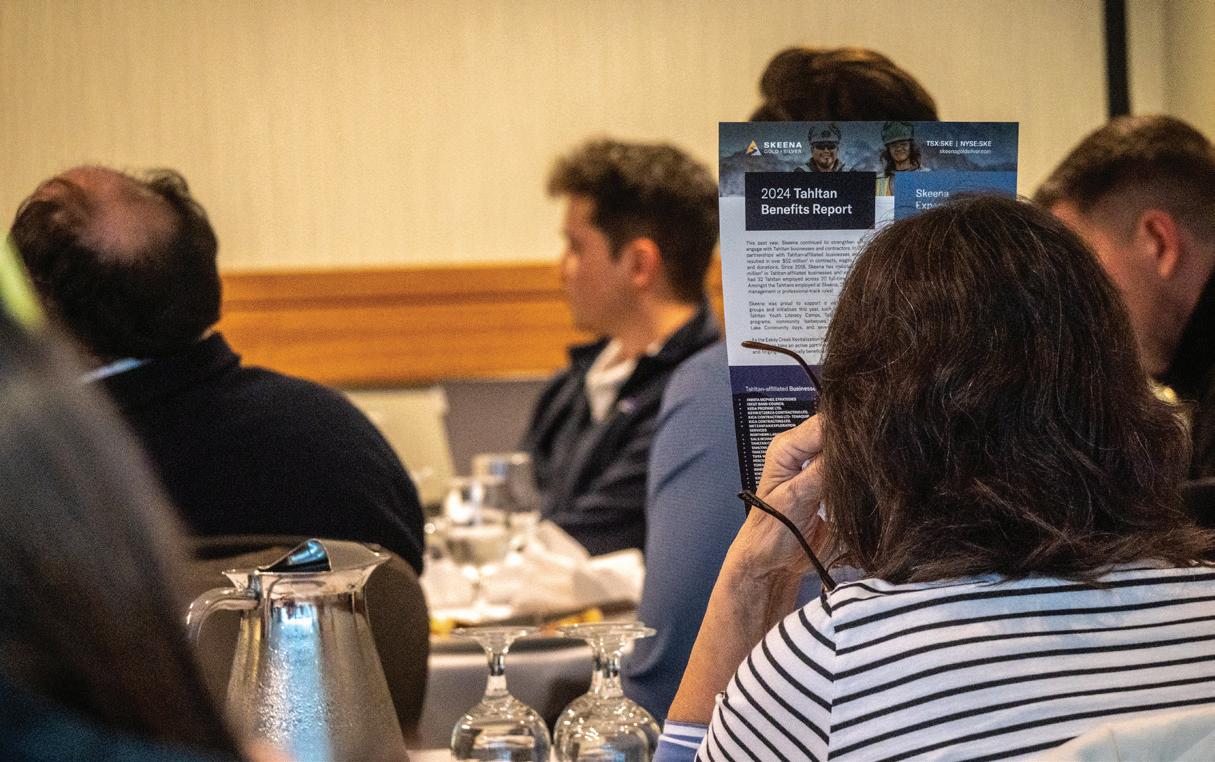
On May 29, 2025, Newmont’s EA Application was formally accepted into both the Tahltan Risk Assessment and Provincial Effects Assessment phases. These processes will inform the upcoming Tahltan Decision-Making Phase expected in October 2025.
Looking ahead, TCG will focus on:
• Identifying and outlining Tahltan perspectives on anticipated positive and negative outcomes of the project;
• Developing a set of proposed Tahltan Conditions to manage risks and protect Tahltan Values;
• Completing the final Tahltan Risk Assessment Report by late September 2025, which will serve as the foundation for informing the Tahltan Decision-Making Phase in October 2025.

The Tahltan Central Government (TCG) Lands and Regulatory Affairs Department, together with the Tahltan Heritage, Resources, Environmental Assessment & Technical (THREAT) team, continues to play a central role in the regulatory oversight of Seabridge Gold’s KSM Project. Through a rigorous, multi-phase permitting process, TCG is ensuring that Tahltan rights, interests, and environmental values are upheld across all stages of the project’s development.
In 2024–2025, the project entered Round 3 of the Joint Mines Act and Environmental Management Act (M-245) permitting process, which seeks authorization for critical infrastructure including:
• The Temporary Water Treatment Plants
• The Mitchell Tunnel
• Associated portal pads
TCG’s technical reviewers continue to provide detailed feedback to ensure that these components meet high environmental and technical standards, and reflect Tahltan priorities related to cumulative impacts, water protection, and safe construction practices.

Alongside the joint permitting process, TCG is advancing its review of the Water Sustainability Act permit application. This permit is critical for authorizing the use of water for mining activities in the Mitchell Valley, particularly for camp operations on the mine site side. TCG’s focus is on ensuring that both surface and groundwater sources are adequately protected and that sufficient conditions are in place to safeguard aquatic ecosystems.
The TCG Lands and Fisheries teams are working in close collaboration to review and support fisheries-related authorizations for the project. Three key Fish Habitat Offset Projects (FHOPs) have been proposed by Seabridge Gold as compensation for projectrelated impacts to fish habitat:
• The Glacier Creek FHOP has been completed and is now under ongoing monitoring.
• A second FHOP is currently in the early stages of provincial authorization for a License of Occupation.
• The third FHOP has received a five-year extension and will proceed following further consultation between TCG, Seabridge, and the Department of Fisheries and Oceans (DFO).
These efforts reflect a collaborative approach to protecting and enhancing fish habitat within Tahltan Territory, while holding proponents accountable to long-term environmental stewardship.
TCG remains committed to ensuring that the project protects Tahltan wildlife, sensitive ecosystems, and culturally significant areas. Our reviewers continue to advocate for:
• Comprehensive protection of groundwater and surface water quality
• Effective mitigation of wildlife impacts, including habitat disruption and migratory corridor fragmentation
• Respect and integration of Tahltan cultural and spiritual values into planning, permitting, and monitoring frameworks
Through persistent oversight and deep technical engagement, the Tahltan Central Government is safeguarding the long-term well-being of our lands, waters, and people. As the KSM Project continues through permitting and implementation stages, our focus remains on upholding Tahltan jurisdiction, enforcing rigorous environmental accountability, and building meaningful partnerships based on respect and consent.
The Tahltan Central Government (TCG) Lands and Regulatory Affairs Department continues to oversee and engage in regulatory processes for the Galore Creek Project as the proponent advances amendments to its existing authorizations. TCG’s participation ensures that any development is subject to robust oversight grounded in Tahltan values, knowledge, and jurisdiction.
In 2024, Galore Creek advanced its work on the Environmental Assessment (EA) Certificate amendments and proposed changes to its Mines Act permit (MX-1-621). These amendments aim to enable the next phase of geotechnical investigations required to inform the placement of major infrastructure for the project. The submission of the updated permit amendment is anticipated in mid-2025.
Throughout this process, TCG is ensuring that all proposed work reflects a strong foundation in Tahltanled review, including a focus on cumulative effects, ecological integrity, and areas of cultural significance.
Looking ahead to the 2025/2026 field season, Galore Creek is preparing an initial amendment to its Project Description, signaling the start of a broader update to its Environmental Assessment Certificate. TCG will be directly involved at every stage of this process, ensuring that all components of the amendment — from scope to design — incorporate Tahltan perspectives, rights, and interests.
As the Galore Project moves forward, TCG remains committed to:
Galore has also initiated steps toward applying for a Special Use Permit (SUP) and Occupant Licence to Cut (OLTC) to support its planned field programs. TCG continues to work with the proponent to ensure that all required management plans associated with these applications are developed with meaningful Tahltan input and review. These plans will reflect the Nation’s priorities around land stewardship, wildlife protection, and sustainable access management.
• Ensuring full alignment between project amendments and Tahltan values
• Embedding Tahltan knowledge and worldviews into management frameworks and regulatory tools
• Providing independent technical review and oversight to all project components
• Maintaining a proactive role in modernizing the EA Certificate to ensure the Tahltan Assessment process is required as part of any authorization amendments.

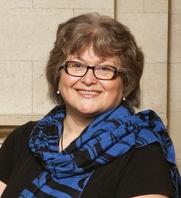
Kathy Cottrell
Language Nest Manager
K’ASBĀ’E T’OH (PTARMIGAN’S NEST) LANGUAGE NEST
The K’asbā’e T’oh (Ptarmigan’s Nest)
Language Nest was open for another year of language learning with the little ones.
There will be pamphlets at the Language Table at the AGA. Also, watch for announcements for an information session to be held in September. We have a few spaces left for the 2025̄/26 year, be sure to apply for registration as soon as possible.
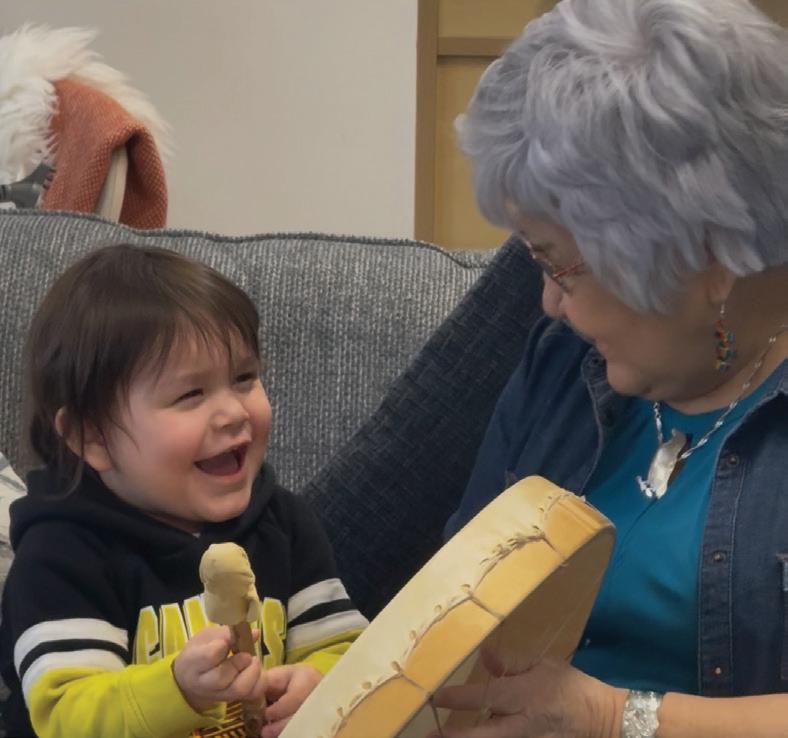


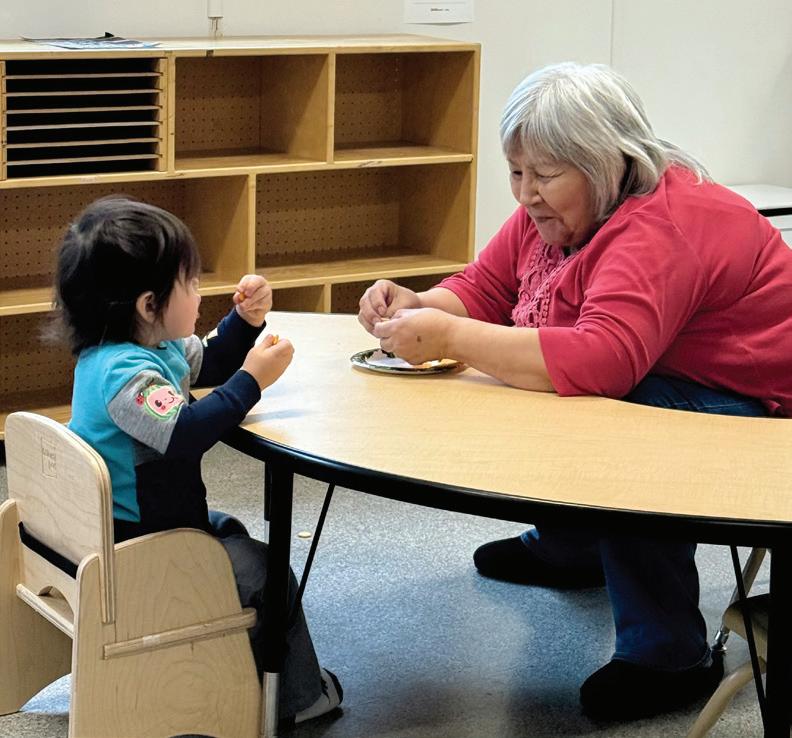

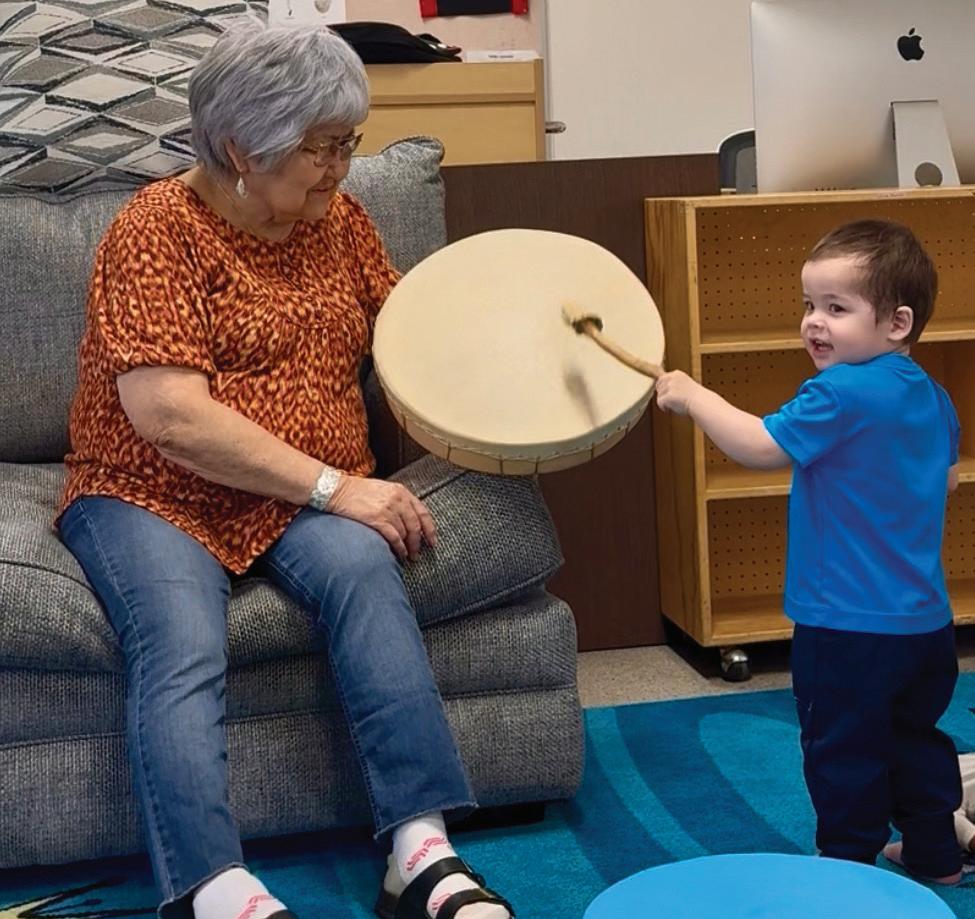

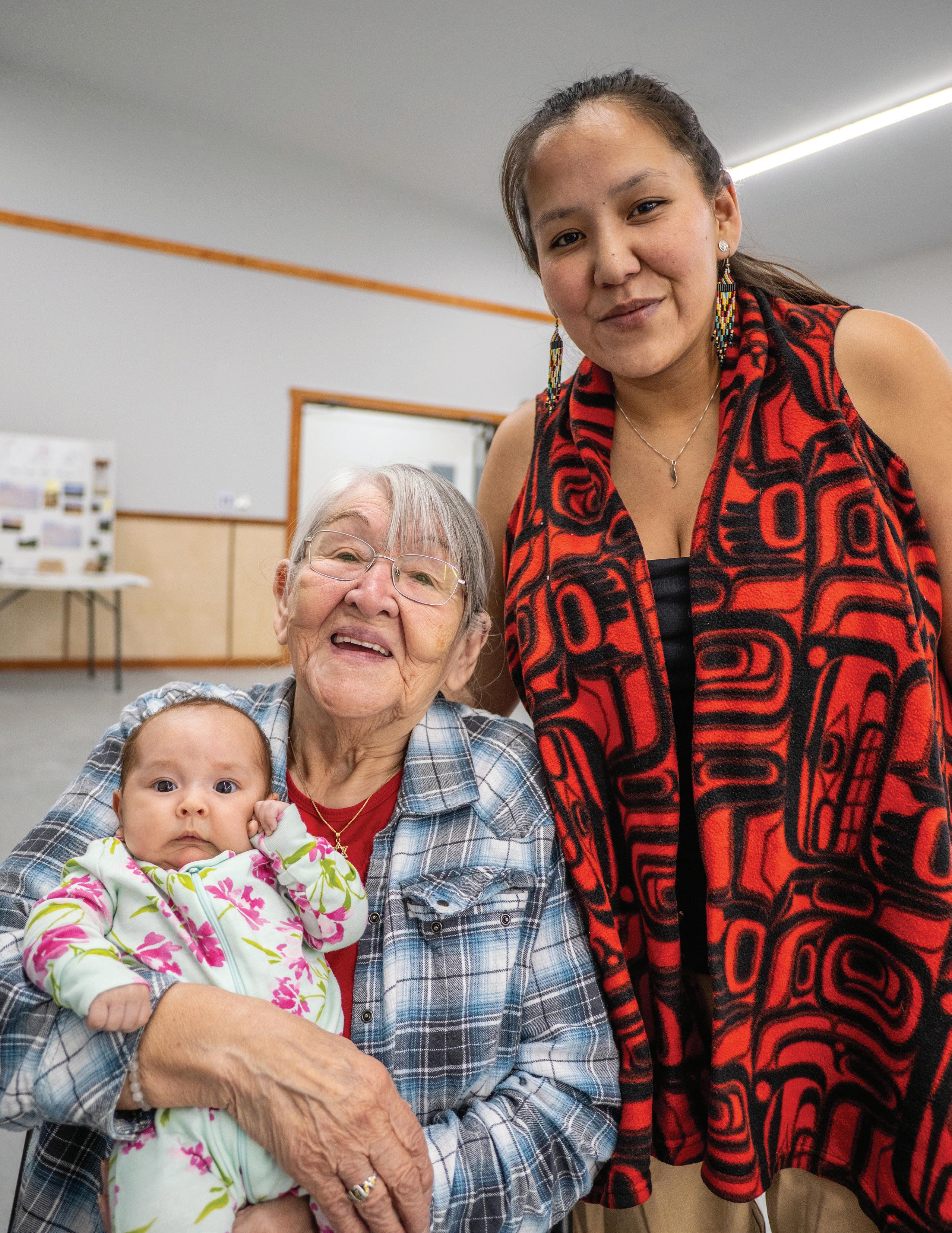
The Language Team is proud to share the news that the Tāłtān Dictionary App is now available to download for iOS (Apple) and Android users!
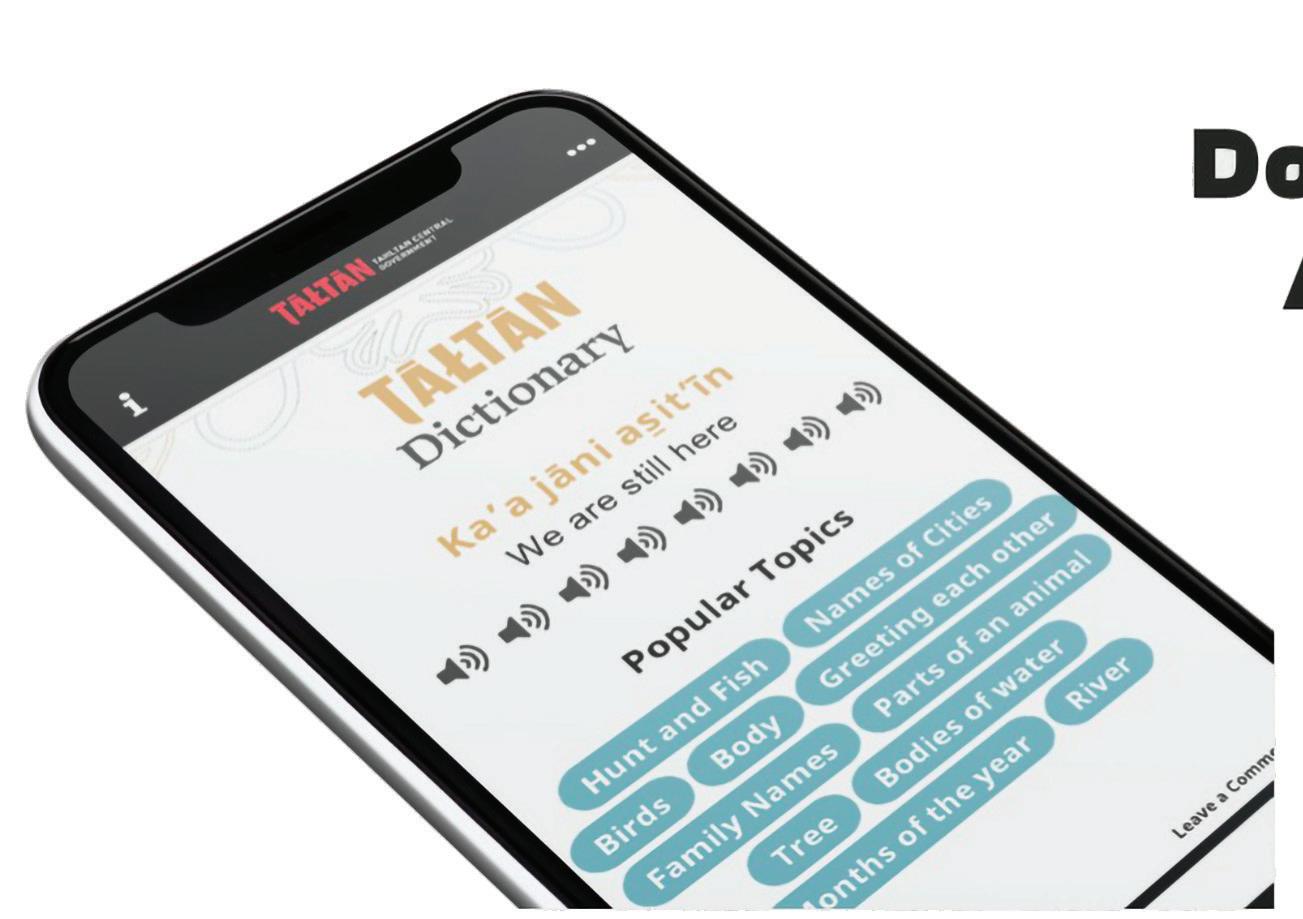
Please follow the directions provided to download the App AND watch the how-to-use video provided to learn how to navigate. Special App feature – once downloaded, you do not need an internet connection to use.
This App literally allows you to connect to the language in the palm of your hands. Mēduh chō to all those involved for the immeasurable hours dedicated to this very special endeavor – past, present, and future.
Please reach out to Kathy Cottrell, Language Nest Manager for immediate questions or help. Come to the Language Table at the AGA for help to download, navigate and explore the App!
Soga edēnt’īn. (Take care of yourself)


Scan the QR code below and download from the App Store OR search the App Store for “Tahltan Dictionary”.

LINKS:
• Getting started video: youtube.com/watch?v=zJW4slJ-l_Y

• Download on iOS (iPhone): apps.apple.com/us/app/6471603801
• Download on Android: play.google.com/store/apps/details?id=org.tahltan.dictionary

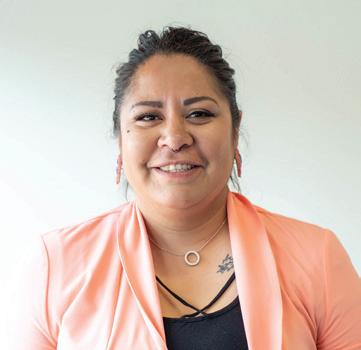
Shannon Frank Information & Membership Director
Darcie Louie Membership Specialist
We are currently preparing for the upcoming leadership election taking place July 4–6, 2025.
In-person voting will be held at the Dease Lake Arena from 9:00 AM to 5:00 PM PST daily.
Online and phone-in voting will be available 24 hours a day, starting at 9:00 AM on July 4 and closing at 5:00 PM PST on July 6.
If you are a registered member and have not received your PIN to vote electronically or by phone, please contact the voter helpline at 1-888-281-8683. The helpline will be open from 9:00 AM to 5:00 PM PST on all three voting days.
To stay up to date on election details, please refer to the QR code.
We are committed to keeping our membership records up to date throughout the year. Recently, we launched a campaign via email and social media encouraging members to update their information and register new children.
Please scan the QR codes below:
To update your membership information To register a new child
Records in the system: Active Membership:
Membership regularly supports departments and partner organizations with verified information. Examples include:
• Communications – Contact lists for meetings, newsletters, email, and text blasts.
• Lands and Wildlife – Trapline and land use verification.
• Finance – Member verification for Senior Supplement payments and program management.
• TNDC & Industry Partners – Membership verification for preferential hiring and bursaries.
• Education – Membership and verification letters.
• Culture & Heritage – Through joint research and planning the Archives and Membership departments collaborate on a variety of projects. Currently, The Borders Project has been prioritized as a key joint initiative.
• Employment – Member and associate verification for industry outreach and education.
• IBC, TBC, SCWG – Fulfill membership-related requests for elections, mailings, and statistics.
• Branding & Swag Support – Assistance with orders as needed across departments.
• Family Outreach – In partnership with Communications, we support Family Representatives.
• Onboarding – Membership supports onboarding and ongoing development of staff and BOD members.
• Signage Project – Assisting the committee with band engagement and sign development; project completion expected by Fall 2025. (See Communications Department update for details.)
The membership database is our most valuable tool and requires constant attention. The most timeconsuming yet vital aspect of our role is maintaining its accuracy to ensure smooth operations across all initiatives.
Total: 3,237
6,000 3,980 1,500 743 3,980
TAHLTAN MEMBERSHIP DEMOGRAPHICS
Tahltans out of Territory: Tahltans in Territory:
TAHLTAN DEMOGRAPHICS BY AGE
Records examined in the last year: approx. approx. 0-17
2787 751
442
As always, we extend our sincere thanks to our entire team for their continued dedication and support.
A special thank you goes to:
• Darcie Louie, our Membership Specialist, for her tireless efforts in maintaining and improving our membership systems.
• Shirley Nehass/Lindstrom, our Receptionist, whose organization and frontline support are invaluable to our daily operations.
• Bobby Whang, our Communications & Media Technician for ensuring our digital platforms run smoothly and securely.
Your contributions make the work of the Membership Department possible—and impactful.


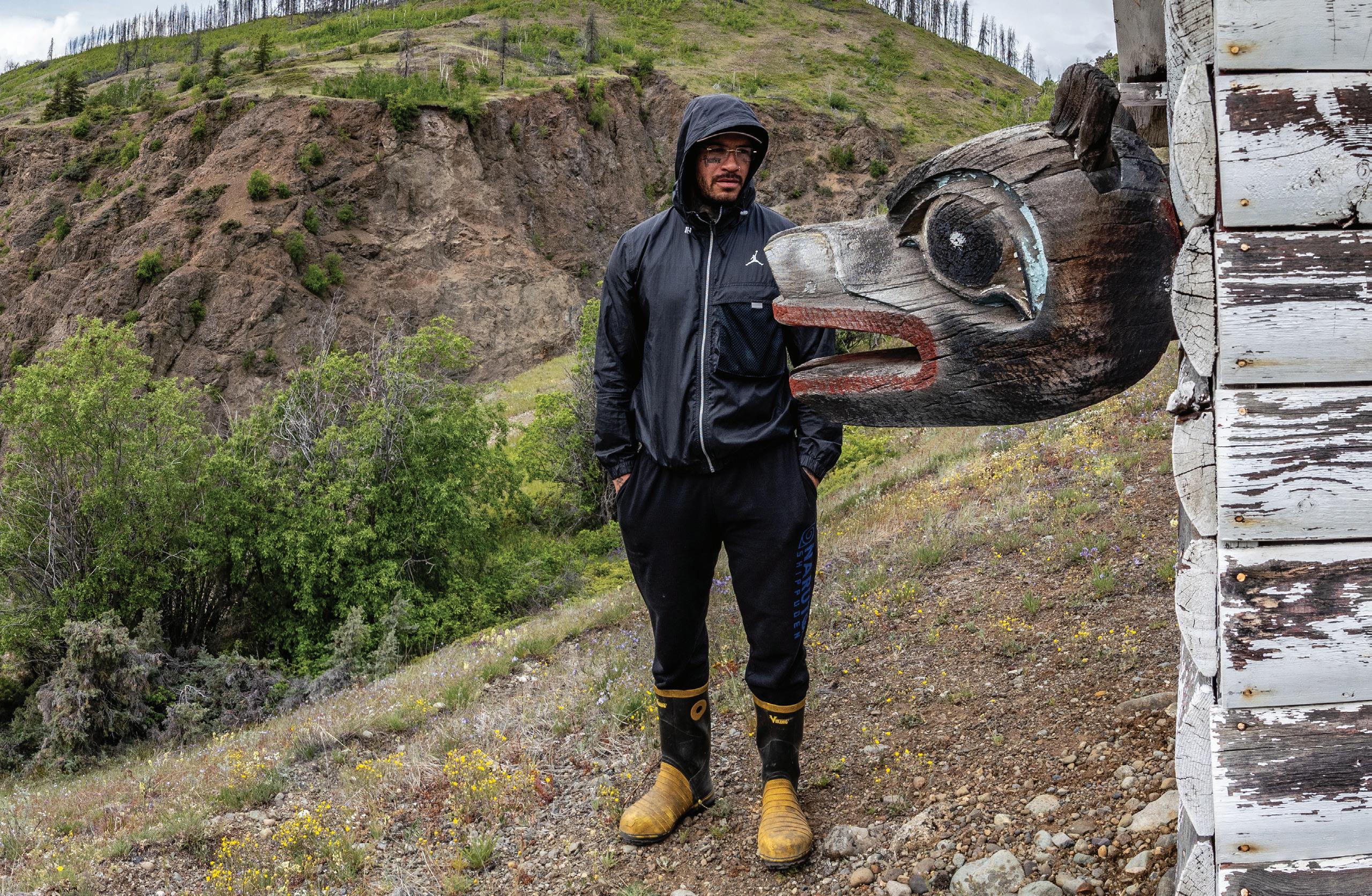
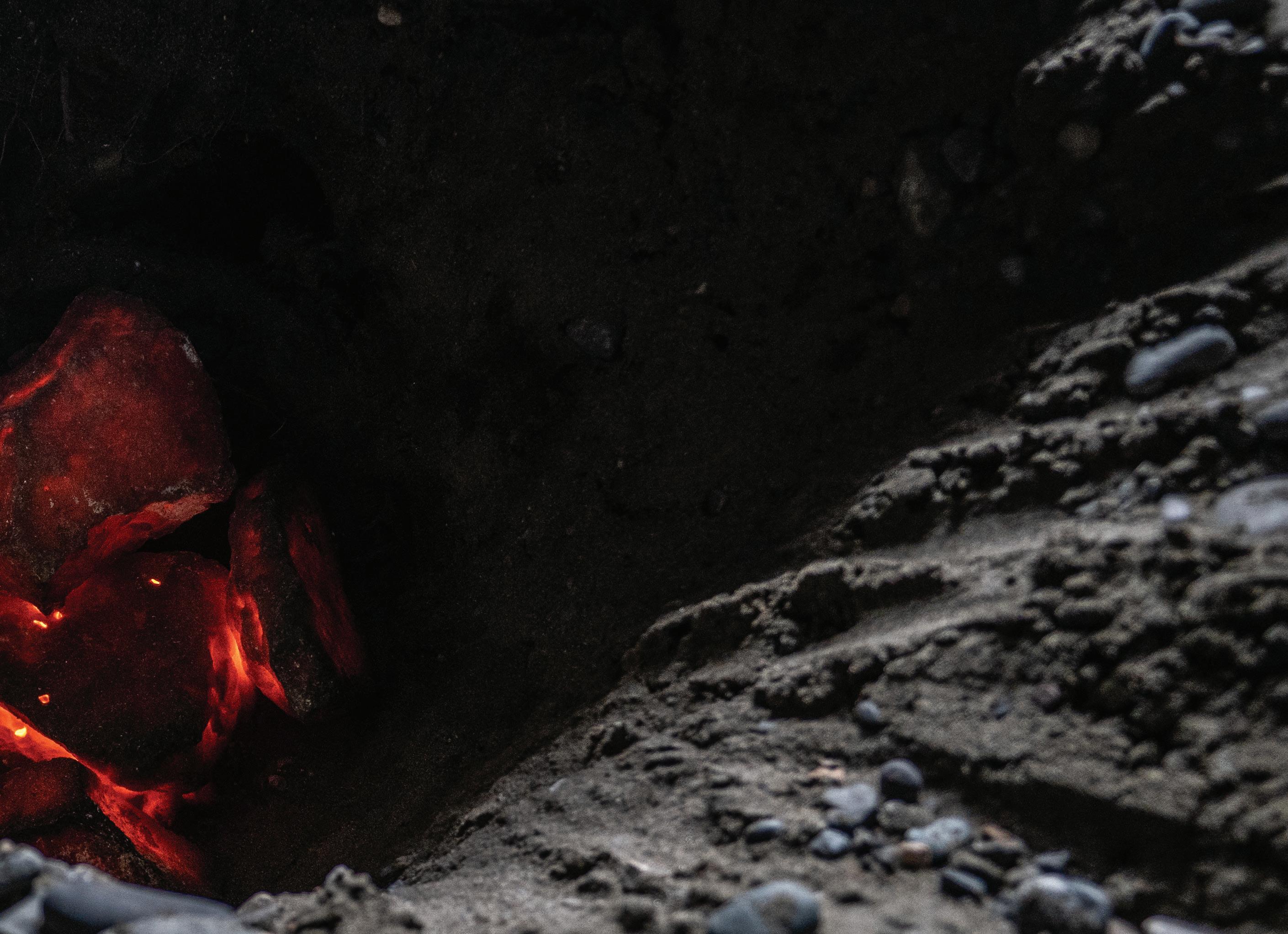
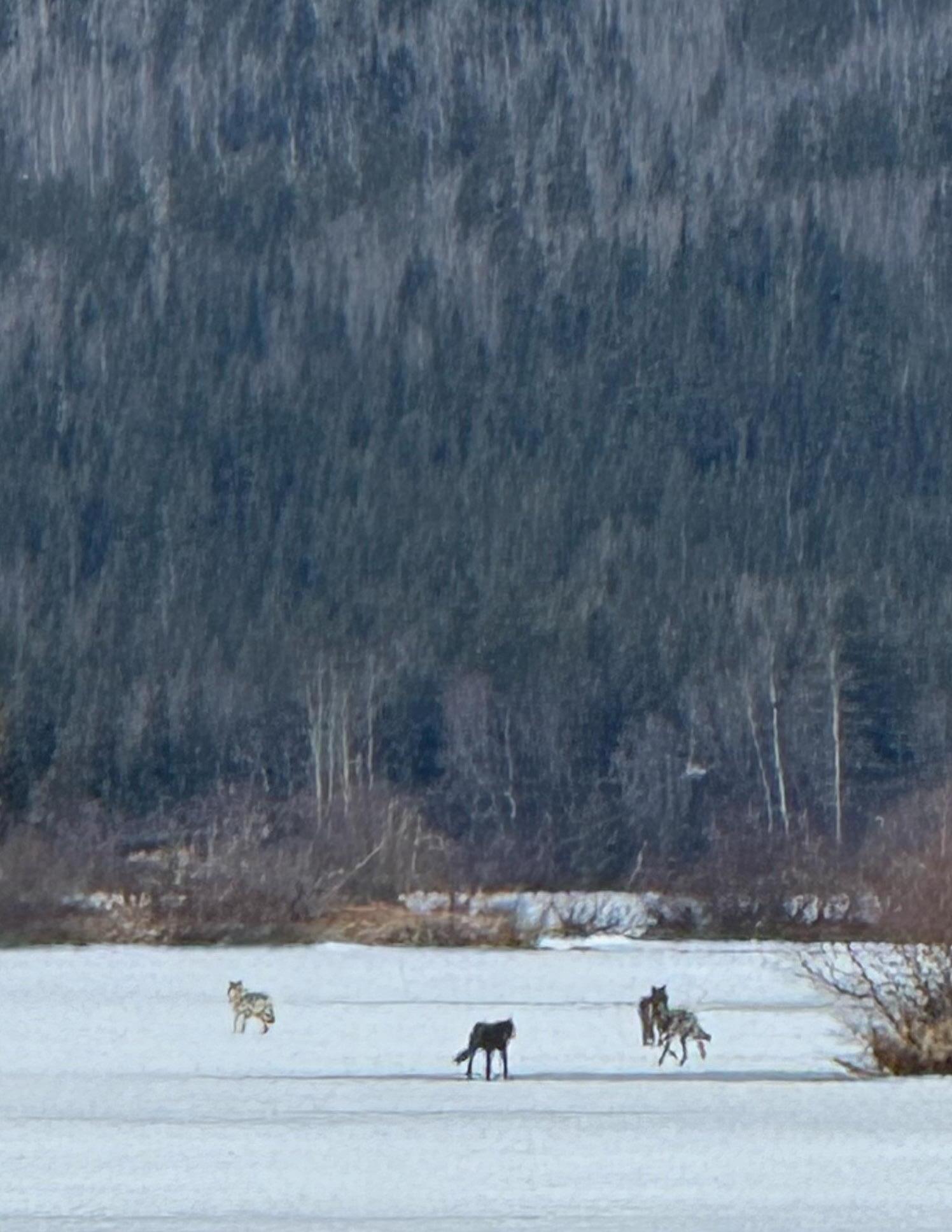

This year we completed five years of data collection From this work, we’ve built a repository of information to guide our management and stewardship .
Now we’re developing a new Members-Only webpage to share our work with you, while also protecting this sensitive information The webpage will keep you up to date with all our work on wildlife, including:
• Stats, Surveys, and Status of important species including hodzih (caribou), kedā (moose), is̱bā (mountain goat), debēhe (Stone’s sheep), khoh (grizzly) and sas (black bear), ch’iyōne (wolves), and more
• The Wildlife Accord
• The Guardians and their fieldwork each season
• The Caribou Stewardship & Recovery Strategy
• The Predator Program
• Successful Hunts & Harvest Surveys
• Hunting Regulations & Restrictions
• Tahltan Conservation Officers or COs enforcing Tahltan Law
• Burn Plans for Habitat Enhancement
• Wolf Packs & Locations
• Grizzly Bear Collaring & Tracking
• Guiding & Outfitting
• 3Nations Collaborative Stewardship Framework
But please, help us orient this to you Let us know what you’d like to track about wildlife in Tahltan Territory, and what you’d like the new webpage to include
Share your thoughts and learn more here: tahltan.org/wildlife
Scan the QR code to visit webpage:
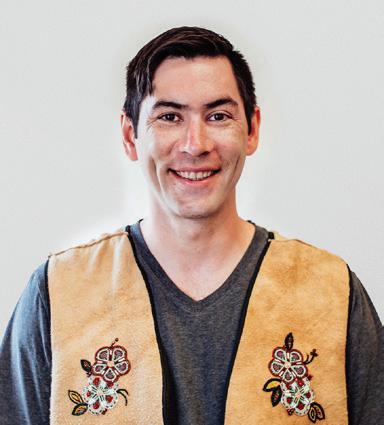
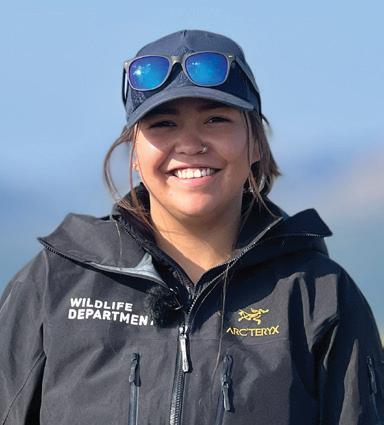
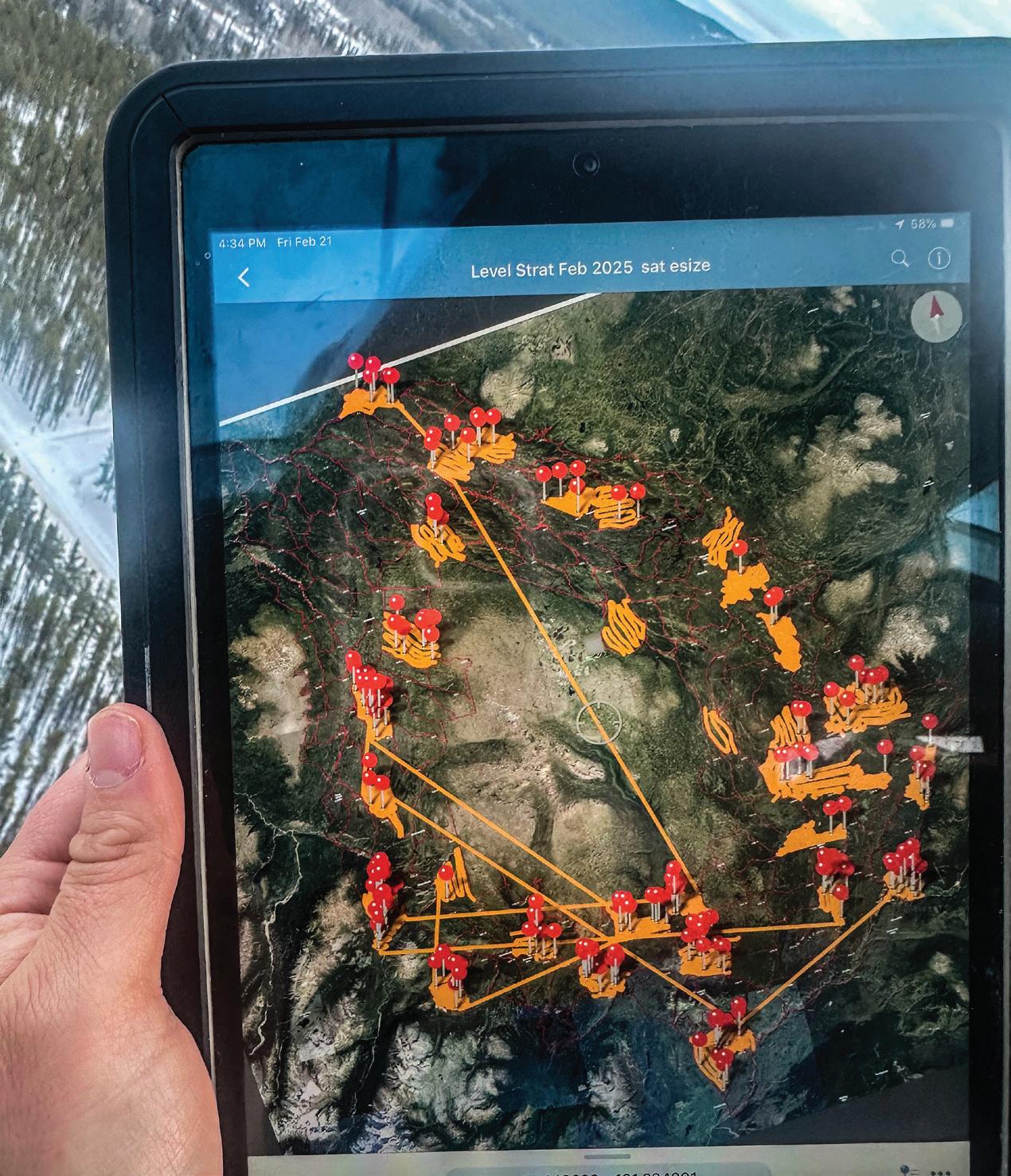
• Level Moose Population Survey
• TCG Guardians conducted a moose survey Feb 17 21 2025 in the Level Mountain area
• Last survey was in the 1990’s
• 1 helicopter was used
• 1906 moose + 450
• 0.38 moose /km2
• 45 bulls/100 cows
• 35 calves/100 cows
• Density is somewhat higher to other populations in the area with low densities, but the calf and bull numbers are higher than the 2023 winter surveys in the Klappan and Dease Lake areas LEVEL MOUNTAIN
• Late winter survey was used to make comparisons easier with 2023 surveys done at a similar time.
• Results are still being analyzed but initial draft results are:
COWS

• TCG and BC jointly conducted a moose survey Dec 5 – 10 2024 in the Spatsizi Plateau Park area
• Last survey was in the 1990’s
• 2 helicopters were used
• Early winter survey was considered as the last survey was over 20 years ago, and this was used when bulls were retaining antlers to make classification easier
• Results are still being analyzed but initial draft results are:
• 1864 moose + 318
• 0.15 moose /km2
• 65 bulls/100 cows
• 43 calves/100 cows
• Density is similar to other populations in the area with low densities, but the calf and bull numbers are higher than the 2023 winter surveys in the Klappan and Dease Lake areas
Tahltan now have recent, technical population information for moose populations by our communities and important areas for the first time in over 20 years. This information will be used with Tahltan Knowledge to continue our work on changing moose management in the Nation.
Klappan Moose Stewardship Plan (MSP) – The Klappan MSP is a community-based moose stewardship plan that is based on Tahltan moose stewardship requirements, community goals and objectives, and is a decision-making plan with BC. A background technical report is being worked on to support the MSP, and it will build on the Tahltan Stewardship Plan information and directions.
The department will meet with communities to review and set population, habitat, harvest, predator, climate change, and access objectives for the MSP to support joint moose management decision-making for the Klappan.
Once this plan is completed, it is possible we can then use it for other moose areas in the Nation.
For several decades, Tahltan have indicated concerns with the high numbers of bears and wolves, and low numbers of moose, caribou, sheep, goats, and groundhogs.
In 2020, a TCG resolution recognised that, to change wildlife management in the Nation, we needed to conduct our own wildlife monitoring and show how technical, scientific information is consistent with Tahltan Knowledge.
CURRENT ACTIVE COLLARS BY LOCATION
TSENEGLODE
TCG started monitoring caribou and wolves in 2019 to collect information on the movements, seasonal range use, and populations
Since 2020, with the advancement of the Tahltan Stewardship Initiative, Tahltan Indigenous Protected and Conserved Areas initiative, and TCG’s engagement in the 3 Nations BC Collaborative Stewardship Forum, we expanded the study with additional collars and seasonal monitoring.
In addition, BC and TCG have been working together on caribou monitoring over the last couple of years. Caribou from the Tseneglode, Spatsizi, Edziza, and Level Mountain-Kawdy Plateau herds, and associated wolf packs, are being monitored by the Guardians and Wildlife Department.
• Currently there are 15 Tseneglode, 17 Level Mountain-Kawdy Plateau, and 14 Spatsizi caribou with active collars
• 13 collars dropped off the caribou, or are offline due to technical failures
• 16 Tseneglode, and 9 Level Mountain-Kawdy Plateau collared caribou were predated over the study period.
• This represents an annual mortality of approximately 22-25%.

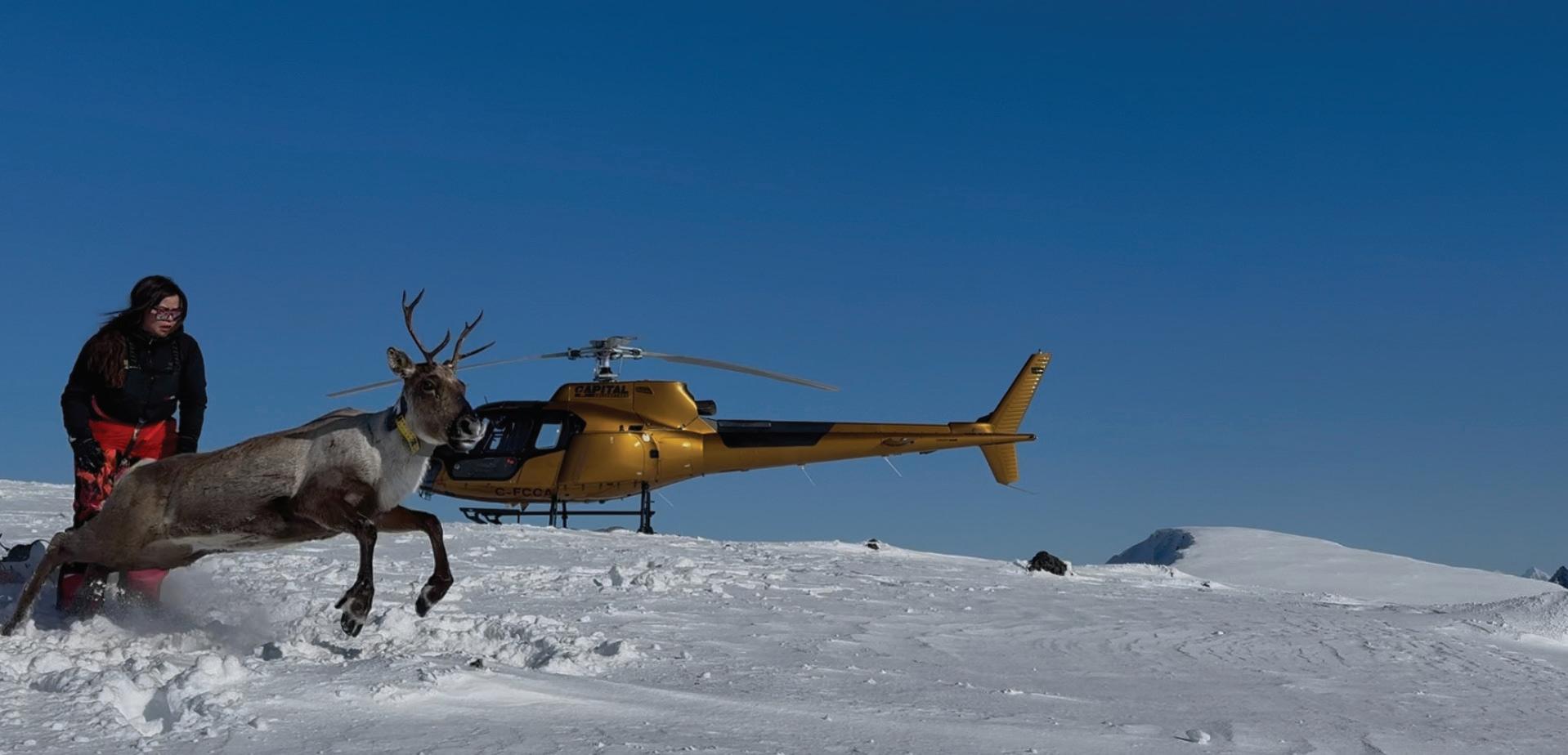
Since 2019, generally 400 to 700 caribou have been observed during the seasonal surveys (calving, rut, and late winter) in the Tseneglode area.
Edziza caribou numbers continue to be low, between 20-40 animals. We counted 38 Edziza caribou in March 2024.
Level Mountain caribou seasonal surveys have been flown since 2020. Generally, we observe 700-1200 caribou. The Guardians completed a population estimate survey during the rut (October 2023) with 1130 caribou, 798 cows, 161 calves, and 167 bulls counted.
Recent surveys have a range of 700-1000 caribou. A population estimate survey for Spatsizi in the rut of 2023 occurred with 412 caribou counted with 215 cows, 83 calves, and 111 bulls.
The recent monitoring on caribou has observed the following seasonal calf and bull ratios:
• 2020-2021 – Bulls 25 – 32/100 cows, 16-21 calves/100 cows (1999 caribou)
• 2021-2022– Bulls 24 – 34/100 cows, 15-18 calves/100 cows (1308 caribou)
• 2022-2023– Bulls 24 – 30/100 cows, 19-21 calves/100 cows (700 caribou)
• 2023-2024 - Bulls 24 – 26/100 cows, 22-24 calves/100 cows (1935 caribou)
• Reduce collaring and surveys and work on caribou recovery approaches
• Develop and implement a recovery plan for Edziza herd with the communities
• Finalize the caribou monitoring report from the last 4 years of work and share with communities
• Investigate additional approaches to caribou recovery and external funds to support the work
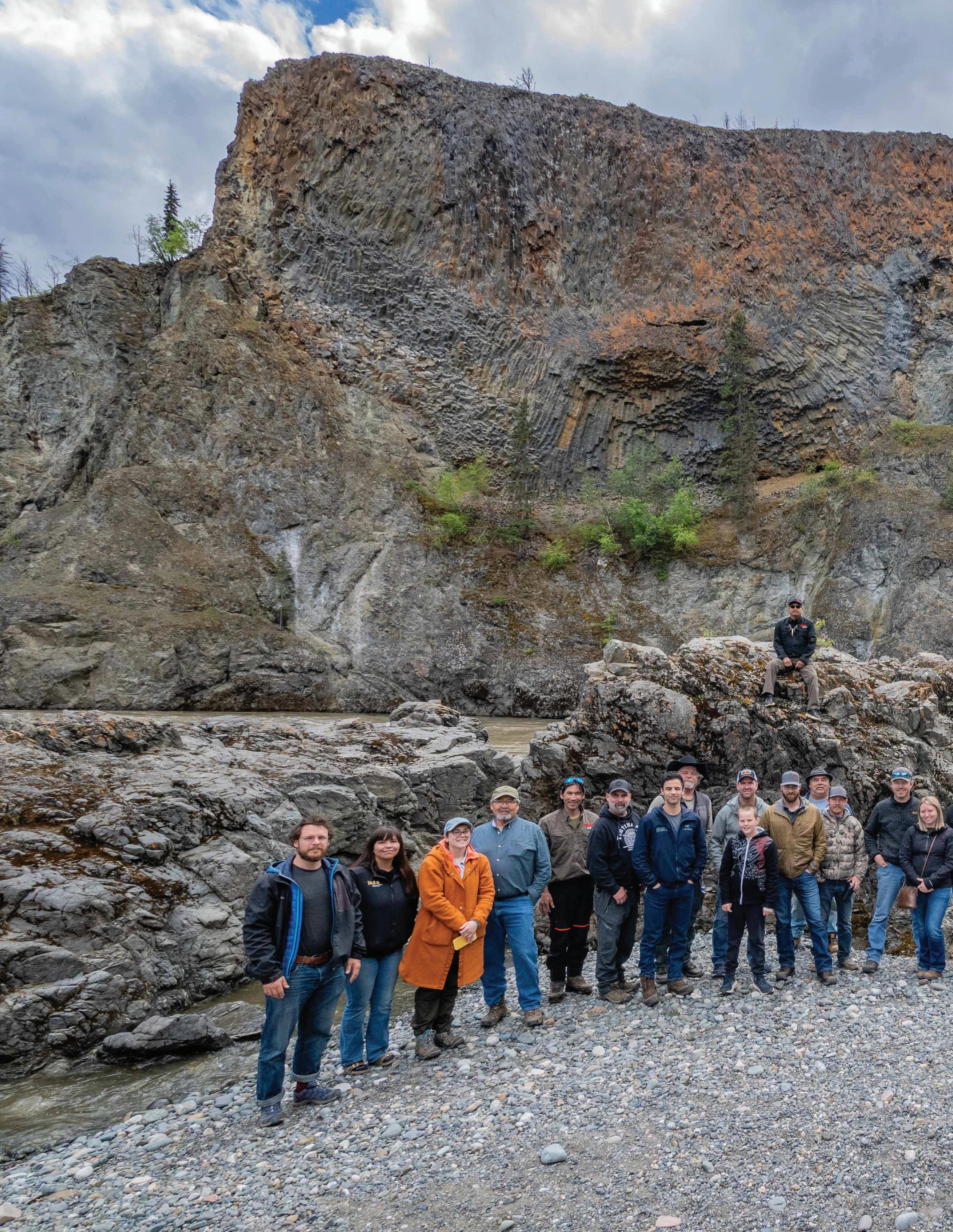
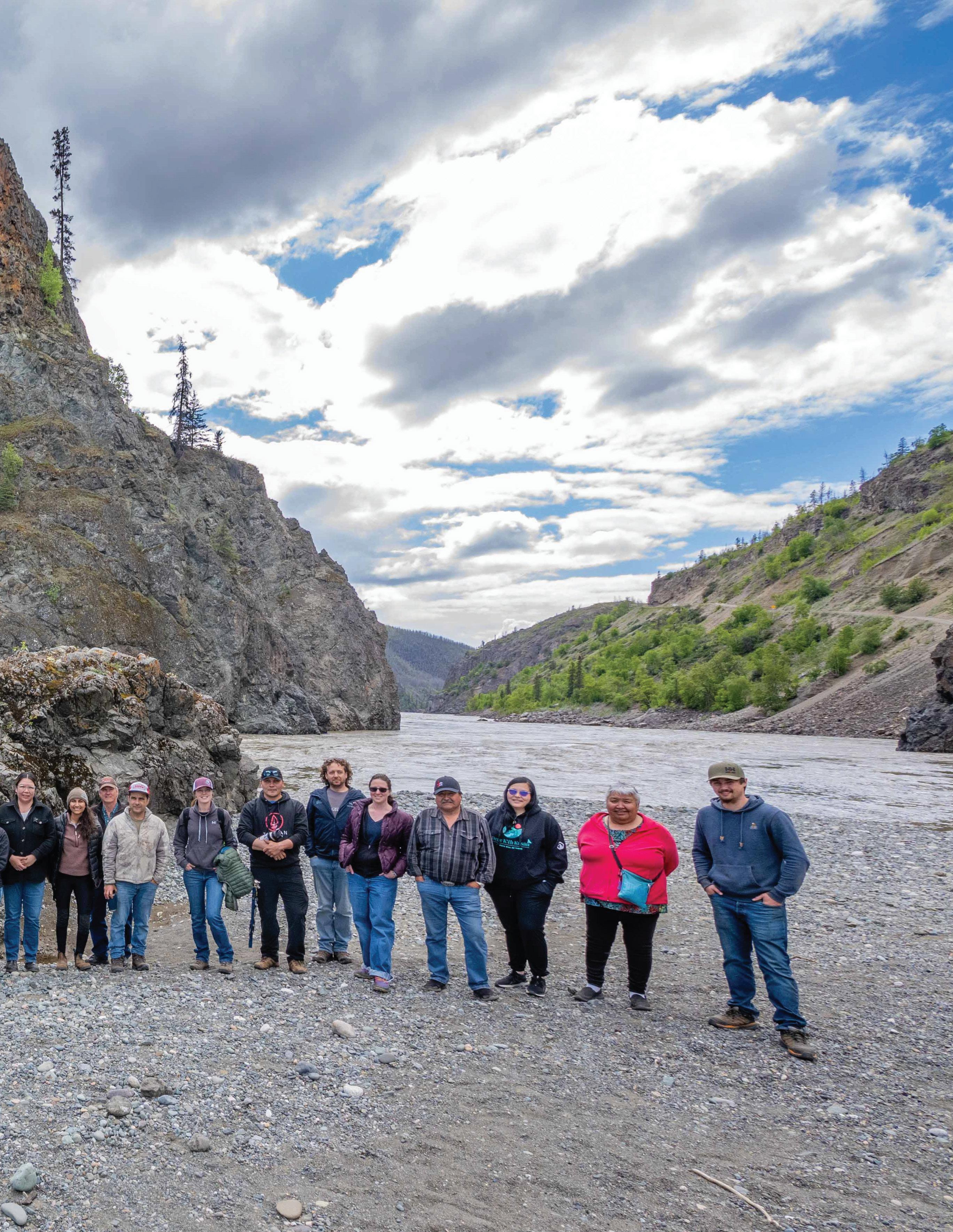
In 2024, the Tahltan Central Government co-hosted a summit for Northern Mountain Caribou in Dease Lake. We invited representatives from seven different First Nations, caribou scientists from the Wildlife Science Centre, and thirteen outfitters from across mountain caribou range in Northern BC, Yukon, and NWT. The future of healthy hodzih (caribou) herds depends on collaboration, collecting the best-available information, and centering local communities and our knowledge.
tahltan.org/the-northern-mountain-caribou-summit
Scan the QR code to visit webpage:
Tahltan Knowledge, scientific literature and local knowledge provide information that support high-density wolf populations in Tahltan Territory.
Tahltan-led wolf collaring and monitoring, based on capture information, local knowledge and Tahltan Knowledge through the predator management plan and associated wolf trapping program, have estimated pack size to range from 8 – 18 wolves. Each collared wolf for the study area currently indicates wolf densities of 13 – 15 wolves /1000 km2, with a range of 9-19 wolves/1000 km2 densities(N=29).

Current wolf management activities include :
• Regional management exemption being pursued to support wolf and predator removals with aircraft
• Continued Guardian trapping programs
• Collared wolf monitoring with a 4 year summary being finalized of wolf movements and estimated predation frequencies
• Diet isotope analysis being completed
• 11 wolf packs currently with collars
• Continued monitoring of collared wolves
• Seek permits for wolf pack removals from aircraft
• Continue with Guardian trapping program, and support Tahltan trapping for wolves
Similar to wolves, Tahltan Knowledge, scientific literature and local knowledge provide information that support high density grizzly populations in Tahltan Territory. Since the licensed hunting was stopped in 2018, there has not been substantial harvesting of bears outside of Tahltan harvesting. Like wolves, there is limited information on grizzly predation rates on calves and ungulates, and grizzly density estimates are out of date. The next stage of monitoring will include doing the work to gather this information and then to use it to increase grizzly bear harvesting, and better management with BC.
TCG and Safari Club International are commencing a multi-year study on grizzly bear with remote camera collars to document grizzly bear densities; predation on caribou, moose, sheep, and goats, especially on caribou and moose calves, sheep lambs, and goat kids; and seasonal movements in the Klappan/Spatsizi Plateau area.
Bears will be captured in the summer and monitored over the next 2 years, with the possibility of expanding the monitoring.
The information will be used to assist in documenting grizzly bear densities, predation rates and den sites with Tahltan Knowledge to support additional predator management efforts in the Nation.
• Implement the grizzly bear predation and density study with Guardians and guide outfitters starting this summer and for the next several years
• Apply DNA hair sampling in either the Spatsizi or Tseneglode areas, and deployment of GPS collars with video, to capture predation rates during calving and snow-free periods.
• Use the information from the study to support removal of bears from aircraft and other removal approaches.

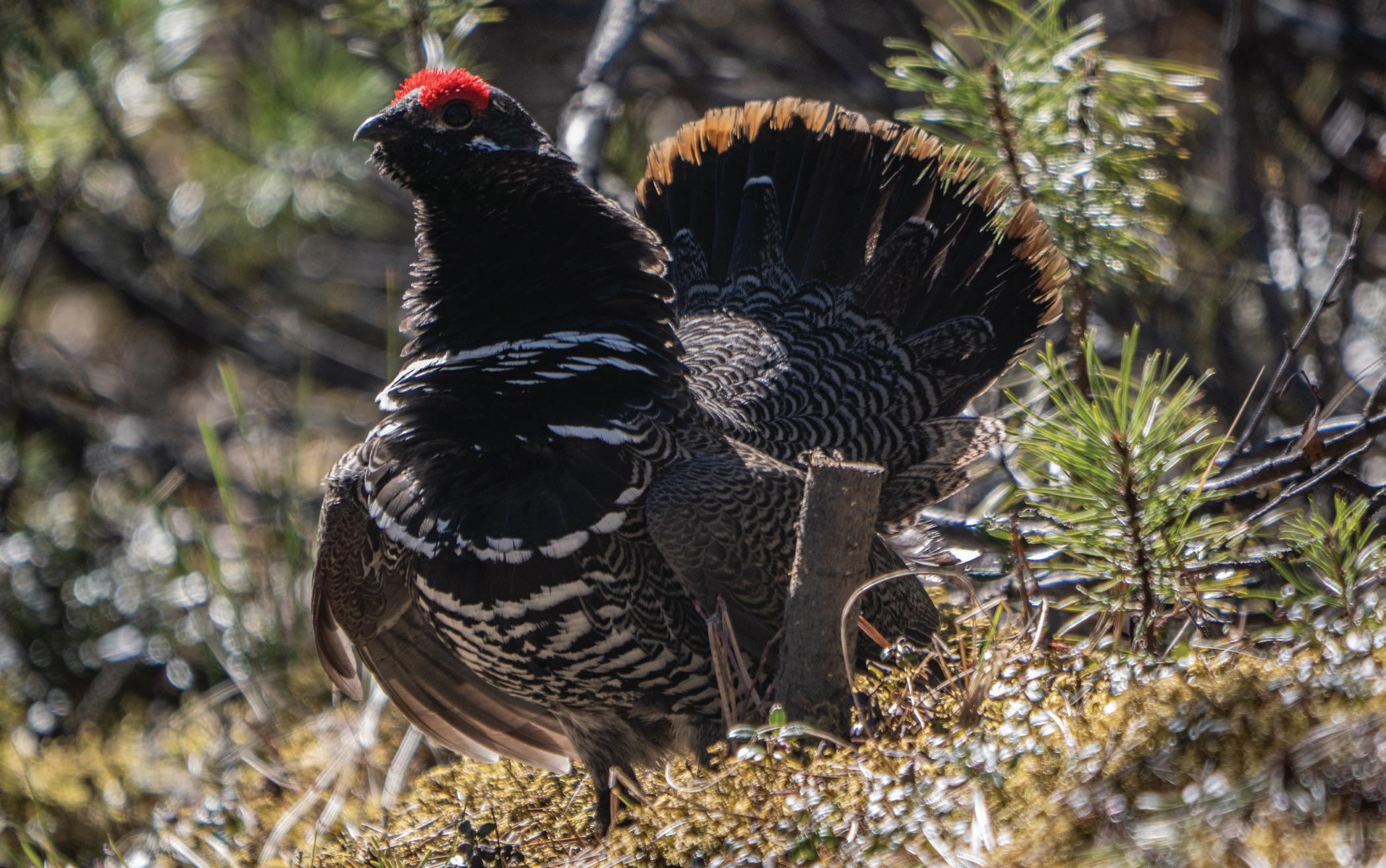
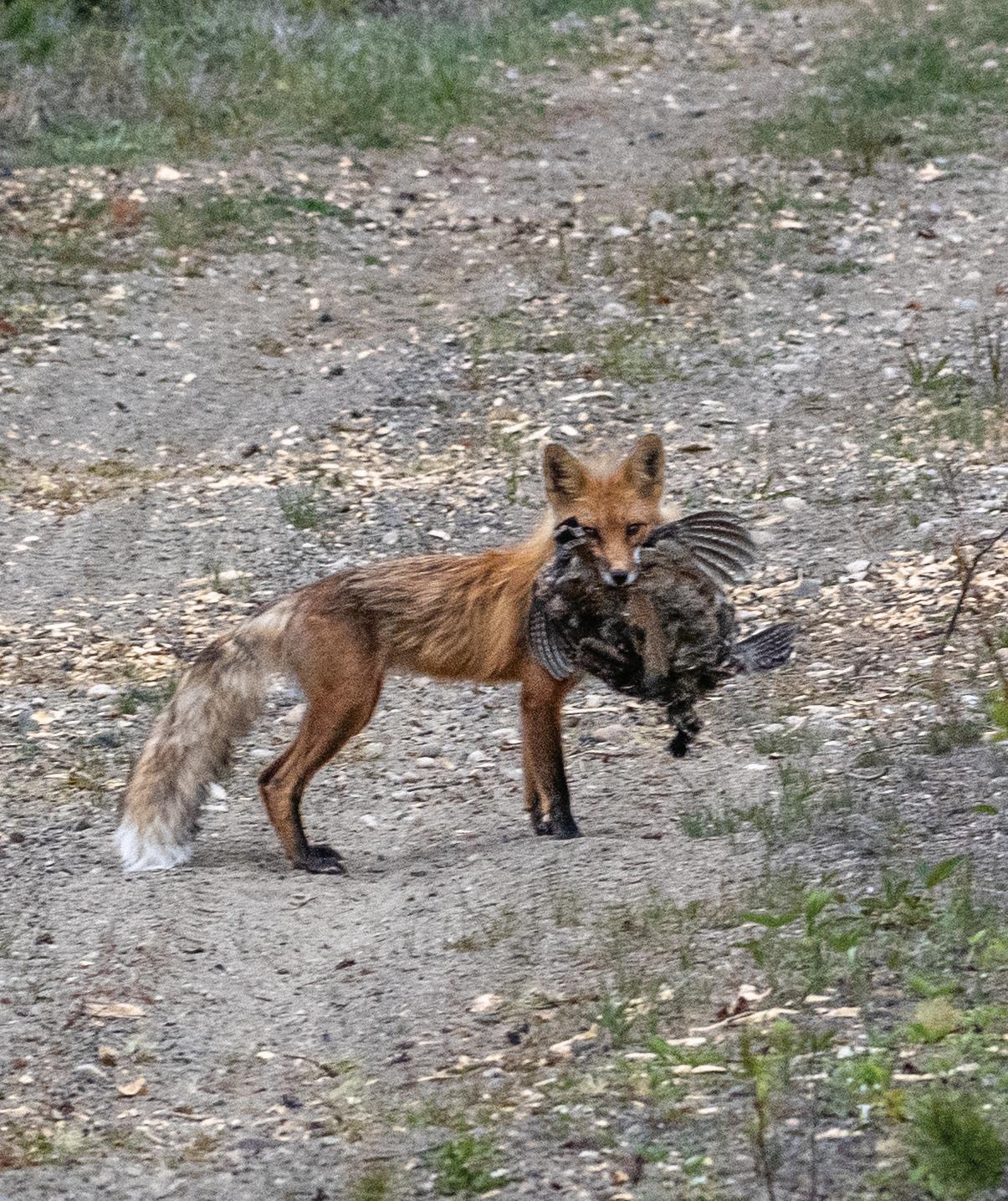
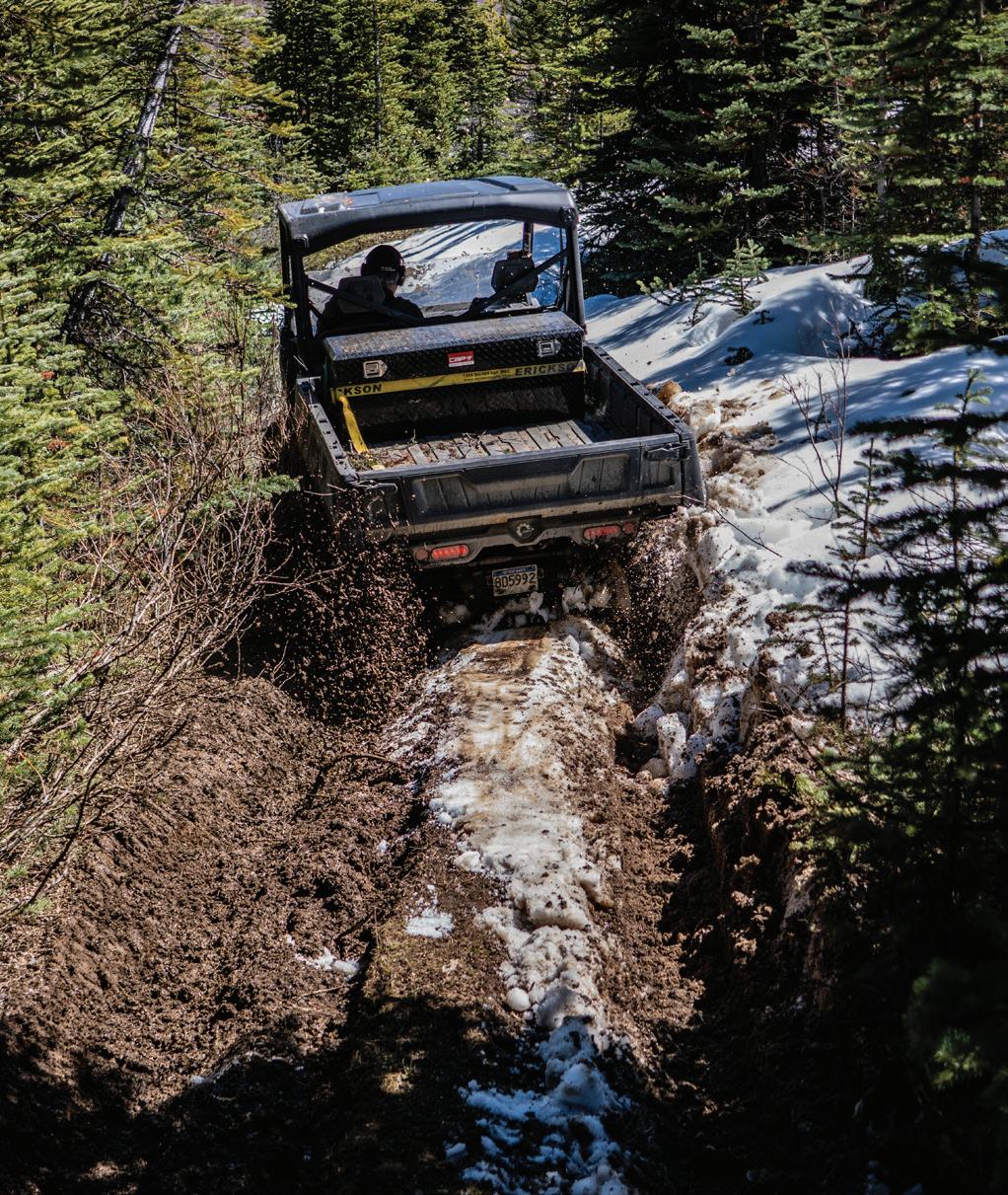
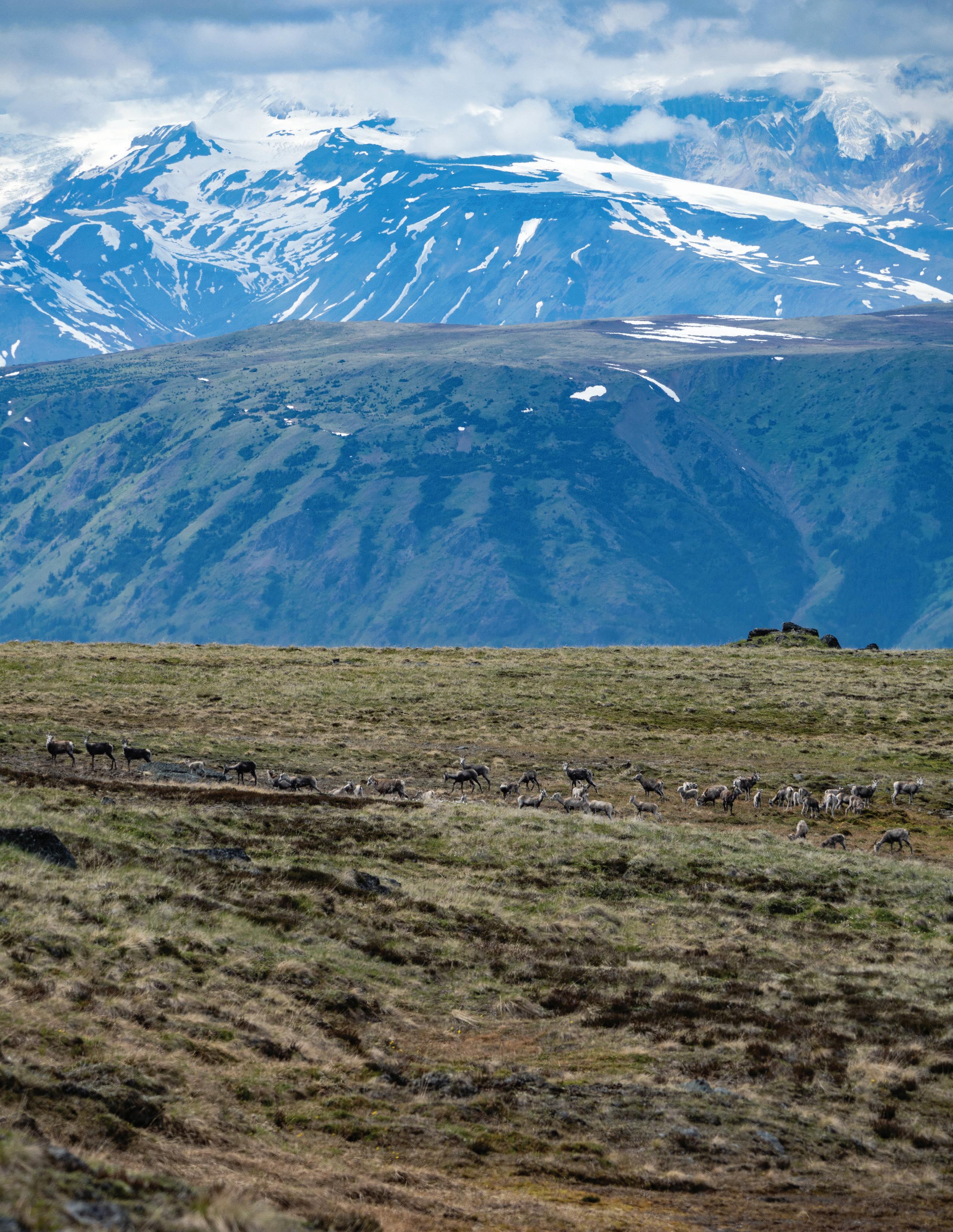
It’s great to reconnect with you through this year’s newsletter. Over the past year, much has evolved in how we’re approaching economic development as a Nation. While many of you will remember me from my time leading the TCG Tourism Department, I’ve since transitioned to a new role with Tahltan Hospitality — a Nation-owned initiative focused on growing strong, local economies in each of our three communities.
We’ve built a new framework that allows the Nation to invest in and operate businesses that serve our people and support long-term community development.

Northway: A Foundation for Growth
Our first step was acquiring and improving the Northway Motor Inn in Tatl’ah (Dease Lake). The Northway has been a strong first investment, not only financially, but as a platform to build future opportunities for Tahltans. Since taking ownership, we’ve improved operations, created new jobs, and laid the groundwork for expanding services that support both local residents and visitors.
Behind the scenes, we’ve set up a simple but effective structure designed for growth. This structure ensures all profits flow back to support community-focused work. It gives us a practical way to take action on the Nation’s goals for economic sustainability, employment, and local infrastructure—starting in Tatl’ah and building outward
Renaming Northway: Honouring Tahltan Identity
This Spring, we launched a renaming initiative for the hotel to reflect a stronger sense of Tahltan ownership, pride, and cultural identity. We began with a Nation-wide call for suggestions and hosted a community dinner in Tatl’ah where members shortlisted their favourites. With guidance from Elders and the Tahltan Language Group, we narrowed the list to the top five name candidates, with the chosen name to be announced soon!
REDIP Grant Awarded!
We’re proud to share that we’ve received a $722,500 grant through the Province’s Rural Economic Diversification and Infrastructure Program (REDIP) to help transform the hotel into something much more than a place to sleep.
The renovation — titled Transforming Northway: Cultural and Culinary Renovations — will help us create a space that feels distinctly Tahltan for both guests and community members. Planned upgrades include a redesigned restaurant, welcoming lobby with cultural design elements, and improved guest spaces. Most importantly, this project will create jobs and opportunities in hospitality, food service, and cultural programming.
This upgrade fills a longstanding gap in Tatl’ah and strengthens the hotel’s role as a place for community events, tourism, and regional business. It’s a practical example of how Nation-led development can support both economic activity and cultural pride.
A big part of our focus is working with all three Tahltan communities to build stronger local economies. This means supporting Tahltan entrepreneurs and helping launch or expand businesses that provide services we all need, like food, trades, and recreation opportunities. We also recognize many businesses across our Territory face the same challenges: staffing, training, and supplies. Instead of tackling these separately, we’ll be looking for shared solutions. When we work together, we can unlock better pricing, coordinated logistics, and stronger training programs—helping everyone succeed.
Over the past year, we’ve made major updates to hotel operations, setting the stage for running a reliable and professional business, focused on community infrastructure, local services, and growing businesses that strengthen our communities.
With the hotel stabilizing and our first grant-funded project underway, we’re excited to turn our focus toward working with other businesses in Tatl’ah, Łuwechōn (Iskut), and Tlēgōhīn (Telegraph Creek). Our goal is the same: to help make our communities stronger, more resilient, and more self-sufficient.
Thank you for your continued engagement and support. I look forward to connecting with you at the upcoming AGA. In the meantime, stay tuned for the unveiling of our new hotel name!
Warm regards,

Alex Buri Director of Economic
Diversification
and Operations,
Tahltan Hospitality
Learn more and get in touch at: tahltan.org/tahltan-signage-project
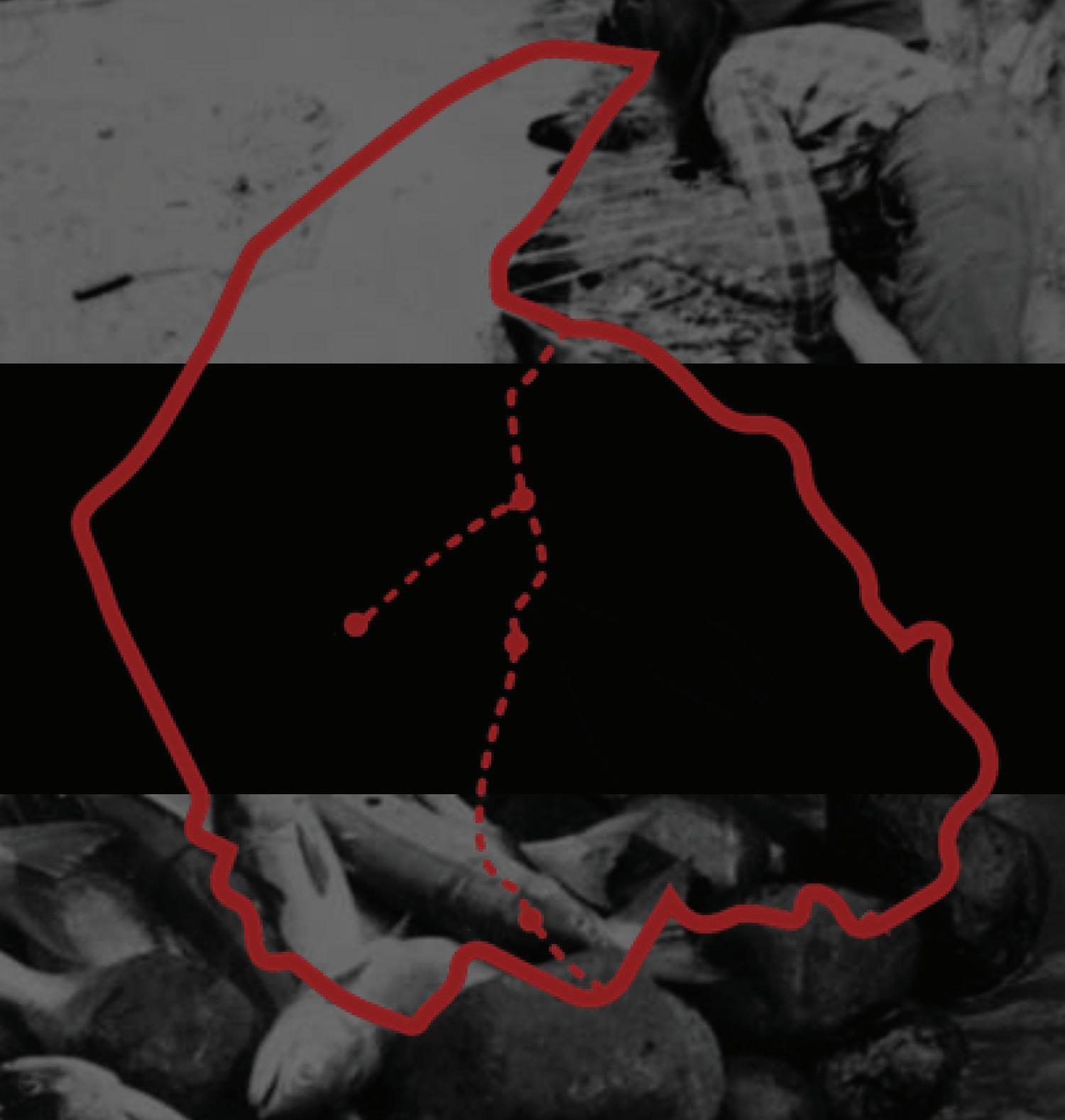
The Tāłtān Signage Project aims to enhance the visibility of Tahltan language, stories, and significant sites throughout the territory. In Phase 1, we met with the communities, students at the schools, the Bands and the Elders Council. We held a virtual engagement too. As we collected community input, ideas and wishes for signage, we launched a working group with language representatives, revived Placenames work led by Rosemary Loring, and put out a call for Tahltan Artists. Once we had a good sense of the communities’ hopes for signage, we brought on the Tahltan artists and design team. They mocked up drafts of the sign ideas, and we presented these to the Bands, Elders Council, and leadership for approval. And now we share them with you, membership, through the Annual Report and the Annual General Assembly.
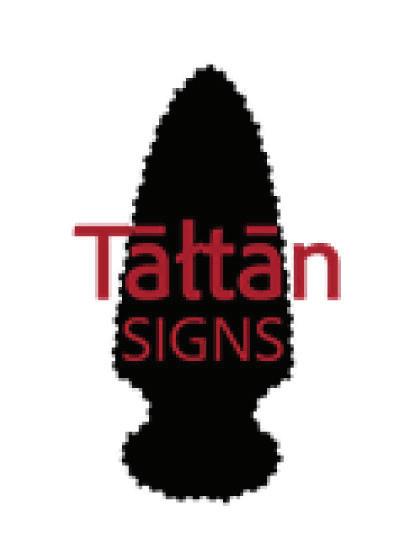
The proposed signs include:
• Pavilions for each community, featuring story panels, Tahltan art, and maps with Tāłtān placenames
• Story Signs at rest stops along H37 and H51
• Placenames signs, along the highway + backroads
• Respect Tahltan land signs for the backcountry
The project is supported by a $1M grant from the Ministry of Tourism, Arts, and Culture’s (MTAC) Destination Development Fund.
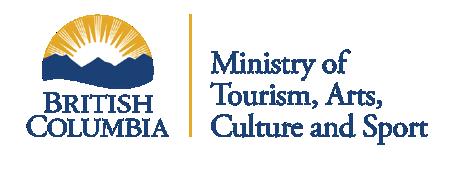
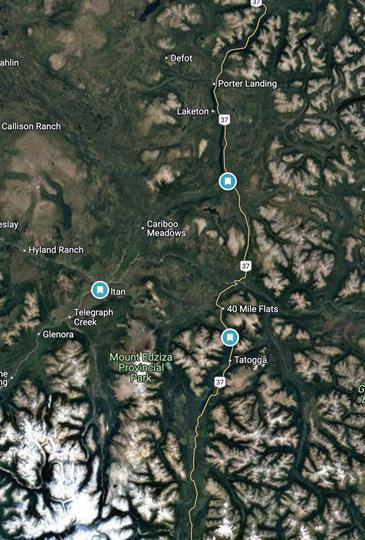









Each pavilion Includes:
1. A specialty designed and unique structure;
2. A showpiece territorial map displaying Tāłtān place names for points of significance;
3. Display surfaces to hold Tāłtān content panels:
a. content: stories, history, culture, informations and statics and a message to respect our land and animals
b. Art pieces by Tāłtān Artists
c. Compelling images of the land, our people and artifacts
Meant to serve as a rest stop, each pavilion provides shelter and seating, alongside clear wayfinding (“You are Here!”) and site specific cultural information.
The pavilions are easy to find from the highway, serving as iconic waypoints and a tribute to the Tāłtān People.


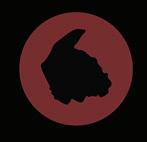

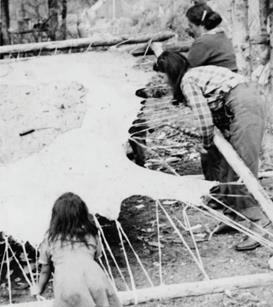
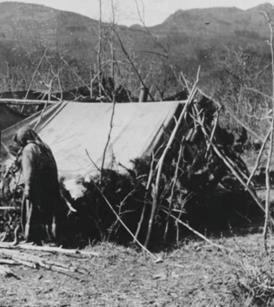
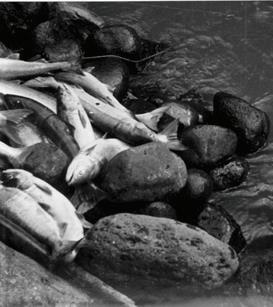


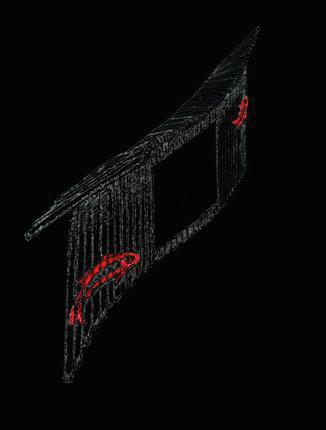
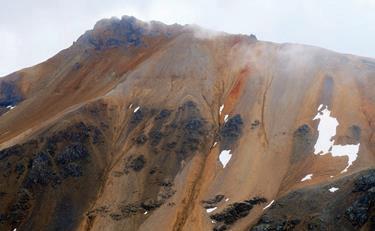


Precious Metals: Copper, Gold and Silver are recognizable symbols of wealth all extracted by the mining industry in large quantities from our territory. We plan to use copper, gold and silver (actual or colours) in our sign elements to highlight their importance and signify the return of wealth.



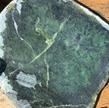
Yakisugi Poles: Yakisugi is a traditional Japanese wood preservation technique, much like the natural preservation of forest-fire burnt wood, where charing creates a protective layer enhancing the wood's durability. Our plan is to harvest 2018 forest-fire poles and use them in our structures. Black is an important colour to Tahltans as we would have used charcoal to make black paint; and black symbolizes obsidian, the most abundant colour of our Ancestors’ most precious resource.
Corten Steel: we are choosing to use rusted steel for the structural elements for its color and structural integrity. Red from iron oxide and ocher was/is an essential colour in Tahltan Art and is the same mineral that makes our blood and mountains red. It is important for us to use metal in our signage because of the amount of metal ore being extracted from Tahltan territory; using metal displays this wealth, much like beads and moosehide would have symbolized our wealth in the past.
Jade: Jade was used to make adze blades by Tahltan people and continues to be mined commercially from Tahltan Territory. Our ambition is to use cut Jade boulders for the Pavilion seating.
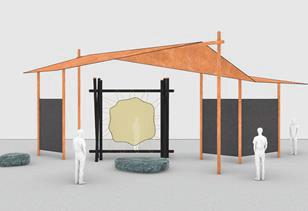





There will be custom maps designed for the Tahltan Signs which will feature Tāłtān Place Names. We are looking for direction on the following:
Priority Tiers for Phase 1 Tahltan Signs:
01 10 most important Tāłtān Place Names
02 40 second most important Tāłtān Place Names
03 50 third important Tāłtān Place Names
Total Tāłtān Place Names = 100
04 Remaining Tāłtān Place Names
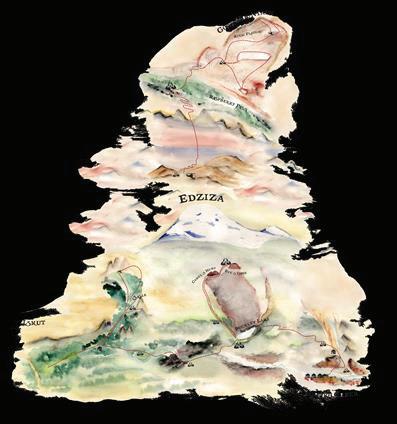

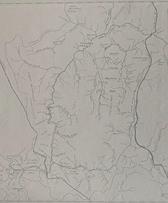


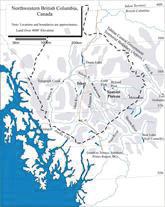
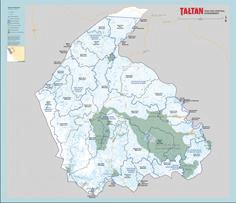
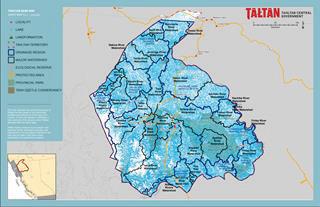
The pavilion walls will be perforated metal using Tāłtān beading patterns to create the design.
Then the sign content panels will be mounted to the perforated metal walls.



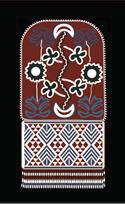
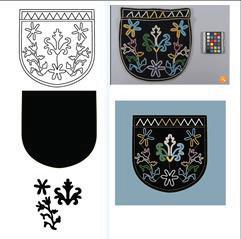
Scan the QR code below to view the full presentation:
Executive
1 President
2 Vice President
3 Secretary Treasurer
Board of Directors
1 Carlick Family Rep.
2 Cawtoonma Family Rep.
3 Eth’eni Family Rep.
4 Etzenlee Family Rep.
5 Good-za-ma Family Rep.
6 Quock (Dekama) Family Rep.
7 Shoe-Kawk/Howd-A-Ghtte (Shukak) Family Rep.
8 Simgaldtada (Ts'imgalt‘ēde) Family Rep.
9 Stikine Claw/Thicke Family Rep.
10 Thud ga Family Rep.
Administration/Staff
1 Administration – Chief Administrative Officer
2 Administration – Events Coordinator
3 Administration – Receptionist
Beverly Slater president@tahltan.org
Heather Hawkins vicepresident@tahltan.org
Sandra Marion secretarytreasurer@tahltan.org
William Brown carlick@tahltan.org
Curtis Rattray cawtoonma@tahltan.org
Lily Belhumeur etheni@tahltan.org
David Rattray etzenlee@tahltan.org
Annita McPhee goodzama@tahltan.org
Arlene Corcoran quock@tahltan.org
Mindy Henyu shoekawk@tahltan.org
Kimberly Marion simgaldtada@tahltan.org
Colleen Parker stikineclaw_thicke@tahltan.org
Dayle Creyke thudga@tahltan.org
Teneal Nole cao@tahltan.org
Shawna Benoit eventscoordinator@tahltan.org
Shirley Nehass receptionist@tahltan.org
4 Administration – Human Resources Business Partner Theresa Montpellier hr-staff@tahltan.org
5 Administration – Administrative Assistant Sherri-Lynn Lake administrativeassistant@tahltan.org
6 Communications & Media – Director
7 Communications – Technician
8 Culture & Heritage – Acting Director
9 Culture & Heritage – Coordinator
10 Culture & Heritage – Archivist
11 Culture & Heritage – Archive Assistant
12 Dease Lake Community – Director
Adam Amir communicationsdirector@tahltan.org
Bobby Whang web@tahltan.org
Mariko Waite culturedirector@tahltan.org
Mariko Waite culturecoordinator@tahltan.org
Ursula Abramczyk archivist@tahltan.org
Kailene Louie archive.assist1@tahltan.org
Christina Callbreath deaselakedirector@tahltan.org NAME EMAIL

